

The PERFECT 1, 2 or 3 Week Australia Itinerary [2024]
- Last Updated: January 30, 2024
Whether you have 1, 2, or 3 weeks in Australia, here are some suggestions for an Australia itinerary that will help you make the most of this huge, diverse, and stunning country!
Planning a trip to Australia can be quite difficult, simply because the country is so huge.
Lots of its best attractions, cities, and natural landmarks are very spread out, so it’s impossible to see everything in a short amount of time.
Australia is also an expensive country to visit, so most backpackers and average travellers won’t be able to visit every single point of interest without spending a lot.
Despite these challenges, planning an epic trip to Australia is definitely possible.
You just have to be smart about your Australia itinerary, sticking to one or two major areas and picking travel routes that are logical.
For example, you won’t be able to fit Sydney, the Great Barrier Reef, Melbourne, Uluru, Tasmania, and beaches and national parks of Western Australia and the Northern Territory into a 1 week Australia itinerary.
To see all those incredible places, you’d need at least one month, and even then you’d be rushing to get everywhere.
What you can do, is pick the areas that appeal to you the most and plan your trip accordingly.
READ MORE: Check out our comprehensive guide with everything you need to know about travelling in Australia !
So you’d be better off picking either the east coast or the west coast and hanging around there if you only have 1 or 2 weeks in Australia.
In this article, I’ll provide a few sample Australia travel itineraries.
Each Australia itinerary will include a few of the country’s best places to visit, while maintaining reasonable travel times.
Whether it’s your first trip to Australia or you’ve been here for a while, there is always something incredible to see!
Table of Contents
How to Get Around Australia
Days 1-2: sydney, days 3-5: brisbane , days 6-7: airlie beach and the whitsundays, days 1-3: sydney, days 3-6: melbourne , day 7-8: the great ocean road, day 9-10: adelaide, day 11: kangaroo island, day 12-14: perth, days 3-4: byron bay, days 5-6: the gold coast, days 7-8: cairns, days 9-10: port douglas and the great barrier reef, days 11-13: cape tribulation and the daintree rainforest, day 14: darwin, days 15-17: kakadu national park, days 18-20: uluru and the red centre, the ultimate australia itinerary travel guide.
Having travelled all around the country, we’re excited to share these epic 1, 2 and 3 week Australian itineraries that’ll cover the best places around.
But first, a tip…
It’s also important to consider how you’ll get around Australia during your visit.
As I mentioned, the country is huge and public transport like buses or trains is expensive.
If you’re staying in one area, it’s worth renting a car for a few days so you can explore and do day trips, but driving from one city to the next may take 12+ hours of driving.
The best way to get around is to rent a car and explore on your own! We recommend Rental Cars , which has the largest range of vehicles for the best value on the market.
Catching cheap domestic flights is the best way to jump from one state to the next, and you can take public transport or drive within smaller areas.
Though every traveller will have their own unique preferences and modify these itineraries as necessary, here are some sample Australia itineraries that will hopefully help you plan your dream trip!
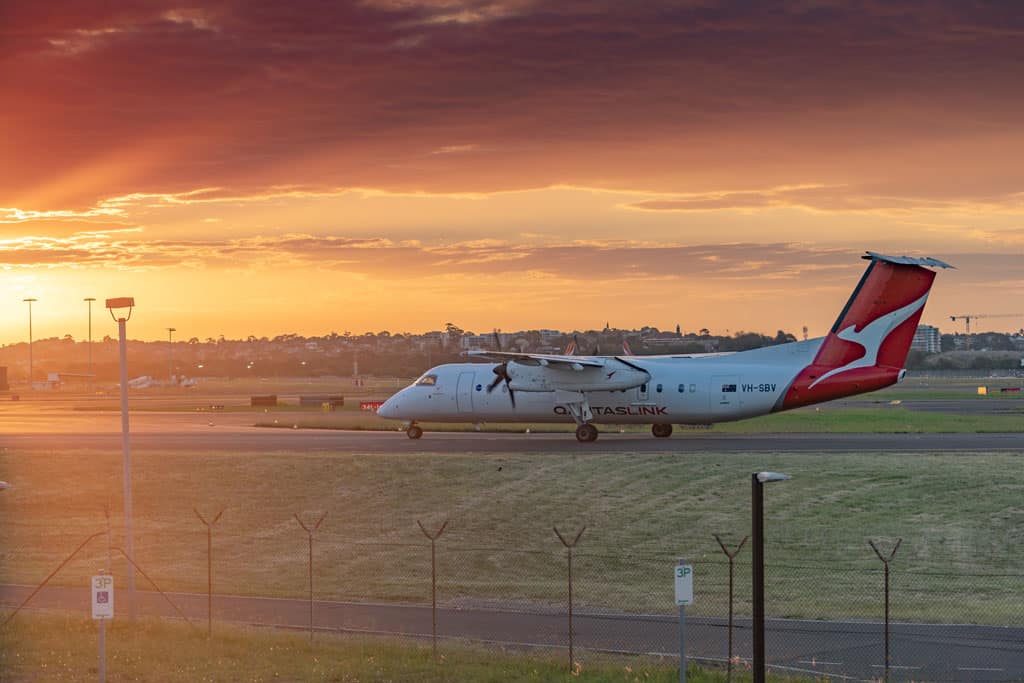
7 Day Australia Itinerary
One week in Australia goes by quickly, but some people can’t afford to take much longer off of work or their other responsibilities.
You can still manage to experience some of the Aussie culture and natural beauty in one week.
In this 7 day Australia itinerary, you’ll be sticking to the middle east coast.
You’ll begin in Sydney, then head up to Queensland to enjoy the Great Barrier Reef.
This plan is perfect for 7 days in Australia because it doesn’t require huge amounts of travel time.
READ NEXT: 25 Amazing Things to Do in Australia
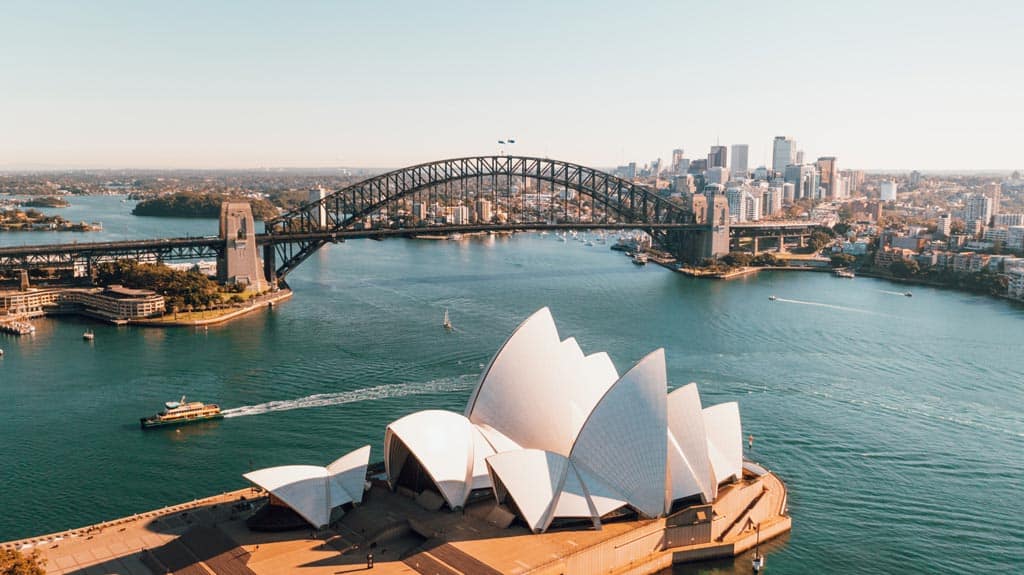
After arriving in Sydney and getting settled, you have two days to enjoy the city.
You can spend one day visiting all the popular tourist attractions, like the Sydney Harbour Bridge, the Sydney Opera House, Sydney Tower Eye, the Royal Botanic Gardens, and maybe some of the museums.
Another day can be spent swimming and sunbathing on one of the city’s main beaches.
The northern beaches around Manly, or the western beaches around Bondi and Bronte are great options for a fun day in Sydney.
Bondi Beach has a very strong health and fitness scene, so they have lots of incredible healthy cafes where all the locals like to fuel up.
Visit Berri Bar Bondi Beach for a refreshing Acai bowl, Porch and Parlour for a healthy breakfast on homemade bread, or Umu for some nourishing organic lunch bowls.
After 2 days in Sydney, you can catch a quick, 1-hour flight up to Brisbane.
Check out this post on how to spend one day in Sydney if that’s all the time you have.
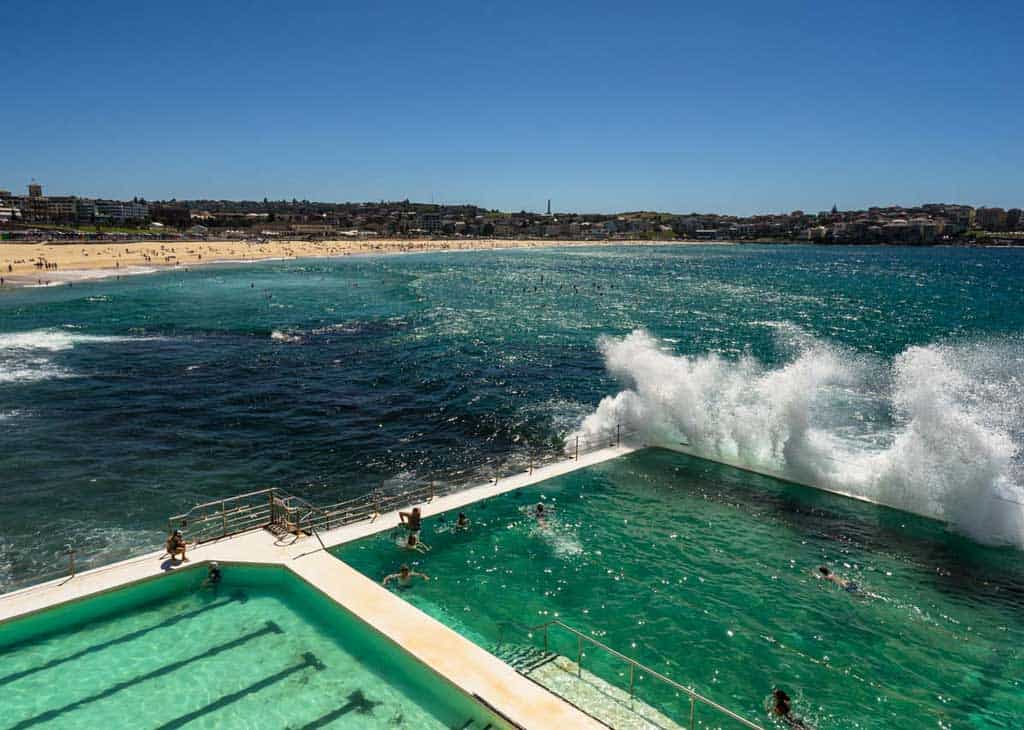
Brisbane is another incredible city to visit in Australia.
After 2 days in Sydney, however, you may be sick of the crowded city streets.
Luckily, Brisbane makes a great gateway for exploring more peaceful areas of Queensland.
There are tons of amazing day trips from Brisbane that allow you to explore nature and see more of Australia, including:
- Burleigh Heads: a charming coastal town with a massive beach and national park
- Hervey Bay: one of the best spots in Australia for whale-watching
- Lamington National Park: full of hiking trails and waterfalls
- Stradbroke Island: a beautiful location that’s great for kayaking, paddleboarding, and trying other water sports
- Fraser Island: the world’s largest sand island
After exploring Brisbane and the surrounding areas, catch another cheap domestic flight from the city up to Airlie Beach.
Read our list of the best things to do in Brisbane for more inspiration!
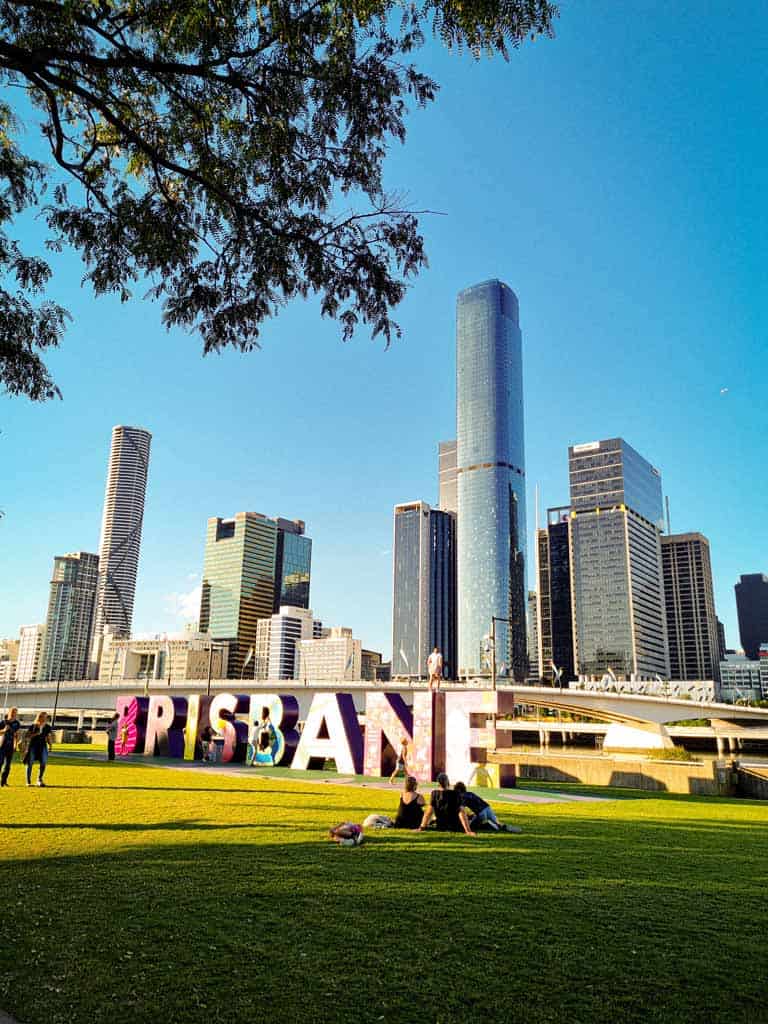
Airlie Beach is known as one of Australia’s most stunning beaches, complete with soft white sand and clear turquoise water.
From here, you can soak in the postcard-worthy views in the Whitsundays Islands and do a day trip to the Great Barrier Reef and the famous Whitehaven Beach.
Book an ocean rafting day tour that include all your snorkelling gear and takes you to Whitehaven Beach and the best locations in the Whitsundays.
BONUS – Booking ahead of time ensures you won’t miss out on the tour, and get the best price too! And just for NOMADasaurus readers, if you use the Klook discount code “NOMADS10” on the website when checking out, you’ll get $10 off your first booking!
Snorkelling, scuba diving, and sailing through the Great Barrier Reef will make an unforgettable ending to your 7 day Australia itinerary.
At the end of your week in Australia, you can fly from Airlie Beach back to Sydney for your departing flight.
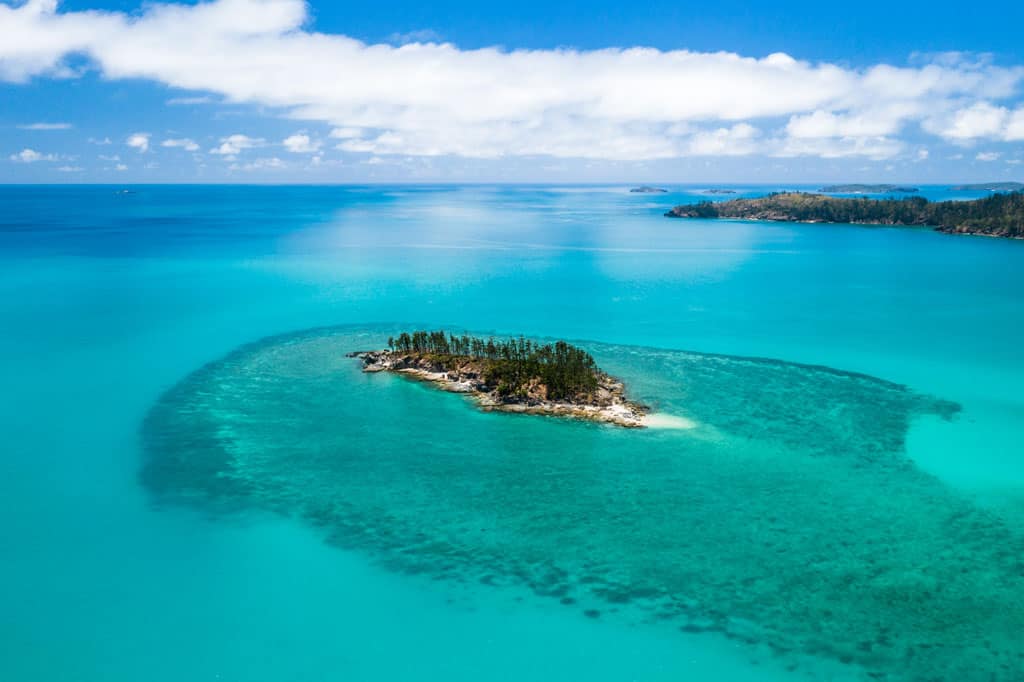
2 Week Australia Itinerary
Two weeks in Australia allows you a bit more time to see different areas of the country.
This two week Australia itinerary will start in Sydney, move down to Victoria to explore Melbourne and the Great Ocean Road , and will then curve up to Adelaide in South Australia and end in Perth in Western Australia.
So with two weeks in Australia, you can still manage to visit 4 states! If you’d prefer to spend more time in one place rather than jumping around so much, you can always modify this.
For example, you could skip Perth and spend a few more days exploring New South Wales, Victoria, or South Australia.
But here is a sample two weeks in Australia itinerary.
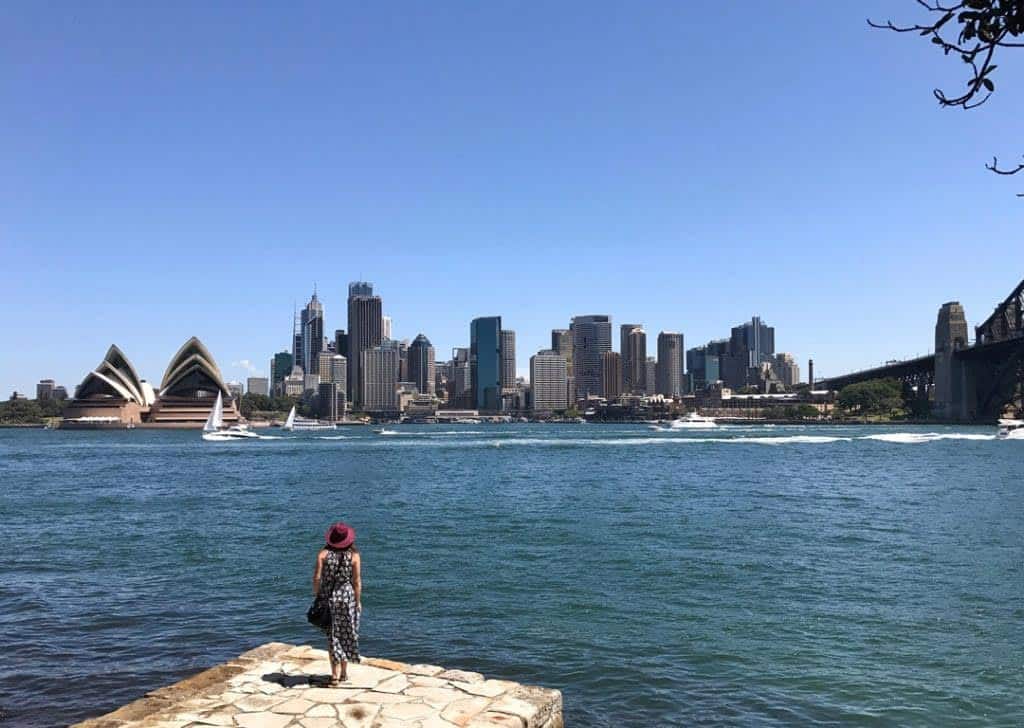
Once again, you’ll fly into Sydney and begin your Australian adventure in the capital city of New South Wales.
In addition to all the touristy stuff like the Sydney Harbour Bridge and the Sydney Opera House and touring a local art gallery, you could spend one of your days in the lush nature surrounding the city.
Two perfect day trips from Sydney are:
The Blue Mountains: Full of waterfalls, scenic lookouts and hiking trails, connected to Sydney by train so you don’t even need a car. Here’s what you should do there .
The Royal National Park: Dramatic coastal scenery with rugged cliffs and secluded beaches. Check out these awesome Royal National Park walks .
After 3 days in Sydney, hop on a plane for a 1-hour flight down to Melbourne.
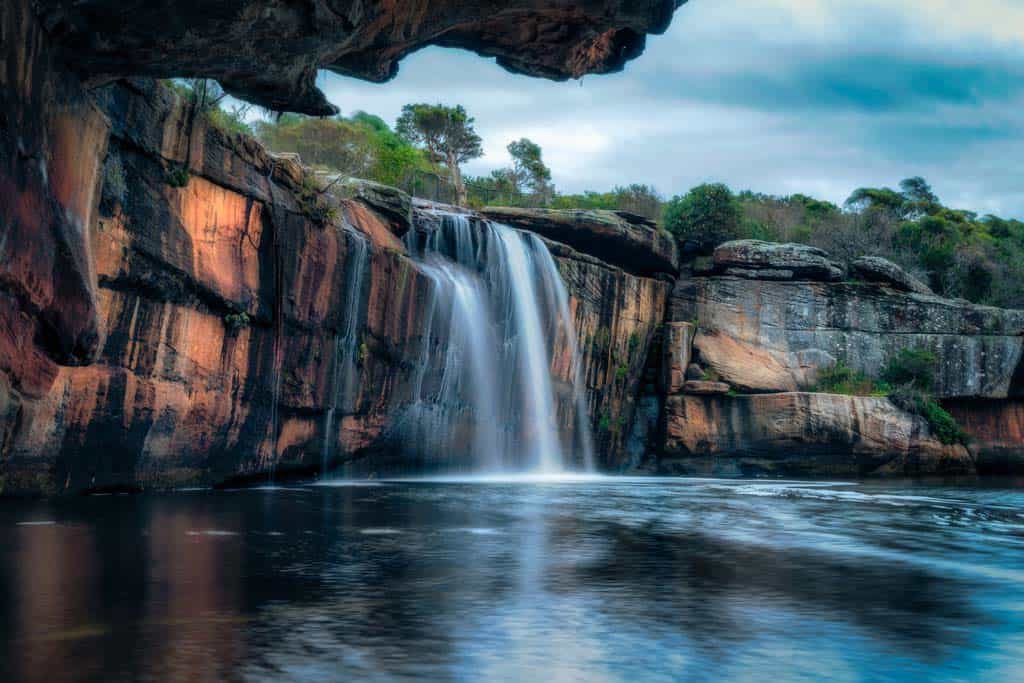
As one of the most vibrant and cosmopolitan cities in Australia, Melbourne is a favourite among travellers and locals alike.
Spend your days in Melbourne visiting street markets, sipping cocktails from rooftop bars, checking out all the cool cafes and restaurants, and experiencing the wild nightlife.
You can also visit St. Kilda Beach in the south of Melbourne, or head to Brighton Beach to photograph the colourful Brighton Bathing Boxes.
Or take a day trip to Phillip Island or tour the Melbourne Cricket Ground .
After you visit Melbourne, continue on to the famous Great Ocean Road.

One of the highlights of Victoria is the natural wonders of the Great Ocean Road.
This coastal road runs for 243 kilometers in total and is full of Australian wildlife, quaint little towns, surfing spots, picturesque viewpoints, campgrounds, and overall gorgeous scenery.
Be sure to see the Twelve Apostles, Split Point Lighthouse, Port Campbell National Park, Apollo Bay, Loch Ard Gorge, and other stunning landscapes along the way.
You can either rent a car from Melbourne and drive the road on your own, or book a day tour .
It only takes one day to see all the best spots along the road, but you’ll need to save some time to make your way back to Melbourne and you don’t want to rush.
You can also stop by the Australian National Surfing Museum in Torquay at the start of the Great Ocean Road.
Fly from Melbourne to Adelaide.
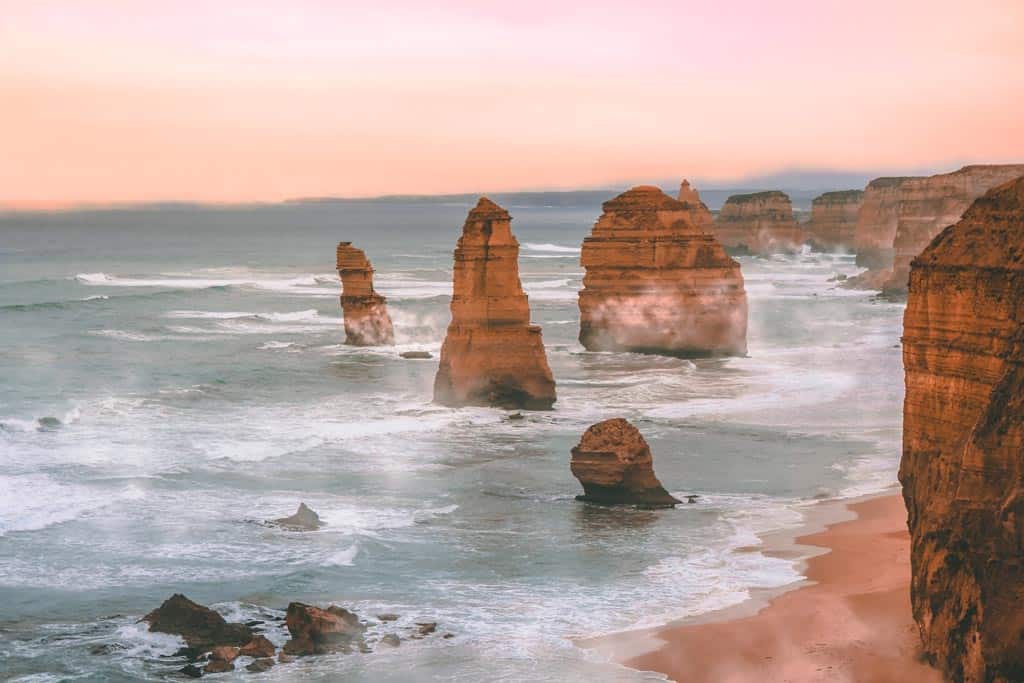
Spend the next days of your two weeks in Australia itinerary soaking in the culture of Adelaide .
Enjoy the delicious food, the museums and galleries, and the laid-back charm of South Australia’s capital.
One of your 2 days in Adelaide should definitely be spent touring a vineyard and wine tasting in the Barossa Valley.
Again, you can either rent a car in the city and drive yourself around the vineyards (make sure you don’t drink too much!), or you can book a day trip.
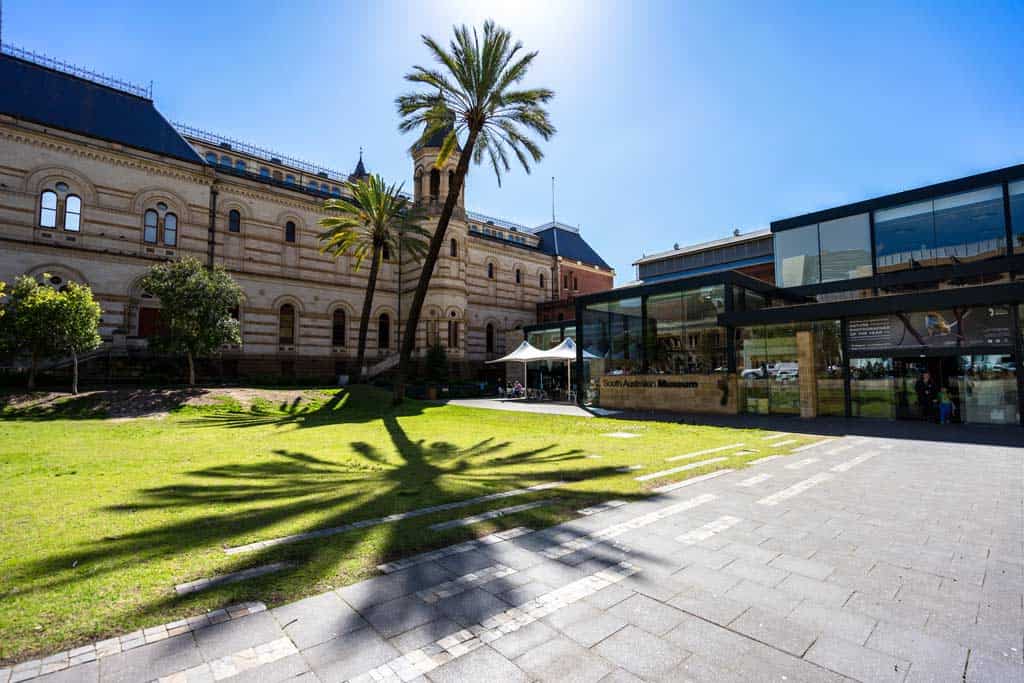
As one of the most unique places in South Australia, Kangaroo Island makes a super fun day trip from Adelaide.
Take photos of the interesting rock formations in Flinders Chase National Park , stroll along the pristine golden beaches, or search for some local animals like wallabies, koalas, and of course, kangaroos.
Head back to Adelaide after Kangaroo Island and hop on another quick flight to Perth to finish up this two week Australia trip.
Read next: 8 Amazing Things to Do in Kangaroo Island, Australia
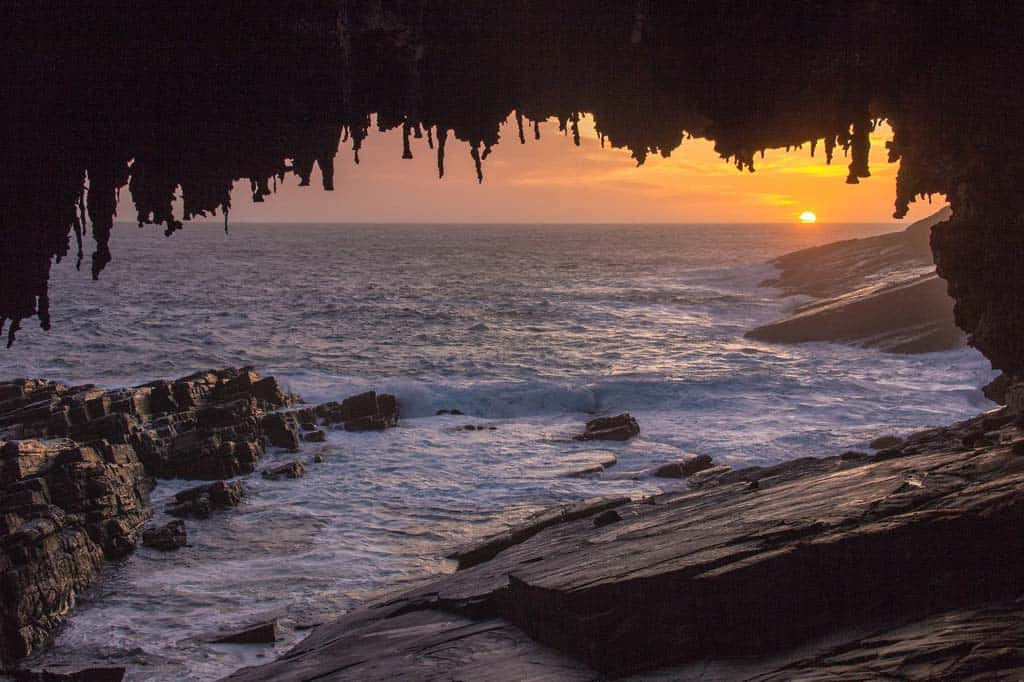
Your last few days of visiting Australia will be well-spent in Perth, the capital city of Western Australia.
Enjoy the beaches, explore the Fremantle Markets, visit wineries and wildlife parks, and more.
You could also treat yourself to one last epic adventure in Australia by taking a day trip to Rottnest Island .
This island is full of fun activities, natural wonders, beautiful views, and cute little quokkas, which are small, native Australian marsupials similar to wallabies.
After a few days in Perth, either catch your departing flight from here or fly back to Sydney if your flight leaves from there.
You could also consider a day trip to Margaret River , one of the top wine and surfing regions in Western Australia.
It’s a 3 hour drive from Perth to Margaret River, so only make the trek if you feel like you have time.
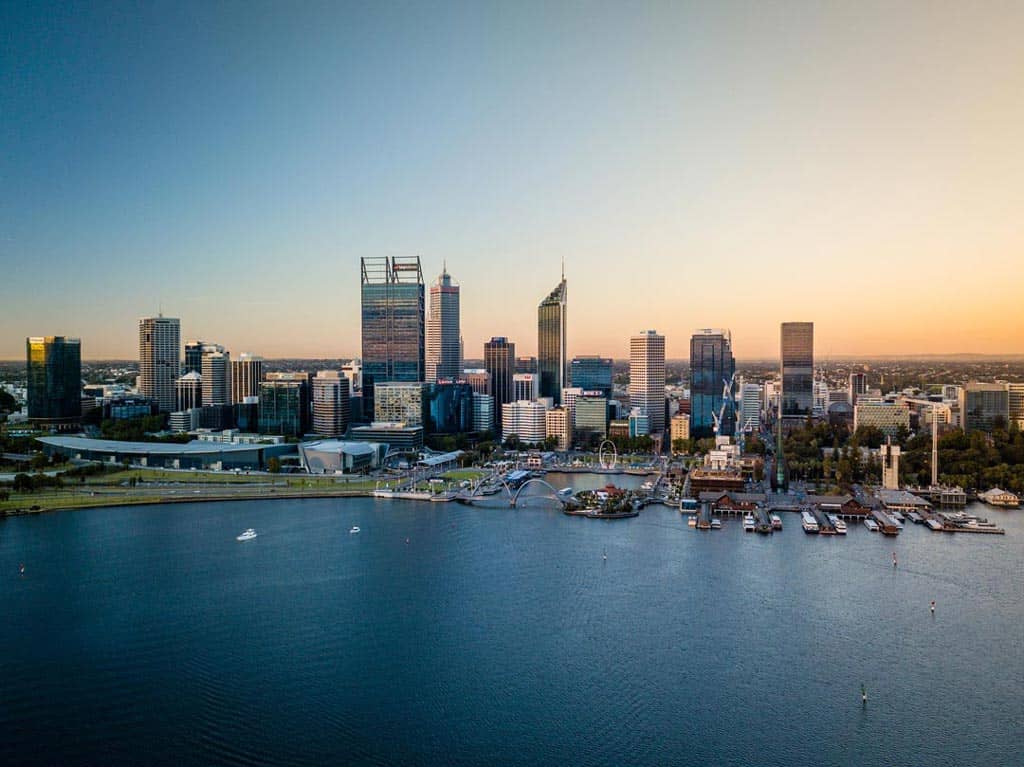
3 Week Australia Itinerary
3 weeks in Australia allows you to visit some big cities and tourist spots, but it also allows you to venture out to more remote and isolated areas.
In this 3 week Australia Itinerary, you’ll visit Sydney and Byron Bay at the start.
Then you’ll head up to The Gold Coast, and tropical north Queensland to the Daintree Rainforest.
Continue your journey up north by travelling to Darwin and Kakadu National Park, and then venture inland to Uluru (Ayer’s Rock).
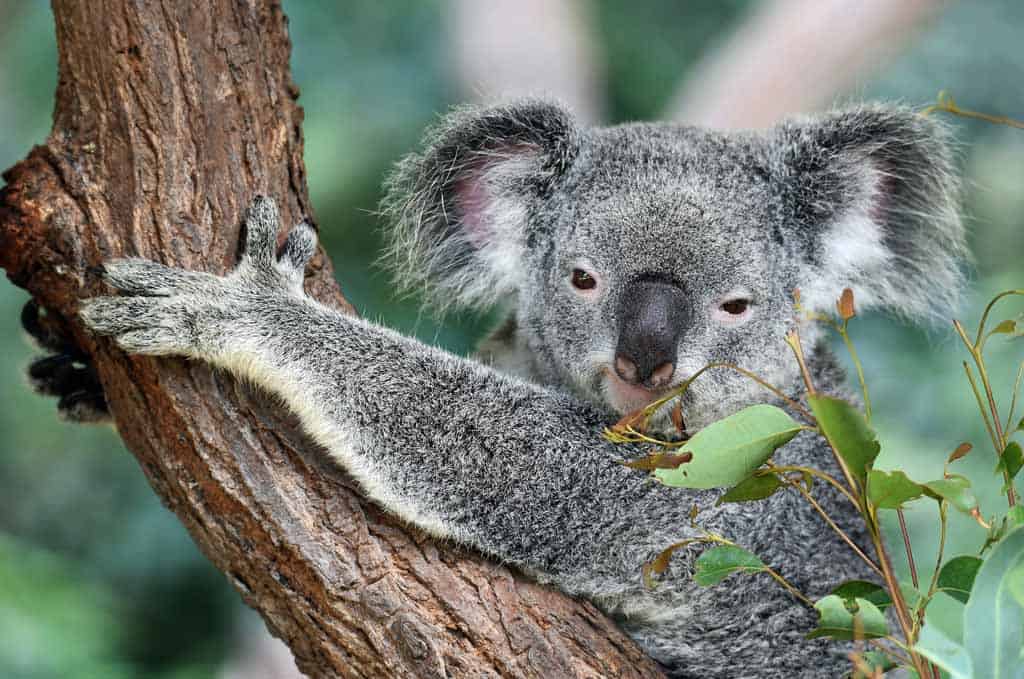
Again, spend your first couple days in Australia checking out Sydney and maybe doing a day trip to the Blue Mountains of the Hunter Valley Wine Region.
Be sure to visit Sydney Harbour, Darling Harbour, and the famous Bondi Beach during your time in Australia’s largest city.
Then fly to Ballina, a small airport 30 minutes away from Byron Bay.
Check out our Sydney to Brisbane road trip guide if you’d prefer to rent a car and drive up the east coast.
Byron Bay is a hub for backpackers, and it is a very fun place to experience when you visit Australia.
From bar crawls and drum circles on the beach, to night markets and street art, to coastal walks and lovely beaches, a couple days in Byron Bay will feel like bliss.
Even if you aren’t on a strict backpacker budget, Byron Bay has so many great hostels that it’s worth immersing yourself in the backpacker scene.
Some of the best hostels in Byron Bay include Wake Up! Byron Bay and Byron Bay Beach hostel.
Both of these have hundreds of great reviews from travellers cost around $30 per night, which is pretty cheap for Australia.
If you want to meet other cool people and take part in all the fun social activities of Byron Bay, you may want to stay in one of these fun hostels instead of a hotel!
You can choose to hang out in Byron Bay for a few more days, or catch a flight from Ballina to the Gold Coast for a taste of the Sunshine Coast surf vibes.
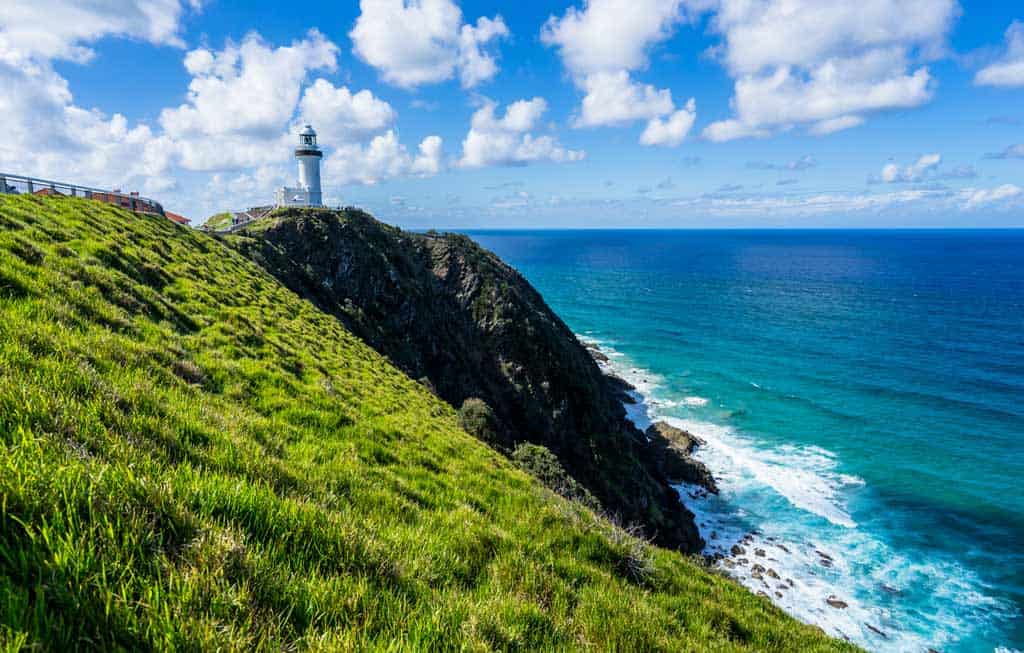
The Gold Coast is one of the best places to learn how surfing when you visit Australia.
You can take a surf lesson from an experienced local and ride the waves, or just relax on the beach, eat some great food, and hit the bars and nightclubs in the evening.
The Gold Coast combines the excitement of the city with the salty air and water sports of a beachside town, so it’s a diverse and fun place to visit.
Fly from the Gold Coast up to Cairns.
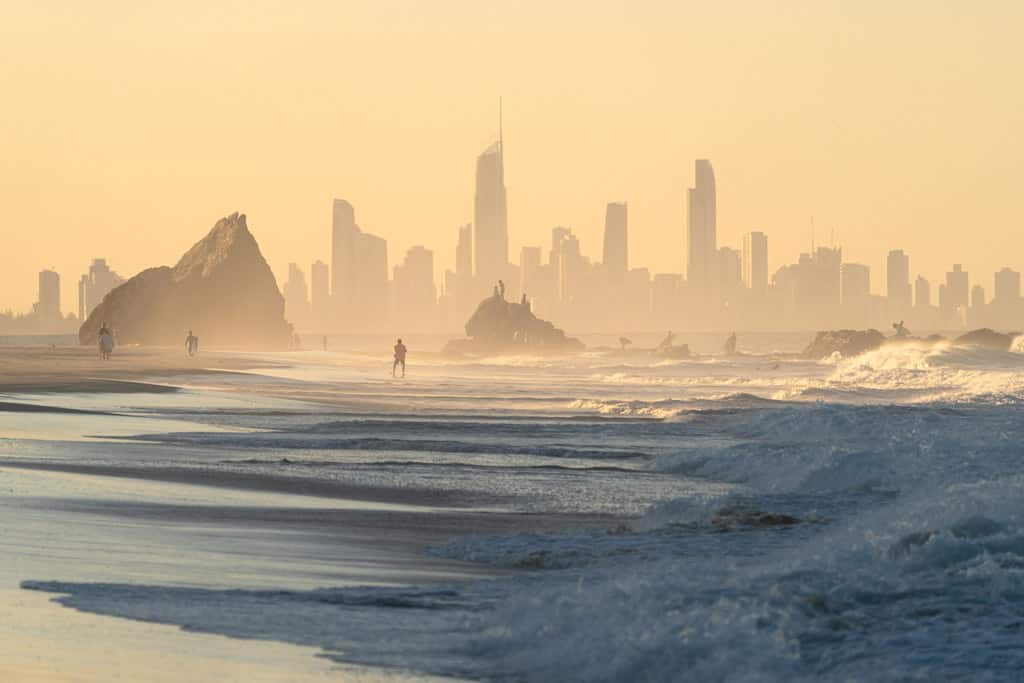
The next few days of your 3 week Australia Itinerary will take you up along the coast of Tropical North Queensland.
This corner of Australia is hot, humid, and jam-packed with rich jungles, Aboriginal culture, waterfalls and the marine life of the Great Barrier Reef.
Keep in mind that during the rainy season, from October to April, you can’t swim in the ocean here because there may be crocodiles and jellyfish.
Cairns is the gateway to tropical north Queensland.
The real beauty lies outside the city, but spend a couple days adjusting to the heat, partying with the many backpackers, shopping at Rusty’s Fruit Market, and swimming in the big public swimming pool called the Lagoon.
Also check out Tjapukai Aboriginal Cultural Park and the nearby Barron Gorge National Park near Kuranda.
Then you’ll take the local bus up to Port Douglas. You can buy your bus ticket from any tourism agency or from the main bus station, and take the Cairns to Cooktown route.
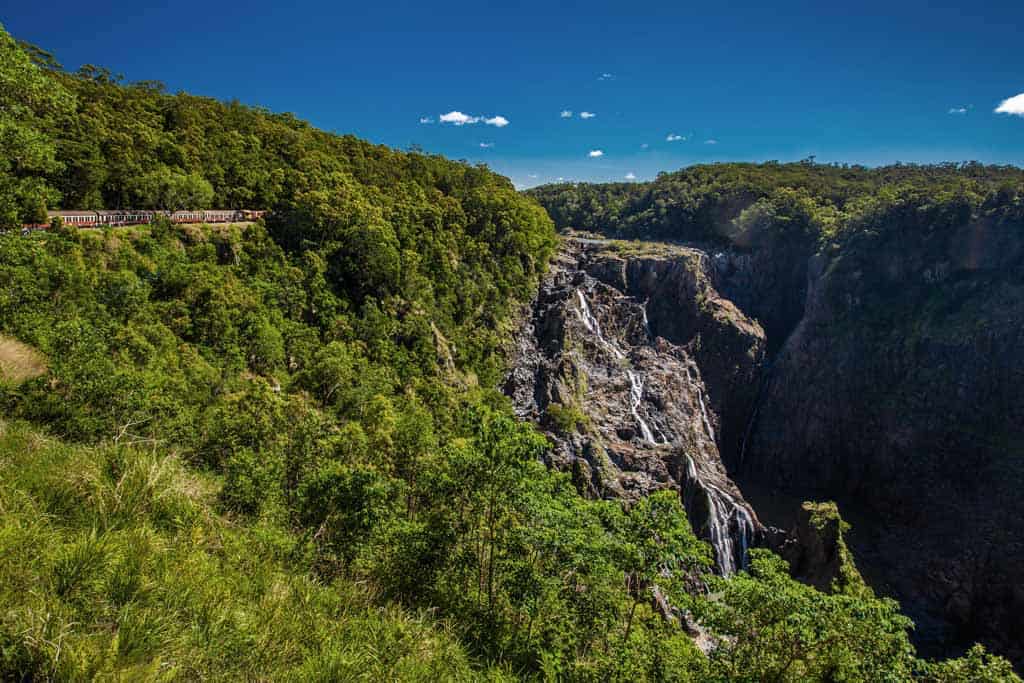
Only about an hour north of Cairns is Port Douglas, a small, relaxed town with one backpacker hostel, a few amazing restaurants, and a nice park lined with palm trees for viewing the sunset.
This is one of the best places to book a Great Barrier Reef snorkelling or diving tour because up here, the reef isn’t as crowded as near Cairns. A snorkelling reef trip is one of the most popular Australia tours and shouldn’t be missed!
So spend one of your days in Port Douglas swimming in the crisp, blue waters of the reef and seeing some incredible, colourful marine life.
From here, get back on Cairns to Cooktown bus and continue north up to Cape Tribulation in the Daintree Rainforest.
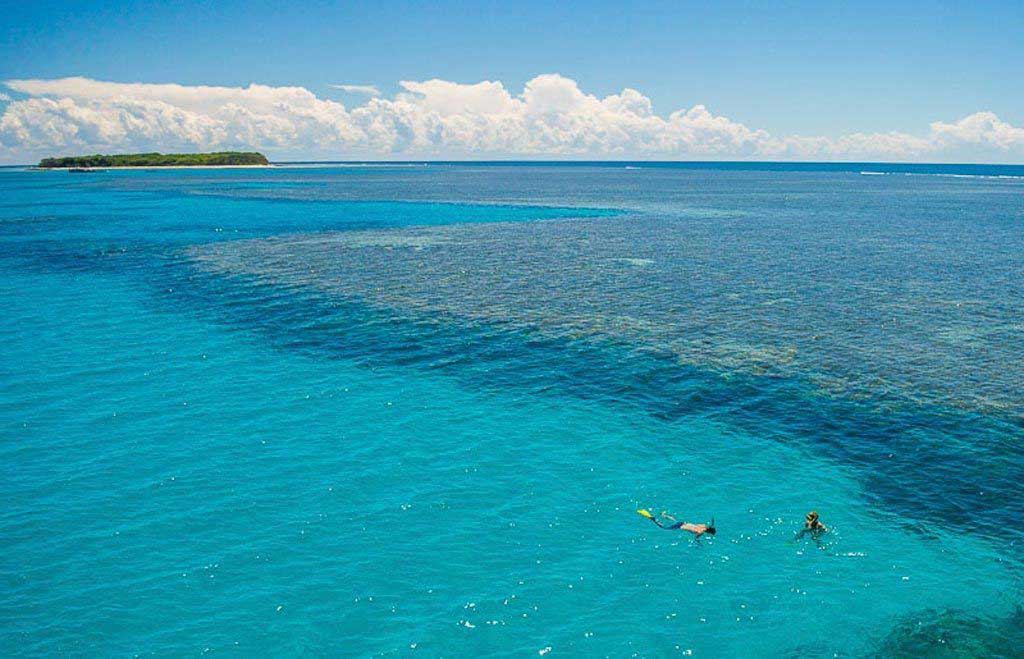
Located in the midst of the jungle, Cape Tribulation is the perfect place to disconnect from technology and reconnect with nature.
There is only one main road running through the town, if you can even call it a town.
Cape Tribulation has a few resorts and hostels, a couple tourism companies and about two shops, and that’s it.
But the powerful presence of the rainforest is more than enough to entertain you for a couple days.
The Daintree is the oldest rainforest in the world, and is one of the true natural wonders of Australia.
Go hiking, ride horses on the beach, book an ATV sightseeing tour, do an exotic fruit tasting at Cape Trib Farm, visit the Daintree Discovery Center, or take a boat cruise on the Daintree River to spot some crocodiles.
Try to avoid visiting Tropical North Queensland in December through February, however. This is the wet season and many roads may be flooded and tours will be closed.
On your third day, take the bus back to Cairns then fly to Darwin.
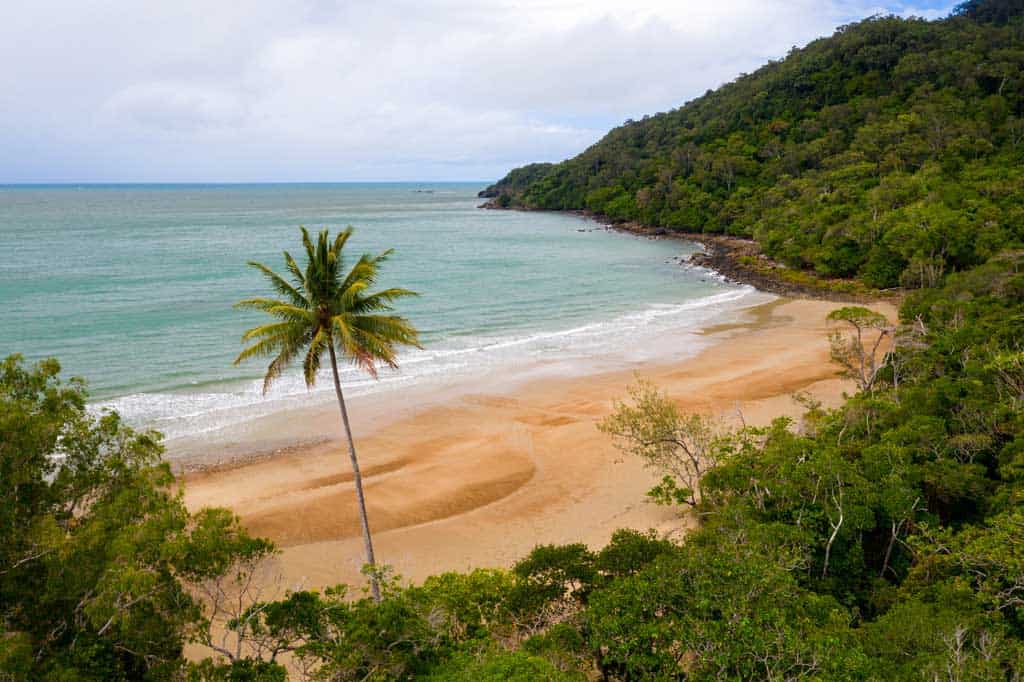
Darwin is the capital city of the Northern Territory, and it is a convenient starting point for a trip into Central Australia and Ayers Rock, in the south of the state.
Use this day to walk around and sightsee a bit, relax and unwind, and plan your journey into Kakadu National Park.
Check out our guide for the best things to do in Darwin!
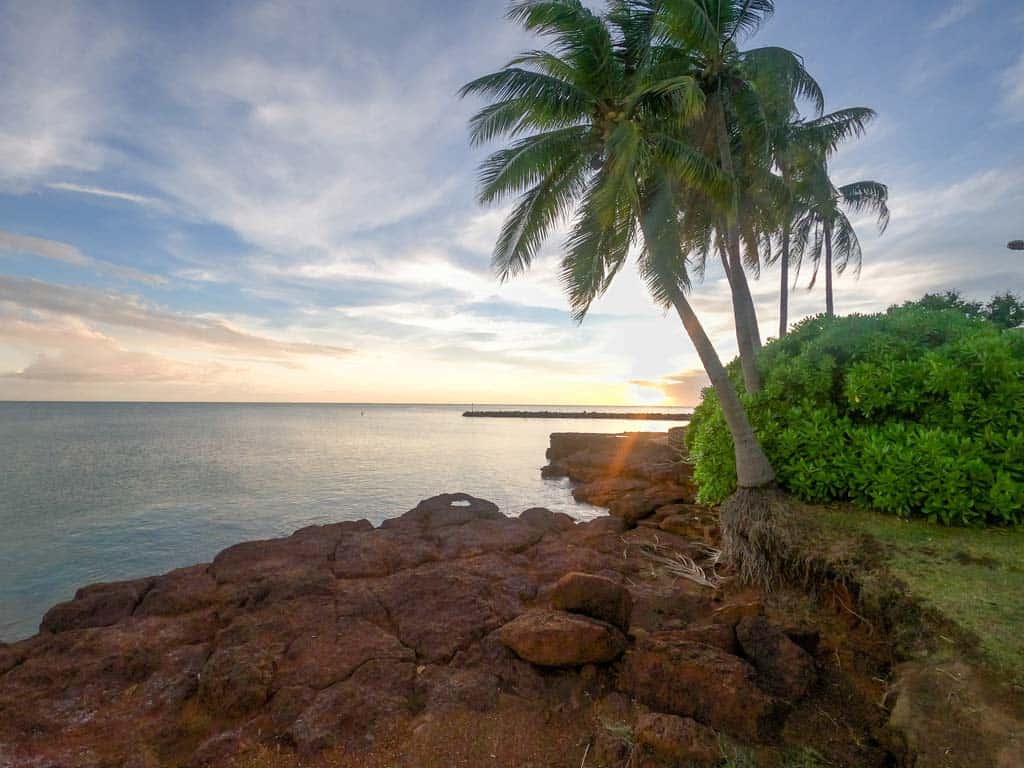
Rent a car in Darwin and spend the next couple days exploring the largest national park in Australia!
You can swim in waterfalls, find ancient Aboriginal rock art, and go hiking through some incredible landscapes.
If you have a van or a tent, you can camp at one of the park’s campgrounds. Otherwise there is a handful of resorts where you can stay overnight in Kakadu.
Most of the accommodation in Kakadu is located in Jabiru, the main town of the park.
You could also book a guided tour to Kakadu as a day trip from Darwin. This is a good option for those who want to take a break from planning and driving. A tour will take you right to the best spots in the park, which is handy because the park is so huge.
After exploring the national park, drive back to Darwin and then fly to Alice Springs at the heart of Australia’s Red Centre.
(Alternatively if you don’t want to keep travelling so much, you could stay in the Northern Territory and explore more natural wonders like Nitmiluk National Park.)
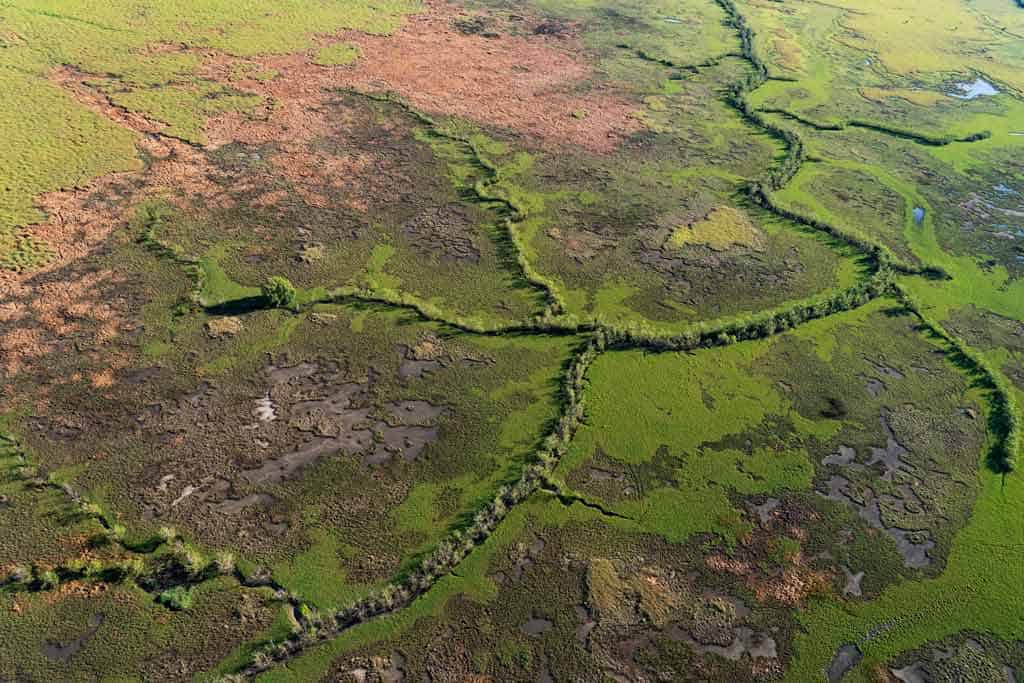
From Alice Springs in the center of the Northern Territory, it’s time to begin your journey to Uluru!
The Red Centre is the central desert area of Australia, consisting of Alice Springs and the UNESCO World Heritage Site, Uluru Kata Tjuta National Park.
Uluru, or Ayers Rock, is a sacred monolith and it one of the most famous places to see on a trip to Australia.
You have two options for getting to Uluru.
Option 1: Rent a car in Alice Springs and complete the 5-hour drive on your own. Keep in mind it’s also 5 hours to get back, so that’s a 10 hour road trip in total. You should also have your own camping gear and pack enough food and water for the road trip.
Option 2: Book a tour from Alice Springs if you are tired of driving. You can choose a straightforward day trip . It’s a bit pricier to do a guided tour, but it takes away a lot of the effort on your part.
Either way, watching the sunrise and sunset bathe Uluru in soft, natural hues is a sight you’ll never forget, so the journey is worth it.
If you are renting a car and doing your own road trip, consider also heading out to Watarrka National Park and Kings Canyon. This amazing spot is a 3 hour drive from Ayers Rock, which is a short drive for the Outback!
READ MORE: Check out all the incredible things to do in Uluru !
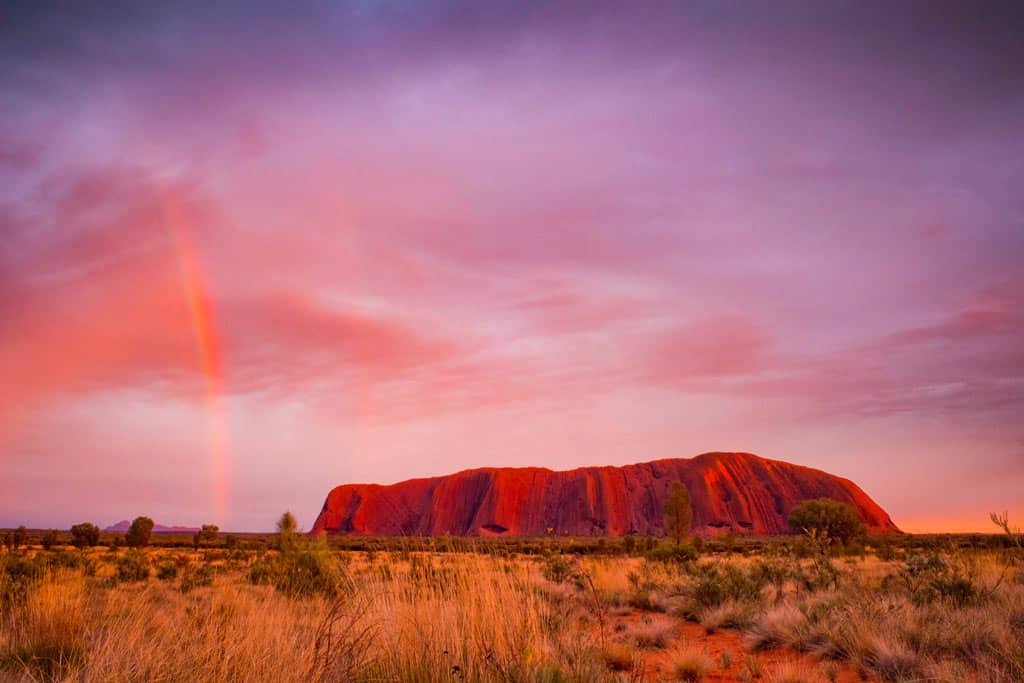
Your final day of the 3 week Australia itinerary will mostly be spent travelling.
Drive back to Alice Springs, then fly back to Sydney for your flight home.
I just want to add that there are many other natural wonders that I didn’t get to mention!
Australia is massive so it’s hard to fit in so many cool places in a short time.
For example, the north of Western Australia is stunning, but it’s very remote and not convenient to add to a few weeks in Australia.
Few Australians even make it out here on holiday.
But riding a camel on Cable Beach , snorkelling with Whale Sharks in Exmouth , or camping in Cape Range National Park are amazing experiences that you can have if you have the time to venture out there.
Tasmania is also one of the most gorgeous places in Australia. The island is home to some of the best hiking and camping in the country , but it requires lots of prior planning and preparation and gear.
You could also road trip around Australia, taking more time to see all the attractions and not having to rush.
But it would take you months or even years to road trip all of Australia!
Regardless of how much time you spend here, don’t stress about seeing everything!
It’s impossible to see everything, and no matter where you go, you’re sure to have an epic time.
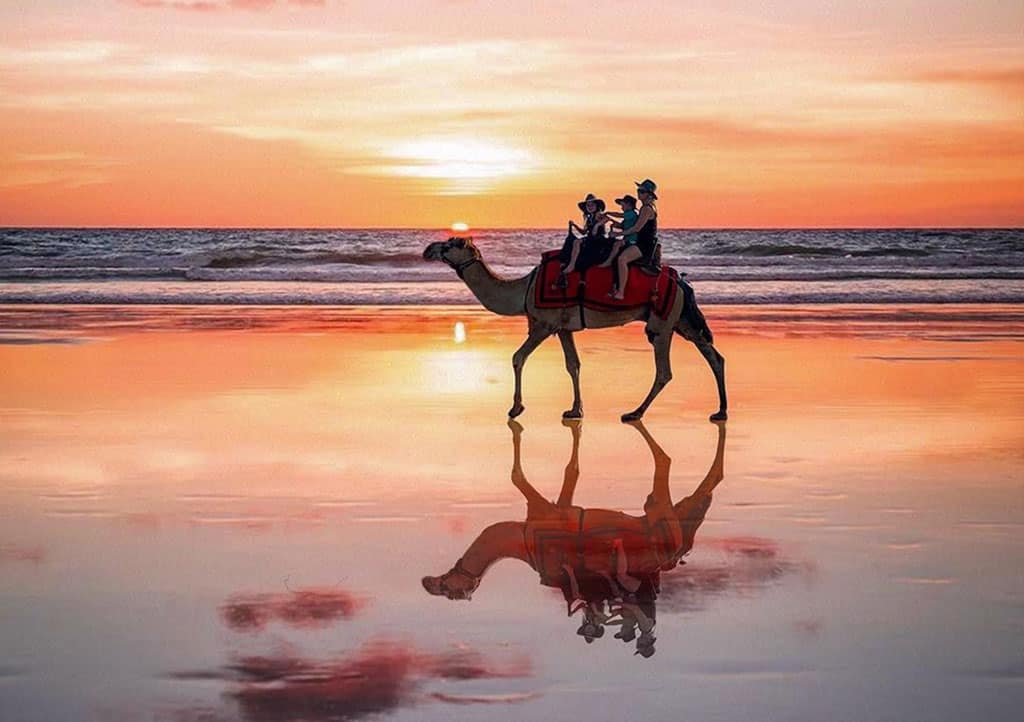
DISCLAIMER: Some of the links in this article are affiliate links, which means if you book accommodation, tours or buy a product, we will receive a small commission at no extra cost to you. These commissions help us keep creating more free travel content to help people plan their holidays and adventures. We only recommend the best accommodations, tours and products that ourselves or our fantastic editorial team have personally experienced, and regularly review these. Thanks for your support, kind friend!
Gabby Boucher
Hi, We’re Alesha and Jarryd!

We’ve been traveling the world together since 2008, searching for the planet’s best destinations and adventures.
Love Travel?
Sign up for our free weekly newsletter for the best travel tips, ideas and deals!
We respect your privacy. Unsubscribe at any time.
READ MORE...
30 Awesome Things to Do in Easter Island
The Land of Spears and Smiles – Wogasia Spear Festival on the Solomon Islands
Sony ZV-1F Review – The Best Entry-Level Vlogging Camera?
Related Posts
Myanmar accommodation – where we stayed and for how much, my son vietnam – hoi an’s champa ruins, experiencing a traditional ryokan in murakami, japan, discovering sustainability at ecocamp in torres del paine, 5 thoughts on “the perfect 1, 2 or 3 week australia itinerary [2024]”.
Have you got any info/tips about Central Australia? Adelaide, Coober Pedy, Alice Springs to Darwin (Stuart Hwy).
Would like more information on all inclusive 3 wk itinerary for family of about 12.
All the best with your research. Have a great trip.
Terrific article. Thanks so much for the insight!
Thank you so much. Glad the article was helpful 🙂
Leave a comment Cancel reply
Save my name, email, and website in this browser for the next time I comment.
The ultimate guide to getting around Australia

Oct 24, 2023 • 9 min read

A road trip is a highlight of a visit to Australia, but there are other great ways to travel too © pixdeluxe / Getty Images
Australia is the sixth-largest country in the world, with very different regions and climates. Deciding where to go – and how to get there – requires some major planning.
At first glance, flying and train fares in Australia look expensive (and a lack of competition does mean there are few bargains), but when you compare car rental, insurance, fuel and accommodation costs, a flight from Sydney to Perth suddenly looks a little more appealing.
If you don't have time to spare, you're likely to rely on internal flights to cover large distances – an alternative is to focus your trip on one region.
When deciding on the best way to get around Australia, weigh up how much time you have, what level of luxury you require and the carbon footprint you want to leave behind.
If you're short on time, you'll need to take internal flights
Flying is the only way to do more than one state on a shorter stay. Australia's main domestic airlines service major cities and key tourist sites – like Yulara for Uluru Kata-Tjuta National Park – with regular flights. Major players are Jetstar , Qantas and Virgin Australia .
Traveling by long-distance bus is a great budget option
Australia's extensive bus network is a reliable way to get between towns and cities, but distances are often vast, so be prepared for long days or nights. Most Australian buses are equipped with air-conditioning (essential in summer), comfortable seats and toilets; all are smoke-free, and some have wi-fi and USB chargers. Ask about hop-on hop-off fares, which give you more flexibility. Some operators also offer discounted fares for seniors, students and children.
The main bus companies in Australia are Greyhound Australia , Firefly Express , Integrity Coach Lines (in Western Australia), Premier Motor Service (NSW) and V/Line in Victoria, which runs a mix of buses and trains.
Another way to get around by bus is on a tour. Some offer the whole package, including accommodation and meals; others are less formal options to get from A to B and see the sights on the way. Popular outfits running coach tours include AAT Kings , Adventure Tours Australia , Autopia Tours and Untamed Escapes .
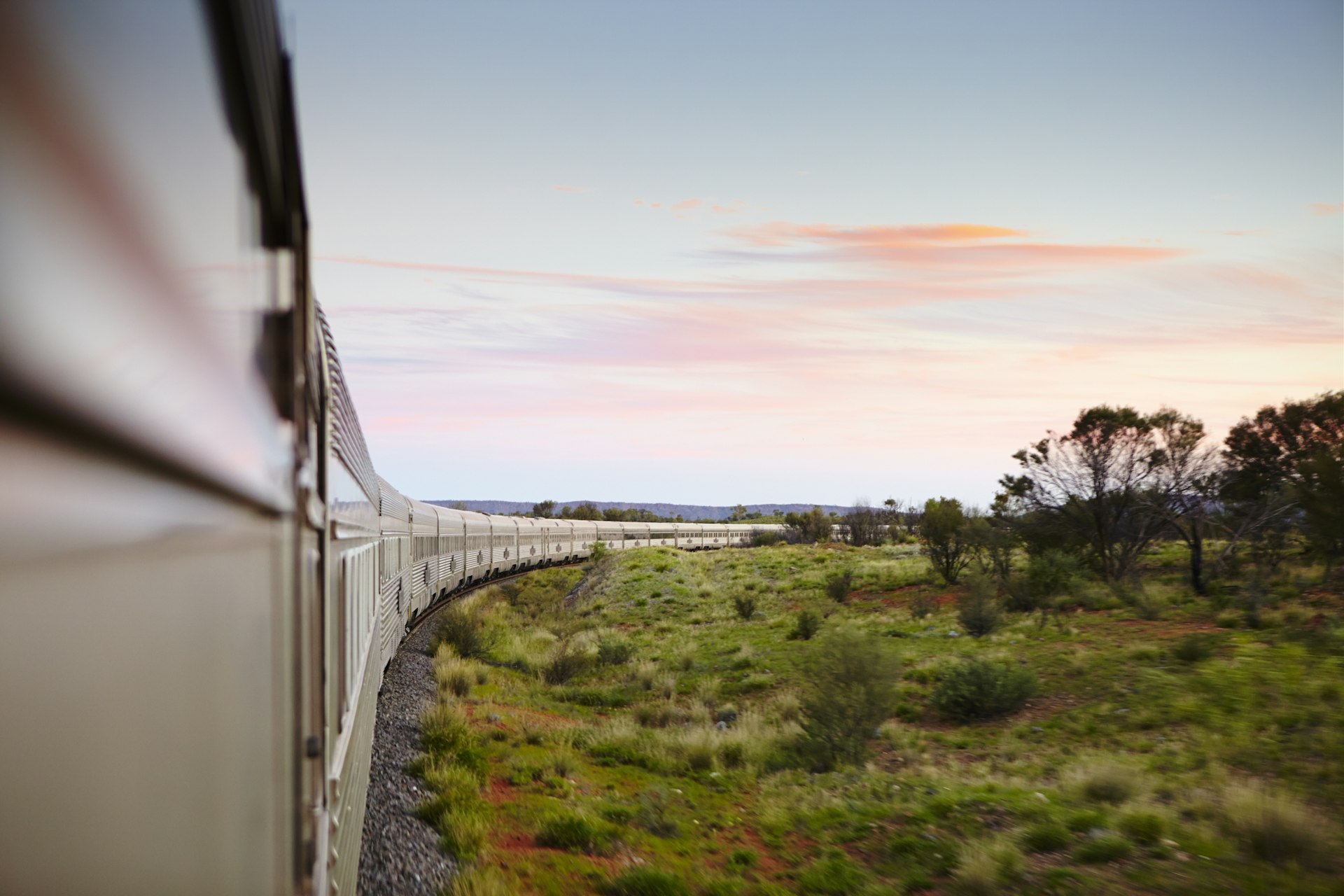
Explore Australia on an epic train journey
Long-distance rail travel in Australia is something you do because you really want to − not because it's cheap, convenient or fast. That said, trains are more comfortable than buses, and there's a certain "romance of the rails" that's alive and well in Australia. The most notable long-distance rail journeys in Australia are the Indian Pacific between Sydney and Perth, the Overland between Melbourne and Adelaide, Great Southern between Brisbane and Adelaide, and The Ghan between Adelaide and Darwin via Alice Springs.
Intra- and inter-state trains operators include Queensland Rail , which runs the high-speed Spirit of Queensland service between Brisbane and Cairns; NSW TrainLink from Sydney to Brisbane, Melbourne and Canberra; and V/Line within Victoria, which links up with coach connections into NSW, SA and the ACT.
Road-tripping in Australia is an amazing experience
Whether you're focusing your visit on one state or several, exploring Australia by road is the ultimate way to discover this vast nation. For 4WD or motorcycle adventures, you'll also need specialist skills, guidebooks, maps and equipment.
Choosing whether to hire a vehicle or buy one will depend on the length of your stay and how far you’re traveling. Here are the pros and cons to consider in the hire vs buy debate:
Hiring a car or camper means you've got a reliable vehicle
For a shorter trip, car rental is probably more cost-effective – you’ll get a newer, safer and more reliable vehicle. If you have any issues, you get roadside support, and your costs are fixed at the daily car hire rate. Large rental companies have offices in major cities and airports, and most require drivers to be over the age of 21 (sometimes 25). It’s slightly more expensive to do a one-way hire.
Campervans are also available for rent, which would cover some of your accommodation costs. You still need to pay to overnight at campsites or find designated spots where you can free camp. Australia-based companies that hire campervans include Apollo , Britz , Hippie Camper , Jucy , Maui , Mighty Campers , Spaceships and Travelwheels . To compare car hire deals, go to CarHire.com .
All the usual advice applies for car and van hire. Read the contract. Understand the small print, including accident excess cover (you can buy your own separately, but you may need to put down a large "holding" deposit with the car hire firm). Make sure all your drivers have the appropriate driving licenses and travel insurance. Always thoroughly inspect the vehicle before leaving and note any pre-existing damage. Given the scale of Australia, you should ask for unlimited kilometers as you’re most likely going to travel big distances. Find out if you can take the vehicle on unsealed roads.

Buying a car or a van might be best for longer trips
Buying your own vehicle gives you the freedom to go where and when your mood takes you and may work out cheaper than renting in the long run. The downsides of DIYing are the admin costs and repairs.
When you buy a vehicle in Australia, you need to transfer the registration (Aussies call it "rego," of course) into your own name within 14 days. Each state has slightly different requirements. When selling a vehicle, you need to advise the state or territory road-transport authority of the sale and change of ownership name. If you just don’t change the registration or give the vehicle away, you’ll still be liable for subsequent fines and future rego certificates from the new owners.
Sellers are required to provide a roadworthy certificate when transferring registration in most states. If the vehicle you're considering doesn't have a roadworthy certificate, ask for one before you agree on the price. This can cost $100 but will save you money on unknown repair costs. Road transport authorities have lists of licensed vehicle testers. Note that registering a vehicle in a different state from the one it was previously registered in can be time-consuming and more expensive, something to be aware of when planning to sell at the end of your trip.
It's prudent to have a vehicle checked by an independent expert before you buy it, and state-based automobile clubs (for example, the Royal Automobile Club of Victoria) offer vehicle checks. Road transport authorities (RTAs) have lists of licensed garages you can book directly.

Five common driving hazards you need to know
There are a lot of things to think about when hitting the road in Australia. Here are five risks you need to keep in mind.
1. There may be animals on the road, particularly at night
Many Australians avoid traveling once the sun goes down because of the risks posed by nocturnal animals on the roads. Kangaroos are common on country roads, as are cows and sheep in the unfenced outback. Kangaroos are most active around dawn and dusk and often travel in groups – if you see one hopping across the road, slow right down, as its friends may be just behind it. If you injure an animal while driving, you can call the local wildlife rescue line, which is sometimes signposted along the route.
2. Drive slowly and carefully on dirt roads in the countryside
Unsealed road conditions vary wildly depending on the road and the weather. Cars and vans perform very differently on dirt when braking and turning corners. Don't exceed 60kph (37mph) – if you go faster, you won't have time to respond to a sharp turn, animals on the road or an unexpected pothole. A wet dirt road means mud and can quickly become impassable – something to keep in mind if traveling in tropical northern Australia during the summer "wet season" (November to April).
3. Look out for "road trains" on the highways
A lack of rail infrastructure in Australia means you’re likely to cross paths with road trains (trucks with two or three trailers stretching for as long as 50m) on the highway. Overtaking is risky. On single-lane roads in more remote places, get off the road when a truck approaches; they don’t slow down for cars. Stones or debris can clip your car as it passes, so get as far out of the way as possible.
4. Fill up with fuel at every chance in remote areas
In cities and towns, service stations are plentiful, but distances between fill-ups can be huge in the countryside – pay attention to your fuel gauge and those yellow road signs announcing the next roadhouse. Filling your tank whenever you can is the best precaution, especially if you need to take a diversion thanks to a flooded road or some other weather-related event. Electric recharging spots are popping up all over Australia, making hybrid and electric road trips a viable alternative.
5. Do not ignore tiredness when driving
Be wary of driver fatigue; driving long distances (particularly in hot weather) can be utterly exhausting, and falling asleep at the wheel is a very serious risk. Stop and rest regularly − do some exercise, change drivers and have a coffee. Do not drive if you’re feeling drowsy.
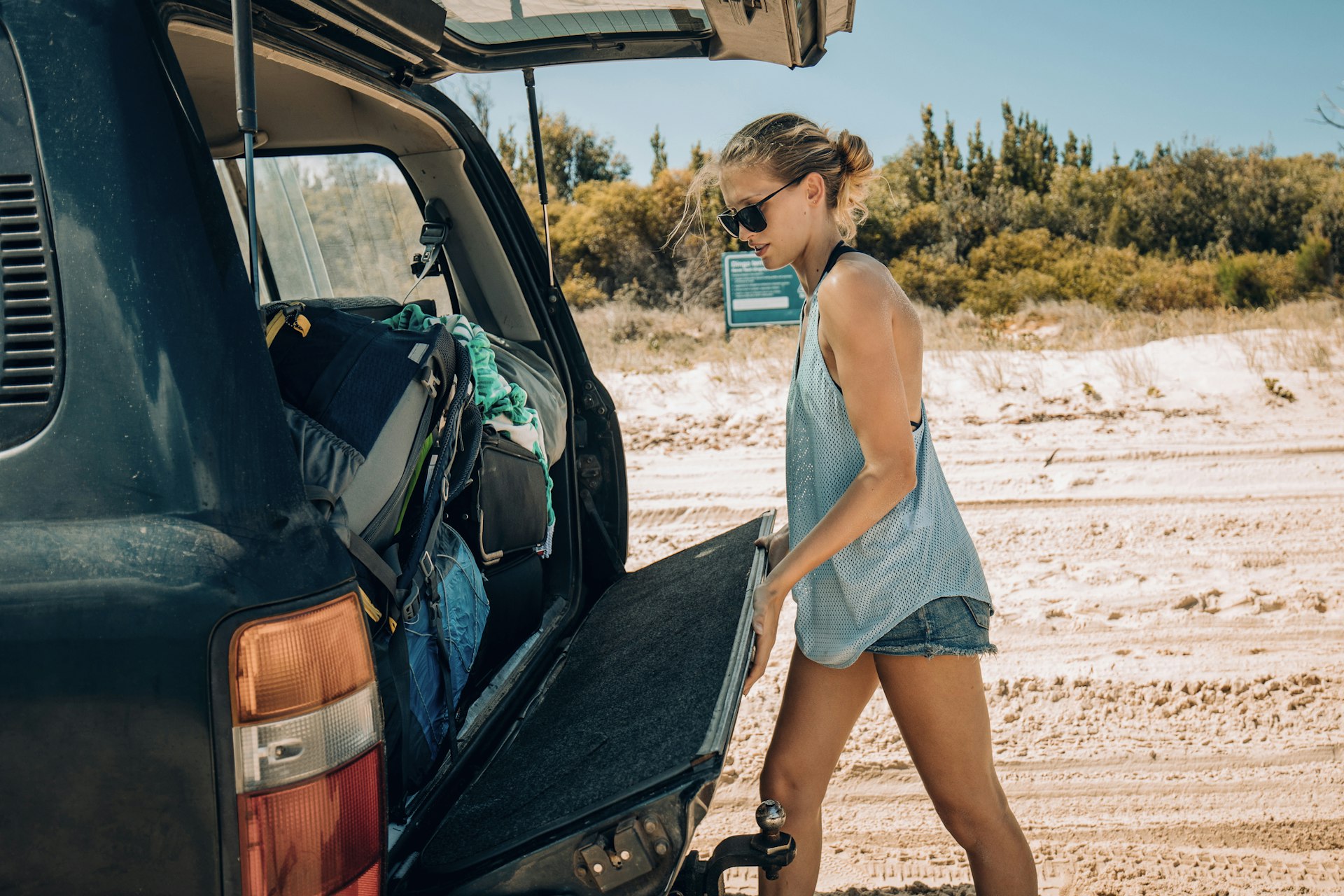
Drive responsibly and minimize your impact
If you’ve committed to buying a car or van and driving around Australia, there are some ways to minimize your environmental impact on your journey:
- Ensure your vehicle is well-serviced and tuned.
- Travel lightly and drive slower to reduce fuel consumption.
- Stay on designated roads and vehicle off-road tracks (if you’re 4WDing).
- Don't drive on walking tracks, and avoid driving on vegetation. Cross creeks at designated areas.
- Always take all your rubbish if you’ve been camping overnight.
- Consider ride-sharing with fellow travelers where possible.
Road trip around Australia on this 3-month-long itinerary
You have a 90-day tourist visa and want to see all of Australia, right? It’s not possible to see everything , but you can conceivably do both coasts and the outback if you’re prepared to keep moving (ideally taking turns behind the wheel with travel companions if you're driving this route).
We suggest you begin in Perth . Drive the west coast via Albany (to the south), then up to Broome via Ningaloo and the Pilbara and over to Darwin . Turn south through Alice Springs and detour via Uluru . Continue straight down the Stuart Highway to Adelaide , then make your way to Melbourne , either inland or via the more scenic coast. Now you’ve got about a month to six weeks to get to far north Queensland via the beaches of southern New South Wales, the waterfalls inland from Byron Bay and the Daintree rainforest north of Cairns . If you skip Sydney and Brisbane (you’ll be dusty by now, and finding places to park is a pain), you can always pop back via bus or plane after you’ve offloaded your vehicle – which has just had an extra 20,000km (12,400 miles) added to its mileage.
This article was first published Jun 29, 2021 and updated Oct 24, 2023.
Explore related stories

May 21, 2024 • 11 min read
Looking to travel for Pride festivities in 2024? Here are 12 cities all over the world that offer a plethora of joyous parades, street fairs and parties.
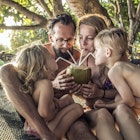
May 8, 2024 • 5 min read

Apr 15, 2024 • 10 min read
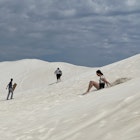
Apr 4, 2024 • 5 min read
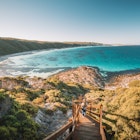
Mar 29, 2024 • 19 min read

Mar 26, 2024 • 8 min read
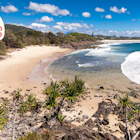
Feb 27, 2024 • 6 min read

Feb 15, 2024 • 7 min read

Feb 9, 2024 • 12 min read

Jan 5, 2024 • 20 min read
How to travel around Australia
Travelling by car.
You can hire a car in Australia and drive using your foreign driver’s license for up to 3 months. You need to drive on the left side of all Australian roads.
Find a guide for driving in Australia on the Tourism Australia website.
Driving in the outback
The roads in the Australian outback can be rough and not suitable for some vehicles. If you hire a car to drive in the outback, check with the hiring company to see that it’s suitable.
Find out more about planning an outback road trip on the Tourism Australia website.
Travelling by public transport
Australian cities have public transport that you can use.
Find out more about travelling around Australia’s cities on the Tourism Australia website. These links will take you away from myGov.
Travelling by plane
Flying is the best way to cover Australia’s large distances in a short time. Australia has domestic airlines that travel to major and regional cities.
Find out what you can’t take on a plane and how you and your baggage will be screened. These links will take you to the Department of Home Affairs website.
What you can’t take on a plane
Can i pack that, passenger screening, other ways to travel.
Australia has many train and ferry trips you can choose from. Find out more about these services and getting around Australia on the Tourism Australia website.
Thank you for your feedback
- Destinations
Wild Junket

Two Weeks in Australia: The Ultimate Itinerary for First-Time Visitors
Last Updated on March 11, 2024
Can you see anything with two weeks in Australia? Hell yeh! Here is the ultimate two-week Australia itinerary.
Let me start with the obvious: Australia is HUGE. It’s a country and a continent, almost as big as USA (not including Alaska).
Australia’s coastline stretches almost 50,000 kilometers and the country has a myriad of landscapes, ranging from tropical rainforests in the north to deserts in the center and mountains in the south.
Of the 130+ countries that I’ve been, Australia has to be one of the most diverse. I’ve traveled all over Australia (on five trips in total), exploring the Top End, South Australia, Sunshine Coast, and Tasmania. For those who have limited time, I’ve compiled the perfect two-week Australia itinerary and guide.

Table of Contents
Visas for Australia
Travel insurance for australia, how to get to australia, travel australia independently or on guided tours, when to travel australia, cost of travel in australia, the ultimate two-week itinerary in australia, days 1-2: explore the vibrant city of sydney, where to stay in sydney, day 3: day trip to the blue mountains, day 4: wander around the colonial city of melbourne, where to stay in melbourne:, day 5: day trip to phillip island, day 6: day trip to the great ocean road, days 7-8: soak up the sun in cairns, where to stay in cairns:, day 9: day trip to the great barrier reef, day 10: day trip to daintree and cape tribulation, day 11: get to know alice springs, where to stay in alice springs:, day 12: camping trip in uluru, days 13-14: camping trip in kings canyon, day 15: fly back to sydney, victoria & tasmania: for a mix of everything.
- Northern Territory: For Adventure Seekers (my favorite!)
Western Australia: For Family-Friendly Adventures
Queensland: for underwater lovers, travel resources, two weeks in australia.
Australia has a strict visa rule in that every non-citizen must have a visa to enter the country, except for citizens of New Zealand .
Citizens of EU member countries need to obtain an eVisitor visa online before arriving in Australia. This is a free visa for multiple visits to Australia for up to three months at a time within a 12-month period. Apply here.
Citizens of Singapore, Malaysia, Japan, US, UK and Canada can get an Electronic Travel Authority (ETA) online as well. The official website to apply for the ETA is here . It costs AU$20.

It’s important to have travel insurance, regardless of whether you’re in Australia for 2 weeks or 2 months. Travel insurance covers any expenses you might have to fork out for flight delay, trip cancellation, loss of baggage and even accidents.
Safety Wing is the most popular travel insurance company for COVID19-coverage. I use their Nomad Insurance plan , which covers COVID-19 as any other illness as long as it was not contracted before your coverage start date. Refer to my travel insurance guide for more details.
The most popular international airport to fly in and out of is the Sydney International Airport.
There are direct flights from Los Angeles LAX to Sydney for under $1000 return and from London Heathrow to Sydney for around 600GBP.
I also recommend making a stopover in Dubai or Singapore to break down your journey to Australia. Many airlines don’t charge an extra fee for the layover.
There are lots of budget airlines that fly from Asia to Australia for just US$200+ return.
Check for flights to Sydney here

How to Travel Around Australia
Since you’ve only got two weeks in Australia, the best way to travel around the country and see as much as possible is by domestic flight. Thankfully airfares to travel within Australia are affordable.
E.g. a flight from Sydney to Melbourne is US$100 return (you can get them as cheap as $50).
Here are the best budget airlines that can get you across Australia:
- Qantas — Australia’s national airline
- Virgin Australia — Affordable luxurious airline
- Jetstar Airways — Australian low-cost airline
- Tigerair Australia — Another budget airline with good deals
- Scoot — Singaporean low-cost airline with cheapest fares
Search for domestic flights here

Australia is most famous for its spectacular national parks and remote islands, and driving is the best way to see them. Renting a car in Australia will set you back at around US$70/day or $160 for a week.
Petrol is particularly expensive in the remote regions such as the Red Centre, at almost $2.80 per liter.
It is very easy to do road trips in Australia . There are road signs everywhere and they’re in English. The main thing you need to be careful about when driving in Australia is wildlife. Kangaroos often dash out to the roads especially at night, so be extra alert. Your best bet is to avoid driving at night.
Book Your Car Rental!

Backpackers with lots of time on their hands might prefer to take the bus around Australia. It’s the cheapest option and buses in Australia are comfortable and punctual. Greyhound Australia is the main coach service within this beautiful country. Book your bus tickets here to ensure availability.
You can choose from hop-on and hop-off passes which give you lots of flexibility. Choose your start and end points from the routes, and then enjoy three months to hop-on and off where you please. You have 90 days to complete your travel (or extend to 180 days for a nominal fee) and your first day of travel must commence within 12 months of purchase. You can get the bus passes here.
Australia is safe and easy to travel around on your own. My first trip there was when I was 17 and I backpacked around Australia with a group of friends without any difficulty or challenges.
If you prefer to travel with a group, check out this 15-Day Outback to the Top End tour with small-group operator G Adventures. I’ve traveled with them many times (to Mongolia, Antarctica, Brazil, Svalbard and Nepal) and can highly recommend them. Every single trip was epic and I’ve made some lifelong friendships on my trips with them.
Another alternative is to travel independently but go on day tours when necessary. You can find a wide range of day trips with prices and reviews at Viator. They have free cancellations and mobile vouchers which make it really convenient. We did a three-day camping trip in Uluru and it was the best experience we had in the whole of Australia.
Most day trips in Australia cost around US$100 and upwards. If you book them when you arrive, they’re more expensive at local travel agencies or hotels.

Australia is a huge country, so this really depends on which part of the country you’re planning to travel.
Keep in mind that Australia is in the southern hemisphere so the seasons are reversed to the northern hemisphere. Summer in Australia runs from December to February and winter goes from June to September.
For our ultimate itinerary below, December to February is the best time to take the trip. The weather will be warm and sunny and temperatures won’t go below 20°C (68°F).
However, it can get very hot in Alice Springs , Northern Territory, with average daytime temperatures around 32 to 36°C (90 to 97°F). This is also peak travel season in Australia so prices are higher.
Winter can be quite cold in Melbourne and Sydney, with temperatures dipping to 7 to 9°C (45 to 48°F). You’ll definitely need to pack warm clothing and a winter coat.

Prices in Australia are quite high, comparable to prices in the US and Western Europe. Expect to pay US$15-25 for a restaurant meal and at least $70 for a standard three-star hotel room.
Renting a car can set you back at around US$70/day or $160 for a week. Petrol is particularly expensive in the remote regions such as the Red Centre, at almost $2.80 per liter. Keep that extra cost in mind as well.
However, there are ways to travel on a budget in Australia. It is quite backpacker-friendly with a strong network of YHA hostels and inter-city bus services.
A bed in a YHA hostel is usually around $25-40 per night, and Greyhound buses are around $50-100 each way (book your flights early and you’ll pay almost the same).

Please keep in mind that this itinerary is designed to help those of you who want to get an overview of Australia in a short time.
The itinerary packs in a lot, so be prepared to be on the go a lot and to spend quite a bit on domestic flights and day trips.
I have included all my favorite states in the itinerary and what I think are the essential areas to explore in Australia. If you’d like to slow down a bit, I would suggest removing one state and extending your stay in the other three states.
Here’s an overview of where the itinerary covers:
- Sydney – 3 days (day-trip to the Blue Mountains)
- Melbourne – 4 days (day-trips to Phillip Island & Great Ocean Road)
- Cairns – 3 days (day-trips to Great Barrier Reef & Daintree)
- Alice Springs – 4 days (camping trip to Uluru and Kata Tjuta)

Sydney makes a great introduction to Australia, so make sure to spend at least two days exploring Australia’s biggest city. The multi-cultural city has a vibrant and lively flair, and the best places to get a sense of that are the Rocks district and Darling Harbour .
Head to Sydney Tower for a bird’s eye view of the city; you can even walk 250m (820 feet) above the ground on the Observation Deck. A must-see in Sydney is its most iconic landmark: the Sydney Opera House and the nearby Harbour Bridge. I recommend doing the Sydney Bridge Climb , where you get to climb up the Harbour Bridge with a harness and get fantastic 360-degree panoramas of the city from above. I did that when I was 18 years old and absolutely loved the thrill of it.
Sign up for a bike tour to see some highlights of Sydney or a food tour in Sydney’s historical quarters . Spend an afternoon surfing on Bondi Beach or just people watch at King’s Cross.
In the evening, go on a Sydney harbor sunset dinner cruise for an unforgettable experience.

Budget: Noah’s @ Bondi Beach
This backpackers’ hostel is just a two-minute walk from the surfing hotspot, Bondi beach. It’s got lively vibes, a social atmosphere, and affordable prices. There’s a rooftop BBQ area with unobstructed beach views. Book your stay here!
Another good budget option is Ibis Budget – St Peters, where we stayed at. It is cheaper than Noah’s and offers more privacy than a hostel does. Check the latest prices.
Midrange: Glenferrie Lodge
Housed in a charming historical building, this lodge has an excellent location right next to Sydney Harbour Bridge. It’s located in Kirribilli Wharf, where ferry services to Circular Quay and Sydney Opera House depart regularly. Kirribilli has a nice village atmosphere and lovely Victorian buildings. Book your stay here.
Luxury: Four Seasons Hotel Sydney
Boasting the best views of Sydney Harbour, Four Seasons is definitely a top choice for luxury travelers. It has a rooftop pool overlooking Sydney’s CBD and harbor-facing rooms all have spectacular water views. Check the latest rates here.

It’s time to head out to see Australia’s beautiful natural landscapes. An hour west of Sydney, the Blue Mountains is a stunning region with rugged cliffs, waterfalls, and eucalyptus trees.
Katoomba is the biggest town, located on the fringe of the Blue Mountains National Park and its bushwalking trails. For the best views of the famous Three Sisters rock formation, head to Echo Point.
I recommend renting a car for the day or booking a day trip . Each has its own advantage: renting a car gives you the freedom to explore at your own pace and allows you to seek out secret corners; booking a day tour is easier and you’ll an expert to show you the hiking trails and the best viewpoints.

Fly to Melbourne, my absolute favorite city in Australia. This multi-faceted city has gorgeous colonial Victorian architecture and a fun city beach. The 1.5-hour flight from Sydney to Melbourne costs around $30-50 one way.
Kick off your first day in Melbourne by hopping on the City Circle Tram that’s free for everyone. The historical tram travels through Melbourne’s central business district, specifically Flinders, La Trobe, and Victoria Streets.
Next, stroll through the historic Queen Victoria Market for some fresh Australian produce and arts and craft. Every Wednesday night between November and April, it also plays host to the Night Market.
Then head out to St Kilda, a coastal village just a tram ride away from the city. Here you can ride a paddle board or take a lesson , also explore the nightlife of this place. Luna Park Melbourne is free entry and it’s an excellent spot for families.

Budget: Melbourne Metro YHA
I stayed at this Melbourne YHA on my first trip to Australia when I was 17 and had a blast! It’s a fun and budget-friendly place perfect for those who want to mingle. Located on the city fringe, it has a rooftop terrace with panoramic views of Melbourne. Book your stay here!
Midrange: Hotel Causeway
Housed in an Art Deco building, this boutique hotel is just steps from bustling Bourke Street Mall and the restaurants of Swanston Street. Despite its prime location and good quality accommodation, prices are reasonable. Check the latest rates here.
Luxury: Grand Hyatt Melbourne
Easily the best hotel in Melbourne, Grand Hyatt is perfectly positioned on Collins Street in the heart of Melbourne. Rooms here have views of either Melbourne’s skyline or the Yarra River. It’s well worth checking out the signature restaurant Collins Kitchen, and its stylish, modern bar Ru-Co. Check the latest rates here.

Next day, rise early for a day trip to Phillip Island , home to the world’s largest fur seal colony. Located only 90 minutes from Melbourne, this wildlife island features impressive landscapes and an overload of Australian wildlife.
Visit the Penguin Parade at sunset, go whale-watching , see koalas at the Koala Conservation Centre, or go on an EcoBoat Tour. Don’t miss the Nobbies outcrop, where you’ll find the Australian fur seals.
I recommend booking this day trip as it includes hotel pickup and entrance to all the above-mentioned centers on Phillip Island. The tour leaves at 13:15 and gets you back to your hotel at 21:00 (from April to September) or 22:30 (from October to March).

For your last day in Victoria, head to the spectacular Great Ocean Road , one of Australia’s most visited destinations. This meandering road snakes its way along the dramatic coastline, revealing unique rock stacks and the lush rainforest of the Otway Ranges (home to quite a few wild koalas).
Driving along the Great Ocean Road makes for one of best road trips in Australia . With so much to see, the Great Ocean Road definitely merits more than one day to explore, but those tight on time will have to make do with a day trip .
From Melbourne, drive west to the start of the Great Ocean Road, passing the coastal towns of Lorne and Apollo Bay. You will also see the iconic Split Point Lighthouse .
Spend some time exploring the Shipwreck Coast and admiring the Loch Ard Gorge. The highlight of the Great Ocean Road is the 12 Apostles (twelve rock stacks rising from the waters). Descend the Gibson’s Steps to the beach, where you will get new perspectives of the enormous offshore stacks and cliffs.

Your next stop is Queensland, the sunshine state full of pristine beaches, castaway islands and miles upon miles of reef. Fly from Melbourne to Cairns for around $100 one way. It’s a 3.5-hour flight. Check for flights here.
Cairns is the liveliest city in Queensland and the gateway to the Great Barrier Reef. I recommend spending your first day on the beach and soaking up some sunshine.
Located on the Esplanade is the Lagoon, a lively area to swim and chill. On Sundays, the Lagoon also hosts live music on a temporary stage. Don’t miss the Saturday Esplanade market for local artwork and jewelry.
If you’ve got some extra time, head to the many swimming holes outside of Cairns. Fairy Falls and Crystal Cascades are only a 10-minute drive from Cairns. A bit further away is Ross and Locke where you can go tubing along the rapids – just watch out for crocodiles!

Budget: YAL Cairns
This well-priced budget hotel offers great value for money, with a nice swimming pool and a comfortable outdoor lounge area. All rooms come with air conditioning, microwave, fridge, and shower. This hostel is great for couples and backpackers who are traveling on a budget. Book your stay here!
Midrange: Palm Royale Cairns
Set amidst 2.5 acres of tropical gardens, Palm Royale is a surprisingly affordable resort with two gorgeous pools. The hotel is just a 10-minute drive from the city center. I would definitely stay here again on my next trip to Cairns. Check the latest rates here.
Luxury: Treetops Retreat Cairns
Perched on the treetops of the Crystal Cascades rainforest, this elegant yet rustic retreat is walking distance to swimming holes, hiking trails and waterfalls. The tree house has a spacious deck high in the canopy, with an outdoor pool and a private rainforest spa deck, perfect for star gazing. Check the latest rates here.

On your second day, take a catamaran sailing trip to the Great Barrier Reef for some snorkeling and sailing. The world’s largest coral reef system is made up of nearly 3000 individual reefs sprawled across an area of almost 135,000 square miles (350,000 square kilometers).
During the sailing trip , you’ll get to snorkel at two of 24 authorized reef locations depending on the day’s sea conditions. All of the sites offer exotic marine life like turtles and parrot fish. You’ll also get interpretation talks on board from experts about the reef.
Alternatively, book an eco-adventure day trip to Green Island , a private island resort in the Great Barrier Reef. The island also has a lush rainforest with over 120 native plant species and a rich bird life.
At just 45 minutes from Cairns, Green Island gives you the unique chance to do a combined reef and rainforest tour . . You can explore the island’s lush rainforest on foot, see the reef from the glass bottom boat, or snorkel off the beach.

For your last day in Queensland, head inland on an adventurous day trip to the Daintree Rainforests and Cape Tribulation . Daintree is Australia’s biggest tropical rainforest, and also the oldest rainforest on Earth at 135 million years old. Here you will find kingfishers, lorikeets, tree frogs, and entwining strangler figs.
By foot, walk through the Daintree and find the point where the rainforest meets the reef at Cape Tribulation. Ditch your hiking shoes and dip your feet in the white sand beaches.
Don’t miss Alexandra Lookout where you can get spectacular views of the Daintree River and the Coral Sea. Cruise along the Daintree River among rainforest jungles, mangroves, and crocodile-infested waters before returning to Cairns.

I have saved the best for last! Australia’s Red Centre is my favorite part of Australia and it’s where the raw and rugged Outback lies. Alice Springs is a small town and the gateway into the Red Centre. As low-cost airlines don’t fly there, airfares are slightly more expensive. A one-way flight from Cairns to Alice Springs costs around $200 on Qantas.
Just 7km outside of town is the Alice Springs Desert Park , a wildlife sanctuary and botanic garden. Standing at the base of the MacDonnell Ranges, the desert park is a beautiful nature park where kangaroos roam, birds fly overhead, and endangered bilby burrows underground.
You get to see unique Australian animals like the thorny devil, echidna, and bearded dragon. For an interesting experience, sign up for a guided night tour to see rare and endangered animals under the stars.
If you’ve got some extra cash, I recommend treating yourself to a hot air balloon flight in Alice Springs . From the air, the landscape looks different and you get a real sense of the magnitude of the desert. Flights usually take place at dawn so you might need an extra day for this excursion. Read about our experience on a hot air balloon flight in Alice Springs .
Book your hot air balloon flight here!

Budget: Alice Lodge Backpackers
Just 5 minutes’ walk from Alice Springs town center, this great hostel is the best budget place to stay in town. Rooms are clean and spacious, plus they have cheap private rooms. The outdoor swimming pool is a great area to hang out and they organize barbecue nights occasionally. Check the latest rates here.
Midrange: Diplomat Motel
We stayed at this well-priced hotel and highly recommend it to travelers seeking affordable comfort and convenience. It’s located in the center of Alice Springs, just a few minutes’ walk from stores and restaurants. We hung out at the swimming pool in the evening and had a barbecued dinner that night! Check the latest rates here.
Luxury: DoubleTree by Hilton Alice Springs
As one of the best hotels in town, DoubleTree by Hilton is a luxury resort awarded for its environmental-friendly ethos. The hotel has a beautiful setting, with the MacDonnell Ranges as a backdrop. All rooms have balconies that overlook either the mountains, swimming pool or gardens. Book your stay here!

For some real Australian Outback adventure, head into the Red Centre on a three-day camping tour of Uluru , Kings Canyon and the Kata Tjuta National Park.
This trip is power-packed and you’ll need a medium level of fitness for the walks. They are not technically difficult, but the high temperatures in summer can make them slightly challenging. Check out the trip details here.
You’ll travel around on a sturdy overland truck and your guide will prepare barbecued meals every day. Plus you get to sleep in cozy swags under the stars every night! We did this camping trip in 2013 and it was definitely THE best experience we had in Australia to date. Read about my experience here.

Next day, you’ll head straight to Kings Canyon for a three-hour hike through the sandstone domes of the Lost City. Admire the many natural amphitheaters and see the North and South walls on the way to the Garden of Eden.
The next day, take a guided walk in the Kata Tjuta or the Olgas and learn about the spiritual significance of the area.
Then visit the Aboriginal Cultural Center and listen to tales from the Tjukurpa Dreamtime. On the last day, watch the sun rise over Uluru, the world’s largest rock.
Do a base walk at Uluru to see beautiful Aboriginal cave paintings. You’ll get back to Alice Springs in the evening of the last day.
Book the camping trip here!

Sadly your trip has come to an end! Fly from Alice Springs to Sydney direct for around $150 one-way, just in time to catch your flight home.
Other Two-Week Itineraries in Australia
Because Australia is such a massive place, you could easily spend two weeks focusing on one particular state in Australia that fits your interest.
Consider what your interests are: do you prefer hiking in the outback or exploring cities? These itineraries will help you narrow down your focus and show you the best in one state. You’ll also save money as you won’t need to book domestic flights to get around.
Here are some examples of two-week itineraries in Australia:
Victoria is a micro-Australia, with dramatic coastlines, outstanding landscapes, wildlife-rich islands, and buzzing beach vibes. This state is great for road trips and a mixture of adventure, urban life, and relaxation.
Tasmania is an outstanding, scenic island that every nature lover needs to visit!
- Visit Melbourne and its Victorian buildings and markets
- Drive along the spectacular Great Ocean Road
- Go wine-tasting in Mornington Peninsula
- Take a day trip to Phillip Island to see penguins and the world’s largest fur seal colony
- Fly to Tasmania, a paradise for nature lovers
- Hike in the famous Cradle Mountain National Park
- Enjoy a wineglass bay cruise and visit its national park

Northern Territory : For Adventure Seekers (my favorite!)
This is where you’ll see the real Outback, where termite mounds rise above the rose red sand and Aboriginal artwork sprawl across ancient rocks. Adventure seekers would love this itinerary as it involves lots of hiking and camping in the deserts.
You can easily do a road trip from Darwin, driving from Australia’s Top End to the Red Centre and flying back from Alice Springs.
- Experience the tropical city of Darwin
- Swim with the mighty saltwater crocodile at Crocosaurus Cove
- Take the ferry to the Tiwi Islands to learn Aboriginal island culture
- Hike amongst waterfalls in Kakadu and Litchfield National Parks
- Camp in the Red Centre to explore Uluru and Kata Tjuta National Parks

Western Australia is the sunniest part of the country as it averages an annual eight hours of sunshine per day. This itinerary is great for families who are looking to get outdoors and experience Australia’s wildlife and beaches.
Read this two-week itinerary of Western Australia for more details or click the links below for day trip ideas.
- Explore the sunny capital of Perth: King’s Park, Cottesloe Beach, and Fremantle
- Take a day trip to Rottnest Island to bike around and see quokkas
- See koalas and kangaroos at Yanchep National Park
- Have a 4WD adventure in the Pinnacles and try sandboarding
- Wine-tasting in Margaret River

The sunshine state is more than just blue skies and never-ending beaches. With five World Heritage Listed sites and the world-famous Great Barrier Reef, Queensland is Australia’s favorite natural playground.
This itinerary is perfect for underwater enthusiasts and those who want to see the lush rainforests and pristine islands of Australia.
- Fly to Cairns, a modern coastal city
- Take a catamaran sailing trip to the Great Barrier Reef for some snorkeling
- Spend a few days on Green Island to dive and explore the coral life
- Explore the rainforests in Daintree and Cape Tribulation on 4WD
- Visit the Chillagoe caves and waterfalls
- Take a historic scenic train to the village of Kuranda nestled within a UNESCO forest

That’s a wrap! Hope you’ve found this Australia itinerary to be useful. Feel free to print it out and bring it with you on your trip. Any trip to Australia is an adventure and a trip of a lifetime. Enjoy the journey!
Over the years (and traveling to 140+ countries), I’ve learned a thing or two about travel planning. I’ve put together this list of travel resources that I personally use to find the best deals and book travel! For more details, check out my travel tips resource page .
- Booking Flights : Kayak is brilliant for finding the best dates to fly as it allows you to search for the lowest airfares within a 3-day period. Then I use Skyscanner as they’ve consistently given me the lowest airfares.
- Accommodations: I always use Booking.com to book hotels, mainly because of the flexible cancellation policy and good customer service. You can also find short-term rental apartments there (I prefer not to use Airbnb due to the extra charges).
- Travel Insurance: It’s important to have travel insurance, regardless of whether you’re traveling for a few days or months. Safety Wing is the most popular travel insurance company for COVID19-coverage. I use their Nomad Insurance plan , which covers any healthcare expenses I may have worldwide. Refer to my travel insurance guide for more details.
- Health Advice: I always refer to the travel guides on the CDC website for recommended medications and vaccines. You can get them at your travel doctor’s office or a walk-in pharmacy.
- Tours: If you’re looking for all-encompassing tours, I recommend small-group adventure tour outfitter, G Adventures . I’ve traveled with them to Antarctica, Mongolia, Svalbard, and Nepal, and loved every single trip. For day tours, I always book with Viator and GetYourGuide ; they have easy booking systems and free cancellations.
- Car Rental: I always book car rentals on Discover Cars , as they’ve consistently given us the best rates and customer service (with free cancellations). We’ve used them in Seychelles, South Africa, Spain, Peru, and Mexico.
- Transportation : Whenever possible, I book local transportation online using Bookaway and Busbud . They’re more reliable than many local transport websites and cover trains, buses, and car hire.
- Restaurants: TripAdvisor is my go-to resource for restaurant reviews and bookings. I also make restaurant reservations on OpenTable .
- Travel WiFi: I always travel with my Travel WiFi Sapphire 2 device; it’s the most convenient way to get internet data on the go. Instead of getting a local SIM card in every country I travel, I get an internet data package online and the device works immediately when I land.
Inspired? Pin it!

Nellie Huang
Nellie Huang is the founder of WildJunket. Originally from Singapore, Nellie has traveled to over 150 countries across 7 continents. She is a book author and Lonely Planet guidebook writer. As an adventure travel blogger, she has a special interest in unusual destinations and deep experiences. Follow her travels on her Facebook and Instagram .
Leave a Comment Cancel Comment
Save my name, email, and website in this browser for the next time I comment.
This site uses Akismet to reduce spam. Learn how your comment data is processed .
The Comments
I love this post so much – but it’s making me homesick!! I’ve just realised how little of my own country I’ve seen.
Andy Shuman
Excellent post, Nellie. It’s going to be helpful for my first trip to Australia when I finally get down to it. One thing though: Are you sure that Scoot can carry passengers on domestic flights in Australia. I’m quite sure that would be a violation of anti-cabotage rules.
hi Andy, good to know you find it useful! Yes Scoot does run domestic flights in Australia. I’ve just double checked. Scoot is a Singaporean budget airline – I flew them once to Taipei and they were really good. I’m not sure about the anti-cabotage rules though, sorry can’t be of much help there!
Stunning captures! In love with the blue mountains. Cheers!
Looks like an amazing place to explore. Loved it.
Jean-Robert Corvington
Hi Nellie! Great recommendations for our first trip to Australia. What if you only have 10-12 days and are flying out of Melbourne on the return? We are also wine lovers and would love at least a 1 night camping experience. We’ll be landing first in Sydney so we can easily follow the first part of the trip. What should we skip or add?
hi Jean-Robert! Thanks for dropping by! If you only have 10-12 days, I would recommend spending your time mostly in Sydney and Melbourne. There are loads to do in and around both cities. For wine lovers, I recommend checking out Yarra Valley near Melbourne, it’s a very popular place for Australians. You can also easily book an adventure/camping trip along the Great Ocean Road. Many people drive that, but you can also hike it and do short walks. Hope this helps!
good info. it just drive me crazy. that y i love to travel. travel more to see more. cant wait to visit Australia again. thanks. cheers!.
Gill Solnick
thanks this is a really exciting and helpful site. We are going to Sydney for a wedding and would love to find a sane itinerary for the old but adventurous.
Hi Nellie, what a great site! So lucky to see your recoms before my first trip to Australia in 3 weeks. I ll definitely do some day trips u recommended. I got days from 19/12/19 to 02/01/20. I was planning to stay in Sydney for 4 days and then flying to Melbourne and staying there for another 3-4 nights. Then I dont know where I should go for another 3 days and fly back to Sydney on 30th to see New Year fireworks. Any recommendation for me? Thank you so much.
Hey Joy, thanks for the comment! It depends on your interest. Check out the last part of my article. I share more 2-week itineraries based on your interests. If you’re into hiking and camping, then I definitely recommend the Red Center in Alice Springs.
Carol Bracey
Hello Nellie: Great information on Australia. Three fairly active seniors are planning a trip for about 15 days in April next year 2023. We love nature, wildlife, cultural adventures, and other non-strenuous experiences. Would you change or add anything in your recommendations for 2 week tours? Carol Bracey
hi Carol, thanks for dropping by! :) I have packed in ALOT to this itinerary. If you prefer to slow it down, I would suggest removing the Cairns (Queensland) part of the itinerary. The Uluru part of the trip is spectacular and it’s my favorite part of Australia, full of nature and interesting aboriginal interactions – but it would involve more hiking and strenuous activity. As long as you’re active and mobile, I think you’ll do just fine. Plus, you can sign up for a tour that doesn’t require camping or too much hiking to make things easier. Hope this helps!
Thank you but.. hiking compass in (almost) 2023? I wonder, what year was the original article written?
The original article was published 3 years ago. Many backcountry hikers prefer to rely on a hiking compass than phone because it never runs out of battery (unlike a phone) and is far more accurate.
Hi Nellie, thank you so much for the post!! I’m planning my first trip to Australia and this was super helpful. Do you happen to have any other recommendations for the 3 day camping trip to Uluru, Kings Canyon, and Kata Tjuta? The link you’ve provided didn’t lead to that tour. Thank you!!
hi Rachel, oh sorry the link is not working. I will update it. We actually traveled with Wayoutback Safaris on this tour . You can read about our experience here .
Thank you Nellie for this wonderful information. My husband, daughter and I are planning a trip in January 2025 and we were wondering about the 3 day camping trip alternative as well. The trip sounds so amazing however, the link does not appear to be the 3 day trip any longer.
hi Jo, sorry about that, I’ll update the link. I’ve sent some suggestions below. Hope you guys get to go on a camping trip at Uluru/Kata Tjuta. It was the highlight for us!
Thanks for the post. When I asked for advise on trip advisor they said the itinerary is too busy and can not enjoy all of above in 2 weeks.
Did you do all of this in 2 weeks? If you did, then its doable and I can do it too in last week of May/Early June.
Any alternatives to camping as I don’t like to sleep in tent. I like hotel rooms with out own restroom.
I don’t mind doing day trips to experience camping?
I don’t think there is nay place for Brisbane in this itinerary?
hi Sam, yes we did it in 2 weeks. It’s definitely pretty intense and if you’re the kind who like to chill and relax, it might not be for you. But if you like to pack your itinerary fully and see as much as possible, then it’s totally doable. There are definitely hotels and guest houses available in the outback, you don’t have to camp if you don’t want to. There’s no room for Brisbane I’m afraid; I went to Brisbane on a separate trip and had a great time in the Gold Coast but if it’s your first time in Australia, I think it’s ok to skip Brisbane.
Hi Nellie, We are looking to be in Australia in March. We have been told that Uluru and Alice Springs would be “buggy” – lots of flies. Additionally, I wondered whether we would be able to snorkel in the Great Barrier Reef at this time? Are my concerns overblown:?
You May Also Like
Camping in uluru – part ii: exploring kata tjuta, driving from alice springs to adelaide, best road trips in australia.
Driving the Big Lap of Australia - 12 things to know
11 January 2021
Dreaming about driving off into the sunset and doing a big lap of Australia?
Travel writer and photographer Lee Atkinson has just returned from an epic 10-month, 40,000km road trip around the country, and written a book about it (see below). Here are her top 12 road trip travel hacks you need to know before you hit the road.
1. What to drive
You don’t need a 4WD to drive around Australia, but you do need low range gearing to reach some of the most beautiful bits, because the really wild, wondrous places are almost always in out of the way places. If you are towing a van or camper trailer opt for a turbodiesel, because this type of engine works more efficiently than a petrol for towing and diesel is more readily available in remote areas. And go for an automatic, because autos allow you to just stick it in drive and concentrate on other things.
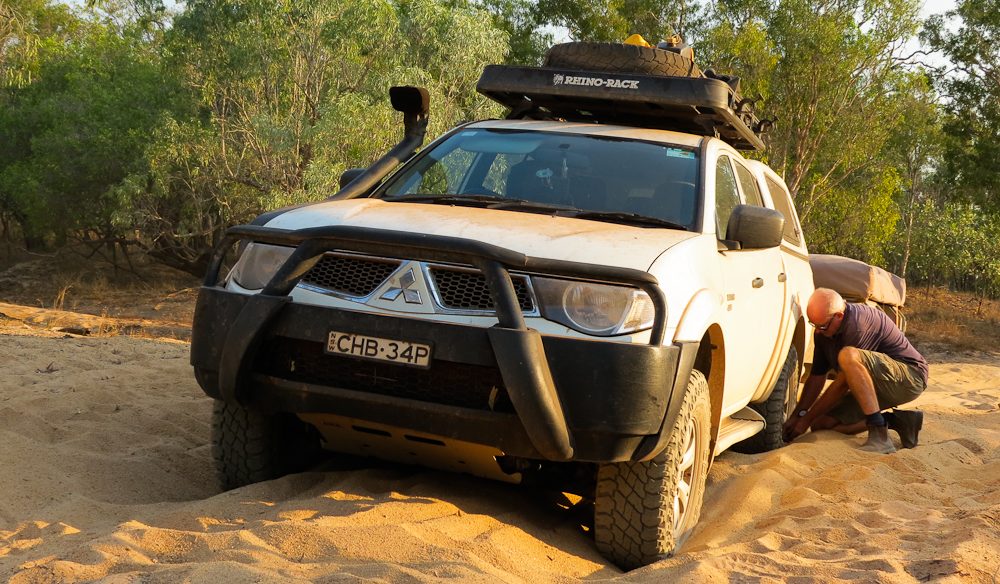
Deep sand means it’s time to lower tyre pressures (photo: Lee Atkinson).
2. To tow or not to tow?
The number one mistake most people make when choosing whether to buy a caravan, motorhome or camper trailer is to think in terms of what it will be like to live in, rather than where they can take it. If you’re planning to spend most of your time on main roads and want to stay in towns or caravan parks, a caravan or motorhome is a great option. But if your idea of a good time is taking the roads less travelled and getting out into national parks and wild places a camper trailer or a roof-top tent is a better choice. Bigger is not always better. There’s an exponential relationship between the size of your caravan or trailer and the extent to which you can get off the beaten track.
3. Before you go…
If you’ve never been outback or off-road before sign up for a 4WD training course. It will teach you how to use the vehicle to its full potential, how to get yourself out of tight spots and, most importantly, how to use recovery gear. Google ‘4WD driver training’. Same goes for towing: not only do you get plenty of time, and traffic-free space, to learn how to manoeuvre and reverse park your vehicle with a caravan or trailer in tow, you’ll also pick up lots of technical and safety information and handy tips. Tow-ed operates courses in most capital cities and regional centres and will lend you a van if you want to learn before you buy.
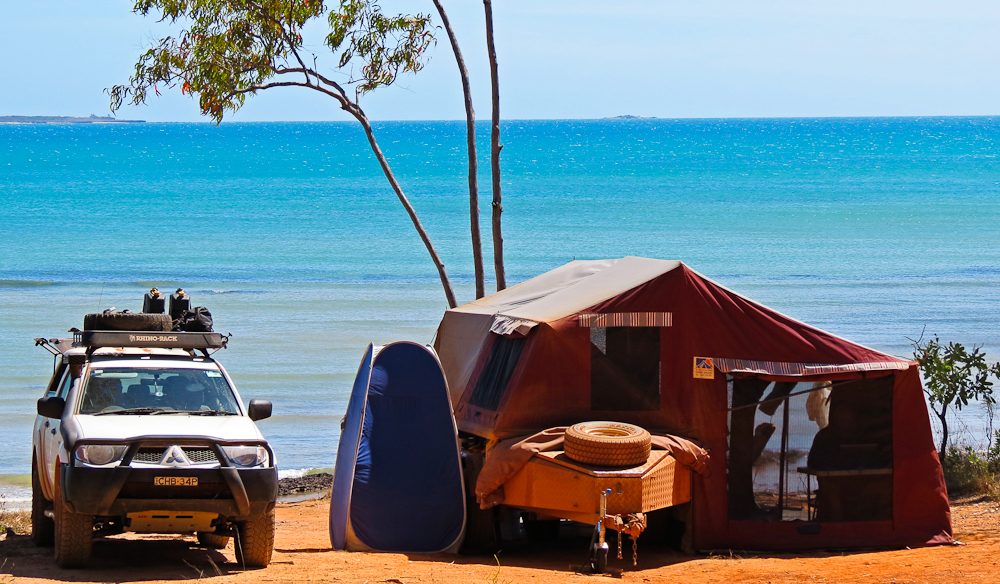
Colourful campsite, Rainbow Cliffs, Arnhem Land (photo: Lee Atkinson).
4. What tools do you need?
A basic tool kit should include a jack, jacking plate and wheel replacement tools, spare tyre, fire extinguisher, emergency fuel supplies (if heading off the beaten track), engine oil, coolant, jumper leads and spare radiator hoses and fan belts and the tools you’ll need to replace them – check out YouTube for DIY tips and bush mechanic lessons. Don’t even think about leaving home without ultimate get-out-of-jail repair kit: cable ties, gaffa tape and fencing wire – with these you can fix just about anything.
5. Getting out of trouble
Getting stuck is inevitable when you’re travelling off the beaten track. You can spend a fortune on fancy recovery gear but there are five things you really can’t do without: we took a pair of Maxx Trax ramps, which you put under the wheels when you’re bogged in sand or mud. They give the tyres something to grip and, as a rule, will launch you out of trouble easily. We also had a long-handled shovel for digging and a snatch strap for those moments when all else failed – all we needed then was somebody else to come along to pull us out, but it was never used. The best way to not get bogged in the first place is to drop tyre pressures to 20psi or less, so we also carried a quality air compressor and an accurate pressure gauge.
6. Essential kit
Never travel without a first aid kit and always carry extra drinking water. Mobile phone coverage can be non-existent in the outback. Hire (or buy) a satellite phone so you can call for help if needed. Some tourist information centres in remote areas have sat phones you can hire, or visit Satellite Hire or Rent a Sat Phone .
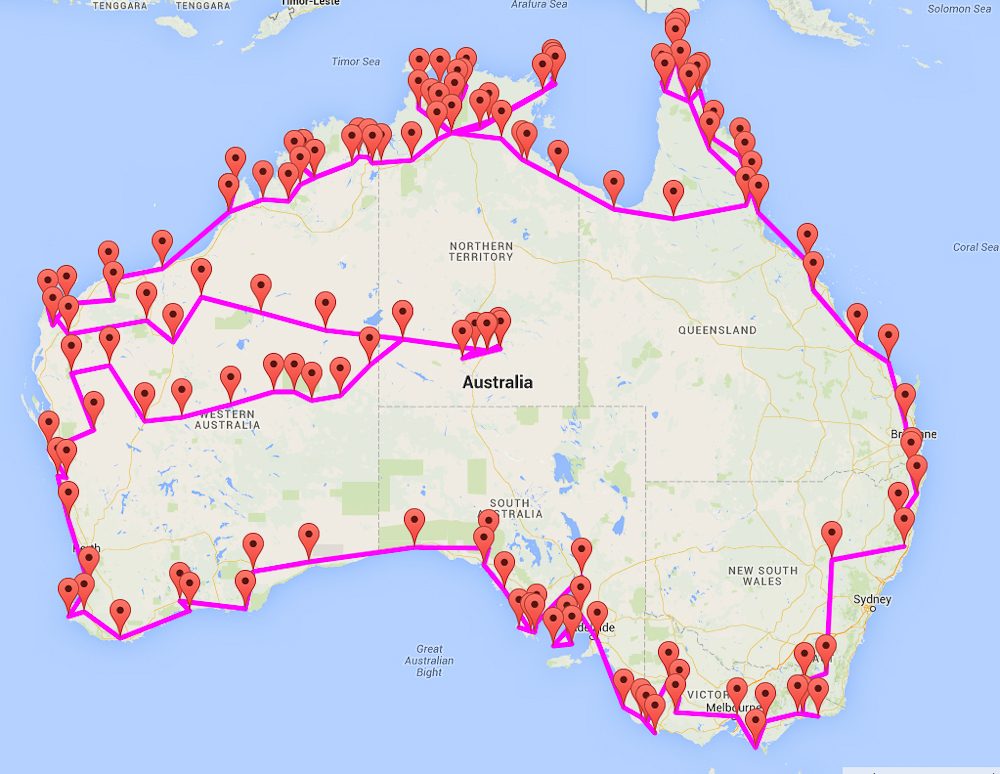
Lee Atkinson’s Big Lap map.
7. Map it out
Fighting over which is the right way to go is a major cause of holiday (and marital) breakdown. Don’t rely on the mapping app on your phone – invest in a good GPS. We used Hema Navigator, which features off-road tracks as well as major highways.
8. Keep in touch
These days you can get most of your bills, banks statements etc electronically, which means you can keep the home fires burning relatively easily. Skype is the best thing ever for keeping in touch with friends and family for next to nix. We carried laptops and a 4G mobile wi-fi modem which connects up to 10 devices. Telstra’s the only network that consistently works outside of capital cities.
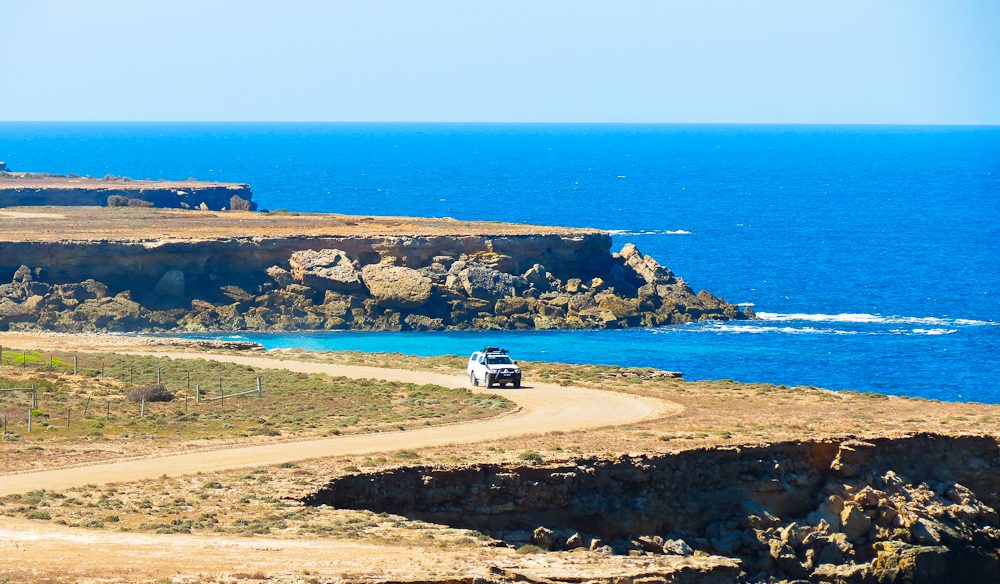
Coast hugging, Troubridge Point, Yorke Peninsula, SA (photo: Lee Atkinson).
9. Where to go when
Clockwise or anti-clockwise, that’s the million-dollar question when you’re about to head off on the Big Lap. Whether you turn left or right out of your driveway depends on when you go – if it’s summer, head south, if it’s winter, head north or aim for the red centre. The wet season, which cuts roads and closes national parks anywhere north of the Tropic of Capricorn, can be anytime from November through to May, although it (usually) really only starts to rain in mid to late December and can be all over by April.
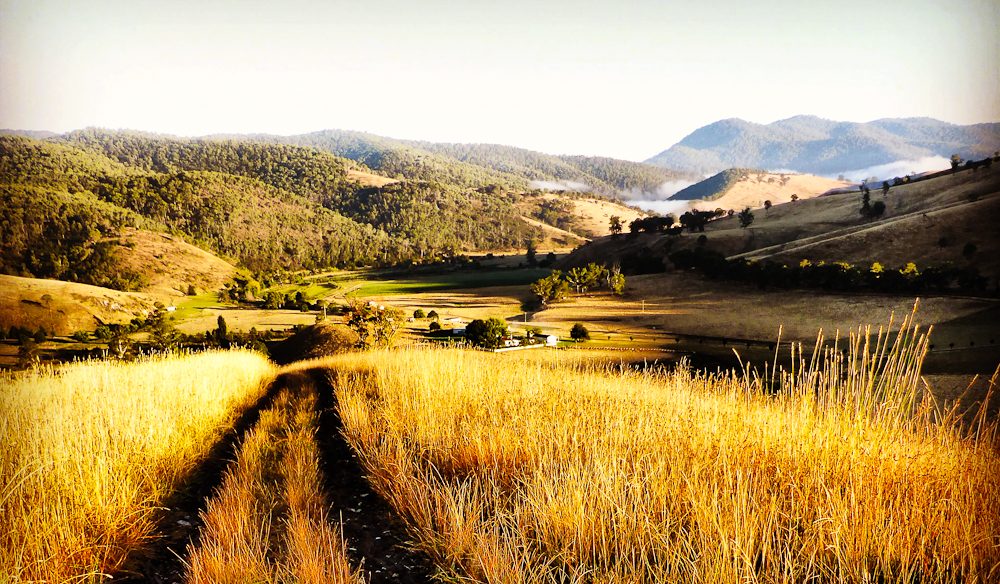
The back way, Gippsland, (photo: Lee Atkinson),
10. How long will it take?
How long have you got? Know that however long you go for, it won’t be enough – Australia’s a big place and you could spend a lifetime and still not see it all. On the other hand, you’d be amazed at how far you can go in just four weeks. We spent 42 weeks on the road, and didn’t go where most do go, but did go where many people don’t.
11. How much will it cost?
Everyone’s trip is different, depending on what you drive, where you go, where you stay and what you eat and drink. We were in a 4WD and towing an off-road camper trailer. In terms of day-to-day expenses we averaged just under $150 a day, including fuel, camping fees and the occasional night in a pub if the weather was foul, food and alcohol – we probably could have got that down a little if my partner was a better fisherman, and if I’d chosen cheaper wine, but hey, life’s too short!
12. Can I take my dog?
Many caravan parks will accept well-behaved pets on a leash, but always check before you book rather than on arrival. Pets are not allowed in national parks, even for day visits or picnics. If you want to bush camp with pets, choose state forests instead.
You can read all about Lee’s epic road trip in her book, The Big Lap .
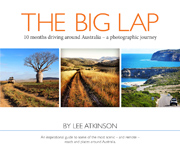
The Big Lap by Lee Atkinson.
“We took the road less travelled whenever we could, camping in national parks and other wild places where few other travellers go,” says Atkinson. “We found some truly amazing places and saw some fantastic things, and this book is the result, a showcase of some of the most scenic spots in Australia.” Featuring hundreds of beautiful images, the book is the pictorial diary of her journey with detailed captions telling the stories behind the images. The Big Lap costs $35, (including postage), from ozyroadtripper.com.au
LEAVE YOUR COMMENT
Cancel reply.
Save my name, email, and website in this browser for the next time I comment.
Comments (14)
Great tips, thanks for sharing.
No worries, Ian. Is there a Big Lap in your future?
Any tips for solo female travellers doing The Lap?
Hi Jill, Lee recommends: “sat phone no.1 thing for safety. Really use commonsense if camping alone in remote places. And know how to change a tyre. Best of luck on your Big Lap. Let us know how it goes. Cheers,
Kimberley ! Love it! Best holiday ever!!
Great write, Four of us planning a full lap trip, which in google maps i calculated roughly 20,000 kilometers. Where to hire the camper trailer and 4WD ? any reference will be helpful. and what time of the year is better for the round trip, which we plan to start at melbourne, canberra, sydney, brisbane, Seisa QLD, Darwin NT, perth, adelaide and end in melbourne. any suggestions will be great.
Big lapping it as we speak… 6 weeks into our 12 months. I totally agree that its common to make the mistake of picking a van for the inside rather than where you can go. Next time I’d love to have a off road option as we’ve already had to miss out on some amazing spots (but with a 7 month old baby size and comfort won this time around so we opted for a big family caravan).
To anyone thinking about it, just make it happen.
You definitely rock the road Lee. You are certified traveller touring around Australia for 10-months. For sure your books defintely has lots of amazing stories with your travel. Need to have one, I been planning for a road trip for a week self-driving. Never done that before and your blog post helps me a lots how to prepare for a long drive.
I’m 63 and have always been interested in walking around Australia’s perimeter for charity, I’m fairly fit and just trekked Everest Base Camp. How long approximately do you think it would take if I don’t have to stop to long because of possible blisters, then maybe u might say how long is a piece of string
Good advice. I am planning a 100-day big lap trip August-November, counter-clockwise from Sydney. I live in the US, so I won’t be able to bring too many things on the plane. Things like ramps to get my car unstuck will have to buy in Sydney before I head out. But I will be bringing my tent. What kind of car should I get for good clearance? I DO want a 4Wd because I plan to do off-the-track places like Cape York and Gibb River Road.
Well said and interesting reading
Enjoyed reading your comments on “The BIG Lap”, have been planning a BIG LAP trip for sometime now and due to the pandemic here in Victoria it’s on hold for now. My wife and I are semi retired and looking forward to getting on the road as we are keen Caravanner’s and rough it campers, do you recommend storing a caravan at a caravan park to venture off the track? A good example might be leaving the caravan in Alice Springs and go camping at one of the gorges.
Thank you !for inspiring me to’Just do it!
Thanks for sharing such an incredible post. Very well written and contain important information on driving big lap.
You might also like
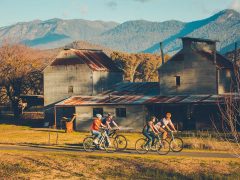
15 unmissable things to do in Bright, Victoria
You’ll find epic cycling trails, a vibrant dining scene, clutch of boutique wineries and a microbrewery with mountain vistas just three-and-a-half h...
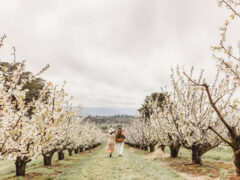
What’s on around Australia in September 2023
There’s no shortage of things to do in Australia. There are countless unique experiences to be had throughout Australia this month. Here’s what�...
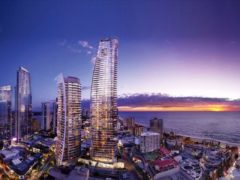
A run down of the Hilton Hotels, Australia
Everything you need to know about the Hilton in Australia, from the staff at Australian Traveller Magazine. There are 7 Hilton hotels located in Au...
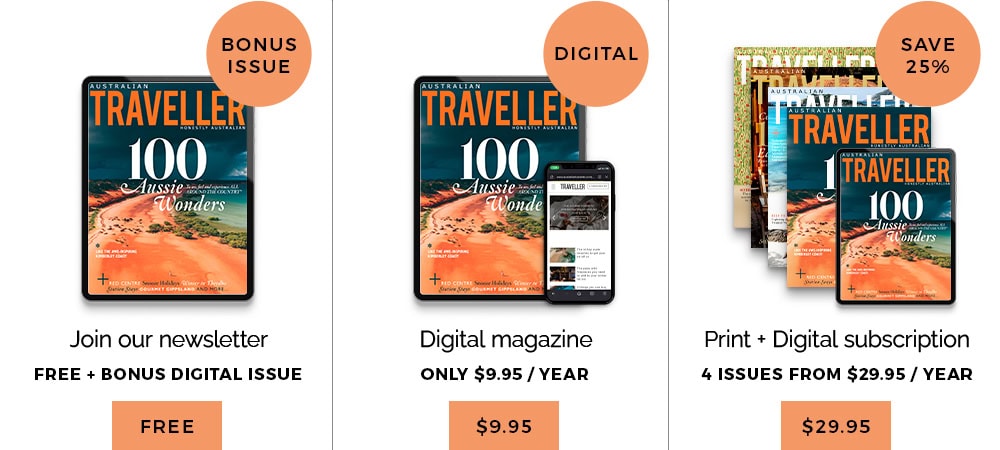
© Australian Traveller Media 2024. All rights reserved.
- Destinations
- Travel Tips
- Travel With Us
- Paid Travel Internship
- TTIFridays (Community Events)
- SG Travel Insider (Telegram Grp)

The Ultimate Australia Road Trippin’ Guide — 10 Itineraries For The Perfect Adventure of a Lifetime
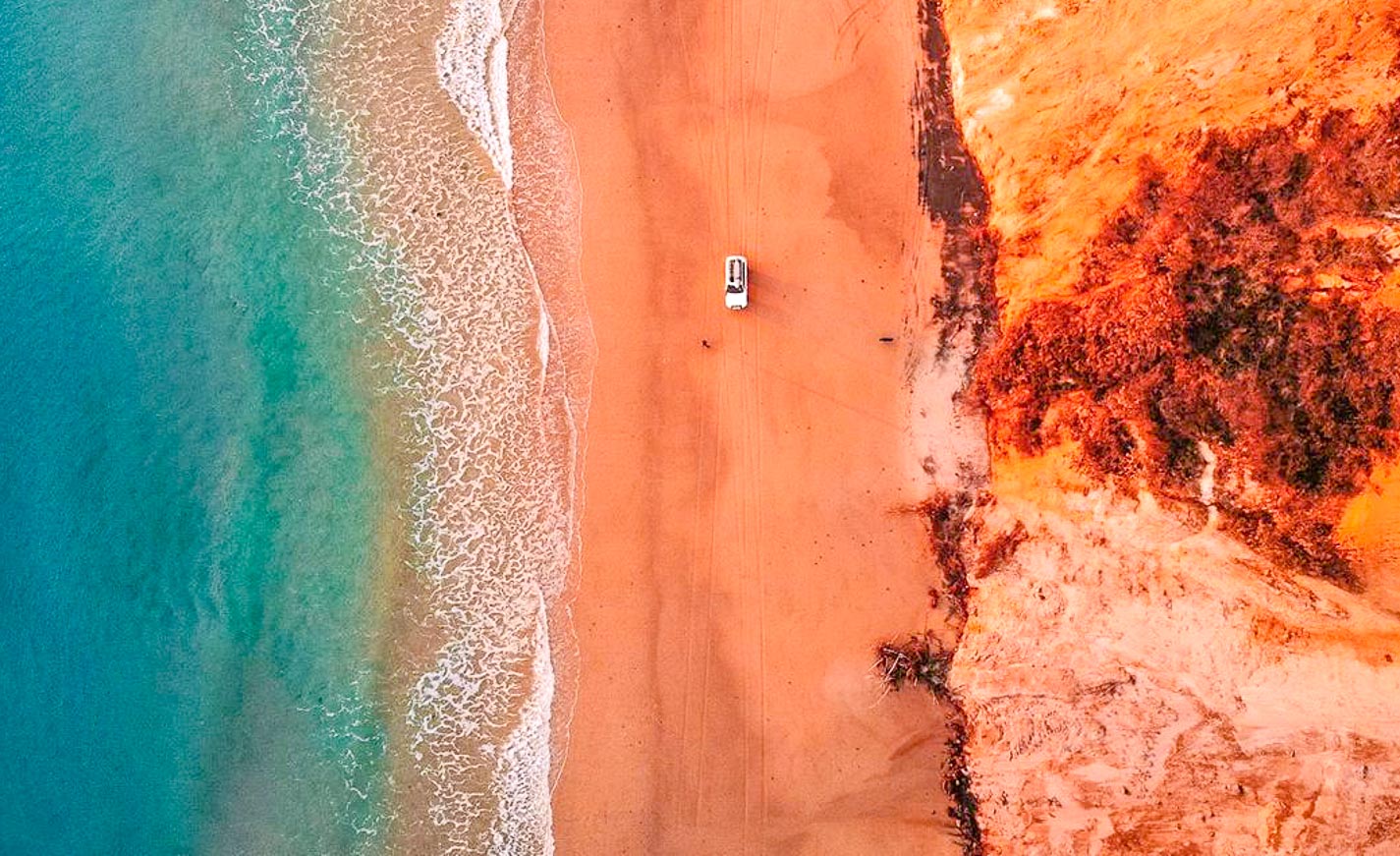
From cities to coasts and national parks to natural beauties, an epic road trip is the best way to explore Australia!
Recently, I rented a Blue SG car with my best friend and had a wild time driving 17km from Yishun to Hougang. It barely qualifies as a road trip, but it reminded me of my last trip to Australia . If you didn’t know already, it’s one of the sweetest places for a truly epic road trip!
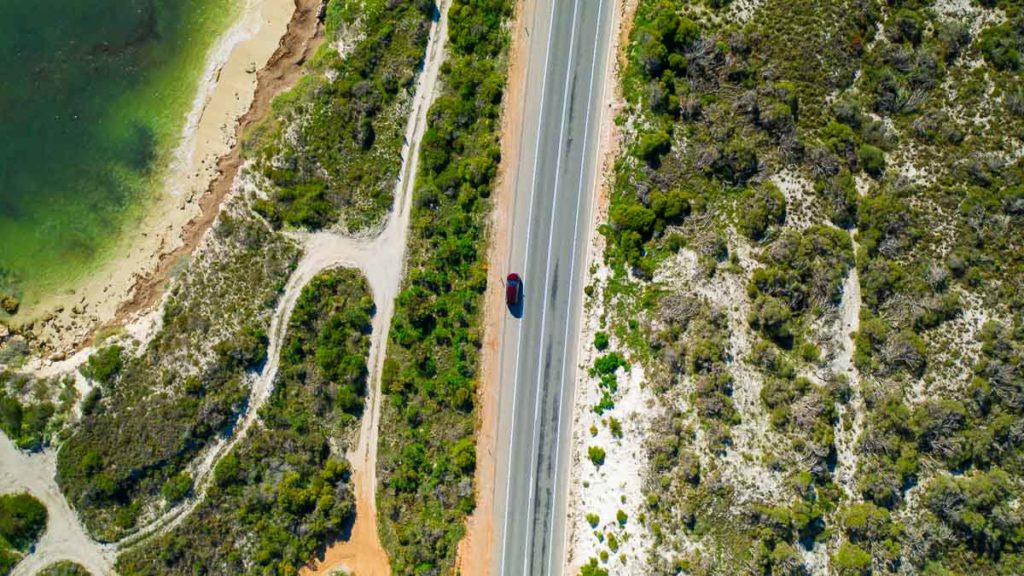
Across the country, there are tons of routes packed with scenery, action and adventure. And it’s friendly for beginners (a.k.a. driving noobs) too!
It’s a bummer we can’t travel right now, but I’ve found that an instant mood lifter is to get your ‘ revenge travel ‘ plans in order (i.e. a long post-COVID-19 trip that makes up for lost time) — so here are 10 of the best Australia road trips to go full throttle on once we get the green light! 🟢
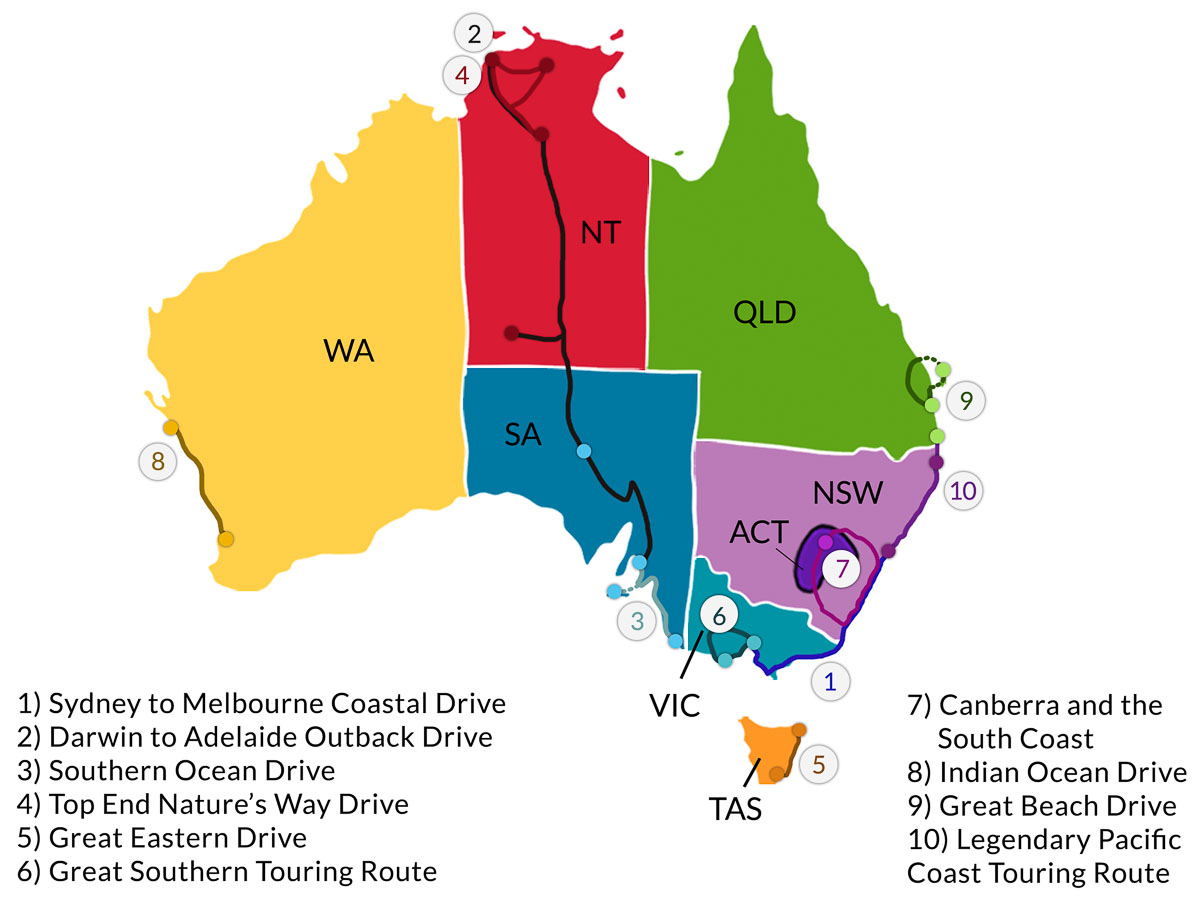
1) Coastal drive from Sydney to Melbourne
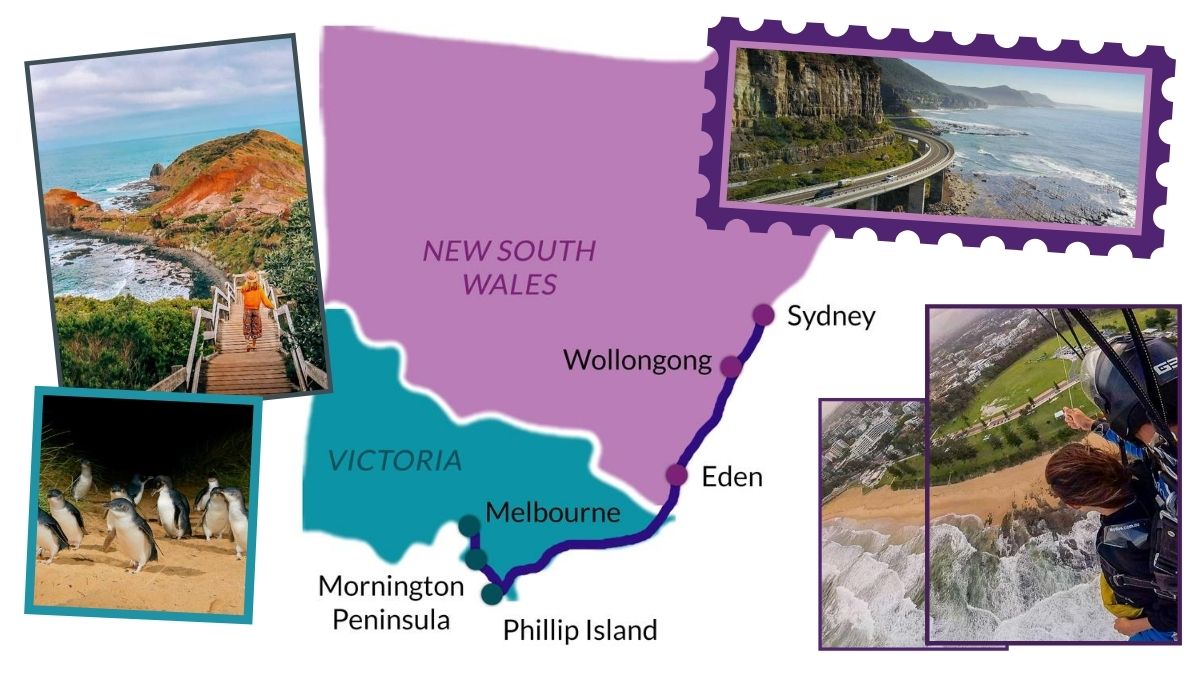
Journey time: 4–8 days (~1,300km) Starting point: Sydney Airport (~8hr flight from Singapore)
Between two of Australia’s largest cities, the coastal drive from Sydney to Melbourne (or vice versa) is sensational. Every inch of the way from New South Wales to Victoria offers quirky seaside towns, golden beaches and wondrous ocean views.
Part of the route includes the Grand Pacific Drive , a 140km stretch along New South Wales’s South Coast . It covers gorgeous attractions like the Royal National Park and the stunning Sea Cliff Bridge .
The drive from Sydney to Melbourne is perfectly beginner-friendly. There are many stops along the route whenever you need to stretch your legs.
Read more: Sydney South Coast Road Trip — 7-Day Itinerary From Sydney to Eden
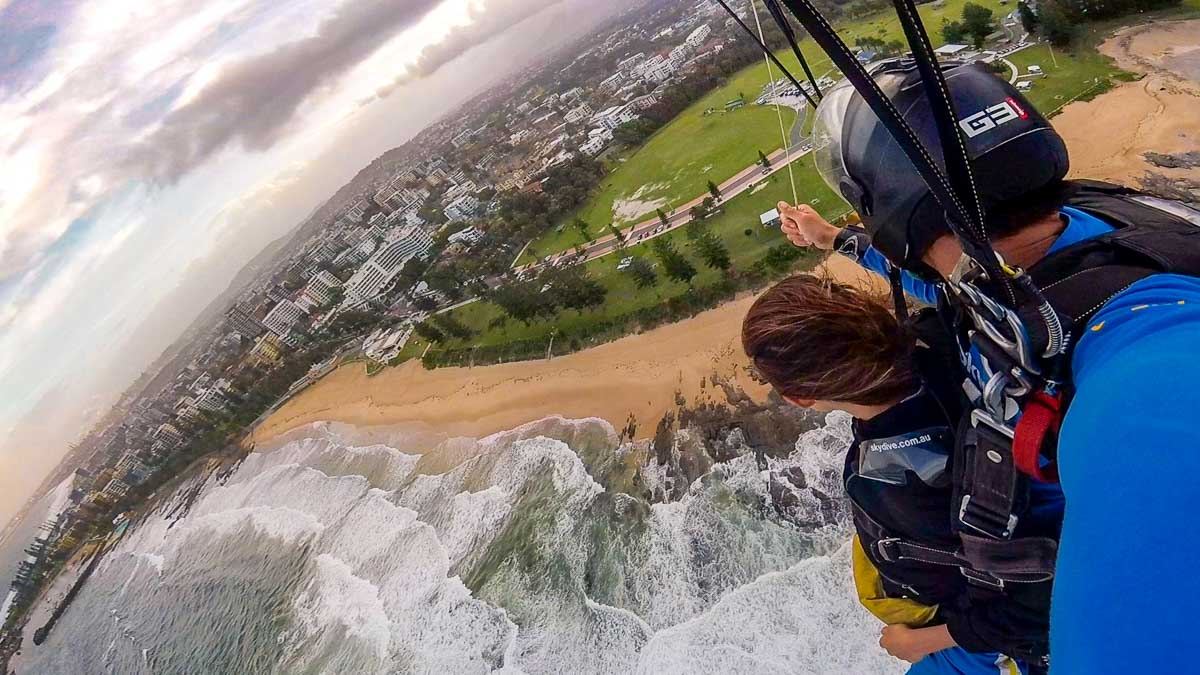
Now, onto the epic must-dos. First, sign up for some adrenaline-pumping skydiving over Wollongong . Above the magnificent coast, you’ll freefall at speeds over 200km/h, wayyy faster than you’ll ever go on your road trip!
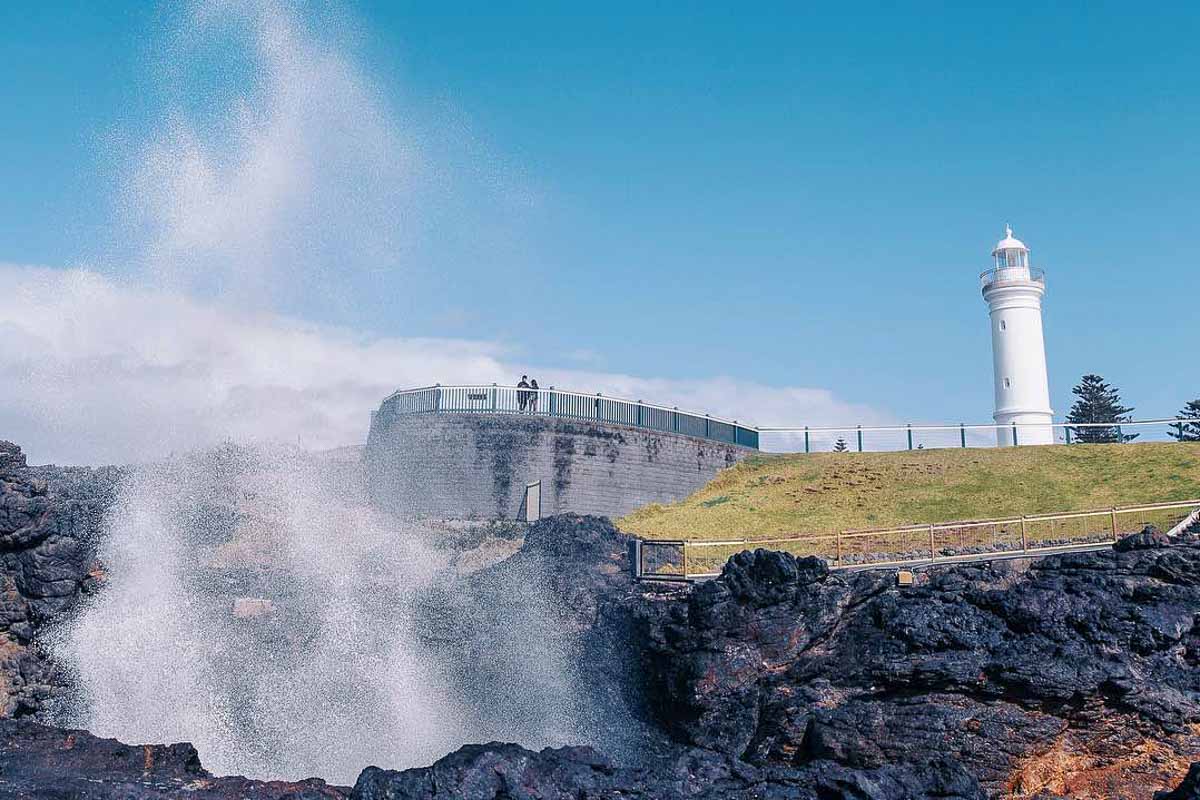
Photo credit: @kattgao via Instagram
After Wollongong, drop by the Kiama Blowhole and be blown away. Well, not literally, but there’s a good chance of getting soaked.
Alternatively, if you’re road trippin’ during summer, spend a night or two in Jervis Bay . You might be lucky enough to catch the phenomenal sea sparkles , or bioluminescence.
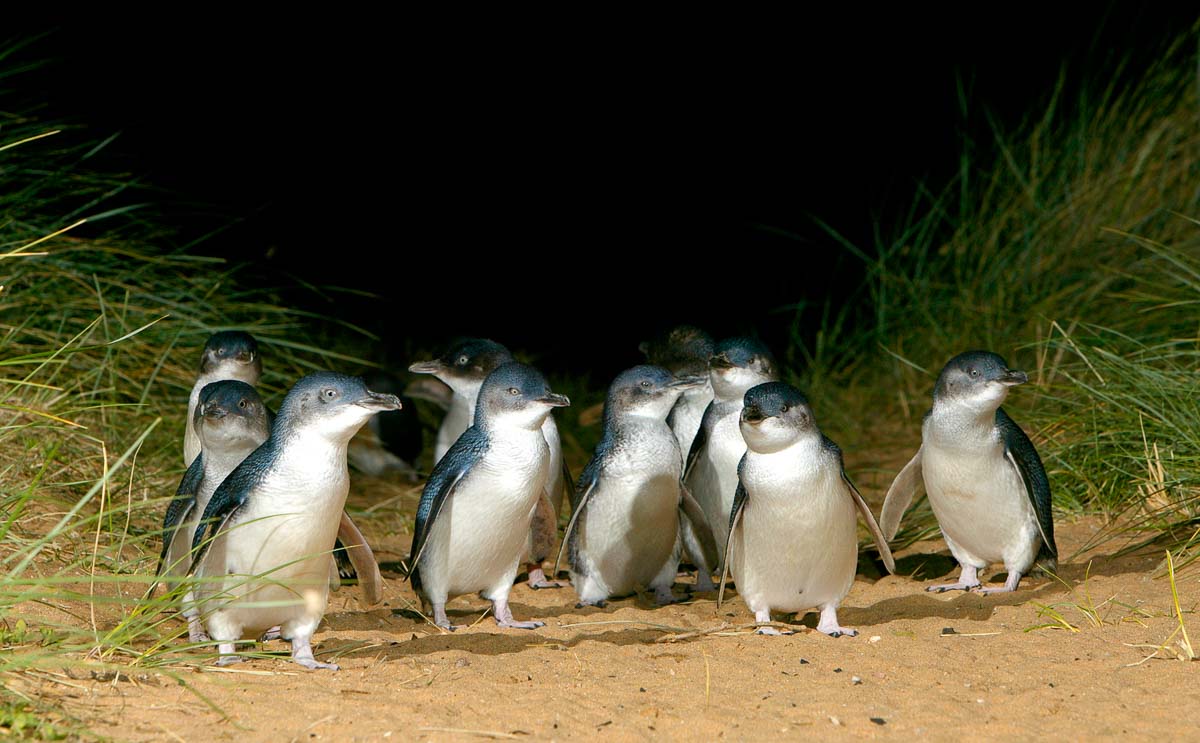
Once you’ve crossed the border into Victoria , get ready for even more wow’s (and aww’s ). For nature lovers, don’t miss the adorable Penguin Parade on Phillip Island . It’s a heart-melting treat watching these little fellas waddle out of the ocean and scuttle around the beach.
Check out other island activities like scenic walks and visiting the cuddly Koala Reserve too!
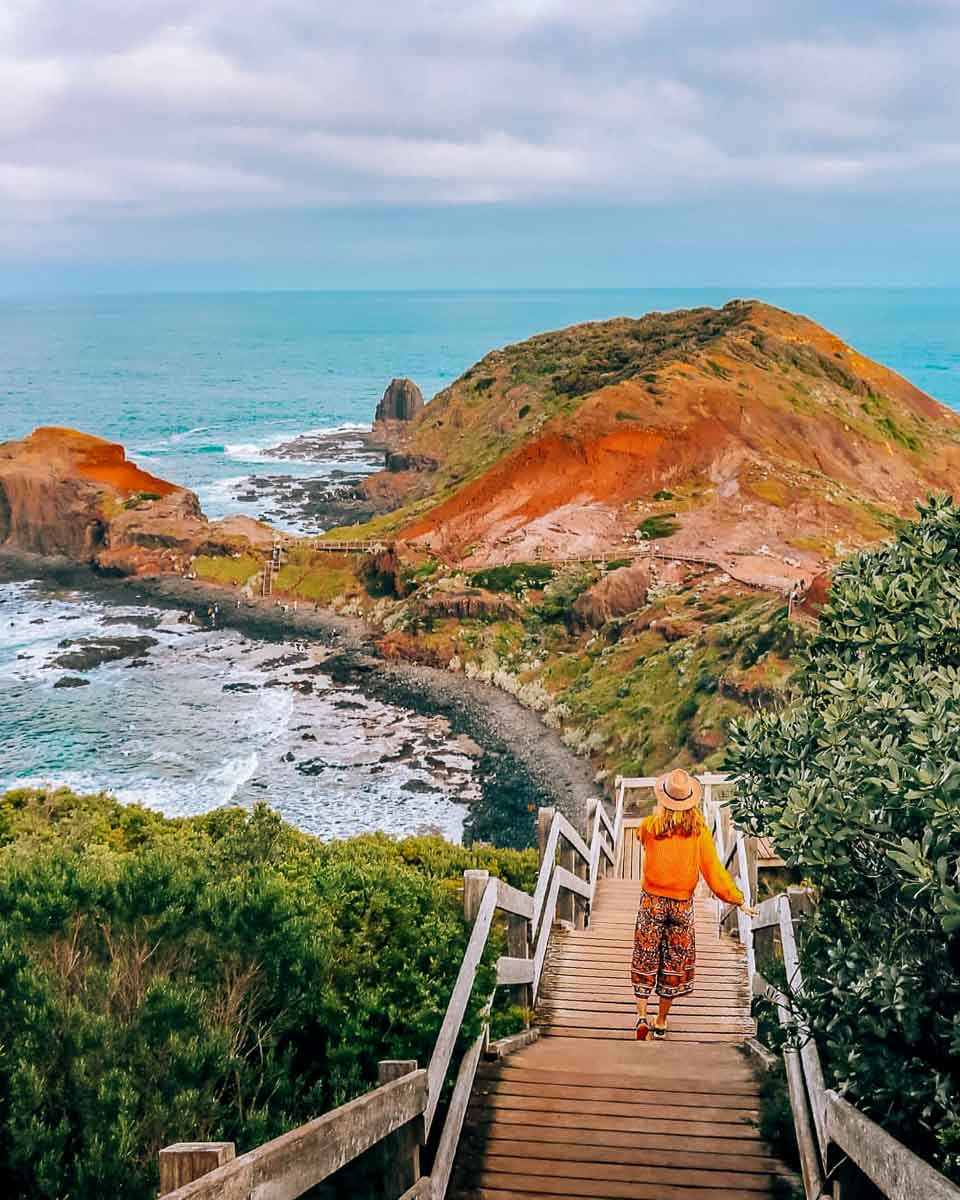
Photo credit: @helenabradbury via Instagram
Before you reach Melbourne , make one last stop at Mornington Peninsula . Here, you can drink deep at exquisite wineries and explore the stellar coastline at Cape Schanck (recommended by Chris Hemsworth 🤩).
Got another week to spare? Extend your road trip from Melbourne to Adelaide just next door! Alternatively, if you’re flying out from Sydney , make the return drive from Melbourne to Sydney via the inland route . After coasts and busy beaches, you can now enjoy the quiet countryside and historic gold-mining towns.
2) Ultimate Australian Outback road trip from Darwin to Adelaide
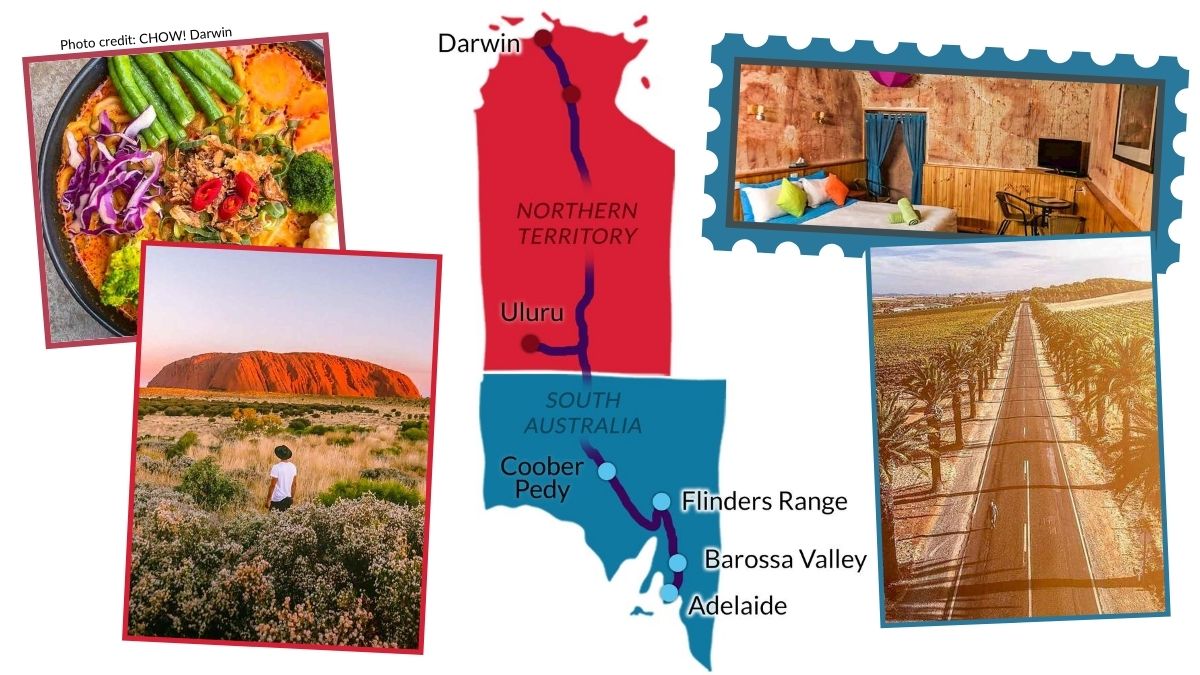
Journey time: 10–14 days (~3,000km) Starting point: Darwin Airport (4.5hr flight from Singapore)
Cutting across the vast outback, the drive from Darwin to Adelaide takes you through a series of wonderful and unusual landscapes. You’ll pass miles of red earth in the Northern Territory before reaching South Australia’s world-renowned wineries.
This adventurous route is more suited for seasoned travellers as you might be driving long distances (depending on your itinerary). Petrol stations are also few and far between, so plan carefully and refuel at every stop.
To eager first-timers, don’t let the long drives stop you from diving into this road trip! Just add a few more days for exploration and extra rest.
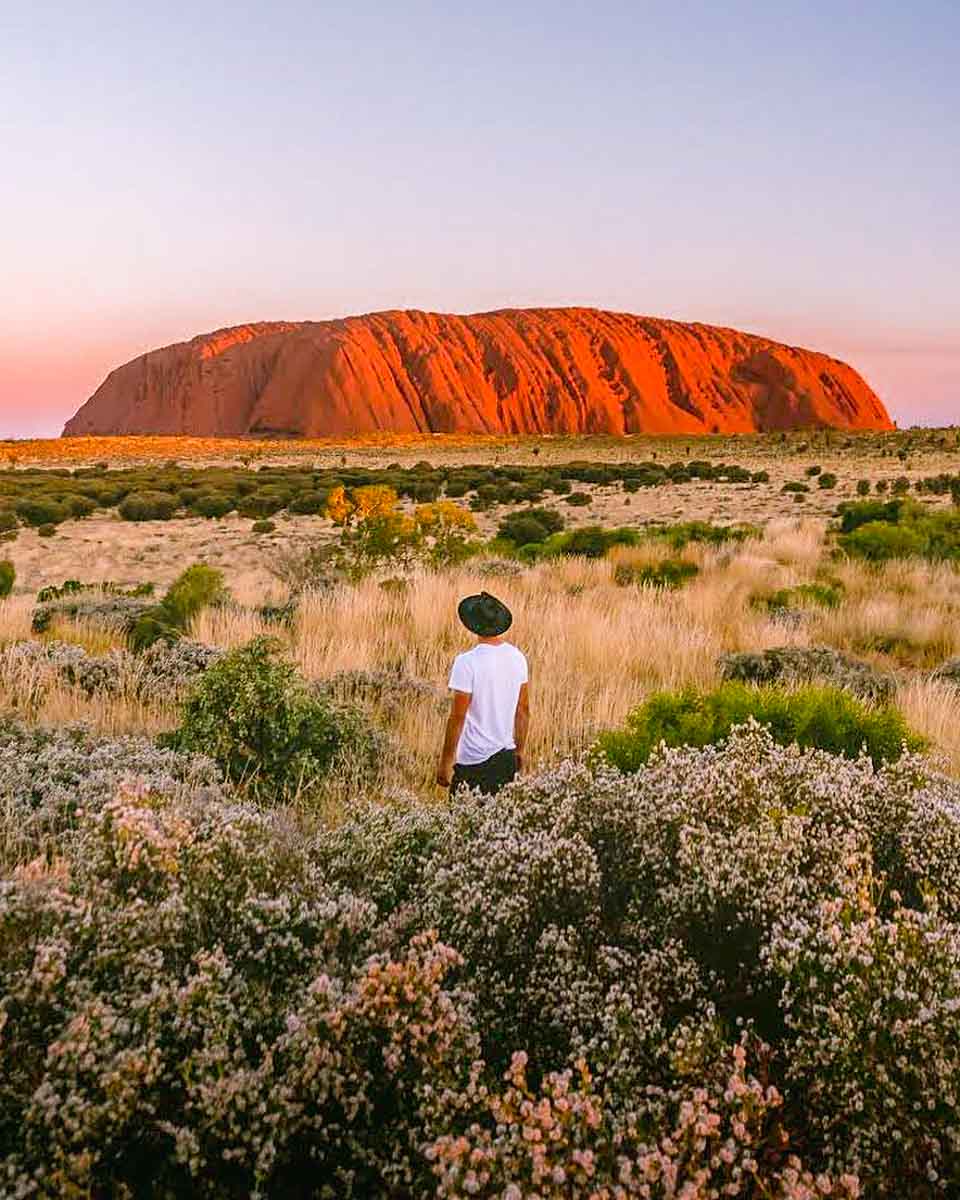
Photo credit: @exploreuluru via Instagram
Deep in the heart of the Red Centre , the hallmark of this outback road trip is the monumental Uluru . Get to know it your way — see it from above with a badass helicopter ride , or join a cultural tour and learn about the sacred land and Aboriginal culture.
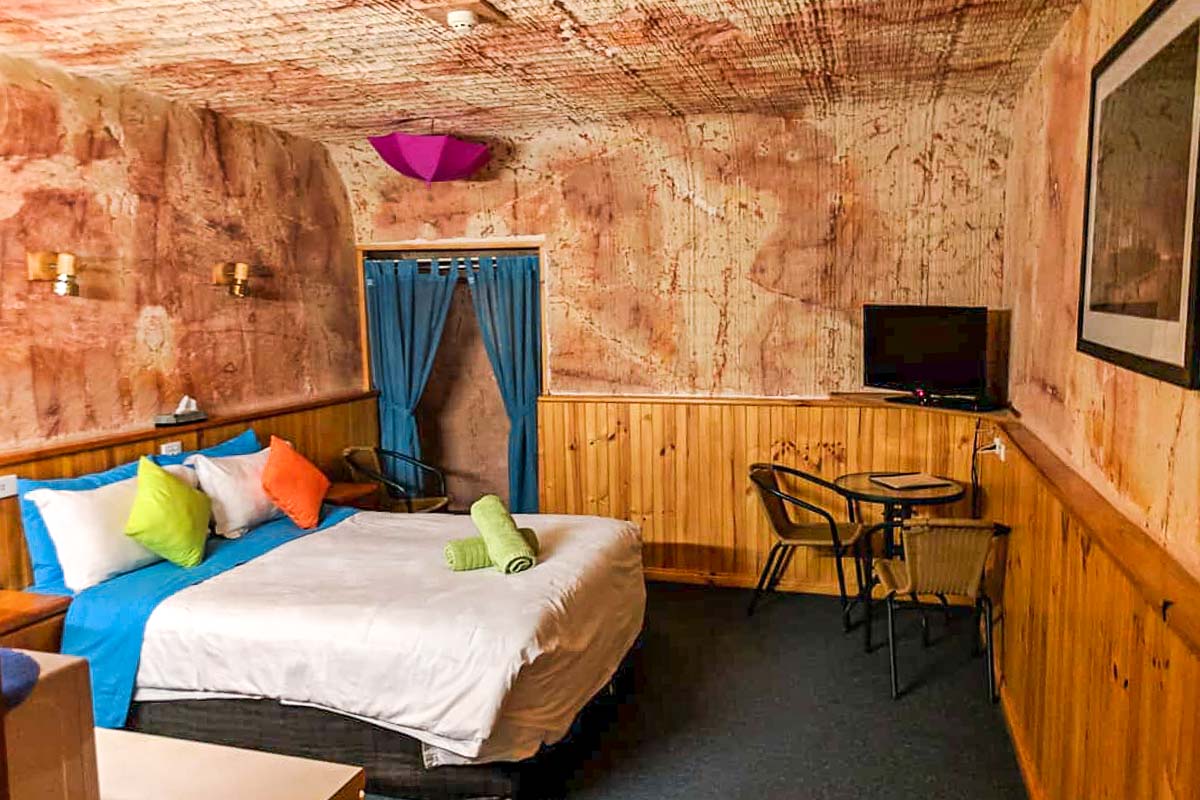
Photo credit: @nealjennings via Instagram
Eight hours away lies the strange town of Coober Pedy . It’s the opal mining capital of the world, but the show-stealer is that the locals live underground to avoid the scorching heat!
Staying a night here is a must. It’s not every day you get to live in a posh B&B carved out of natural sandstone, especially one located 25m below .
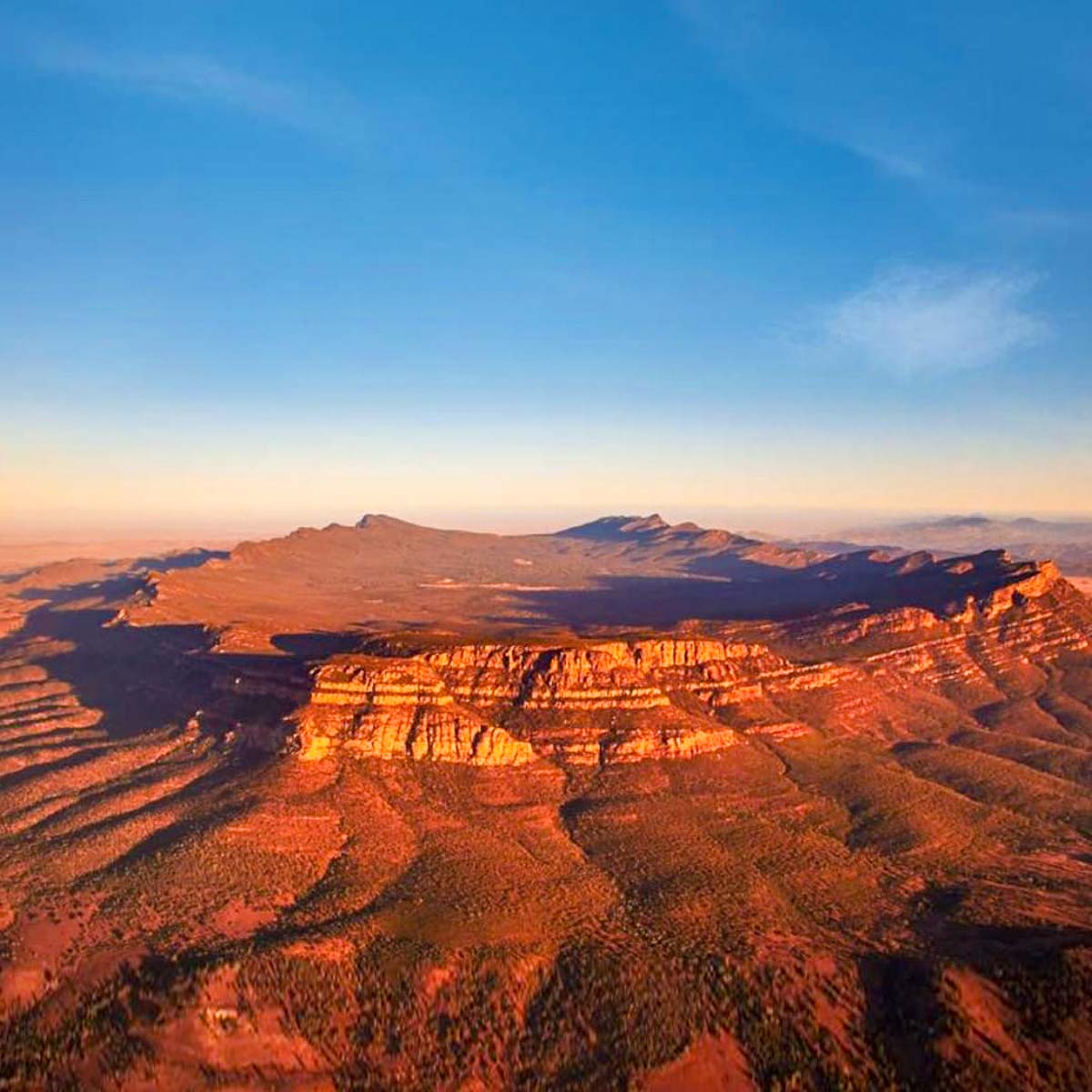
Photo credit: @alan.timms1 via Instagram
If you thought Coober Pedy was mind-blowing, wait till you hit the Flinders Ranges .
The national park is home to incredibly dramatic landscapes like Wilpena Pound , a massive bowl-shaped crater made up of craggy mountains. The best way to see it is through an exciting scramble up to its rugged ridges or a relaxing scenic flight .
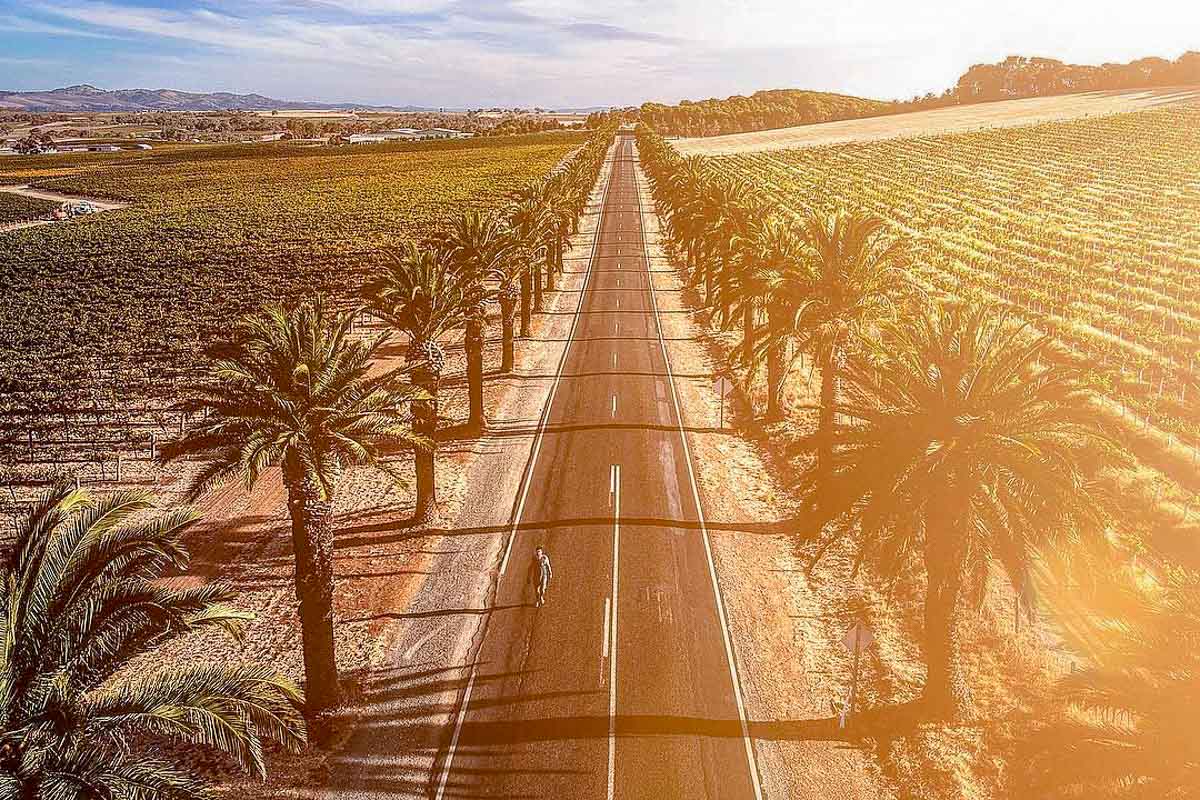
Photo credit: @ashhughesphotos via Instagram
After days of non-stop adventure, wine down in the Barossa Valley — reputed as one of the world’s greatest wine regions. There are over 150 wineries and 80 cellar doors, so take your time to swirl and sip Australia’s finest Cabernet Sauvignon or special Barossa Shiraz.
The excitement doesn’t have to end in Adelaide ! Not too far from the city, there are plenty of jaw-dropping coastlines that are ripe for exploring, which brings us to our next route…
3) Scenic South Australia road trip — Southern Ocean Drive from Adelaide to Kangaroo Island and Mount Gambier
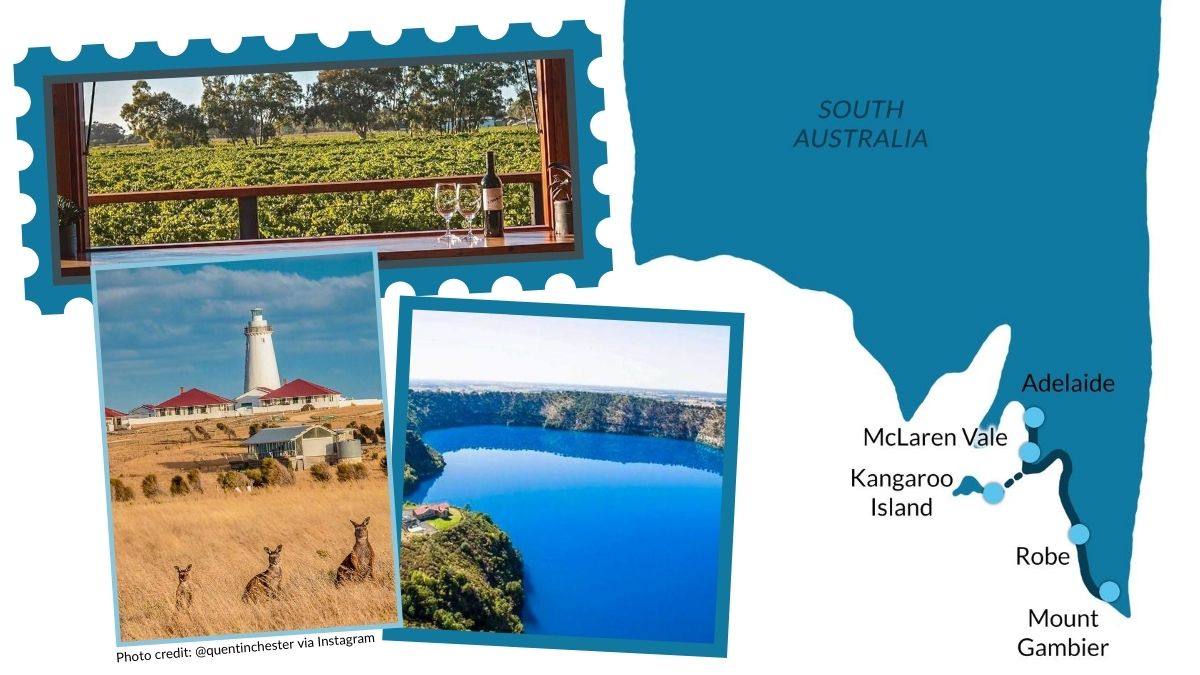
Journey time: 5–7 days (~500–1,200km) Starting point: Adelaide Airport (~7hr flight from Singapore)
With an abundance of coastal scenery, tasty wines and native wildlife, the Southern Ocean Drive is one of the loveliest, lesser-known road trips in Australia. In fact, some consider it a ‘sequel’ to Victoria’s Great Ocean Road drive (more on this later)!
The route is great for beginner road trippers as there are plenty of stops to pull over at. Plus, attractions are relatively nearby one another. It’s likely you won’t drive for longer than three to four hours each day.
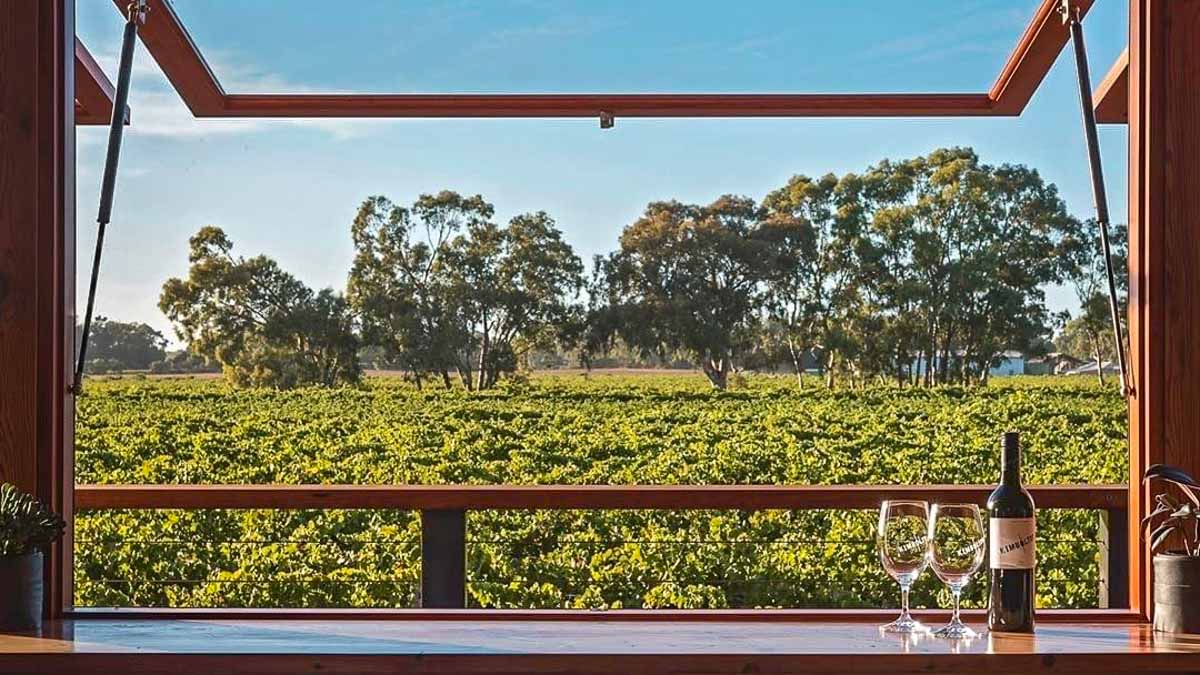
Photo credit: @officialfleurieupeninsula via Instagram
South Australia produces half of all the wine in the country, so there’s no excuse not to indulge! Make your first stop at McLaren Vale in Fleurieu Peninsula . It’s home to some of the world’s oldest grapevines, and serves the most delectable wines and local produce you might ever taste in your life.
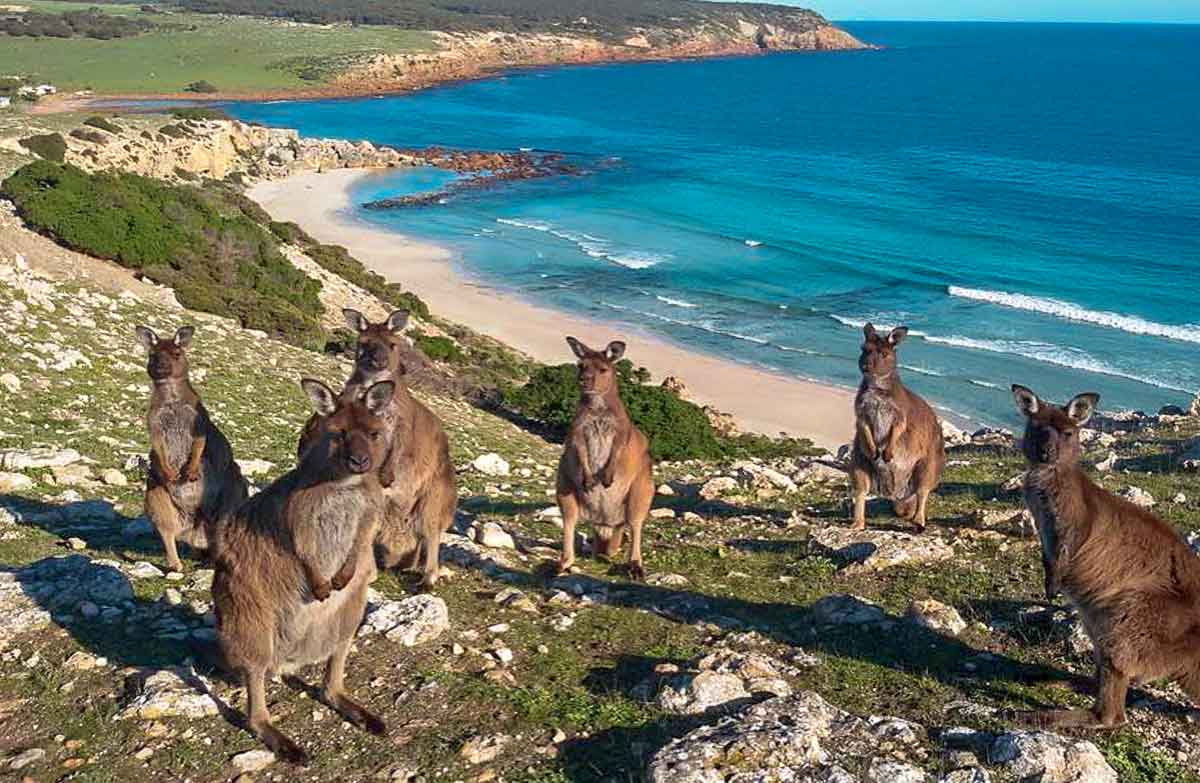
Photo credit: @promotemytown via Instagram
Nature and wildlife lovers would adore Kangaroo Island . A good part of it is protected in nature reserves, so it’s no surprise to meet wild ‘roos and see other wildlife roaming free!
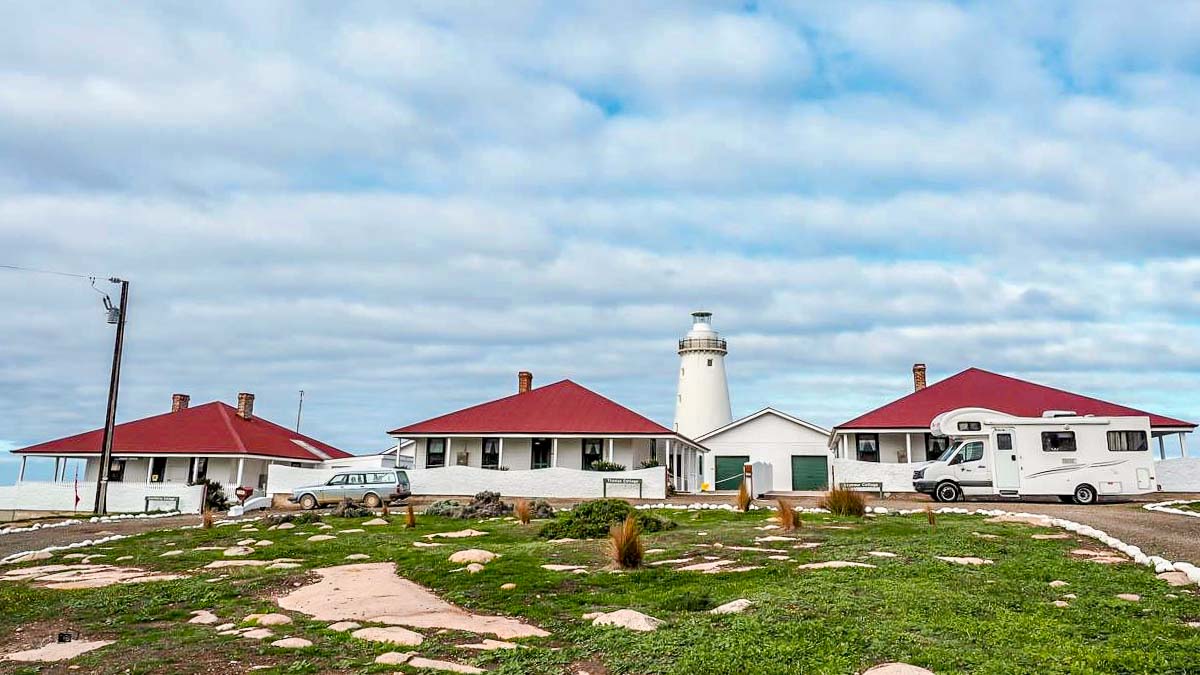
Photo credit: TripAdvisor
To make your Kangaroo Island experience more unique, stay the night in a quaint cottage by Cape Willoughby Lighthouse . You’ll enjoy a well-deserved package: Exclusive privacy, calming sounds of crashing waves, and a magnificent sunrise view.
If you only have a few days, keep the road trip short and explore Kangaroo Island fully. Otherwise, take a ferry back to the mainland and continue your coastal journey.
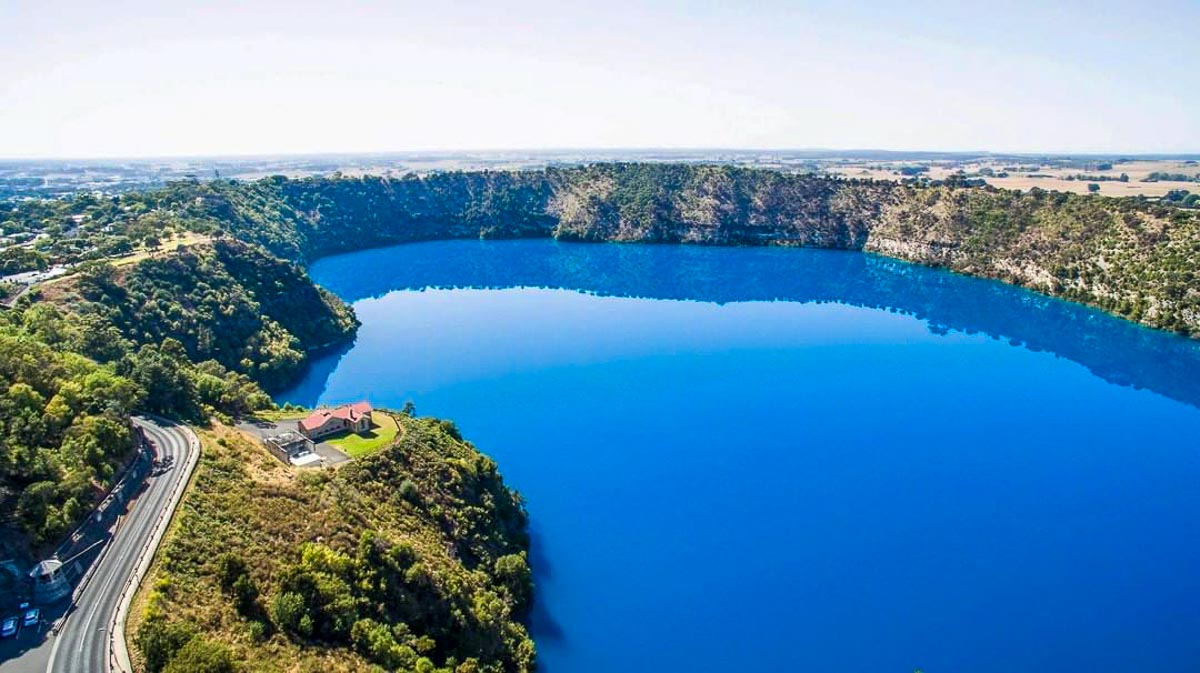
Photo credit: @discover_mount_gambier via Instagram
Situated along the Limestone Coast , Mount Gambier is a city built atop an extinct volcano. Its main attraction is the mysterious Blue Lake , a huge crater lake. From April to November, the water is a distinct greyish-blue colour. But once November rolls around, it transforms into a striking turquoise blue.
The Blue Lake is not permitted for swimming, but its smaller cousin is! Satisfy your urge to dip at the Little Blue Lake , a giant sinkhole filled with pleasantly cool waters. It’s free to enter, and makes an awesome photo spot too!
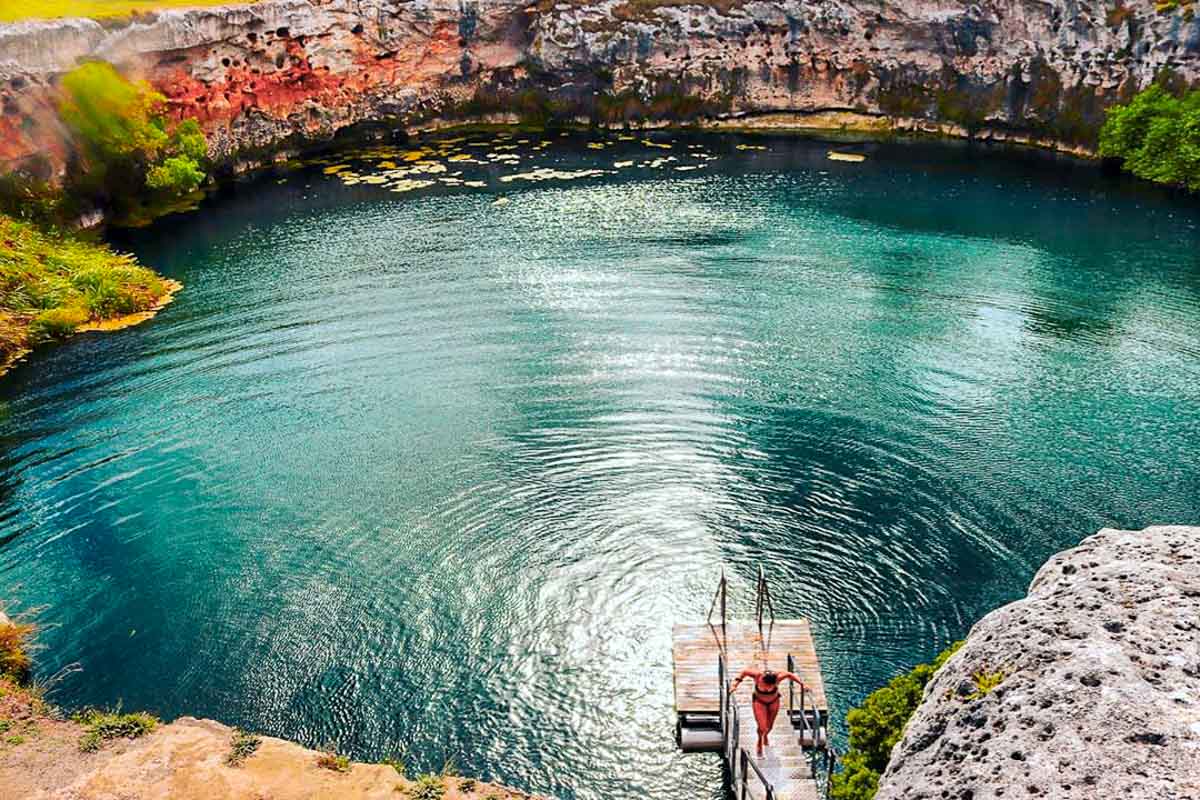
Photo credit: @sarahafindlay via Instagram
4) Northern Territory Top End Nature’s Way Drive from Darwin to Katherine
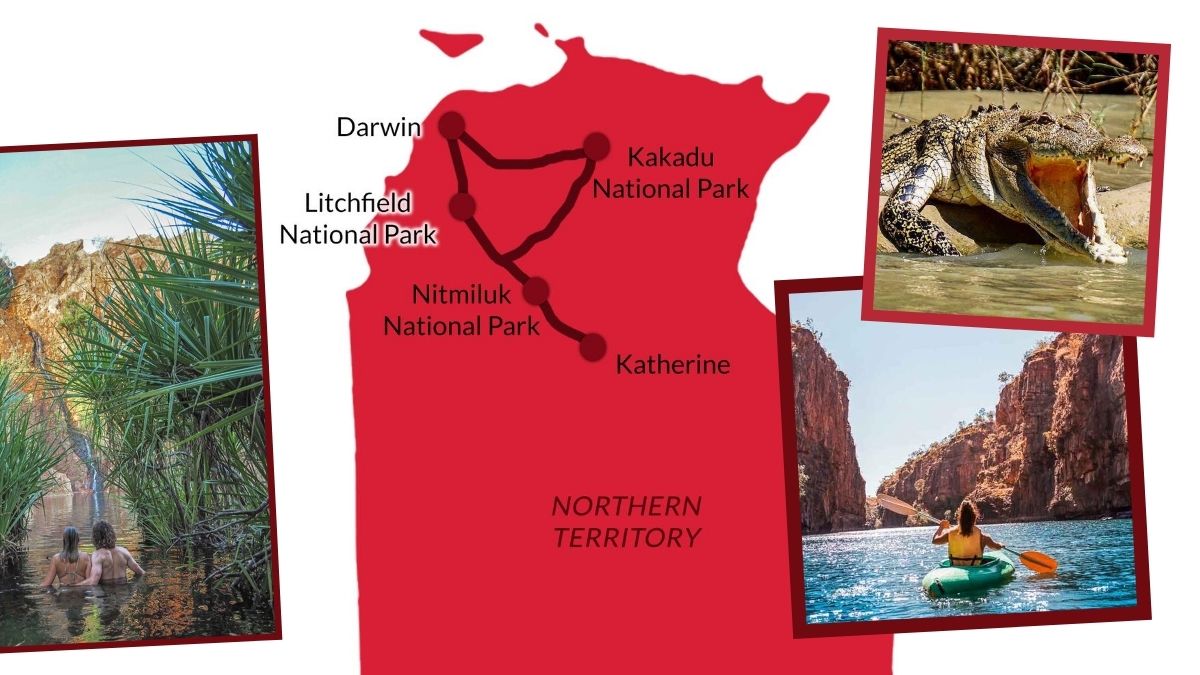
Journey time: 8 days (~900km) Starting point: Darwin Airport (4.5hr flight from Singapore)
Top End Nature’s Way features a fantastic mix of tropical wonders and the fascinating Australian outback. Peppered with spectacular national parks, timeless Aboriginal culture, and the charming town of Katherine — this triangular route is especially geared for outdoor lovers.
Adventurous as it may be, the drive from Darwin to Katherine is actually easy. Main attractions are about three hours from each other. Roads are also well-paved, so you don’t need four-wheel drives (4WD). What you do need, though, are your best hiking shoes!
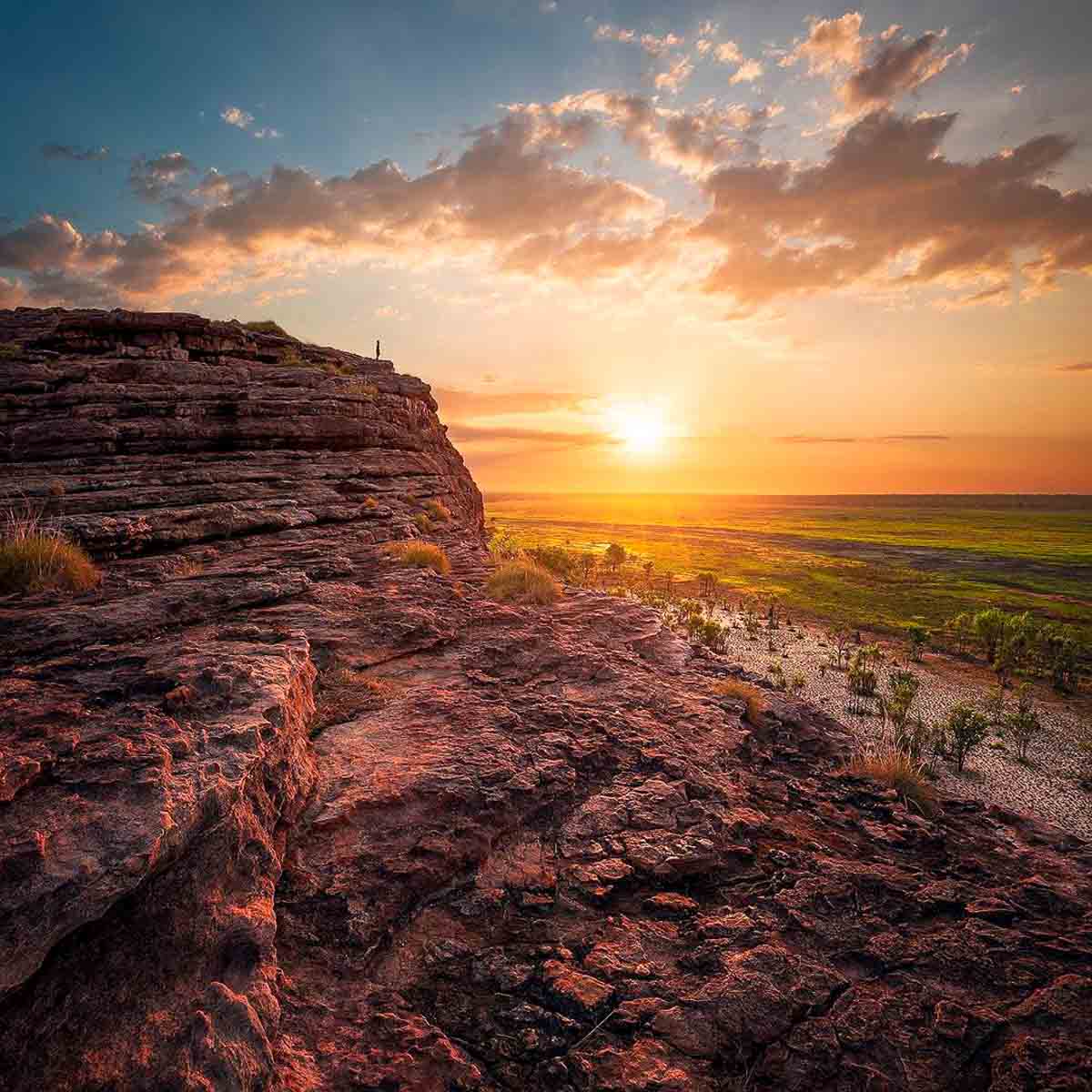
Photo credit: @_danieltran_ via Instagram
The first must-visit is Kakadu National Park , Australia’s largest. Take a walk through Burrungkuy (Nourlangie) , an ancient rock art gallery that showcases Aboriginal traditions. Or, pack your bathers and dip in the beautiful Gunlom Plunge Pool .
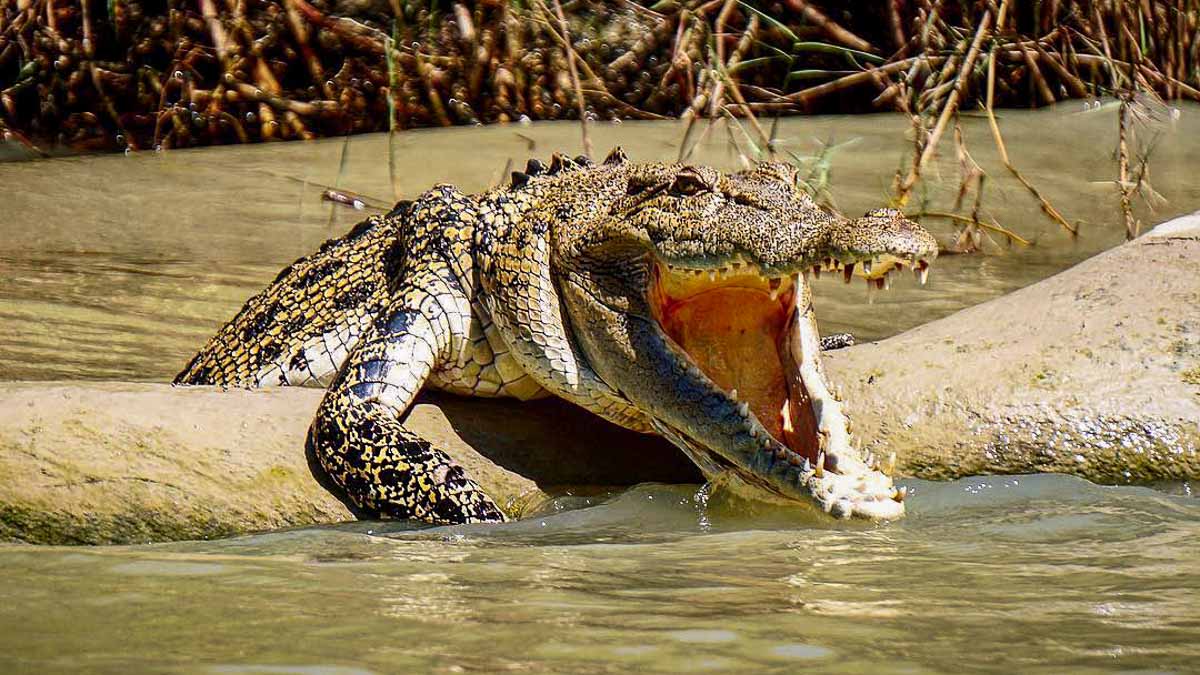
Photo credit: @traveling_yorick via Instagram
The huge park is also home to boatloads of exotic wildlife, including 10,000 crocodiles ! Feed your curiosity and join a croc-spotting cruise — you might catch these prehistoric beasts basking lazily in the sun, or silently stalking their next meal.
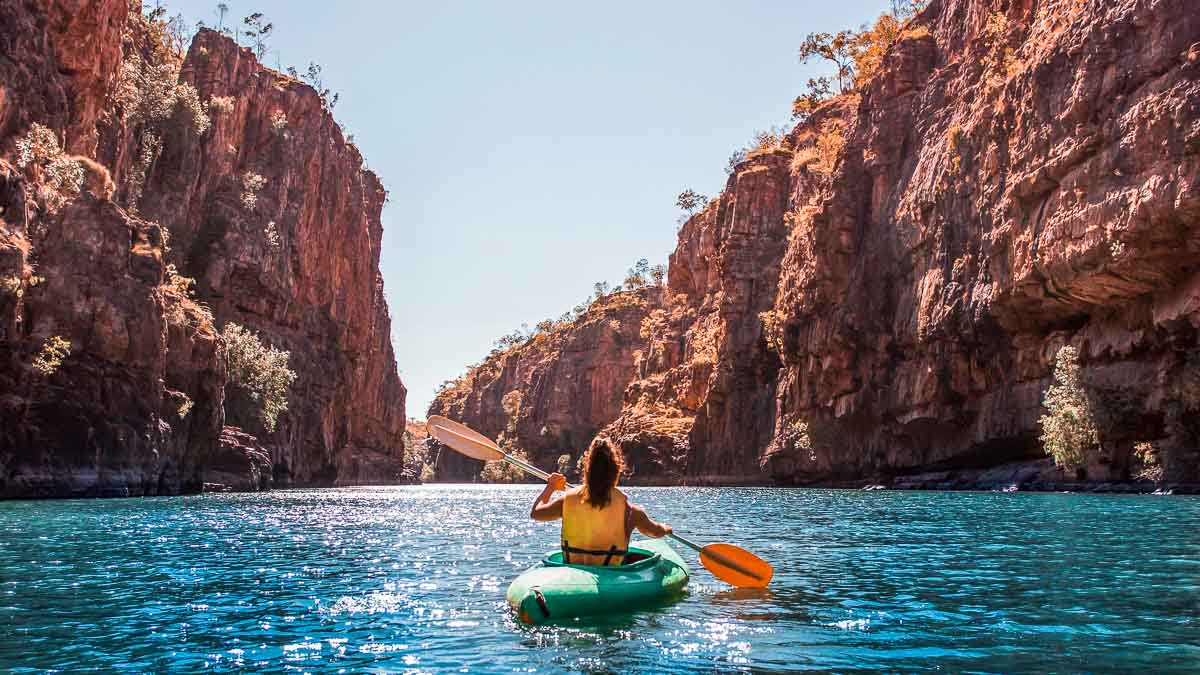
Photo credit: Tourism Australia
In Katherine, travellers usually make a beeline for Nitmiluk National Park , and it’s easy to see why. The highlight is the Nitmiluk (Katherine) Gorge , a deep sandstone gorge that transports you to another realm.
While cruises are available, enjoy a bigger thrill by hiring a canoe . During the dry season (May–Sep), you’ll get enchanting views while paddling through ancient landscapes.
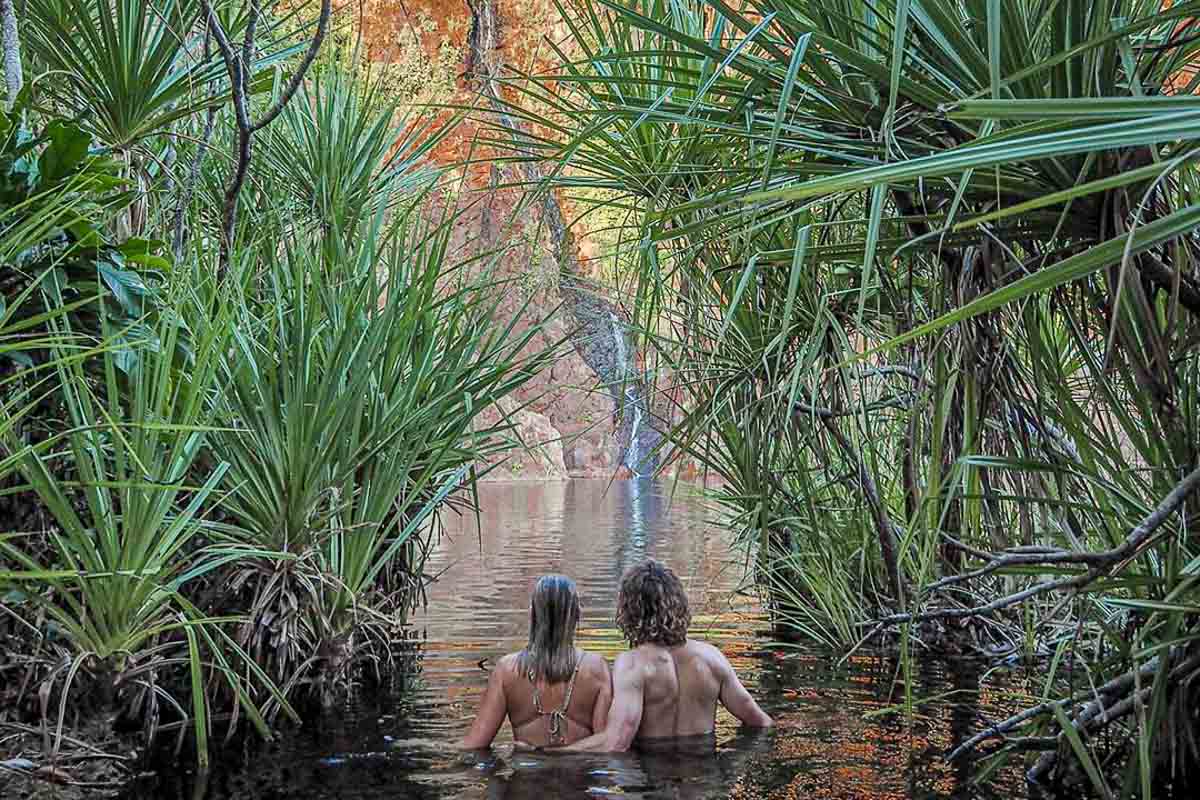
Photo credit: @fewdaysbetween via Instagram
Finally, after days of fast-paced action, cool off at Litchfield National Park on your drive back to Darwin. The park has plenty of lush swimming holes, great for refreshing soaks.
In need of more adventure? Fly down to Alice Springs from Darwin and explore the Red Centre Way ! The route snakes through mighty attractions like Uluru and Kings Canyon . Seasoned travellers can rent a 4WD and zip through Mereenie Loop , a dusty dirt road.
Read more: 40 Lesser-Known Things to Do in Australia Highly Recommended by Locals, Travellers and Celebrities
5) Grand Tasmania road trip — Great Eastern Drive from Hobart to Bicheno and the Bay of Fires
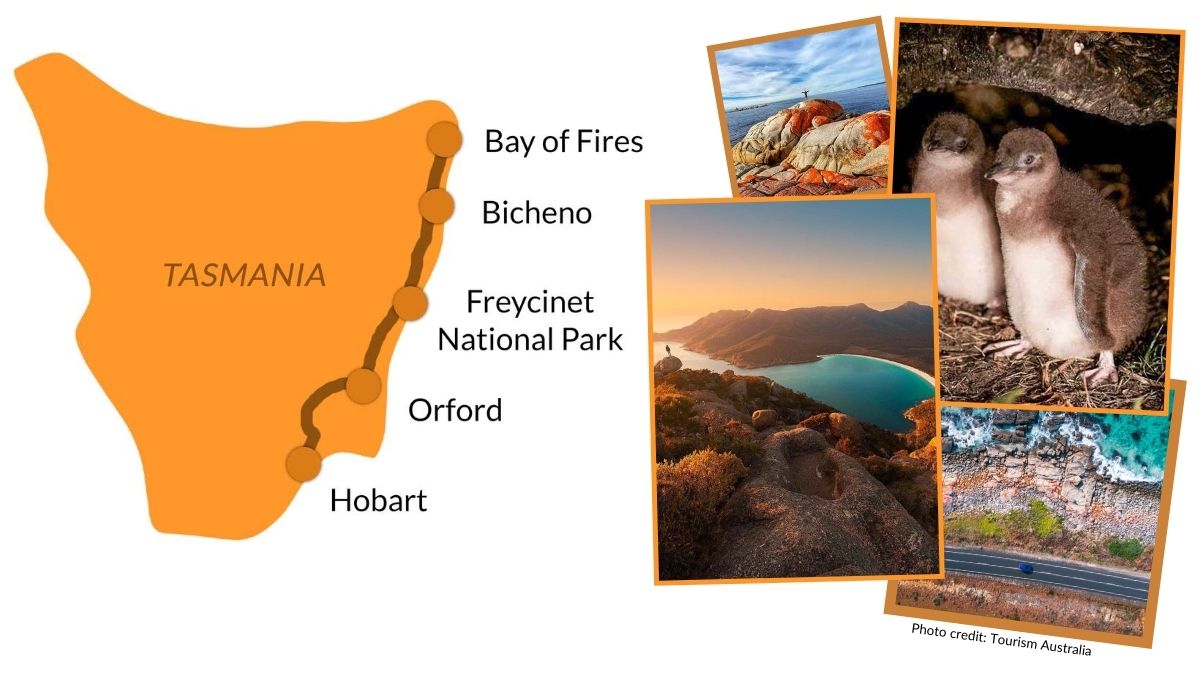
Journey time: 2–5 days (~300km) Starting point: Hobart Airport (~8.5hr flight from Singapore)
Whether you’ve got a week or a weekend, Tasmania’s Great Eastern Drive promises a road trip getaway that’ll clear your head. Expect breathtaking coastal drives, pristine beaches and some of the freshest seafood around.
The drive from Hobart to Bicheno is mainly on sealed roads and highways, making it suitable for both beginners and seasoned travellers. Plus, attractions are less than two hours from each other!
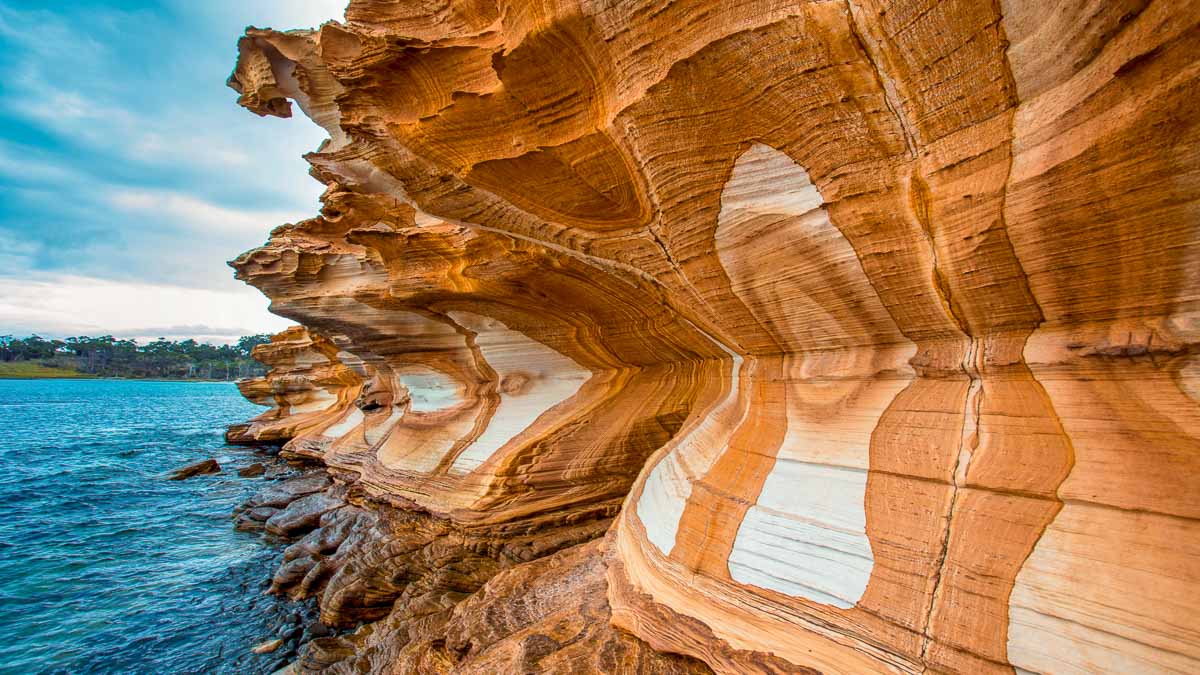
Photo credit: Maria Island Walk / Great Walks of Australia
Start your trip by disconnecting from civilisation. Take a 30-minute ferry ride from Orford to Maria Island . Hike to the Painted Cliffs , made magical by its bold swirls of earthy colours. The best time to view it is at sunset when the colours truly pop — just be sure you make it back to the ferry on time!
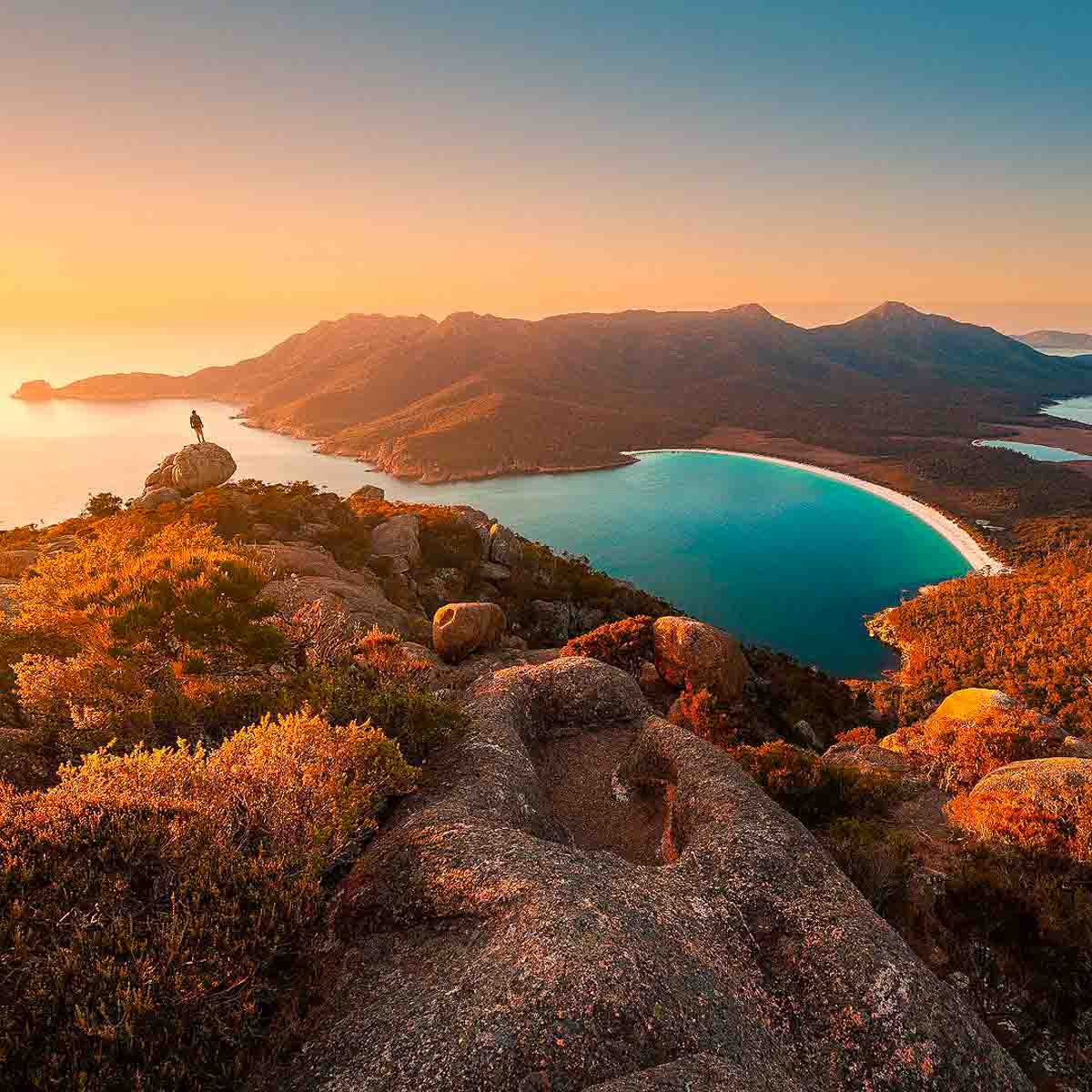
Photo credit: @itsworthashot via Instagram
Back on mainland Tasmania , dedicate a full day for Freycinet National Park . Wake early (or try your best to) and follow the Mount Amos trail to see Wineglass Bay at sunrise. The famous azure bay looks completely different when it’s bathed in a warm orange glow.
For the rest of the day, treat yourself to juicy, succulent oysters from Freycinet Marine Farm . Or, you could always work a little harder and harvest oysters straight from the waters.
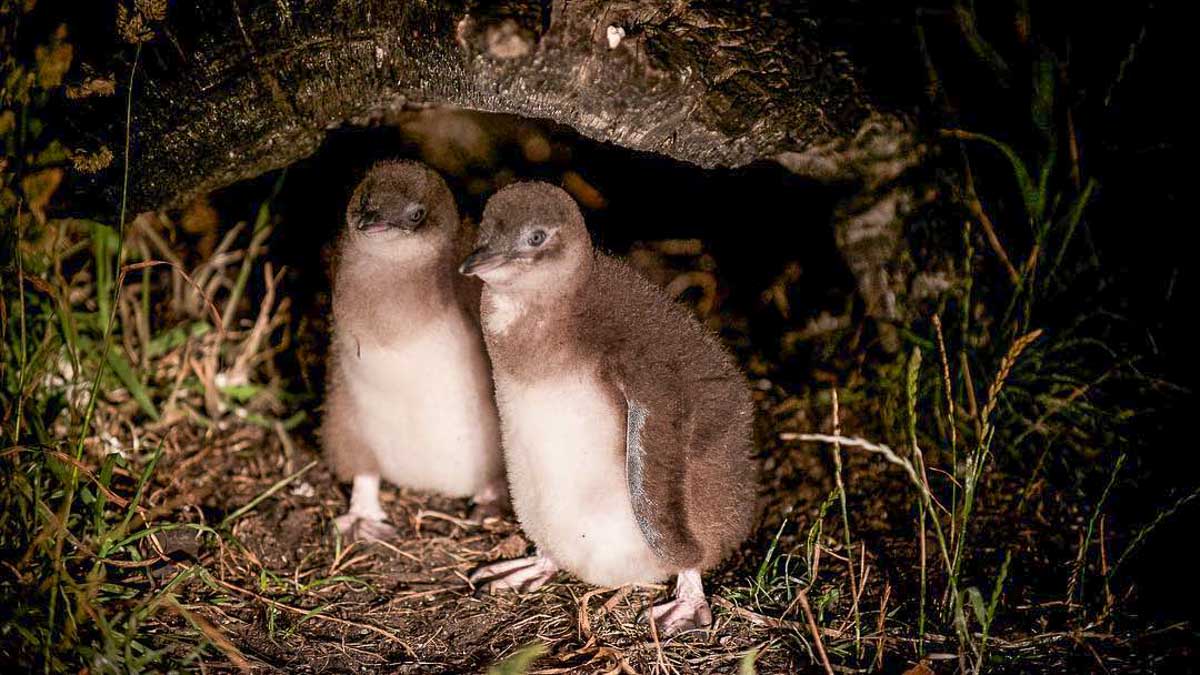
Photo credit: @lady_siu_mei via Instagram
Wildlife lovers, stop by Bicheno for a cute penguin tour . Every evening, little penguins splash out of the waters and waddle around their burrows on the beach. The tour lets you get up close to watch them go about their adorably busy routines.
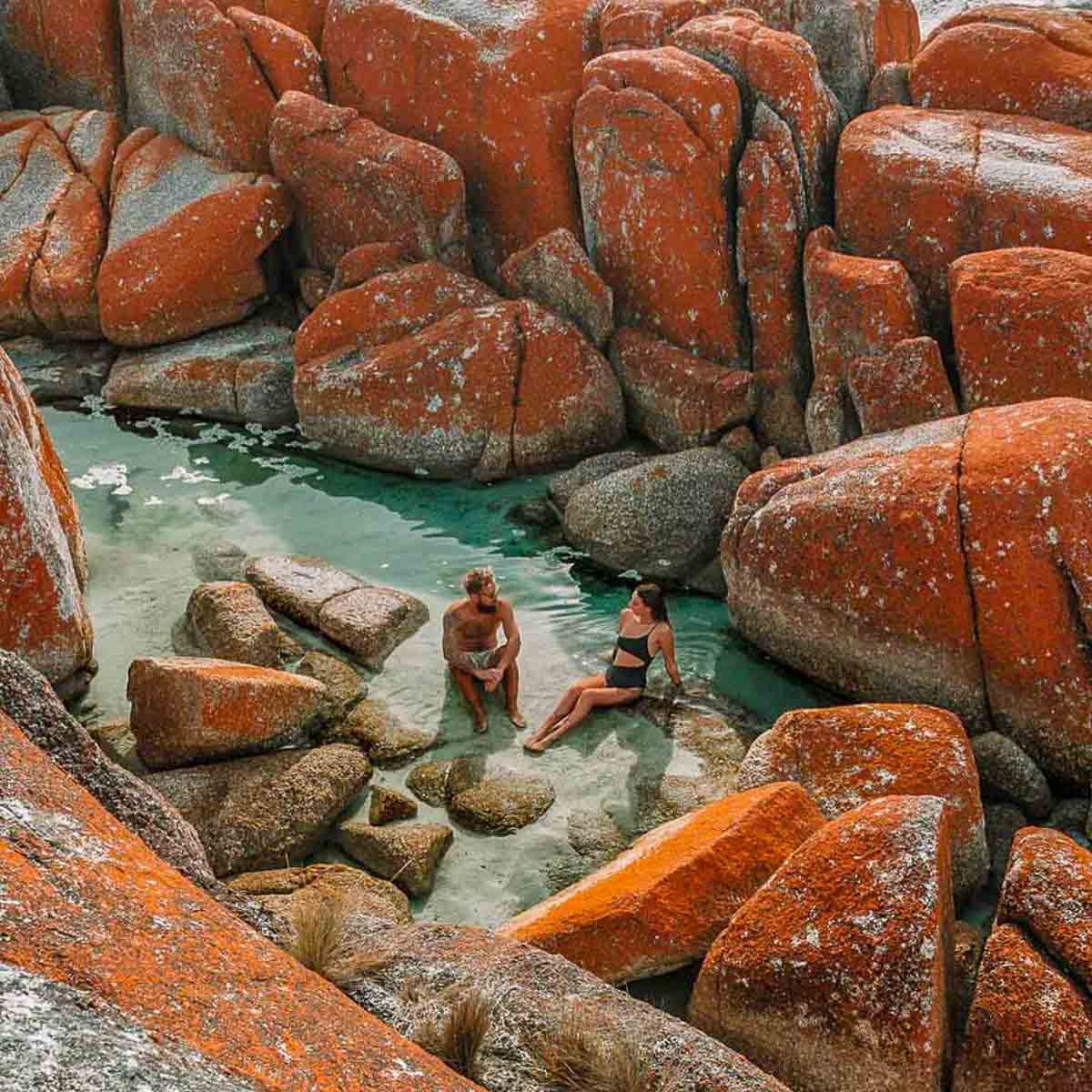
Photo credit: @_aswewander via Instagram
Finally, drive an hour from Bicheno to the legendary Bay of Fires . Clumped together on the white sand beach, the orange lichen-covered granite boulders are a great place to rest, swim, and take lots of lit photos .
Read more: 16 Picture-Perfect Places Every Australia Itinerary Needs
6) Best of Victoria road trip — Great Southern Touring Route from Bellarine Peninsula to Great Ocean Road and the Grampians
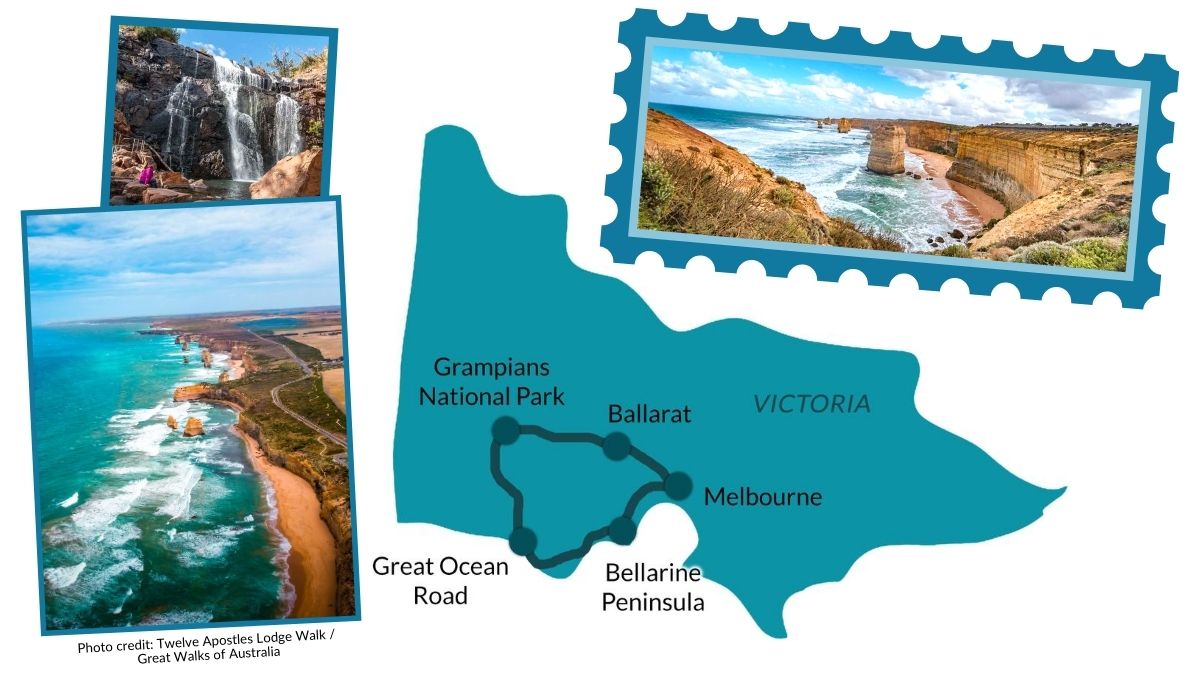
Journey time: 5–8 days (~850km) Starting point: Melbourne Airport (~7.5hr flight from Singapore)
No Australia road trip is more iconic than the Great Southern Touring Route ! You’ll feast well at the gastronomical Bellarine Peninsula , before winding along the marvellous coastline of the Great Ocean Road , and end with adventures in the Grampians .
The weeklong, round-trip drive is great for beginners. Most attractions are within two to three hours from each other, and there are plenty of stops along the way for rest and photos. Add more days if possible — this is one brilliant journey you don’t want to rush.
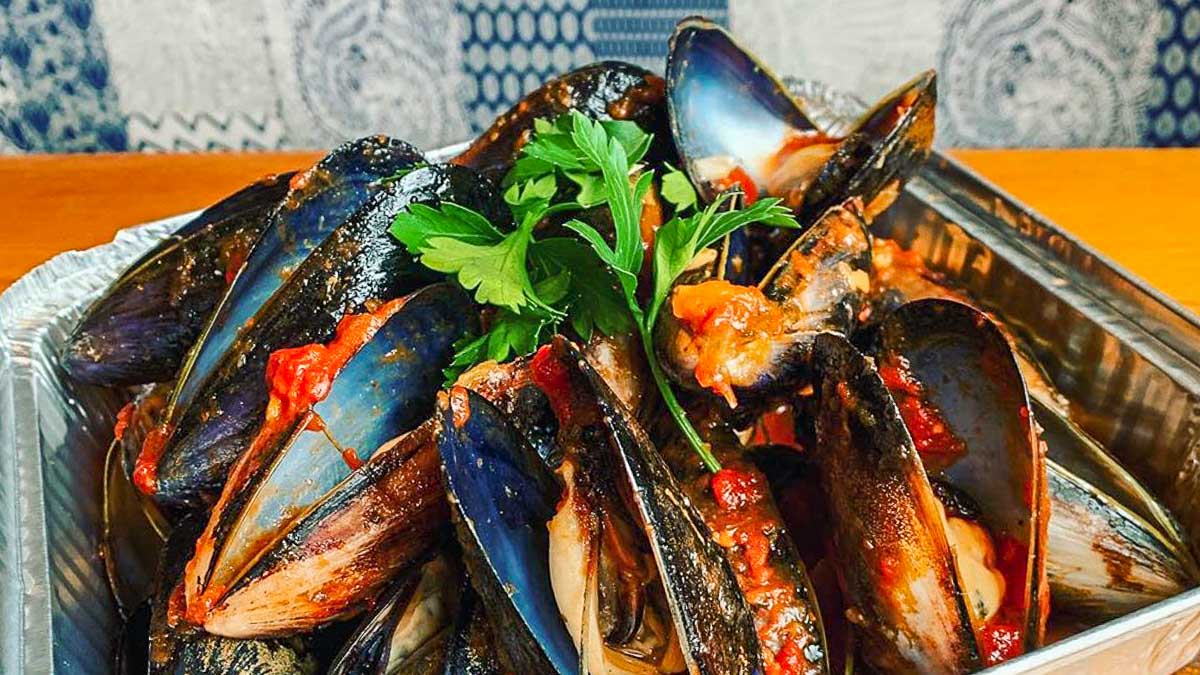
Photo credit: @littlemusselcafe via Instagram
If you’re travelling to the coasts first, make a quick detour to the Bellarine Peninsula . Bring an empty stomach — the up-and-coming region serves delicious local produce, from insanely fresh seafood to full-bodied wines and decadent desserts.
Recommended eateries include the Little Mussel Cafe , Scotchmans Hill , and the Scandinavian Ice Cream Company . Or, plan your own yummy Bellarine Taste Trail !
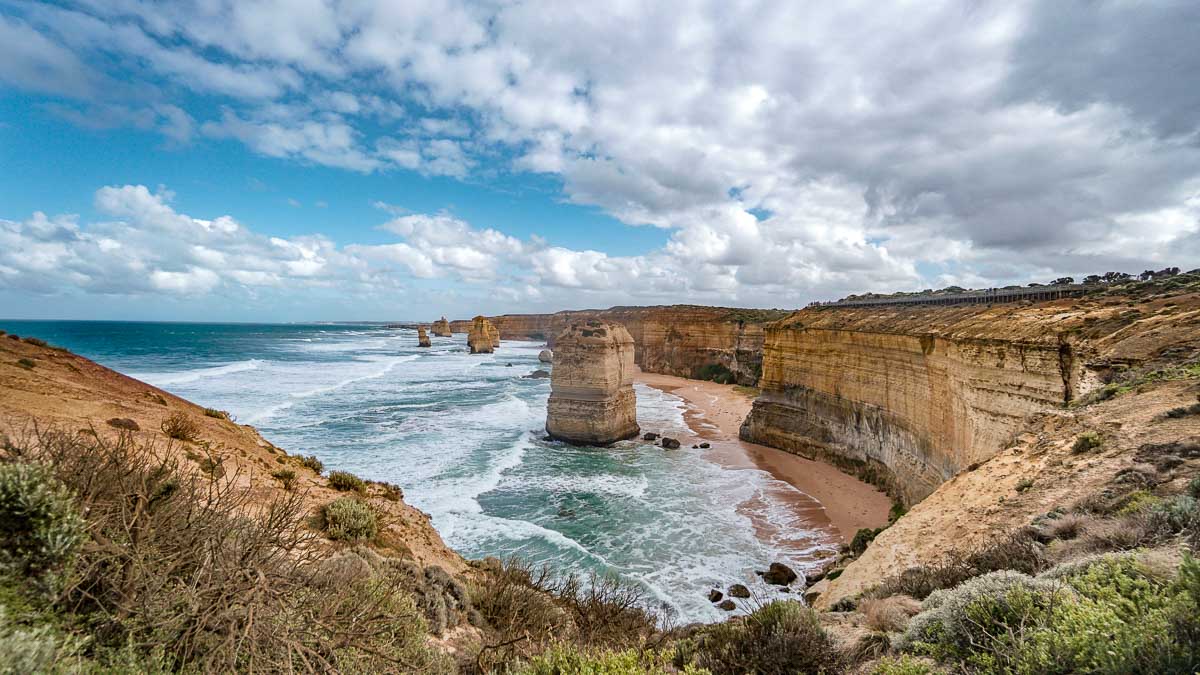
And now, the main event: The Great Ocean Road . Take your time for this leg of the journey! It’s totally normal to stop every few minutes and take photos of the unbelievable coastline. But, make sure you’ve allocated enough time to see all its classic sights — the 12 Apostles, Loch Ard Gorge, the Arch and the Grotto.
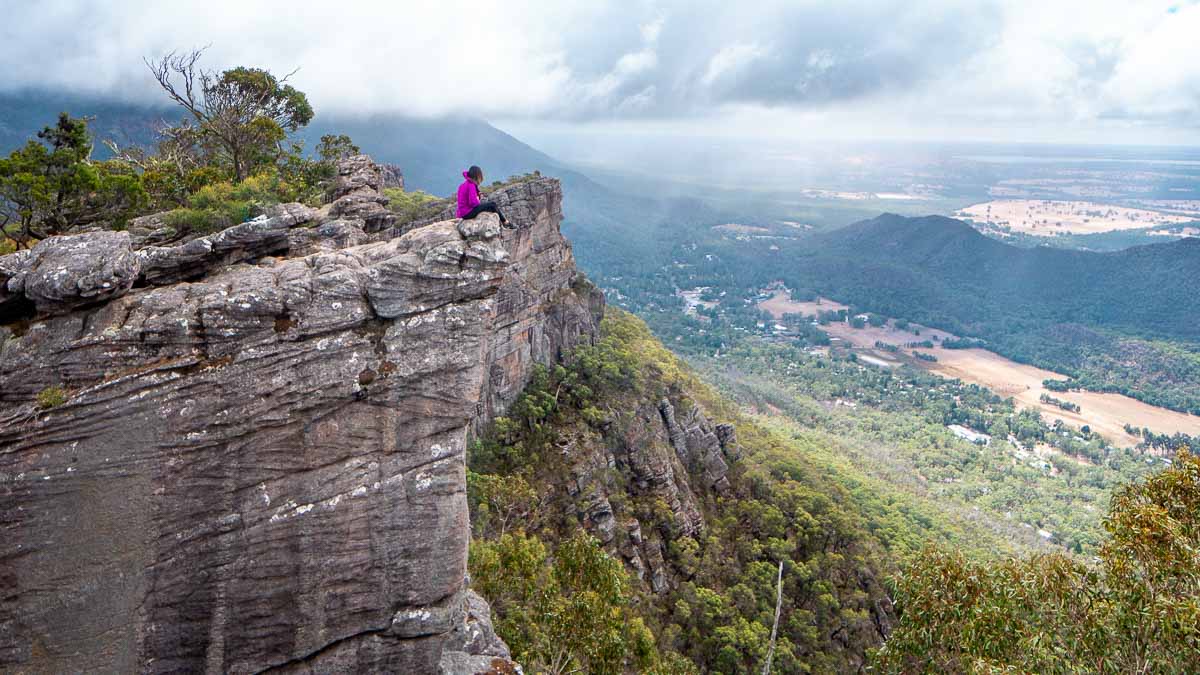
As you drive back inland, stop at the Grampians , another must-visit attraction. The National Park is popular with outdoor lovers and travellers, who come to rock climb or conquer its adventurous treks.
If you only have time for one hike, make it the Pinnacle Lookout , one of the park’s highest peaks. The journey from Wonderland Car Park is moderately challenging, but filled with scenery that makes it a highly Instagrammable spot .
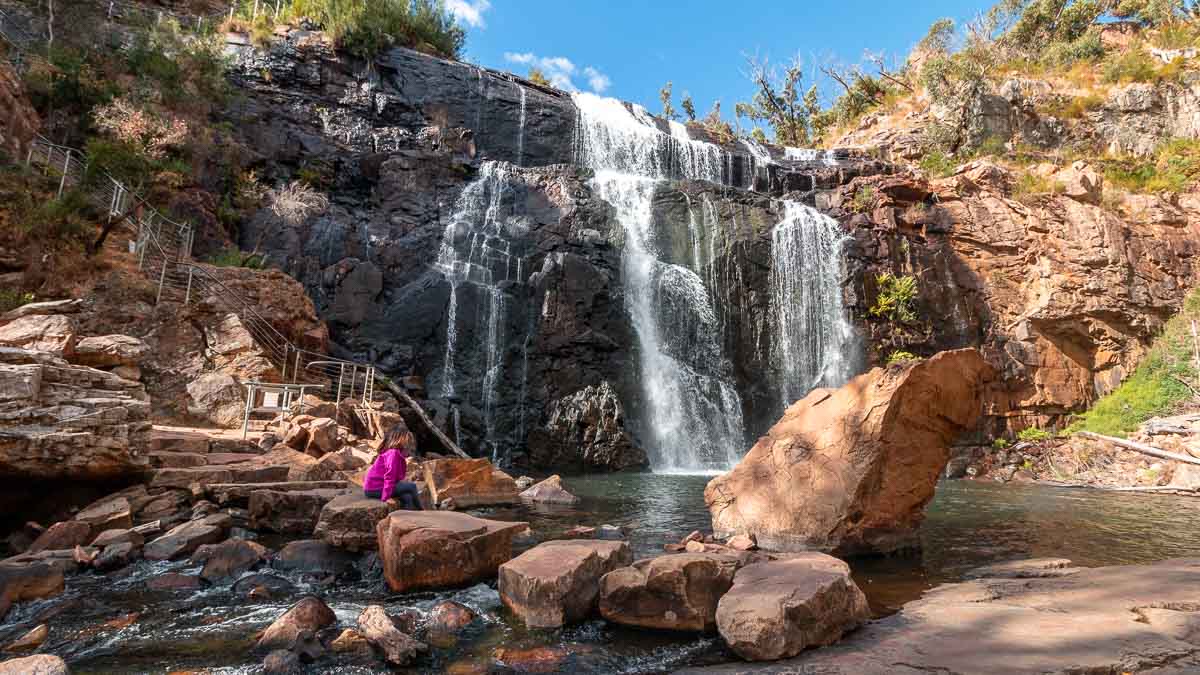
For a less gruelling hike, head to MacKenzie Falls . It’s one of the largest waterfalls in Victoria that flows all year round.
Read more: 8D Melbourne Road Trip Itinerary — The Ultimate Road Trip Around Victoria’s Best Adventures
If you’re craving more coastal scenery, extend your Victoria road trip from Melbourne to Adelaide . The route includes Port Fairy , a whimsical seaside town, and picturesque Mount Gambier .
7) Hidden gems in the Australian Capital Territory — Canberra and Coast road trip
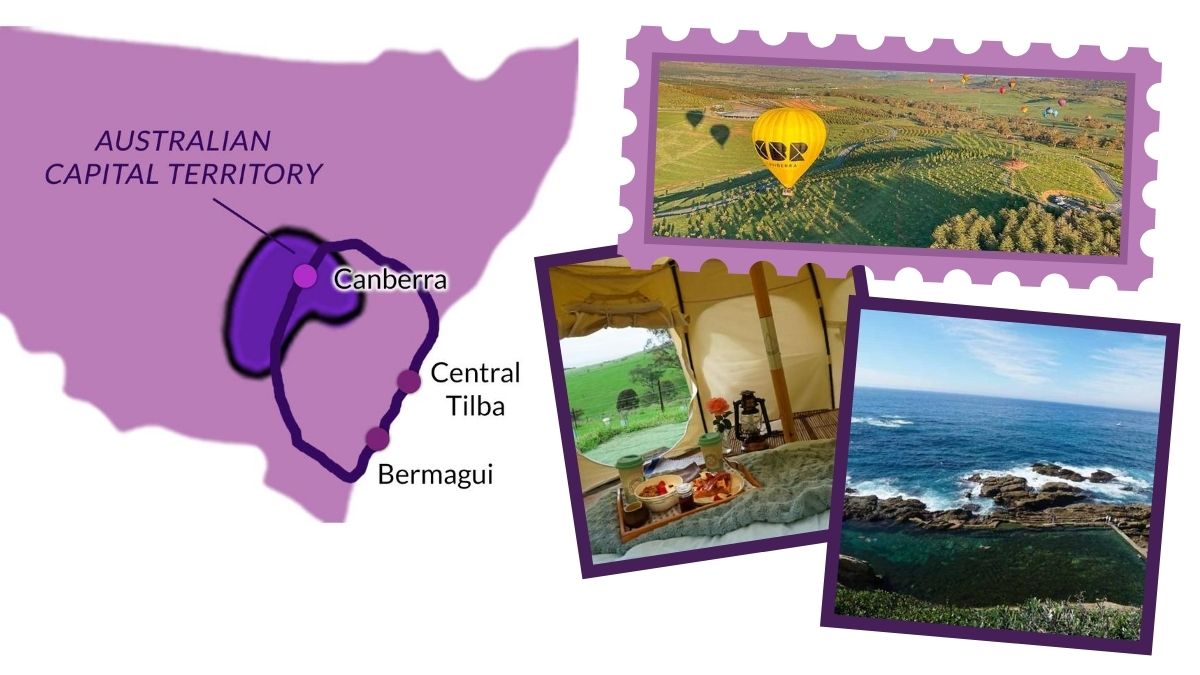
Journey time: 5–6 days (~650km) Starting point: Canberra Airport (8hr flight from Singapore)
For an unhurried escape, go on a picturesque road trip around Canberra and the South Coast . This round-trip route meanders from the city to the countryside and coast, topped with a mix of culture, adventure, and best of all — food!
As the road trip is relatively short, it’s great for beginners. Depending on your itinerary, you might be driving for a maximum of three hours a day. But there are many places to rest and take a breather along the way.
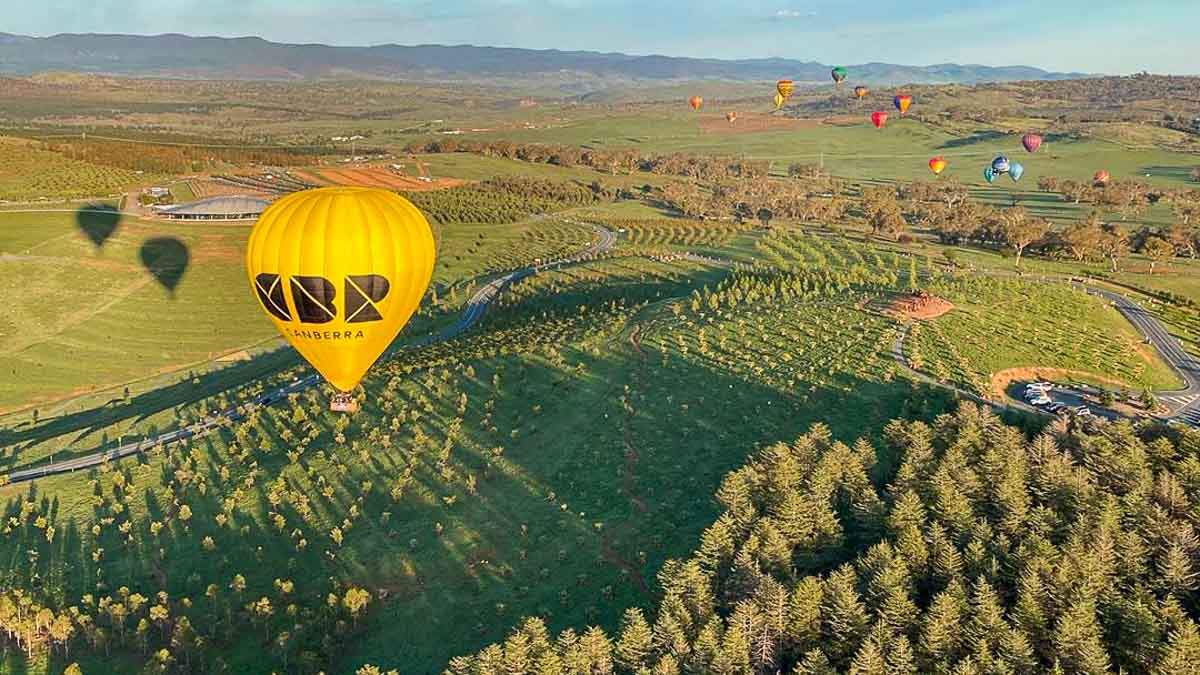
Photo credit: @balloonaloftcanberra via Instagram
Canberra is Australia’s capital, but not many travellers get to know the place! Rent a car and explore the city, teeming with friendly locals and cultural gems.
If you’re big on views, sign up for a fancy hot air balloon ride over the city. If not, tour around the impressive Australian Parliament House or the scenic National Arboretum .
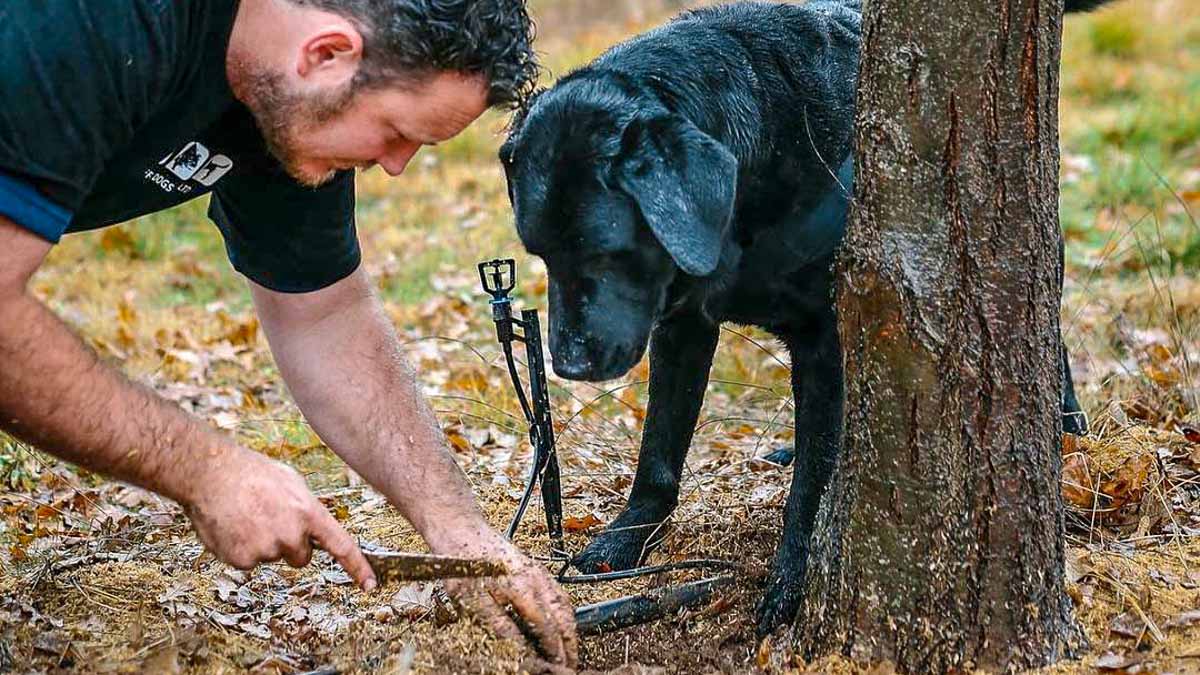
Photo credit: @avenuehotelcbr via Instagram
After ticking off the city’s attractions, drive out to the peaceful countryside. There’s an abundance of fresh, farm-to-plate produce to savour, so bring your biggest appetite! During truffle season (Jun–Aug), many truffle farms offer hunting experiences, where you get to team up with a cute truffle dog that’ll sniff for this superb delicacy.
Other places to check out include traditional cider from Sully’s at the Old Cheese Factory , and Tilba Real Dairy for some rich, premium cheeses.
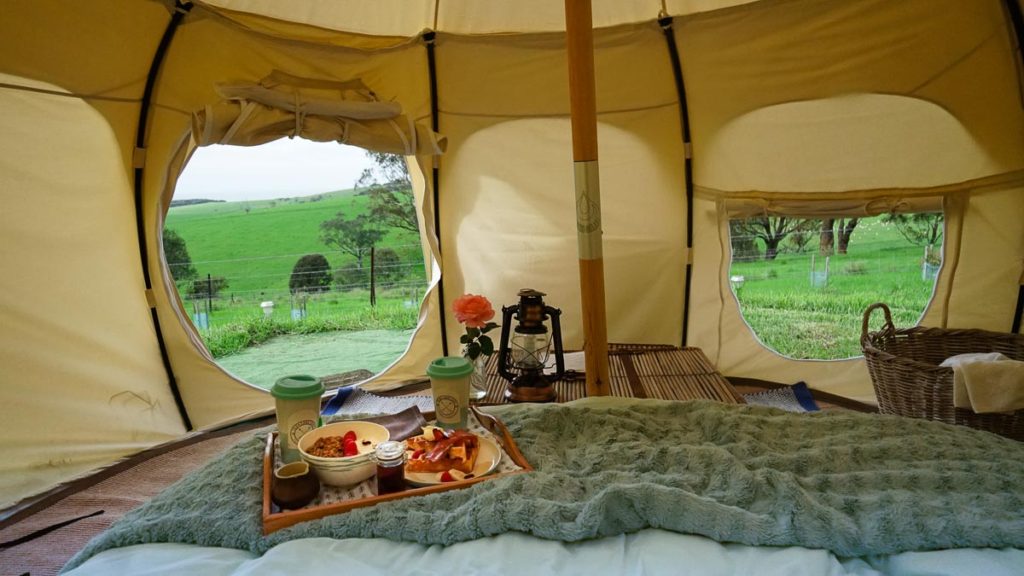
Get some peace and quiet with some overnight glamping! There are many sites to choose from in the South Coast, but the one that holds a special place in our hearts is Tilba Lake Camp . Located in the middle of a sprawling green pasture, you get a cosy lotus bell tent, a comfy bed and a delicious homemade breakfast.
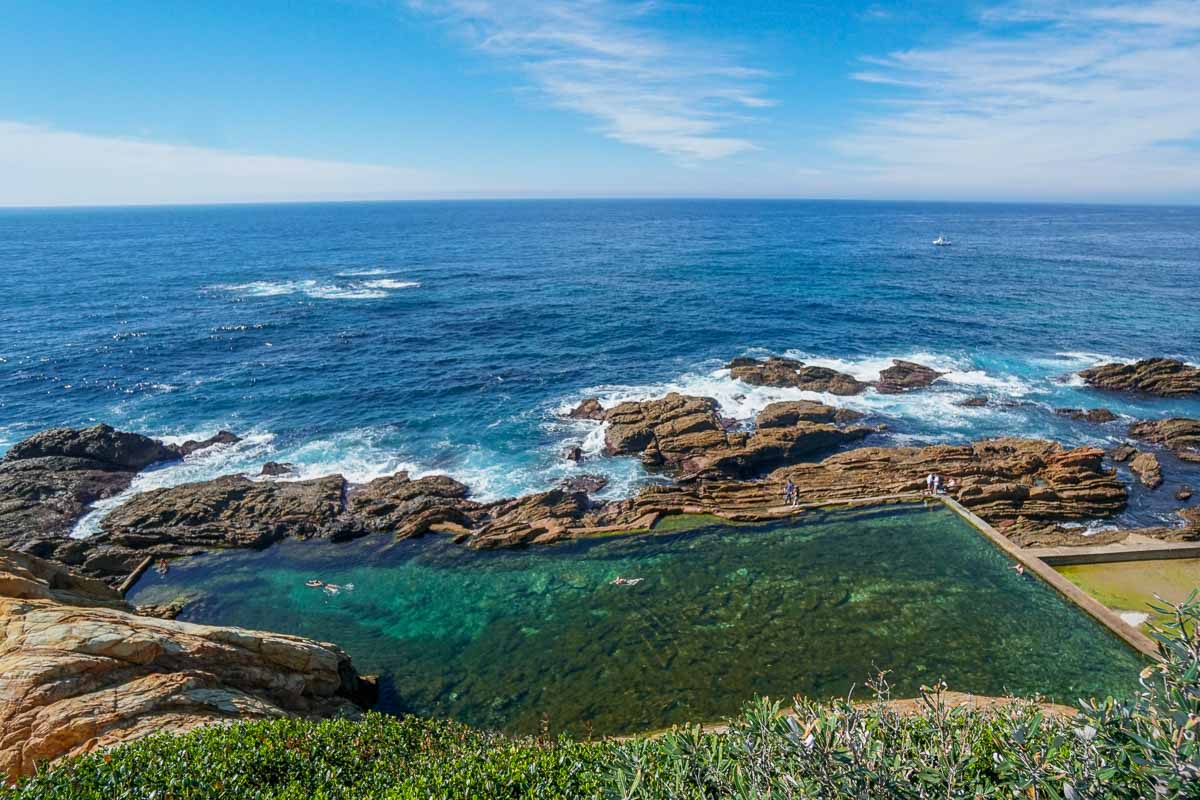
Further down the coast, dip into the beautiful Bermagui Blue Pool . The good news is the natural rock pool offers some of the best views of the ocean, but be prepared — the waters can be quite chilly!
Once you’ve soaked up enough of the coast, end your road trip in Canberra.
8) Fun-filled Western Australia road trip — Indian Ocean Drive from Perth to Kalbarri
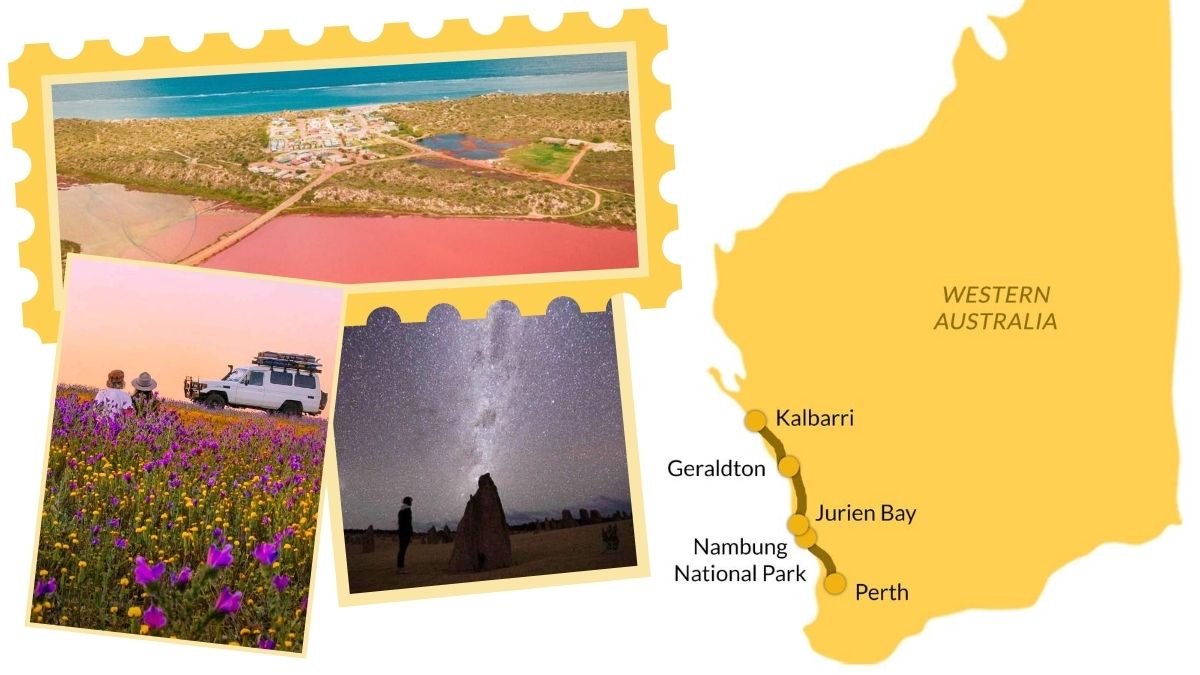
Journey time: 5 days (~1,800km) Starting point: Perth Airport (5hr flight from Singapore)
Few road trips are as vibrant as the Indian Ocean Drive . From Perth to Kalbarri , you’ll get a splash of colour driving past earthy landscapes, pink lakes and rich, red gorges. Arrive between Jul–Oct, and there’s also an explosion of multi-coloured wildflowers.
This route is part of Australia’s Coral Coast , and highlights some of the most exotic things you’ll ever see in the country. It’s also fairly easy for first-timers as there are many rest stops along the way. If you’re a seasoned traveller, don’t overlook this stretch — you might just discover something new!
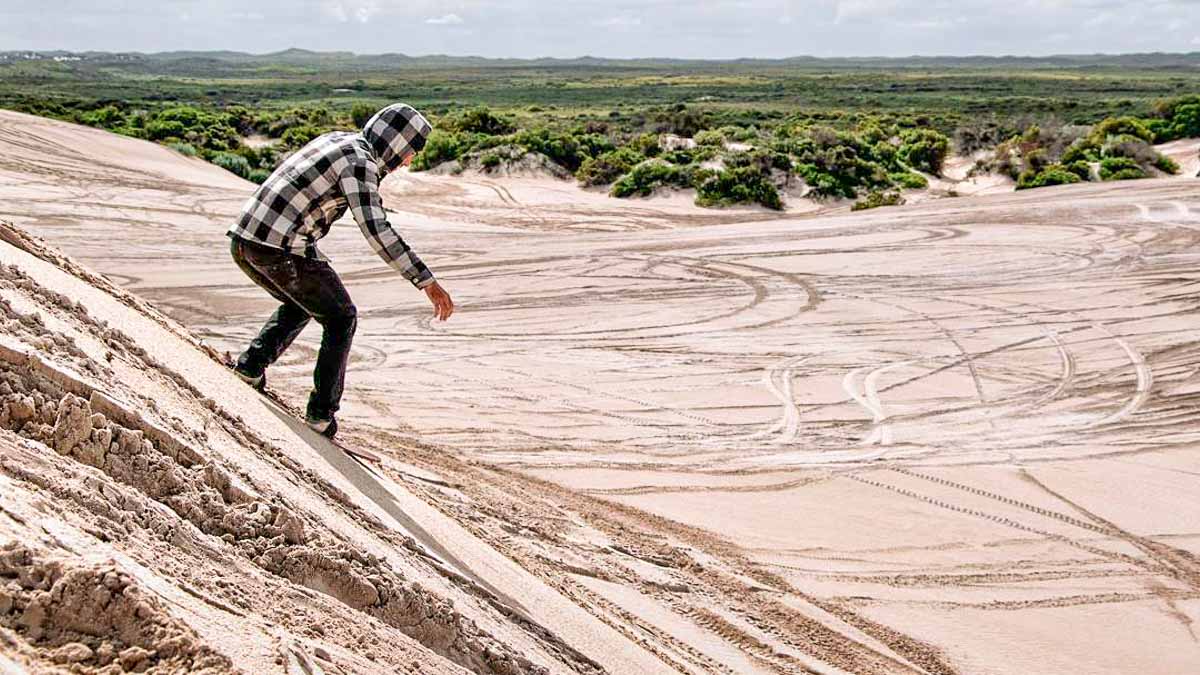
Photo credit: @szjanko via Instagram
Just two hours from Perth, kickstart your adventure with some rad sandboarding at Lancelin Sand Dunes ! It’s a great winter sport substitute if you’re not a fan of cold or frozen snow. Plus, the fine sand makes a soft landing too!
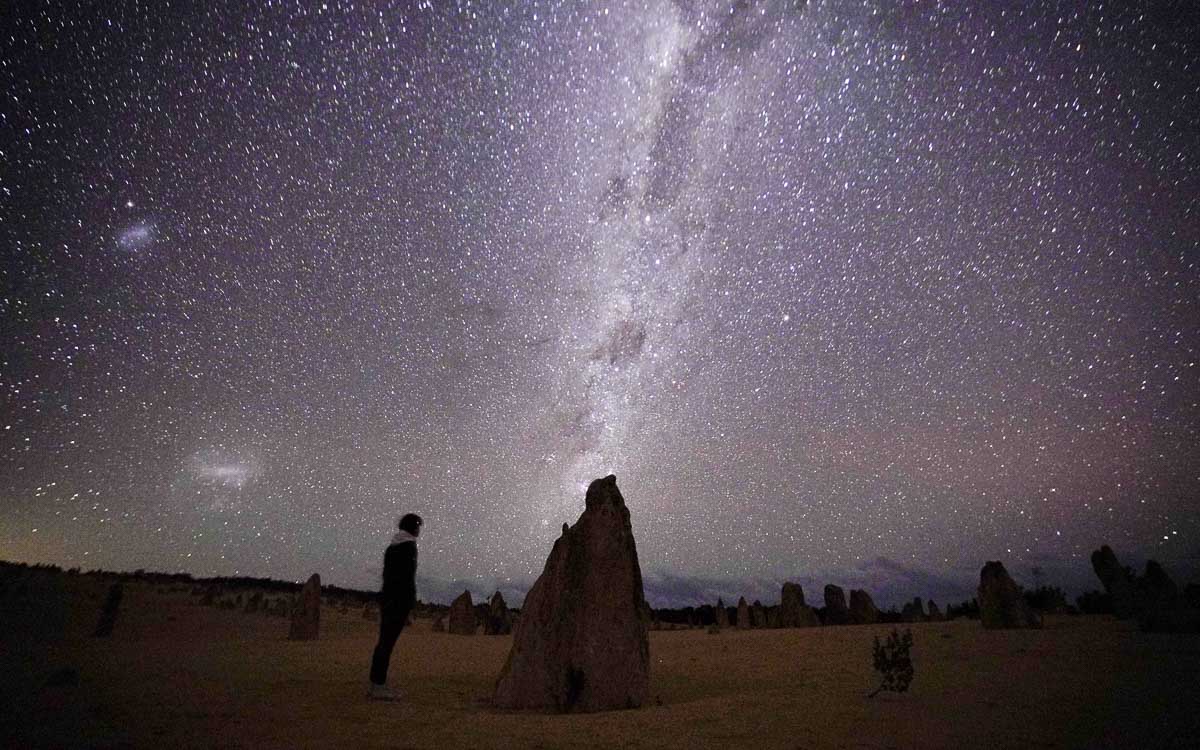
Like the ruins of an ancient city, the Pinnacles Desert at Nambung National Park is one of Western Australia’s definite must-sees. Each limestone structure stands perfectly unique, eroded by centuries of wind. You can stroll around in the daytime, but we’ve found that this place makes an exceptional stargazing site once night falls.
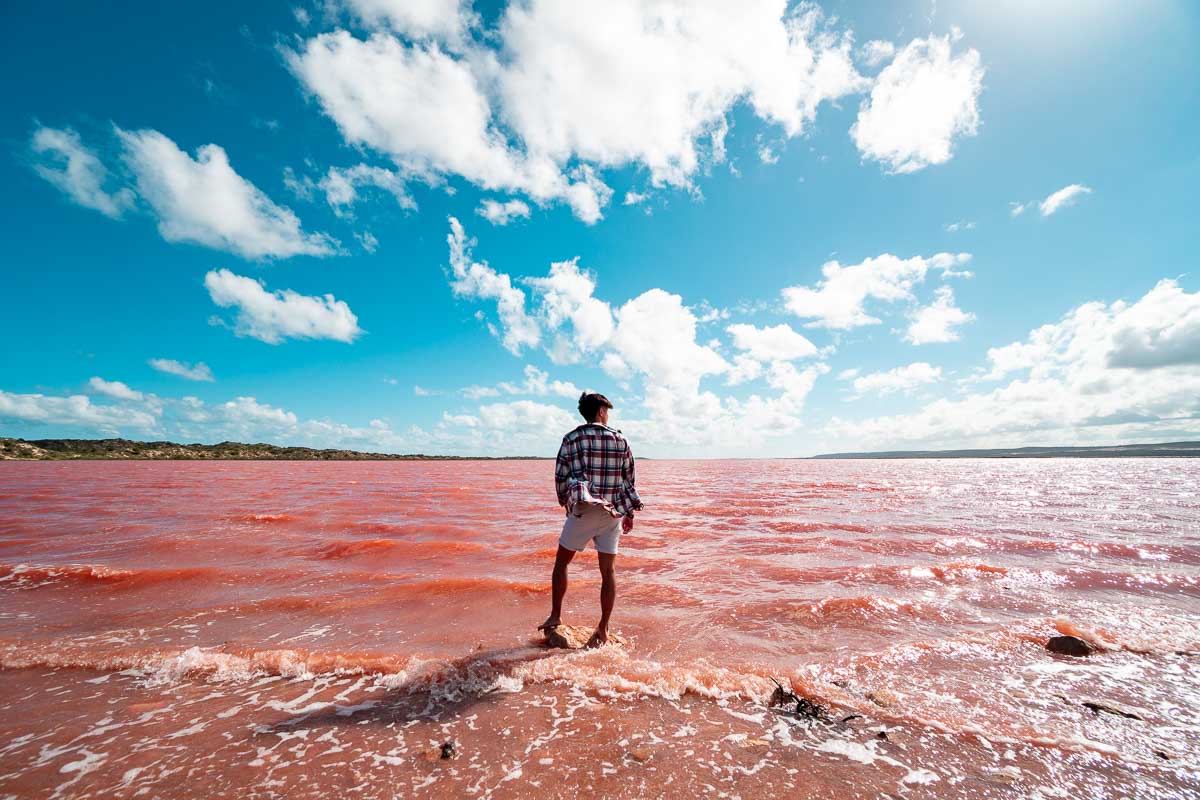
Hutt Lagoon is a classic case of “you must see it to believe it”. The high salinity is what gives the lake its striking pink hue, which changes with the seasons and time of day. Naturally, it’s an Instagram hotspot — so dress your best and get snapping!
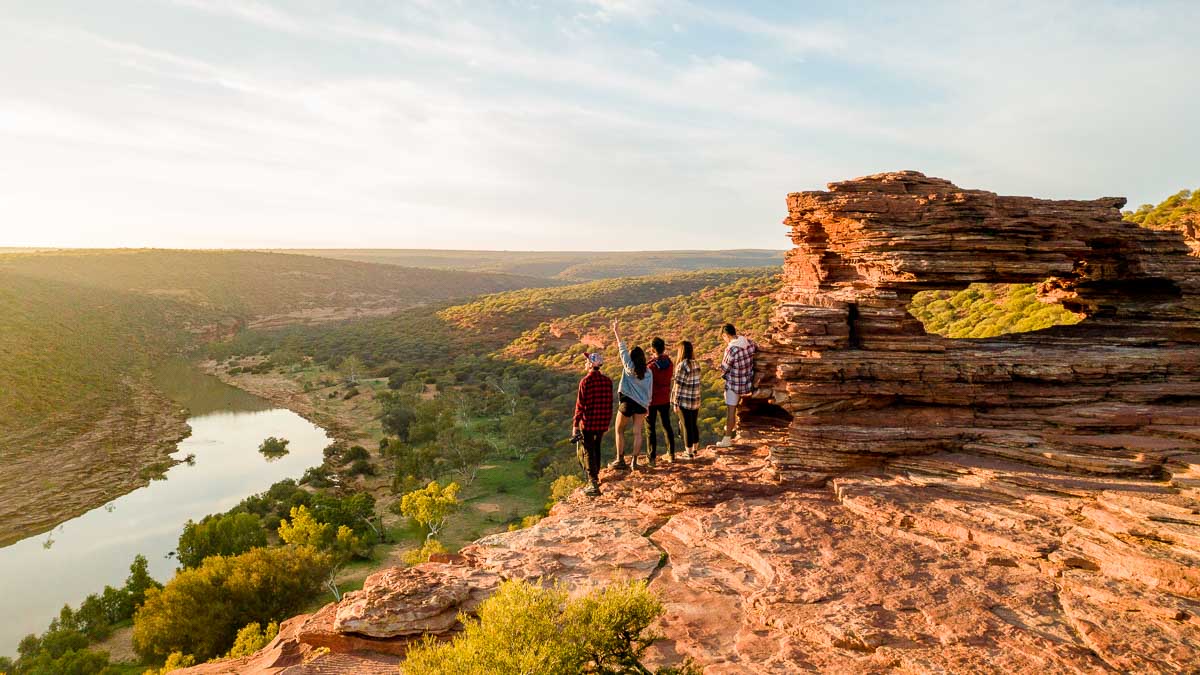
The final stop in the Indian Ocean Drive is Kalbarri National Park . It’s one of the most spectacular parks, with beautiful natural attractions around every corner.
Peek through Nature’s Window at the rocky gorge beyond, or check out the Kalbarri Skywalk . The park’s newest addition hovers more than 100m over the Murchison River, offering panoramic views of the arid landscape below.
If you’re here between Jul–Oct, wander around the Everlasting Wildflower Trail . The space comes alive with a burst of pretty, blooming wildflowers .
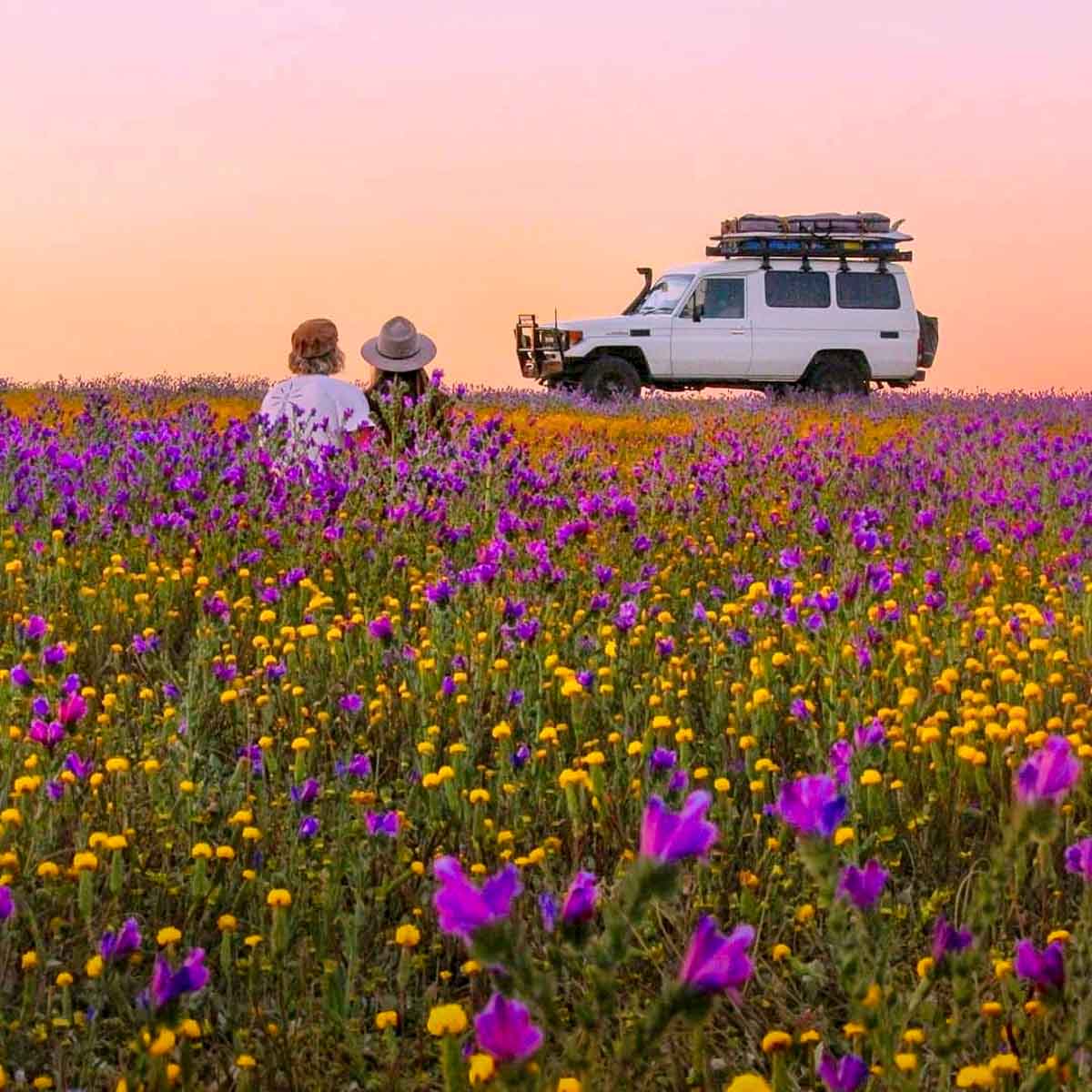
Photo credit: @roadtrippersaus via Instagram
Afterwards, follow the road back to Perth on your final day. But, if you have more time, extend your road trip down the Coral Coast .
Read also: 11D Western Australia Itinerary — Coastal Road Trip From Perth To Ningaloo
9) Epic Queensland road trip — Great Beach Drive from Noosa Heads to Rainbow Beach and Fraser Island
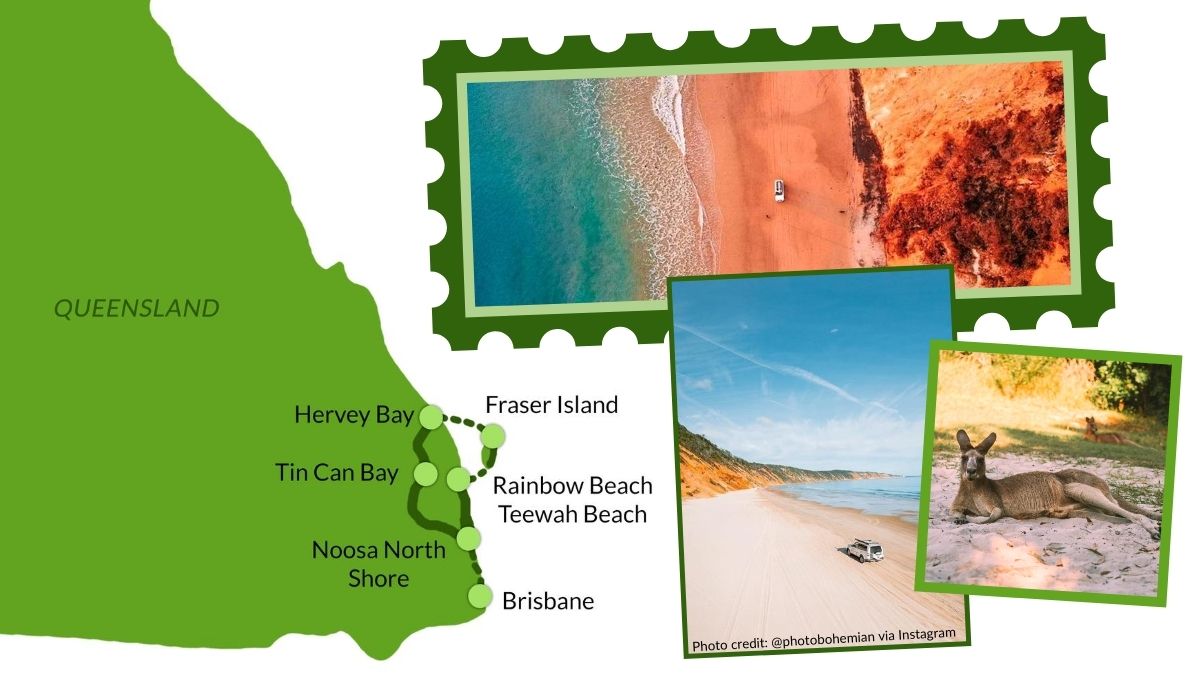
Journey time: 4–7 days (~420km) Starting point: Noosa Heads (~1.5hr drive from Brisbane Airport, 8hr flight from Singapore)
Here’s something for the young, wild and free! The Great Beach Drive to Fraser Island is as rugged as Aussie road trips get. In a comfy 4WD, you’ll cruise over 100km of beaches, sandwiched between wild bushland and the dazzling Coral Sea.
As the road trip requires a 4WD for off-road driving, it’s perfect for seasoned travellers. The backseat drivers can handle the road trip playlist and the vehicle access permit 😛
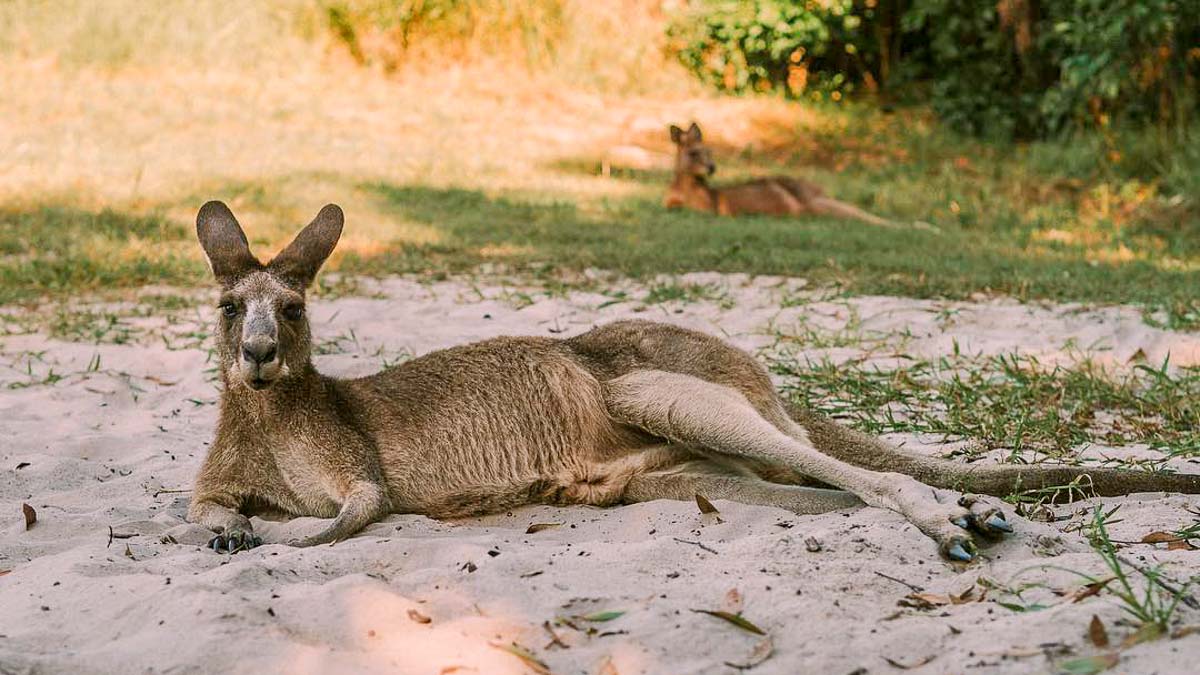
Photo credit: @t.becs via Instagram
Starting from Noosa Heads, take a 5-minute ferry ride from Tewantin or make a 40-minute detour to Noosa North Shore . In this unspoilt paradise, enjoy some beachside activities, or play a game to see who can spot wild kangaroos the fastest.
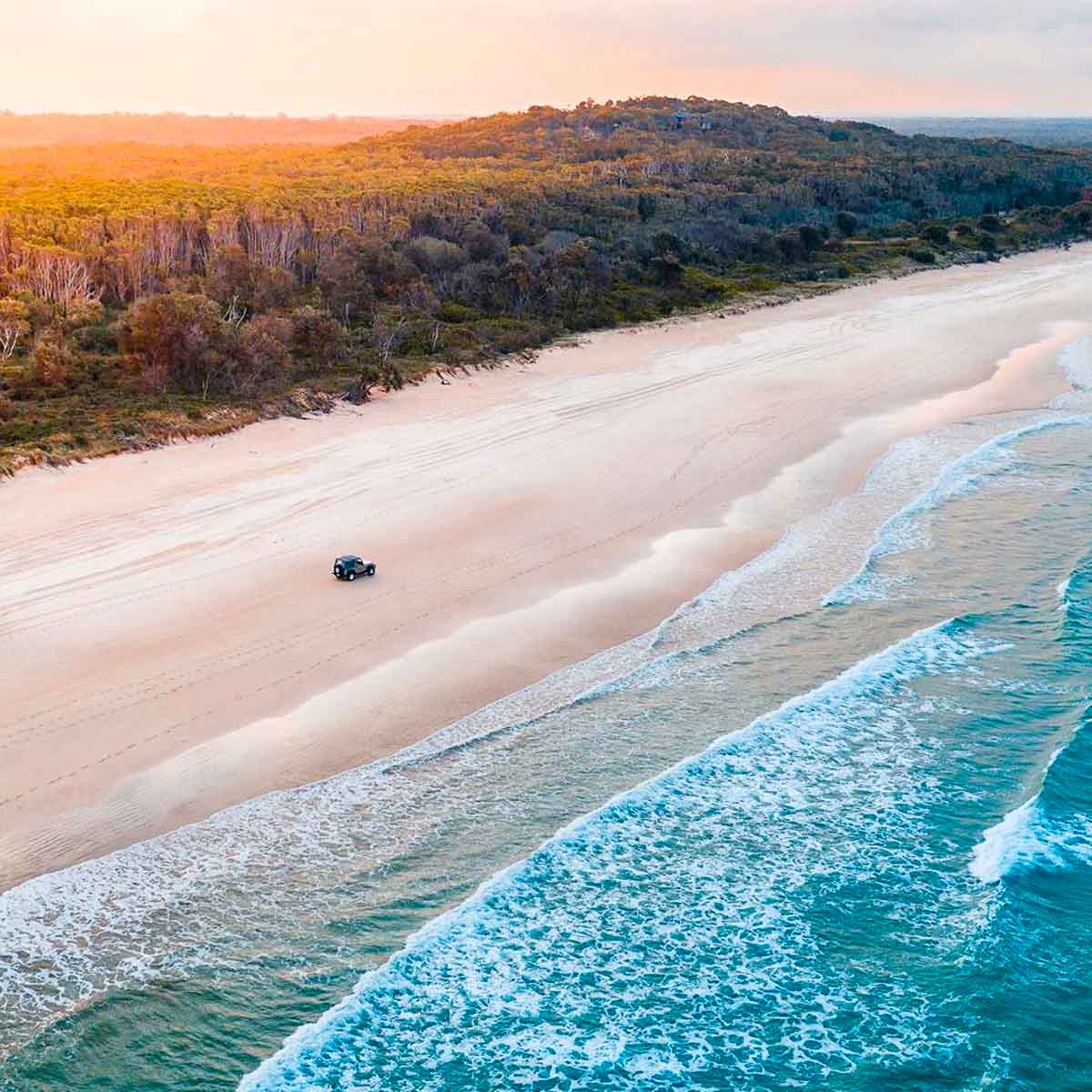
Photo credit: @manuelo.pro via Instagram
Further up, bask in the endless white sands of Teewah Beach . It’s only accessible via a 4WD so this is where your beachy journey begins! It’s also largely undeveloped — check that you’ve packed enough water and supplies, especially if you’re camping overnight .
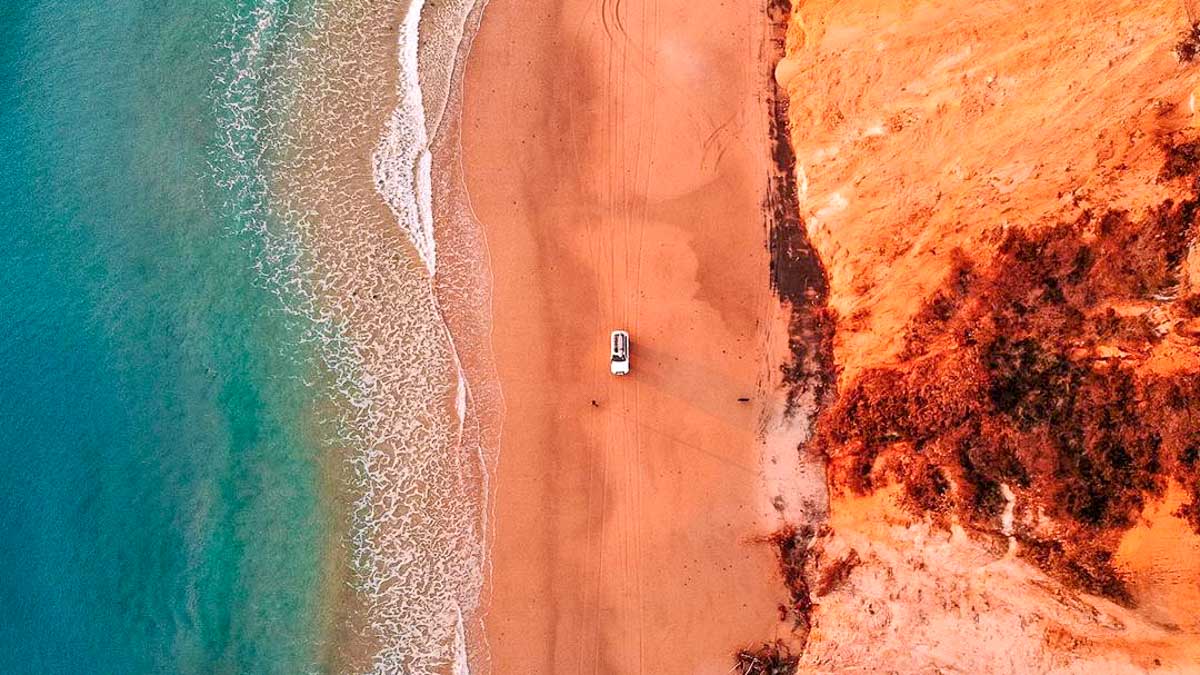
Photo credit: @tracks.we.travel via Instagram
Continue on to Rainbow Beach . The lovely coastal town is famous for its coloured sand cliffs, caused by minerals staining the sand over thousands of years. Take a slow stroll and observe the natural swirl of colours ranging from white to ochre and red.
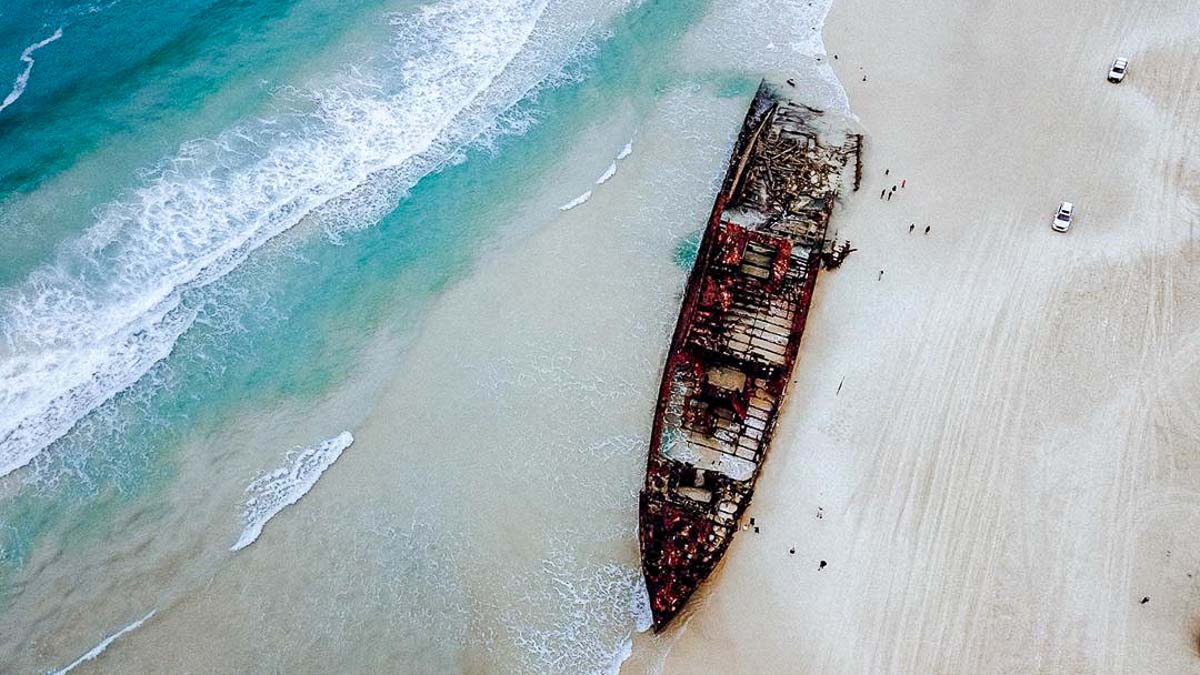
Photo credit: @alexxsadventures via Instagram
Finally, brace yourself for the grand event! From Inskip Point, take a short ferry ride across the ocean to Fraser Island . It’s the world’s largest sand island, and many come to conquer the glorious ‘highway’ that is 75 Mile Beach (that’s ~120km, FYI).
During your drive, swing by the Maheno shipwreck for photos and the Champagne Pools for a natural bubbling ‘jacuzzi’. Be sure to visit Fraser Island’s amazing rainforest too — it’s the only one on this planet that grows on sand!
10) Legendary Pacific Coast Touring Route from Sydney to Byron Bay
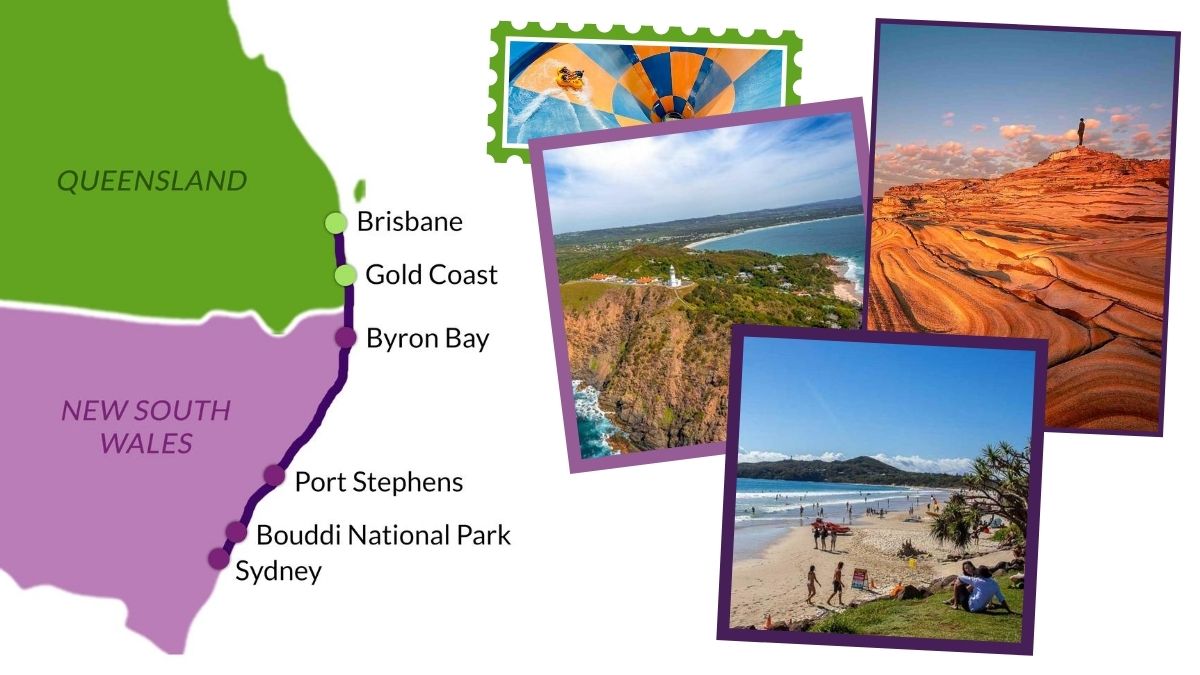
Journey time: 9–14 days (~1,000km) Starting point: Sydney Airport (~8hr flight from Singapore)
The Legendary Pacific Coast is another iconic route. The drive from Sydney to Byron Bay up to Brisbane is full of quintessential Aussie experiences — bucket-list-worthy adventures, soft, sandy beaches, and countless places to surf.
The route itself is a 10-hour stretch, but it’s pretty manageable if you break the distance down over two weeks. Following this, beginners would drive for a maximum of two hours every day on smooth, sealed roads.
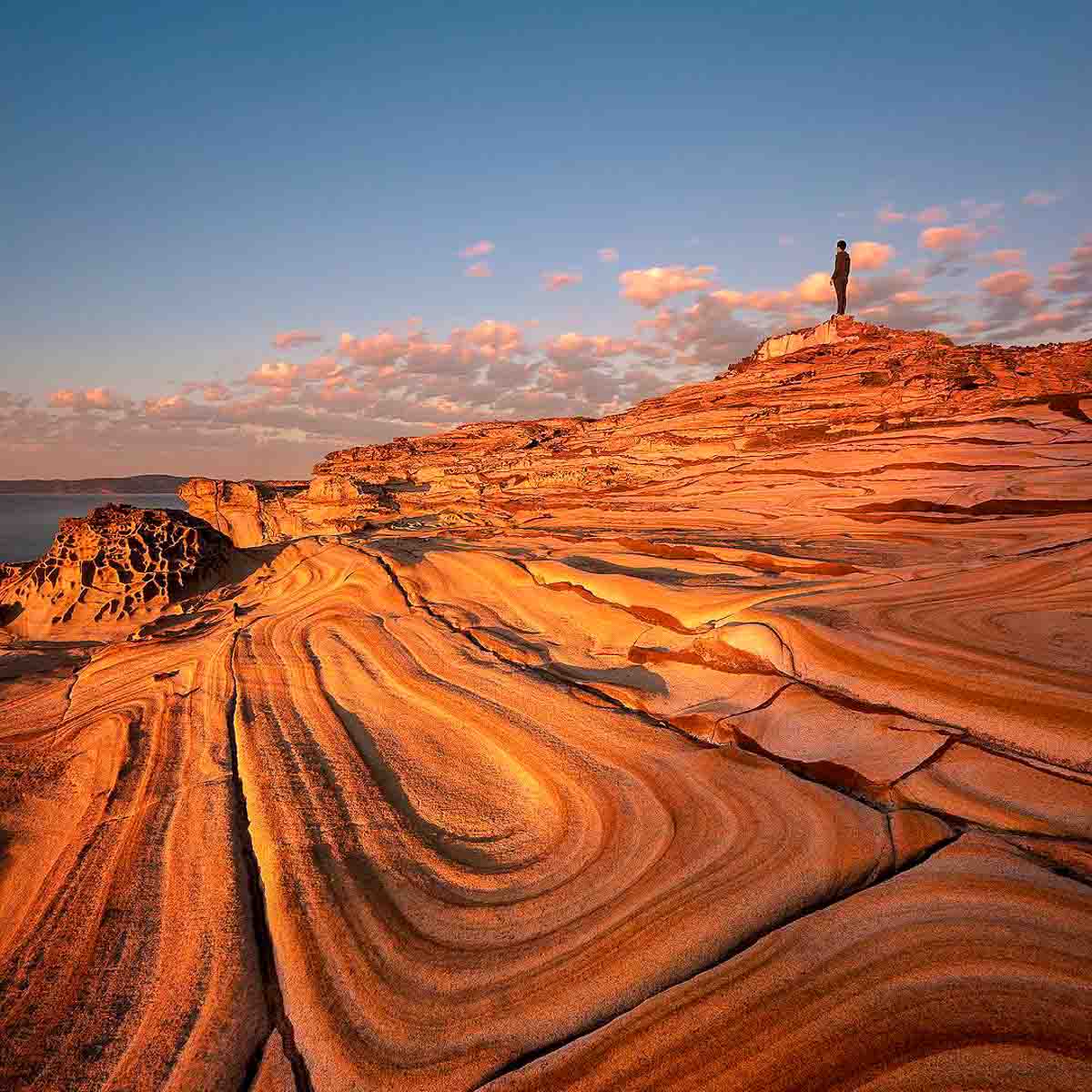
If you’re not keen on exploring the famous Blue Mountains , opt for the quieter Bouddi National Park . Hop on the many scenic tracks , which feature sandstone cliffs, isolated beaches and vibrant native bush.
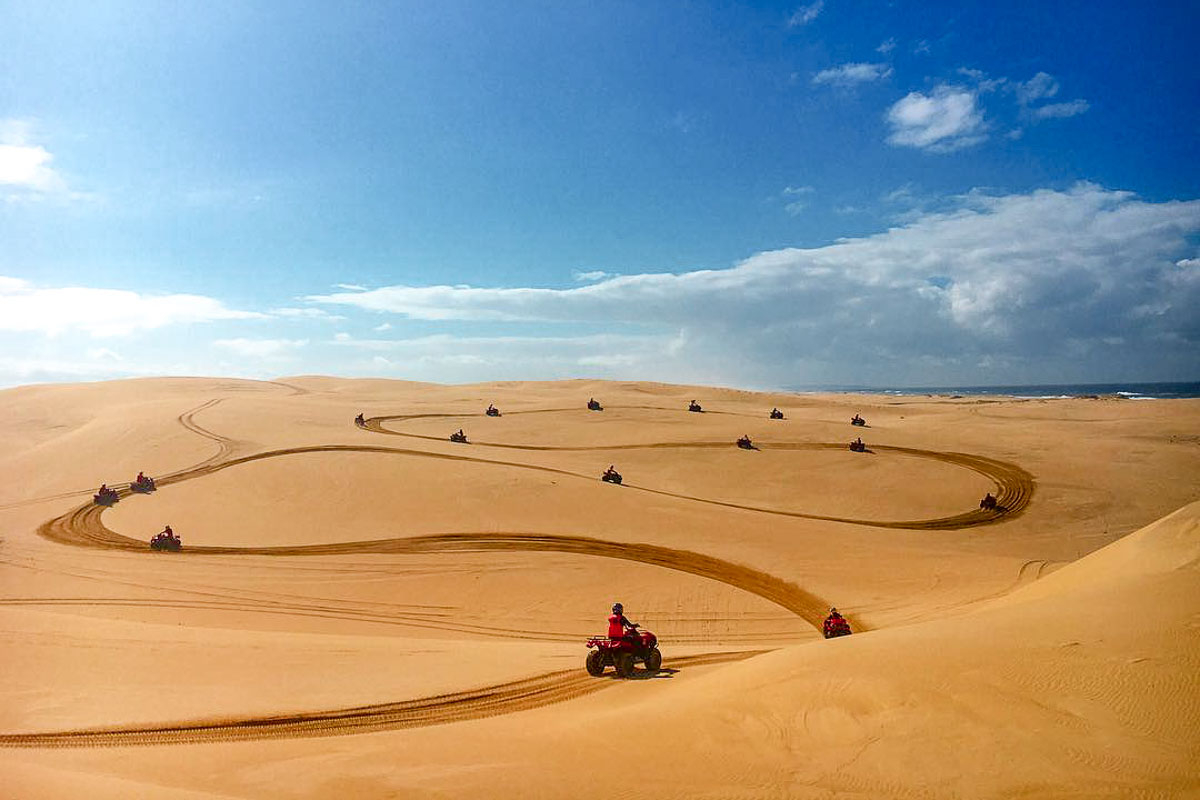
Photo credit: @sand_dune_adventures via Instagram
Further up north, the adventures begin! Port Stephens is where you’ll find the Southern Hemisphere’s largest moving coastal dunes — and there’s no better way to explore this shifting desert than with quad bikes (your first step to a 4WD!).
Read also: 9-Day Australia Road Trip Itinerary Around The Best Of NSW — Sydney, Blue Mountains and Beyond
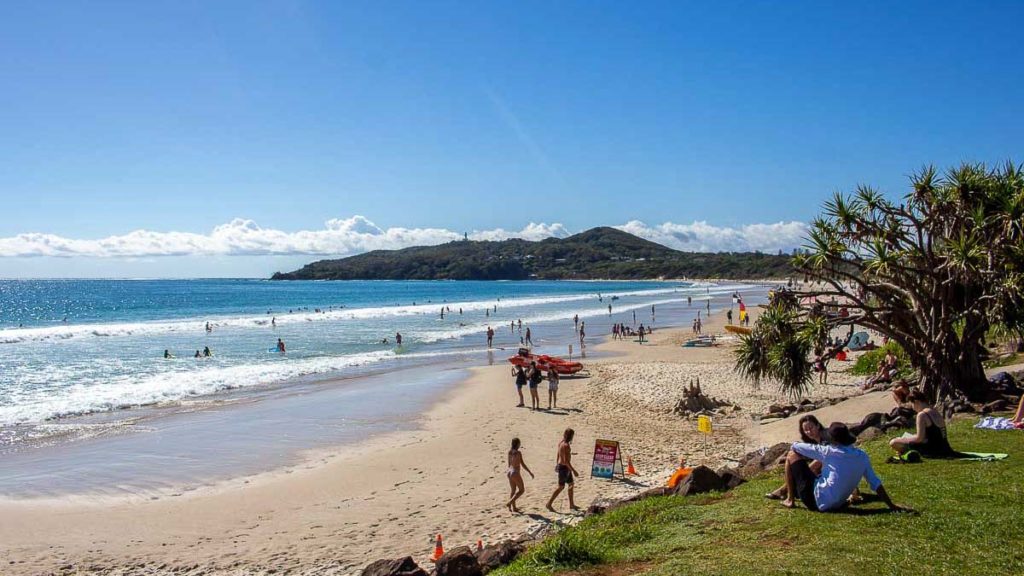
Warning: Once you’re in Byron Bay , you might find it terribly hard to leave. The sun-kissed seaside town is arguably the best-kept secret in New South Wales , and there’s absolutely no shortage of things to do.
Read also: Byron Bay Guide: 25 Things to Do in NSW’s Ultimate Hipster Paradise
Experiences we 100% recommend include surfing at Main Beach , dining on fresh seafood at Catch-A-Crab , and watching the sunrise at Cape Byron Lighthouse . Meanwhile, Chris Hemsworth recommends diving at Julian Rocks (no kidding!).
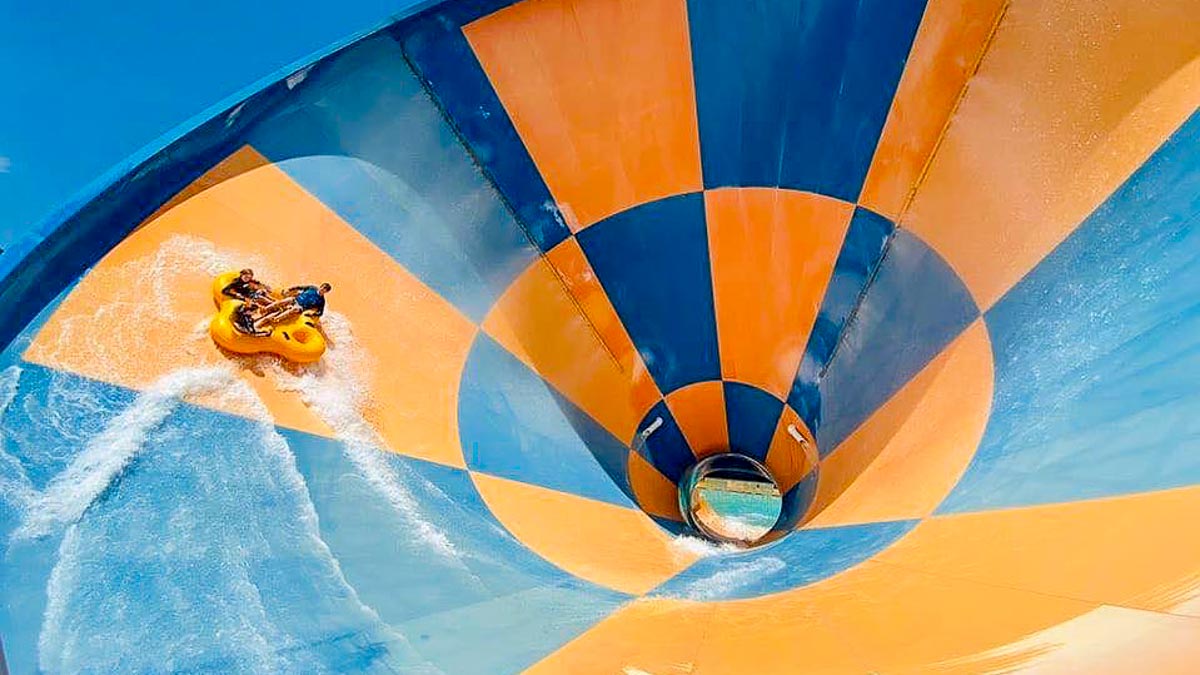
Photo credit: @goldcoast_themeparks via Instagram
If you’re itching for more road trip adventures, drive a little further up to the Gold Coast or Brisbane in Queensland . Take your pick from hair-raising Gold Coast theme parks or the mellow Brisbane Brewing Co .
Read more: 2-Week Australia Road Trip from Sydney to Byron Bay — Discovering NSW’s Legendary Pacific Coast
Driving tips and planning for an unforgettable road trip in Australia
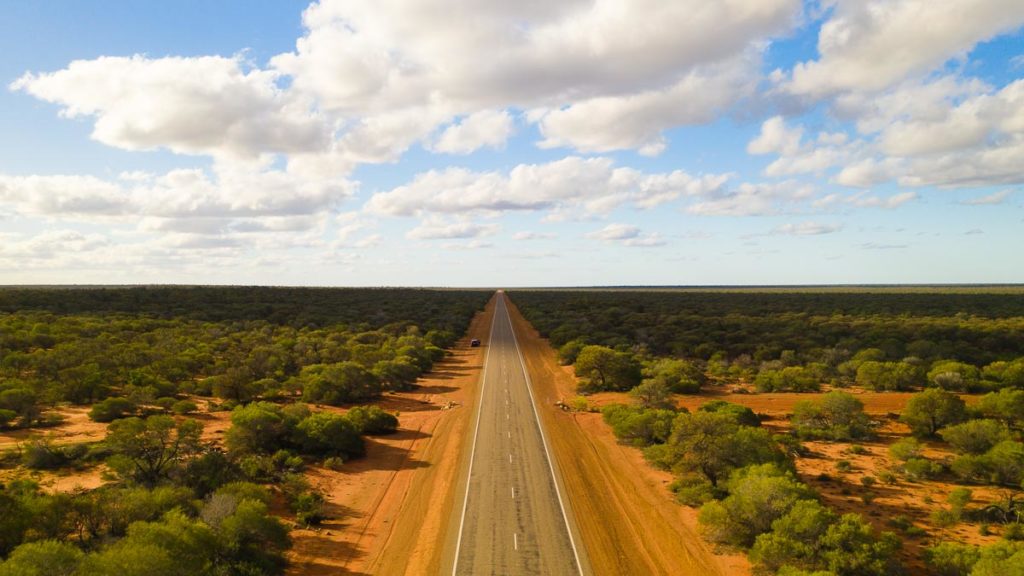
In a land so vast and wondrous, not exploring Australia on a road trip is a real shame. Even then, whether you decide to stay in the cities or hit the road, this country won’t have any problems curing your wanderlust !
All you need to do is find underrated things to do , or seek out socially-distant natural wonders . Hey, safety is sexy, no?
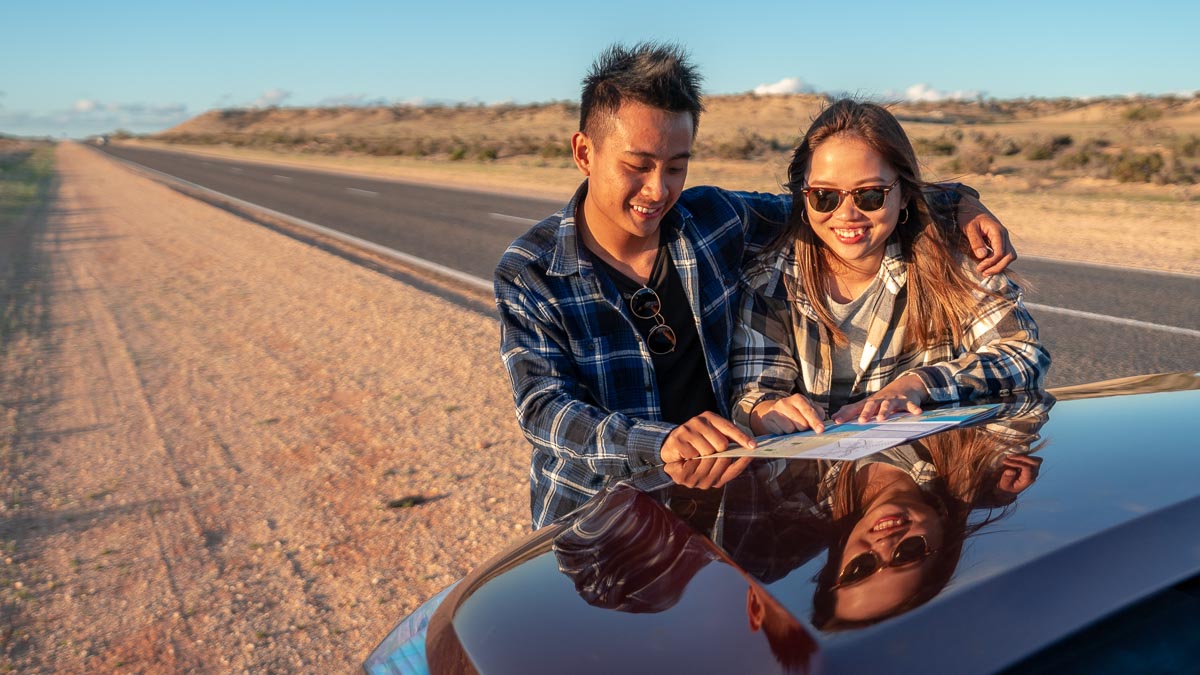
Speaking of safety, here are some useful driving tips for the long road ahead 👇 (1) Rent a GPS or download offline Google maps. Mobile reception isn’t available in remote places like National Parks. (2) Follow the speed limit — even in rural areas. Take it from us, the fines are hefty. (3) Watch out for wildlife on the roads. Drive at the recommended speeds, so that you can slow down or brake in time if an animal crosses in front of you. (4) Similarly, avoid driving in the dark as animals are more active then. If you do, use your high beam to see further ahead. Drop it when there are cars in the other direction (they’ll do the same too).
Need more ideas to plan your next Australia road trip? Find more guides and detailed maps for self-driving itineraries here !
Featured and Facebook image credit: @tracks.we.travel via Instagram
Which Australia road trip are you keen to go on? Share your plans in the comments!
This post is brought to you by Tourism Australia .
For more travel inspiration, follow us on Facebook , Instagram , YouTube , and Telegram !
View this post on Instagram A post shared by thetravelintern.com (@thetravelintern) on Jul 29, 2020 at 4:31am PDT
RELATED ARTICLES MORE FROM AUTHOR

11 Unique Things to Do in South Australia — Quirky Wineries, Epic Festivals and an Island Escape
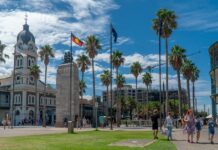
Ultimate 6-Day Adelaide Itinerary — The Best of South Australia’s Underrated Capital City and its Surrounds

New Direct Flight to Broome — Idyllic Australian Beach Getaway Now 4.5 Hours Away
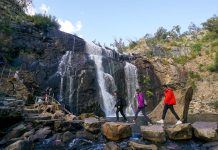
8D Melbourne Road Trip Itinerary — The Ultimate Road Trip Around Victoria’s Best Adventures
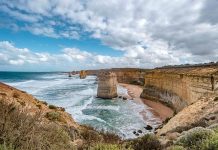
Victoria’s Best Outdoor Experiences — 11 Fun Things to Do in Melbourne and Surrounds
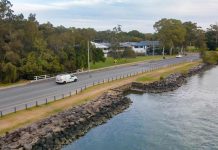
8-Day Gold Coast Road Trip Itinerary — First-Timers’ Camper Van Guide for S$1.6k
Leave a reply cancel reply.
Save my name, email, and website in this browser for the next time I comment.

35 New Deals and Attractions in Singapore this June 2024

How to Score Cheap Flights — 11 Most Common Mistakes to...

5 Underrated Day Trips Under 2hrs from Tokyo — Win First...

New Direct Flight from Singapore to Vancouver — 7 Unforgettable Things...

First-timer’s Guide to Songkran in Thailand — Everything You Need to...

- Terms Of Use
- Privacy Policy

Road Trip Around Australia | Getting Set Up
Posted on Published: October 14, 2020
- So you’re planning a road trip around Australia?
We’ve been through that same exciting process of planning to travel Australia by road: but finding the answers to the many questions I had, proved time-consuming and a little bit frustrating. Though we searched high and low, the answers were all over the place.
So we decided that we wanted to help others; those that are as excited about travelling around Australia as we were, who have a seemingly insatiable desire to read everything they can about the topic, and who love planning everything that they possibly can before they go.
I mean, if you’re anything like me, then the planning, the anticipation, the lining-all-your-ducks-up, is almost as fun as the going.
But don’t get too bogged down in planning your road trip.
Sure, do it because it’s exciting and helps the time before the trip pass more quickly. But don’t wait until you have absolutely everything sorted out.
You can’t.
And that’s half the fun of a trip like this, the learning and experiencing and changing tack because you discovered something new.
So heads up, this is a loooong post…

So before you start reading, I just want to warn you that this is not a short post.
Coming in at over 16,000 words, this is the most comprehensive post I’ve ever written and it covers EVERYTHING I could think of that would be important for getting set up for a road trip around Australia.
I recommend that you use the table of contents below to guide you to the sections that are most important to you.
And bookmark this page so that you can refer back to it, or pin it on Pinterest.
1. The benefits of a road trip around Australia
2. the mistakes we made (that maybe you can avoid), 3. understanding the different types of vehicles, 4. how to rent a motorhome or caravan in australia, 5. how to buy a motorhome or caravan in australia, 6. how the camping works in australia, 7. how to set up your rig for self-sufficient camping, 8. being prepared for disaster, 9. how to keep in touch with friends and family when you’re on the road, 10. how to plan your route around australia, 11. how to pack for a road trip around australia, 12. how driving in australia is different to the rest of the world, 13. how much does it cost, 14. how to fund your road trip around australia, ready to make a road trip around australia a reality.
And at the end of the post, I’ve provided a planning checklist to help you gather together everything you’ve learnt and tick them all off the list as you go through them.
Since this post is so large and comprehensive I have to warn you that it is not for everybody!
DO read this post if you:
- Want to drive around Australia and will camp each night. That may be camping in a motorhome, caravan, campervan or tent and it could be in a caravan park, national park or a free camp.
- Are coming from outside Australia. International travellers, I answer all your questions in here too. With that in mind, there may be a few times where Aussies reading this article will think, ‘well duh, of course you can drink the tap water’ but that’s not obvious for someone from another country. (Whether it tastes any good is another story.)
- Are going for 2 weeks, 12 months or heading off full-time.
DON’T read this post if:
- You’re after a travel guide of all the things you must see while you’re in Australia . There is soooo much to see and it all depends on whether you’re a city person or a bush person, whether you’re into museums or waterfalls, and it certainly will depend on your budget. There is so much information to be found on the internet of all the places you can visit, so I’m not covering that here.
- You are already travelling around Australia. There’s nothing new or ground-breaking in here. There’s nothing you wouldn’t have already experienced yourself, whether by trial or error.
This post is full of the basic information that you just don’t know when you’re either from another country, or haven’t camped in Australia. And if you’re on the road already, that’s not you.
Let’s get stuck in!
Please note: some links in this post are affiliate links which means that if you decide to purchase I will earn a small commission at no extra cost to you. Please see our affiliate disclosure for more information.
The very fact that you’re reading this post tells me that you don’t need to be convinced that taking an extended road trip around Australia is a great idea.
You already know why you want to do this. You may want to spend more time with your family, or see more of Australia, or just not work for a while!
But here are some other benefits that you may not have thought of.
Problem solving skills
When you’re on the road and something goes wrong, you don’t always have the luxury of being able to call someone up to deal with it for you. You have to deal with it, you have to get your thinking cap on and problem solve. You have to reach out to people to ask for help. You have to research a topic you know nothing about to see if you can figure out what’s wrong. You have to try and fix it, and either be pleasantly surprised that you got it right, or learn one way NOT to do it.
And it’s not just you that benefits from this, your kids do to.
Have you ever had the time to teach them to fish, or to light a fire, or to dig a hole to go poop? In our increasingly fast paced and electronic world, they often aren’t given the time or opportunity to learn tactile skills. When you’re camping they can take the time to learn how to light a fire, and practice dozens of times until they’re confident.
All of you will learn great problem solving skills.
A new appreciation for nature
How many sunsets have you missed simply because you were inside and didn’t realise the sun was setting until it was time to turn on the lights? Or you couldn’t see it anyway because you’re surrounded by lots of buildings.
We may be a bit cuckoo, but we got so much enjoyment out of simple encounters with the local wildlife.
It was delightful to make friends with a magpie and feed her scraps of meat, and be totally entertained by her as she frolicked around our campsite.
And we felt special with each night that one frog would come and sit on our outdoor table and greet us (okay, frighten us me) as we headed to the toilet in the middle of the night.
I had never thought about ‘compromise’ as being something that was important for the attainment of my goals. But being on this road trip has certainly taught me that.
Doing this road trip has been a dream of mine for many years. But I thought that I only wanted to do it if I could be in a nice motorhome, with an onboard bathroom, and nice decor and a great solar set-up. And I wanted to do it without having to work or worry about money.
And so if felt unattainable.
But when we decided we’re going to do this trip anyway, there was certainly a lot of compromising that needed to be done.
A camper trailer instead of a motorhome, no onboard bathroom but staying at caravan parks and using their bathrooms, definitely no nice decor and an okay solar set-up.
While there was compromise, it certainly felt nice to not be compromising on our dream. For once.
Yes, a lot of people talk about the benefit of time when you’re on a road trip. Not only time with your loved ones and time to relax. But time to pursue the things that are important to you. Time to read. Time to create.
Time to discover what’s really important to you.
When we started on this road trip, we thought that it might be something we’d like to do for the foreseeable future, but we weren’t sure.
So we said that we’d try it for a year and then reassess.
We also gave ourselves the ‘out’, that if either of us didn’t like it, we could stop whenever we wanted. No harm no foul.
Well…
As it turns out, we LOVE this life, so a few things have needed to change in the way that we’re set up.
Picking the right camper for us
I think it’s pretty common, no one’s first purchase of a home-on-wheels is the ‘right’ one. It’s not until you’ve travelled in it, realised what type of travelling you like to do, the comforts that you don’t want to give up, and those features that you just don’t care about.
You have to take it around with you for hundreds of kilometres, set it up, pack it down, be stuck in it in the rain, sleep in it in the heat, cook in it, eat in it and clean it. Then maybe, you’ll have an idea if it’s the right type of vehicle for you.
For us, we got it quite wrong.
The camper trailer was great for a first-go because it was cheap and light, and it certainly was everything we needed for our first four months.
But now that we want to be on the road for at least a couple of years we’ve realised a few home truths about ourselves. We will happily get a caravan and sacrifice those hard-to-get-to places in order to have some more comfort, an easier time setting up and packing down… and a toilet.
Funding our trip
We have loved our trip so much that it’s made us want to live this life for the foreseeable future.
Six months, well, it was actually more like almost 5 months, just isn’t enough time for us to see this country. We don’t want to just drive through all these wonderful locations, we want to set up camp and stay for a couple of days, if not weeks. We want to live on the road.
So we have to figure out how we’re going to make money. I’ve got a whole section below on ‘ funding your trip ’, but in hindsight, it would have been better if we’d had that sorted before we left.
We’ll start off with a bang and get straight into talking about vehicles. This will be your largest one-off expense and determines so much about your trip.
We’ll have a look at the different types of vehicles commonly available here in Australia and the pros and cons of each.
Just a note for my North American readers, you’ll find that large rigs are pretty rare here. You’ll be hard pushed to find an RV or travel trailer over 30ft and fifth wheels are pretty rare, but becoming more popular.
The list below is in order of the most popular, widely available and most seen options, to the least seen options. (Based on our own travels around half of Australia. The point is, caravans are everywhere, Class A RVs and fifth wheels are not.)
Australia is definitely a caravanning nation (that’s a travel trailer to my North American friends). There are thousands of these traversing the country at any one time.
The pop top is also very popular. The little effort required to pop up the roof when setting up camp means that the overall caravan weight is reduced as well as reducing the wind-resistance/drag of the caravan. Which equals cheaper fuel bills.

We’ve done lots of research on caravans to help you decide which is best for you:

Motorhome / Class C
You’ll find lots of these mid-size motorhomes around Australia. They’re a popular choice for renting because they’re large enough to be comfortable, but small enough to be not too stressful to drive.
Check out my favourite motorhome here .
Camper van / Class B
These are great little units; small, compact and having everything you need for a road trip. (Except a toilet, and that’s a deal breaker for me.)
While many are built on a van chassis like the Toyota Hiace, I would also include in this category, the mini-vans or people-movers like the Toyota Tarago or Honda Odyssey.
You’ll see lots of these around Australia, the rented ones painted bright, and somewhat gaudy colours, so you won’t miss them

If you like the idea of a campervan but would only be interested if they have a bathroom onboard, this post on small campervans is for you. I’ve only included camper vans that have a toilet and shower.

Pop-up trailer
These seem to be great for families.
With beds at each end, a small kitchen, a seating area and some built-in storage the pop-up trailer is a good compromise between quick set-up and light weight.
There isn’t too much set-up (well, not as much as a tent anyway) but they’re not as heavy as a caravan.
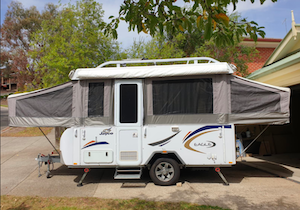
Camper Trailer
Camper trailers are very popular in Australia. They are light weight, manoeuvrable and stand up well to the rigours of harsh Australian roads and 4WD tracks.
They come in either soft or hard floor. The soft-floor are cheaper and allow you to have a large tent space (like ours) which is great for families who need the space for all the beds.
The hard-floors are quick to put up and bring the tent area off the ground but it does mean that the inside the tent space is limited.
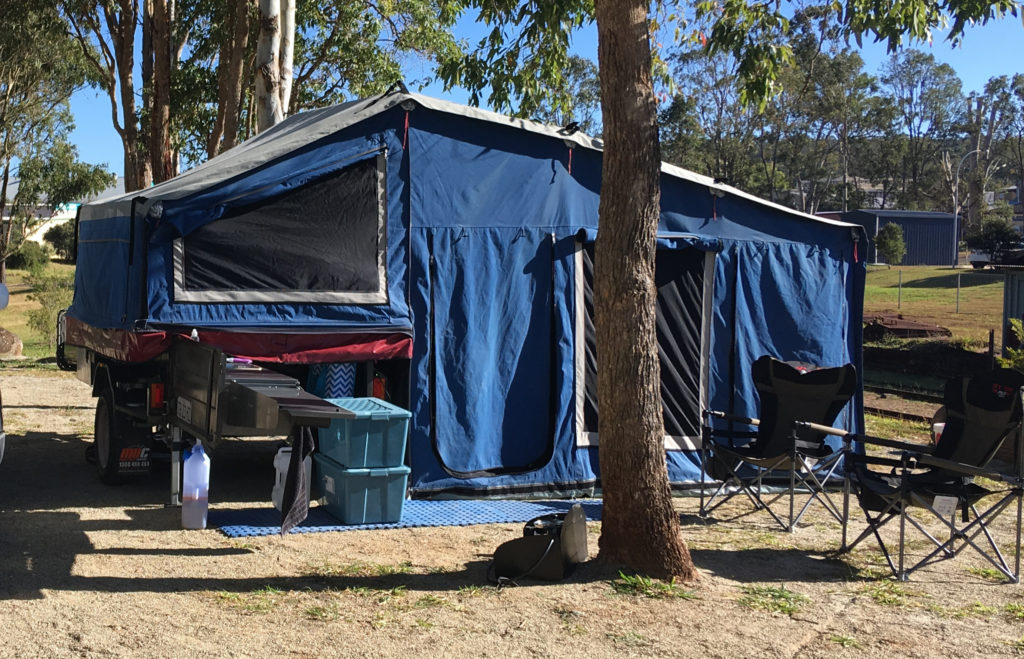
There are lots of camper trailer manufacturers here in Australia, we’ve compiled a big list below, as well as the pros and cons of our own camper trailer.
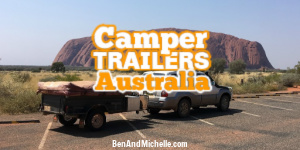
Tent / Roof top tent
The roof top tent is a design that will not limit where you can go.
Quick and easy to set-up, your bed is off the ground (and away from any wild animals), yet it packs up into a compact unit that sits permanently on the roof of your car.
This is a great option for serious 4WD enthusiasts, not needing to worry about towing anything and not adding too much height to their vehicle. It’s perfect for the person that wants to be outside all the time (except when they’re sleeping), because that’s where you’ll be.
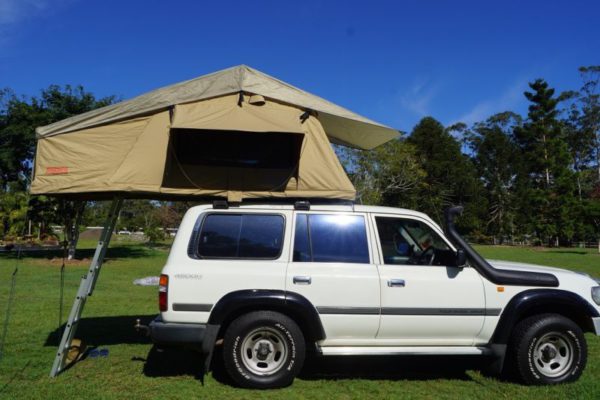
Bus / Class A
I do look on these a bit jealously sometimes.
With all that space, and huge windows, it’s as close to an actual home on wheels as you can get, I think.
But the idea of having to drive one of these things make me shudder, and then having to park it!
That’s why the bigger the bus, the more likely it is to have a car being towed behind.
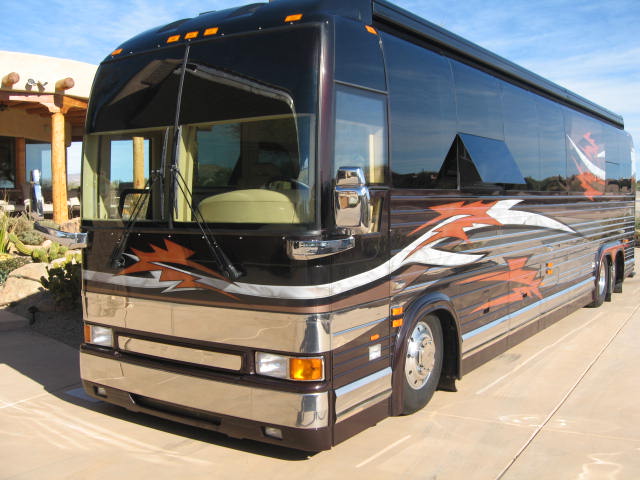
Fifth Wheel
There are not as many fifth wheels in Australia as there are caravans, but they are around.
While they are large in both length and height, they do look like they could have every mod-con (so you can get your laundry done without having to find a laundromat) you could want.
There are a couple of manufacturers in Australia but not heaps.
I can’t wait till they take off here in Australia and New Zealand and the prices start to come down (I might just be dreaming about that) because I would love one of these.
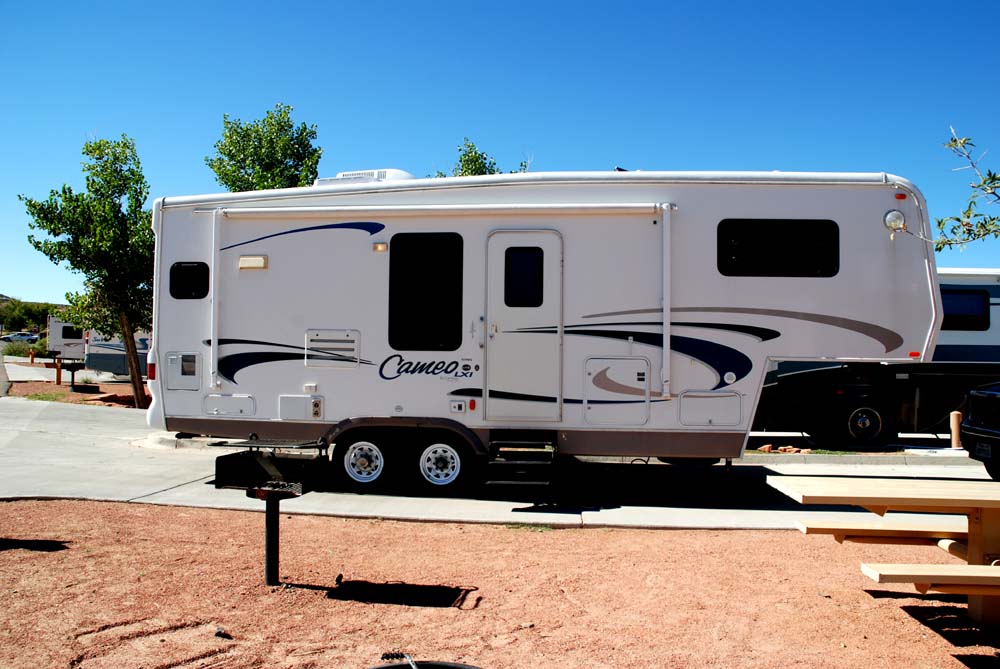
Love the idea of a fifth wheel, but not enthusiastic about their massive size? These are all the fifth wheels we’ve found in Australia that are small (less than 25ft).
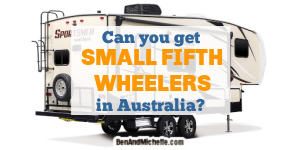
To Rent or Buy?
You’ve got two options for a vehicle to road trip around Australia, you can rent one, or buy one. There are two main factors which will determine the option that will suit you best.
- How long are you coming for? If it’s only a couple of weeks, then it certainly doesn’t make sense to go through all the hassle of buying a vehicle. If you’re planning on staying for a couple of months? Well then it starts to make more sense financially, if you buy a vehicle.
- The other factor to consider is whether or not you’re planning to go off-road. If it’s a 4WD drive adventure that you want, purchasing your own vehicle may be best option.
Some of the best views and campsites can be found down the dusty dirt roads, if you’re looking to escape the crowds and explore the raw (and often harsh) Aussie outback, then you may want to leave the sealed roads.
Having said that… you can travel all the way around Australia without leaving the seal. Just keep this in mind when you’re deciding whether you’re going to rent or buy.
If your Australian road trip is a couple of months or less, and you want a campervan or motorhome, then renting a vehicle will probably be your best option.
Just a couple of things to note:
Insurance – particularly for off-road
If you’re going to go off the sealed highway (at all!) then make sure you get the right vehicle and insurance package to go with it. It will cost you more, but if anything happens while you’re on the unsealed road you could be up for a hefty insurance excess … and that’s if you’re lucky enough to still be covered.
One-way rentals
You would need to fly into a main city and pick up your vehicle there. Main cities include: Sydney, Melbourne, Perth, Brisbane, Adelaide, Cairns or Darwin. But if you’re planning on doing a one-way rental, for example flying in to Perth, driving a rental vehicle across to Sydney and leaving it there, make sure to check out the costs. One-way rentals can be very expensive here in Australia.
Renting a caravan
There are places where you can rent a caravan, but then you’ll need to hire a tow vehicle as well. While it can be done, they are not as popular as campervan and motorhome rentals, and you will likely have to do a lot more searching for this. Campervan and motorhome rentals are everywhere, you can easily pick up your rental at the airport making it super easy and convenient.
Guaranteed Buy Back
There are some campervan hire companies that will sell you an ex-rental campervan and give you a guarantee to buy the vehicle back from you at an agreed price. They’ll buy it back at approx. 30-50% of the original purchase priced, based on when you bring it back (it needs to be within 12 months). You just have to have it regularly serviced.
This option looks like it’s set up to appeal to the young backpacking crowd, as I’ve only seen older vehicles in this category which are on the lower end of the price scale, but there’s no reason why it should be limited to the young. ☺

If you’re going to be in Australia for more than a couple of months, then this option probably makes the most sense for you.
Dealership or Private Sale
In Australia, there are two main ways you can purchase a vehicle, caravan, campervan. By buying from a dealership, or from a private party.
When you buy from a dealership it’s less hassle than buying privately. A dealership:
- Will have inspected the vehicle and made repairs if necessary
- Gives you more legal protection because they can only operate within strict laws
- Will handle all the paperwork such as transfer of ownership
- Must provide a history check of the vehicle
- Can offer extras such as warranties and road side assistance
I suppose the biggest turn-off about dealerships for most people, is that you’re dealing with professional sales people. While I don’t want to tar all used-car sales people with the same brush, many of us have had experience with that one salesperson that made us feel uncomfortable, or duped. Obviously, they’re not all like that and there are things you can do to protect yourself, such as getting a pre-purchase inspection.
Generally, the biggest benefit to buying private, rather than from a dealer, is that the seller may have more room to negotiate on their price. That can mean a saving of thousands of dollars, but offers less security for the buyer.
Petrol or Diesel
Having only ever bought regular 2WD cars before, I have never considered whether or not I should buy a petrol or diesel vehicle, they’ve always just been petrol. But once you start looking at 4WD vehicles, there are many that are diesel.
You can get both fuel types, pretty much everywhere around Australia.
Personally, I’ve found that in more metropolitan areas there are fewer diesel bowsers at the gas station. If there are 10 bowsers, then maybe 2 of them will be diesel. (But then, there are less diesel vehicles in metro areas too.)
The more rural you go, the more often diesel is found. I’ve read that in some of the really remote places, you can only buy diesel, and if you happen to get stranded with no fue, a passing motorist, local road workers or nearby farmhouse, is more likely to have diesel than petrol.
I like having diesel because I feel it’s safer to transport, and we have two 20L jerry cans which we carry with us.
Research before you get here
Once you’re figured out which city you’ll be starting from, start looking for the vehicle that you would like to buy, and follow the marketplaces websites.
These are the websites that I recommend keeping an eye on.
The reason why I recommend this, is that it gives you an idea of what types of vehicles are available, the prices, and which types of vehicles sell faster than others. This can help you to get an idea of prices, the condition you can expect a car to be in (at a particular price range) and the availability of different types of vehicles.
Gumtree.com.au – for cars, caravans and motorhomes. Gumtree is probably the equivalent of eBay or Craigslist and both dealers and private sellers advertise on here.
CarSales.com.au – for cars
CaravanCampingSales.com.au – for caravans, camper trailers, motorhomes etc
Just a note – I know that for Gumtree, I wasn’t able to contact any of the sellers (their contact details were hidden from me) because I was in New Zealand at the time that I was doing all the research. When we got to Australia, Gumtree still thought I was in New Zealand and still wouldn’t allow me to see the sellers contact details. A quick phone call to their Helpdesk confirmed that I was now in Australia and they were able to clear my account.
Checks that need to be done prior to purchase:
Rta checks for ownership – by different states.
If you’re doing a private purchase, then you must do a check of who is the legal owner and if there is any finance on the car. This is easily done online at: https://checkrego.com.au/
Pre-Purchase Inspection
Regardless of whether you’re buying from a dealership or a private party, I would still recommend getting a pre-purchase inspection of the vehicle. If you’re confident to do that yourself, that’s cool, but if you’re as clueless as me about all things mechanical, you’ll need to book a pre-purchase inspection with a local mechanic or an organisation like the NRMA.
We chose NRMA , which is a nationwide organisation that does insurance and road-side assistance.
We ordered two pre-purchase inspections through them and found them to be great. It seems that they have inspectors out on the road all the time so once you book they’ve got a team of people they could assign the job to.
For us in Sydney, this meant that we were able to ring up for the inspection and have it conducted within 24 hours. They provide you with quite a comprehensive report (emailed to you) and give you a fairly good idea of what you’re getting yourself into.
We’re so glad we did this.
The first car we had inspected was, in our inexperienced opinion, okay. It was a good price and there didn’t seem to be anything wrong with it. The pre-purchase inspection showed that there were a number of items that would need some serious work in the near future.
The second vehicle we had inspected actually gave a glowing report and we’ve been really happy with our purchase.
The pre-purchase inspections, while not fool-proof, give a bit of peace of mind for those of us mechanically challenged.
Checklists for inspecting a second-hand caravan / camper trailer etc
I’d like to say that I have a comprehensive checklist for anyone purchasing a second-hand caravan or camper trailer. But I don’t, which is pretty much how we ended up with the camper trailer that didn’t have half the features that were listed on it’s ad. But it was road-worthy and safe, thank goodness.
Here are some checklists that will help you on your initial inspection.
Camper Trailer Checklist
CamperTrailerAustralia.com.au – Buying a Used Camper Trailer
AussieLeisureLoans.com.au – Checklist for Buying a Camper Trailer
Caravan Checklist
CaravanBuyersGuide.com.au
Big4.com.au – Important Tips for Purchasing a Used Caravan
Outdoria.com.au – Ultimate Guide to Buying a Used Caravan Online
Campervan Checklist
Camplify.com.au – Ultimate Guide to Buying a Used Campervan
RollingSolo.com.au – Killer Checklist for Buying a Motorhome or Caravan
Motorhome Checklist
Buying a second hand motorhome becomes a little bit trickier if you’re planning on buying privately. When buying privately, you have no recourse should you find issues with the motorhome. From my research, it seems that the sensible option for buying a motorhome is to buy one from a dealer. Unless you’re able to do the inspections yourself, of course.
There are companies that will do an inspection for you, however there are not as many as there are vehicle inspectors, which makes sense.
Ownership Costs
Of course, there is always costs associated with owning a vehicle. For any international visitors, here’s what you’ll need to consider for Australia.
Car registration
Vehicle registration is different in each of the eight states of Australia. But here’s the general information:
- Registration lasts for a year
- You may need to have your vehicle inspected (at a registered inspection centre, such as a mechanic) for road-worthiness
- If the registration runs out while you’re on your trip, you may need to return to the state that the vehicle is registered in, to re-register.
- You are required to purchase Compulsory Third Party (CTP) insurance when you register your vehicle.
The rules and costs are different for each state, so if you already know where you’re going to buy your vehicle here are the links to each states vehicle registration information:
Australia is not like the USA where you need massive insurance in order to just walk down the street, but you will want to have vehicle insurance.
In Australia we have Compulsory Third Party (CTP) insurance which is paid when your vehicle is registered (you can’t register without it). CTP is not comprehensive insurance, it only provides the driver cover for any legal liability for injury or death as a result of an accident for which the insured is responsible.
You can easily purchase comprehensive insurance online. When we bought our car, I organized our insurance over the internet (on my phone) while Ben went through the sale process with the seller. By the time we drove off, we were fully covered.
Roadside Assistance
This isn’t a pre-requisite of owning a vehicle, but it’s a very, very high on the list of ‘should haves’.
Unless you’re a mechanic yourself, travelling with all your tools… and spare parts, then you should have road side assistance. ESPECIALLY if you’re travelling to remote areas. You’ve got to remember that in some parts of Australia it could be 300kms to the nearest town, and by town I mean a pub, general store and a gas station. Getting a tow truck could cost you thousands and if your vehicle is broken down, you’ve got no way to tow your home. It gets very complicated, very quickly. Just get roadside assistance, okay?
Options include:
The various RAC is each state:
Once you’ve got your vehicle sorted, you’ll be looking for somewhere to park each night…
I want to talk about camping in Australia, because the type of camping you want to do will help determine the type of set-up you need and any of the accessories you’ll likely want.
Caravan Parks
Caravan parks can be found all over Australia. In every city and town and sometimes even in the very smallest of towns that, if you blink, you’ll miss it.
All caravan parks will have the following facilities:
- Powered sites – where you can plug into 240V power and water, and drain your grey water.
- A facilities block – with toilets, showers & laundry room
- A kitchen – with basic cooking (sink, stove, fridge, bench space) but many have extra things such as toaster, oven, blender, pots and pans, crockery and cutlery.
- Dumping – so you can empty your toilet cassette or black tank.
Caravan parks can vary widely, from a basic campsite with not much appeal (or grass), to resort-like complexes with multiple pools, children’s play areas, cafes, games rooms and mini-golf.
Private Camping Sites
With the popularity of WikiCamps (an app that lists all the campsites around Australia – see section ‘How to find campsites’ below) it’s been much easier for people to set up campsites on their private property. Since campers will use the app to find their next campsite, the private campsite owners don’t need to spend a fortune on traditional advertising. They just list their campsite on WikiCamps and that’s it.
This could include farms, lifestyle blocks, the local pub with a big garden out the back or some other business with space out the back.
Since this is not regulated, you will get a huge range of options. It may just be grassy spot down by the river with no facilities, or a powered site with water and access to a bathroom block.
Prices are also variable, it can be quite pricey if you’re in a popular tourist area, or it may be ‘free’ but with the expectation that you will buy a drink and/or a meal in the pub.
National Parks
There are National Parks all over Australia and they provide some of the best outdoor experiences. Each of the National Parks is managed by the state government, so they’re all different.
You will find that there is a huge array of camping options, from free camping with no facilities, to fully managed campsites with power, water, dump points and a kitchen.
Some of the National Parks require that you pay a fee to enter the park, and then you pay camping fees on top of that. But they’re all different, so search the website of the National Park for each state. These links should get you started:
Free or Low-Cost Camps
First lesson… you will not find free camps in very touristy areas.
For example, if you’re travelling anywhere along the east coast, don’t expect to find any free camps on the beach. For free camps, you will need to head inland and further away from the main touristy areas and then you’ll find HEAPS of free or low cost camping options.
The one caveat I have to not being able to find free camping along the east coast, is rest stops. There are quite a lot of roadside rest stops where you’re able to stop for the night. But they’re not exactly in scenic areas, can be noisy since they’re right beside the highway and may or may not have facilities. Most will have at least a long drop toilet, but that’s about it.
Oh, and don’t park in designated truck parking areas, these are rest areas for truck drivers only.
More info on free camping in Australia:

How to find campsites
Here are the two most common ways to find campsites in Australia:
This app is a crowd-sourced database of all the campground and caravan parks across Australia. It shows the details of the campsite, the facilities available, the cost, as well as other information such as whether they allow dogs, local sites to see and the proximity to other amenities. The value of the app lies in the comments, ratings, photos and updated costs of fellow campers.
The app also shows places of interest, dump points, day use areas and even has a map feature to direct you straight to the campsite.
At just $7.99 it is worth every single cent.
Camps Australia
This is a physical book – now I haven’t used this myself, but people that I’ve talked to have been pretty happy with this book. They also have an app which is still only $9.99. I think that the main difference with the Camps Australia list of campsites, is that they’re all verified sites.
Okay, so now that you know the different types of camping that you can do in Australia, hopefully you’ve got an idea of the type that you and your companions will want to do.
If you’re going to be staying in caravan parks for the duration of your trip, then you will be fine with a more basic set-up; you can use the caravan parks’ toilet, shower, kitchen and laundry. You can charge up your electronic devices each night using the supplied power, you can get fresh drinking water and dump your toilet (if you have one).
But if you’re planning to do free or low-cost camping then you’ll need to be self-sufficient . And that means having access to the following things:
- Water supply
- Grey water disposal
When you’re free camping you probably won’t have access to drinking water, so you need to take enough for you and your travelling companions, for the number of days you plan to stay.
Your caravan/motorhome/campervan is likely to have a water tank already, but consider how big the tank is, and all the things you’ll be using that water for such as: drinking, cooking, washing (dishes and people) and the toilet.
In order to extend your stay you’ll need to think about ways to conserve water, carry more water or have a way of re-filling your water. This may include things such as:
- Taking navy showers, or no showers, especially if there is a river or lake where everyone can go for a swim. (No soaps in the waterways though!)
- Taking extra water such as a tank in the tow vehicle, water jerry cans, water bladder or even just extra plastic bottles of drinking water.
- It may be that you’re able to fill your water containers (e.g. jerry cans) when you’re out and about sightseeing and use these to fill up the tank in the caravan.
You’ve got to remember that in some areas of Australia (i.e. the whole middle of Australia) water is scarce and you need to be mindful of where you’re going and if there’ll be water.
It’s no problem in built up areas, but you’ll need to think about this fact when travelling in remote areas.
When we first set out on our road trip around Australia, I had thought that an on-board toilet wasn’t such a high priority. I figured that if we’re free camping with no toilet facilities, then I’d just go in the bush. But not all free camps are out in the bush. Some are beside the highway, or in an open field, or jam-packed with other free campers.
This is where it really comes in handy to have your own toilet on-board.
There are a couple of different types of toilet, that I think it would be handy to know about.
Cassette Toilet
This is the most common caravan/motorhome toilet that you will find in Australia. It’s not too dissimilar to a regular toilet, you open the flap at the bottom of the bowl, you do your business and when you flush it empties into a small holding tank/cassette, and then you close the flap.
Emptying the cassette involves taking the cassette out (usually accessed from outside the caravan or motorhome) and dumping it into a dump station or in a toilet.
Holding Tank Toilet
These are the most commonly found toilets in large RVs in North America; where the toilet empties in a holding tank (black tank) and can be pumped out at a designated dumping point. These are not hugely popular in Australia, they are around, but cassette toilets are well and truly the most popular.
Portable/Chemical Toilet
The porta potty or chemical toilet is a self-contained unit you can use anywhere. It works on the same principle as the cassette toilet above, but the porta potty comes in two parts with the holding tank or cassette part right under the toilet seat part. You can easily separate the bottom half of the toilet from the top half so that you can dispose of the contents.
The porta potty can be easily moved around (just pick it up, it’s not attached to anything and doesn’t have any hoses etc) which makes it a great emergency loo.
Store it anywhere on your rig and just bring it out when it’s needed.
In less populated areas of Australia, it’s acceptable to go to the toilet out in nature. However, there is a bit of etiquette involved in this.
Here’s some basic tips for going bush toilet in Australia:
- Be discreet. No one wants to see you flashing your bits around and definitely no one needs to see you defecating.
- Number two’s require you to dig a hole. Don’t just break ground , but dig a decent depth hole that isn’t just going to have the dirt blown away.
- Toilet paper – now this is really important. We have a little bit of an ongoing problem with toilet paper being disposed of incorrectly and creating a despicable scene at some of our most beautiful spots. DO NOT leave your toilet paper behind. Don’t bury it, because it will get dug up by some curious critter. You have two options:
- either put a match to your toilet paper and burn it (although not in the middle of a dry field or during a fire ban!) OR
- just put it in the rubbish. Take a little rubbish bag with you and put your loo paper straight in there after use. It’s so easy to do, yet some people seem to think they’re exempt from this problem and refuse to dispose of their toilet paper properly. Once you see toilet paper strewn around, you’ll know exactly what I’m talking about, and you’ll be as annoyed (and flabbergasted) by it as I am.
Central to your power solution is your batteries. You’ll use them to keep power hungry things going, like:
- Electronic devices such as laptop, phone, camera equipment
- Microwave, coffee maker, TV
But you’ll need to keep the batteries topped up, and you do this by recharging them by either:
- Charging from the car alternator when driving
- Solar panels
- Battery charger when connected to mains power or a generator
If you’re renting a motorhome or campervan, then this is most likely to be set up already. But if not, here are the BASICS of what you’ll need.
1. Battery – Deep-Cycle Battery
First question I get is: can you use the battery that’s already in your car – the one that’s used to start the car – to power everything?
No – you need another battery that is a deep-cycle battery. You may hear this referred to as an auxiliary, secondary, or a dual battery system. This is the battery that will be used to power the fridge, lights, devices etc.
A deep-cycle battery is a lead-acid battery designed to be regularly deeply discharged using most of its capacity. In contrast, starter batteries (e.g. most automotive batteries) are designed to deliver short, high-current bursts for cranking the engine, thus frequently discharging only a small part of their capacity. Thank you Wikipedia.
There are different types of deep-cycle batteries, the most commonly used types in Australia are the Lead Acid Battery and the AGM (Absorbed Glass Mat) battery.
Lithium batteries are becoming more and more popular as they are more efficient, lighter (in weight) and last a lot longer. They are also much more expensive, you can read more about them in this article.
The deep-cycle battery can be fitted under the bonnet of some cars (if they have a space already available) or they can be fitted into the cargo area of your car or in the camper trailer/caravan. It will depend on the type of battery you have and the space available.
What do the different sizes mean?
The battery size is determined by the Amp Hours (Ah) of the battery. If the battery is 100Ah, this means that you have 100 Amp Hours of power available (theoretically).
If you have power consumption of 10 amps per hour (for example, you’ve got a fridge that uses 5 amps of power per hour, lights that use 2 amps per hour and other devices that are using 3 amps per hour) then that means the battery will last for 10 hours before it is completely flat.
Unfortunately it doesn’t quite work like that, AGM batteries should only be discharged about 60-80% before you need to recharge them again. But the Amp Hours is a good way of defining the size of a battery.
Now let’s talk about how a battery is recharged.
2. Recharging by Driving
Your deep-cycle battery can be charged by being hooked up to the start battery in your car, which is charged up by the alternator when you’re driving.
If you’ve heard of things like a DC-DC charger or VSR (Voltage Sensitive Relay) these are pieces of equipment that go between your car’s start battery and the deep-cycle battery, this is to make sure that the battery is charged enough, but not too much and to make sure that the start battery never gets drained.
3. Recharging with Solar Panels
If you want to recharge your batteries using solar panels you will need to have a solar controller or regulator between the solar panels and the battery. The solar controller ensures that the battery does not get overcharged.
The size of the solar panels you need, will depend on how much power your devices consume. A set-up with a large fridge, multiple lights and devices will need more solar panels than a smaller set-up. I’ve found a very informative article on Hema Maps on the The Basic Guide to Camping with Solar Power .
4. Recharging with a Battery Charger
When you have access to mains power, you can also recharge your AGM battery with an AC battery charger . You just plug the charger into the power point and connect it up to the battery.
Battery chargers come in different amp sizes, the larger the amps the quicker the battery will charge. For example, a 10A battery charger will take about 12 hours to recharge a 120Ah battery. Whereas a 20A battery charger will take 5 hours.
Or from a generator – If you have a generator, you can use the AC outlet to plug in the battery charger, and use it just like it were mains power.
5. Powering your 12v devices
Anything that uses 12v can be plugged straight into the battery . This includes things like your portable fridge or lights. You need adaptors or a battery box that are connected to the battery so that you can plug the cigarette lighter plug into the battery.
6. Using 240v devices – you need an inverter
There are other electronic equipment that doesn’t use 12v power, things like laptops, microwaves and toasters. They have the normal plug that you use in your house and run on 240v AC power.
In order to power these devices, you will need an inverter that will convert the 12v DC power of the battery, to 240v AC power for your devices.
The size of the inverter you buy, will depend on the power consumption of the devices you’re running (i.e. the watts). For example, charging a laptop uses less power than running a microwave, so you will need a bigger inverter if you’re planning to take a microwave with you.
Air Conditioners
Here’s a question that we’ve pondered ourselves as we’ve sweated away in hot and sticky Darwin, or fried in the dry, but 40°C heat of Dubbo: can we run an air-conditioning unit while we’re free-camping?
From batteries? NO
From a generator? Maybe. I’ve heard plenty of people are able to run their air-con from generators, you just have to make sure you get a generator that is rated high enough to power your air-con.
These should be part of every travellers set-up, as important as your batteries, or your hat, or your phone, but so many people forget these.
First Aid kit
Make sure you have a suitable first aid kit and check that everything is within date (i.e. not expired) and that you know how to use everything in there.
Have you all taken a first aid course? Don’t forget, when you’re out in the middle of nowhere (i.e. much of Australia) then you must all look after each other, and that includes having a well-stocked first aid kit and the knowledge to use it.
Search more first aid kits here.
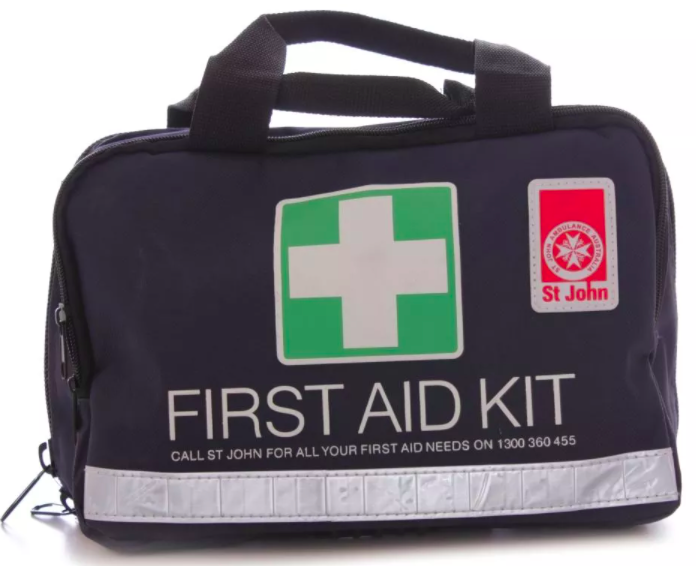
Personal Locator Beacon / Satellite phone
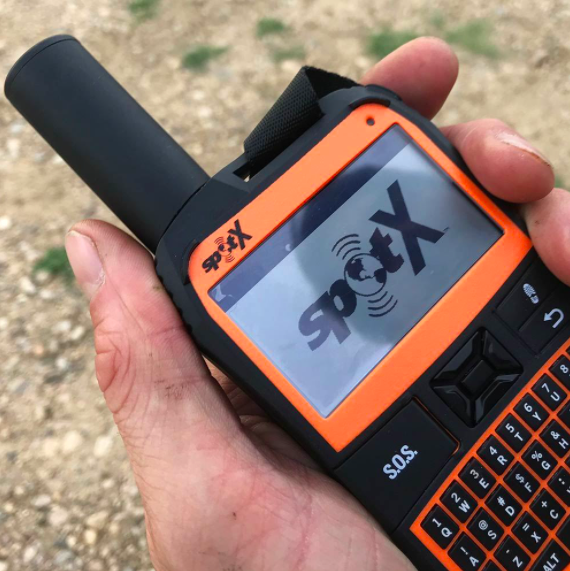
Consider taking a Personal Locator Beacon (PLB) with you.
Having this device with you can mean the difference between life and death, particularly in remote areas. PLBs are designed to be used on land, and are designed to stay with individuals rather than vehicles. You should make sure that you get one that has GPS as this means it will be much quicker for emergency services to find you. See the Australian Maritime Safety Authority website for more details.
Another option would be to either buy or hire a satellite phone.
While not as cheap as a cell phone, they do mean that you can make calls even when you’re out of cell phone coverage.
And there are satellite messenger devices like the SpotX , where you can send text messages via satellite.
Search more PLB / Satellite phones here
Fire Extinguishers
This one is a no-brainer really. Make sure you have a fire extinguisher in your vehicle and in your caravan/camper trailer.
Search more fire extinguishers here
Emergency Contact List
This is a simple, free and easy to do thing that will save you mountains of stress should you have an emergency situation.
A piece of paper that is easily locatable to you and those travelling with you, that has all the important contact phone numbers and details.
Things like:
- Everyone’s mobile number – because you may not have memorised their numbers since they’re all in your mobile phone anyway
- Phone numbers of close relatives – like parents and siblings
- Your doctors name and number
- Your medicare numbers
- Your car insurance phone number and policy number
- Health insurance numbers
It’s simple stuff, but when it’s an emergency and your phone happens to be flat, you’ll be super glad to have all this info handy.
I’ve got a free emergency contact form template over here if you would like.
There are a couple of large mobile phone providers in Australia like Telstra, Optus, Vodafone, Virgin as well as many smaller companies.
Without a doubt, the company with the best coverage around Australia is Telstra. They have the largest infrastructure network and therefore the largest coverage of Australia.
Update: I’ve been reading reports of Optus setting up cell towers in some remote towns so it will be worthwhile keeping an eye on them too.
Telstra Coverage Map

Vodafone Coverage Map
Telstra seem to have a bit of a reputation for not-that-great customer service, but that hasn’t been our experience at all. Yes, you’re going to get put through to a call centre in India, but each time they’ve been knowledgeable and able to help out with our situation.
Also, Telstra is certainly not the cheapest, but with the coverage they have (in both cell service and customer service) they really are the best choice.
If you live in Australia already, then you’ve likely got your phone sorted out already.
If you’re travelling to Australia from somewhere else, then you will probably want a prepaid service. The costs for prepaid phone are not too bad… it’s data that’s the big cost.
Ahh, the bane and blessing of every travellers existence!
Getting internet in Australia isn’t too hard, especially if you don’t need lots of gigs and you’re not in a remote area. But if you need/want heavier internet usage, things get a little bit trickier, and a lot more expensive.
Here’s how you’re going to get internet in Australia:
Free Wi-Fi can be found in all the regular places: shopping malls, airports, MacDonalds, hotels and libraries. Most often this will be capped, so of course this is only good for checking email, social media and browsing.
Hot Spot from your phone or mobile modem
This is a popular, and easy solution. If you’re with Telstra you’ll be able to get internet most of the time. For those on pre-paid it may be your only option.
If you’re not on unlimited data, then please take note, you must change your internet habits!
We found that on the road we had to be a lot more conscientious of our internet usage. You can’t watch whatever you like, whenever you like. You’ve got to stop going down the rabbit hole of endless Facebook or Youtube videos and make the most of free wi-fi when you get it, buy cheap DVDs from the second-hand shop, or read a book. Seriously, you have to get off your laptop / devices for this trip. I think you’ll find that it’s not hard though, there’s so much to see you’ll be glad to see how much you don’t need the internet.
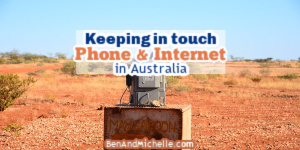
TV in Australia
I think people who watch TV while their on their road trip around Australia cop a bit of flak for doing so.
I used to be one of those people that gave them flak. :-/
But now that we’re on the road ourselves, I totally understand peoples desire to watch some TV.
After a day of adventuring and exploring, it’s really nice to be able to relax in the evening, catch up with the news, watch your favourite TV shows and maybe even a movie.
We do exactly the same thing, but we don’t have TV, we use our laptops and internet.
Since TV isn’t my thing, I’m going to refer you to Free Range Camping who know more about it than me. See their article all about getting a satellite TV kit here .
So you’ve arrived in Australia, you’ve got your home on wheels, you’ve packed in your clothes and bedding, you’ve stocked up the cupboards and fridge and you’re ready to hit the road!
But which way do you go?
Well, that will depend on a few factors; where you’re flying in and out of, the time of year that you’re visiting, how long you’ve got and your bucket list of must-see places. But the main factor that you’ll want to keep in mind is the weather.
Because Australia is so large, it has a wide variety of landscapes… and weather. In the north you have tropical rainforests, in the south and east you have mountain ranges and the centre is one huge dry desert.
So you’ll want to consider the timing of your visit to some of these areas.
The north of Australia is semi-tropical, making it very hot and humid in the summer (Dec-Feb) and subject to monsoonal type rains and tropical cyclones. The rainy season runs from approximately November to April and can severely hamper travel in the region. Some roads become impassable, being either washed away or totally underwater.
The vast expanse that is the middle of Australia is desert or semi-arid. In the summer, temperatures can be in the high 30’s to 40°C (104°F) during the day.
The winter months are a popular time to travel to the centre of Australia because the day time temperatures are comfortably warm, but you do need to be aware that at night the temperature plummets and you’ll want to have warm clothing and bedding.
A more temperate climate is found in the south-east and south-west regions of Australia. While it’s cold for us, it will rarely get as cold as 0°C (32°F) so it’s not nearly as frigid as our northern hemisphere visitors would be used to.
Southern Hemisphere Seasons
The southern hemisphere seasons are:
- Summer – December, January, February
- Autumn – March, April, May
- Winter – June, July, August
- Spring – September, October, November
You will find that many, if not most, people travelling around Australia will travel to the northern half and centre of the country in winter, and enjoy the warm tropical weather while avoiding the monsoonal rains and heat of summer.
Then in summer, they’ll head back south again where it will still be a hot summer, but not as hot.
Shoulder Season
We found ourselves travelling in the north of the country during the spring shoulder season (August/September) and we loved it. While literally hundreds of caravans were heading south as we went north we got to enjoy much less crowded camps but still pleasant temperatures.
Public Holidays & School Holidays in Australia
Being mindful of the public holidays will most likely help you with ‘crowd-control’ more than anything.
Starting your trip in Sydney? Well you DO NOT want to be picking up your campervan from the airport at 2pm on the Thursday before Easter and be heading north. You will be joined by every Sydney-ite desperate to leave the city limits on their first long weekend since summer.
Sure you could do it, but it will save yourself a heap of stress if you knew it was a long weekend and decided to stay the night near the airport instead.
You can find all the public holidays here and since it would also be best to avoid school holidays, if possible, here’s the link to them here too .
Bucket List items
And then, of course, the other thing to take into consideration is those ‘bucket list’ places that you’ve always wanted to see.
Planning the actual route
For our trip around Australia, it was a case of ‘head north’ and then figure out the rest as we go.
However, if it’s a shorter trip, or you have limited time then you might like to plan out your itinerary a bit more.
Online Trip Planners – these are where you can input your start and finish points, and stops along the way, and it will show you your route along with some tourist attractions along the way. I find them to be a little bit limiting, but they can be a great way to start your planning and give you some ideas.
Here’s one from the NRMA that you may find helpful: Holiday Finder
Pre-made Itineraries – you’ll find lots and lots of itineraries already planned out for you, if you’d like to go that route. For example, Tourism Australia has some great self-drive itineraries here , that you could just follow these trips and you’ll have a great time.
But chances are, you’ll use them as a guide for planning your route, taking note of the things they recommend that appeal to you, and ignoring the rest.
Google Maps – if you enjoy the planning process, you could use something as simple as google maps and enter in your start and finish points, and the places on your bucket list in between.
It’s great how google maps gives you the drive times so you’ll be able to gauge how far you can travel each day.
While you’re there, you can search for local accommodation, restaurants and things to do. You can have a look at the map and see how far away the water is, the next town, the next interesting site to visit.
You can use the information that you find from itinerary examples and online trip planning tools to give you some idea of what would make a good trip, but then totally design it to your own needs, desires, budget and timeframe.
Personally, it’s my favourite way of planning for a trip because I’m in total control.
Packing is a bit of a personal preference and I’m certainly no fashionista, so I won’t be listing out the clothes I think you’ll need. But rather, some of the items that you may not think about bringing.
So of course, bring the shorts, t-shirts, nice dress, button up shirt, comfy undies and high heels if that’s what you want, these are the other things:
Protection against bugs
Light coloured and loose, long sleeve top and long pants.
As dusk approaches and you want to sit outside with your glass of chardonnay or tinnie of VB, there’s a good chance that the mosquitoes or sand flies are also thinking of settling in for their happy hour feast… of you!
It’s no fun wearing longs when it’s so hot, but it’s either that get eaten alive. Or sit inside.
This is a particularly sore point for me, because the insects seem to LOVE me. Insect repellent and long everything doesn’t seem to deter them. They find their way in and it’s no fun.
This photo is what happened in Darwin when we left our window flaps open. All the doors and windows had fly screens but on one side the weave of the fly screen was a bit bigger than all the other openings, we normally kept it shut but it was so hot we made sure that every one was open. The tiny little blighters got through the bigger weave (which happened to be right beside me) and had a feast of my legs. Itchy. For. Days.
Insect Repellent
Everyone says that the only insect repellent that is any good must have DEET in it to be effective. While I’ve been happy enough to buy this at the supermarket I have to admit, it is a pretty ‘corrosive’ product. We had a roll-on insect repellent that leaked and while I can’t remember what it corroded or stripped, but it was dramatic enough that we did quickly decide that it need to be stored in a zip lock bag from now on. And we put this stuff on our skin!?
I’ve read quite a few recommendations for natural products available here in Australia. I’m not endorsing them, because I haven’t tried them; but I’ve heard them mentioned a quite a few times so I’m putting their website links here for your reference: Good Riddance & The Locals
Heat & Sun
Okay okay, everyone sees pictures of sun-kissed Aussies enjoying the beach, splashing around in their next-to-nothings and looking youthful and happy.
That picture is not so common anymore.
More and more people are becoming painfully aware of our harsh Aussie sun and seeking protection from it.
While a cap may look cool, if you’ve got a favourite wide-brimmed hat then I’d bring that with you. If not, you’ll be buying one when you get here anyway.
Long sleeves and pants
You know, when you see anyone that works out in the Australian sun all day (think road workers, farmers, those crazy cyclists and hikers that walk through the outback) they are most often wearing long pants and sleeves and a wide brim hat. Take your cue from them, especially if you’ll be spending your whole day outside in the summer.
In the water is where we are usually having the most fun and so forget to reapply sunscreen. Rashies are so, so popular now, so join the trend. They are especially great for kids, and everyone is wearing them, so you won’t be the odd one out.
It’s not as effective as staying out of the sun in the first place. But if you can’t/won’t keep your skin out of the sun then at least find a high SPF sunscreen and reapply regularly.
Yes, it does get cold!
I’ve reminded you a few times throughout this post that it can get really hot in many parts of Australia, but it’s certainly not hot all the time and in all places!
If you’re going to be in the middle to south of Australia during the winter months, then you’ll need to pack your warm clothes too. Average winter temperatures would get as low as single digits in ° Centigrade (34-48°F).
And don’t be fooled into thinking that the middle of Australia is hot all the time. In the winter, while day time temperatures may be warm, it can get down to zero (°C) overnight and take a couple of hours to warm up again in the morning.
There are a few considerations that you need to be aware of when it comes to driving in Australia. Things that may be quite different to where you come from, so let’s list them out:
International Drivers
In Australia we drive on the left side of the road and the majority of vehicles have the steering wheel on their right side.
You can use your overseas license in Australia for your entire visit, as long as you remain a visitor. If your license is not in English you must also carry an English translation or an International Driving Permit (IDP). Information on the IDP can be found here .
Australian Road Rules
Just like you would in any new country, it makes sense to familiarise yourself with the local road rules. A good article which outlines the major parts of the road rules (especially those pertaining to international drivers) can be found here . (Scroll about a third of the way down the page to get to the heading ‘Australia Road Rules’).
Driving at dawn or dusk
What might be quite different for our international visitors is that it if you are in a country area, it is recommended that you don’t drive at dawn or dusk times of the day. This is when the wildlife is the most active, and the chances of you hitting a kangaroo, wallaby, wombat or other creature, increases greatly.
You may not think that hitting a wallaby is that big a deal, but if you were to hit a large kangaroo that’s decided to bound across the road at the last minute, these can be big enough to cause serious damage to your car.
Driver Fatigue
In some parts of Australia you can be driving for hundreds and hundreds of kilometres, with little change in the landscape and huge distances to cover. Don’t push it. If you’re tired, there are plenty of designated rest stops, so make the most of them.
GPS and maps
You may think, like us, that phones are so useful now and that getting a GPS is a waste of time and money.
Or you may have figured out already, unlike us, that in the middle of the outback a phone is useless if you don’t have any reception. So at the time when you really need reassurance that you’re heading in the right direction to your intended campsite… you have no idea.
Unless you’re able to use an app that doesn’t require an internet connection but still uses the GPS function.
Otherwise, I’d recommend getting a GPS so you can have your navigation running all the time and there’s no arguments when you want to use the phone to take pictures and videos to post on Instagram!
And don’t forget the good old paper map. You remember them, right? You know that a paper map isn’t ever going to leave you stranded because it can’t get an internet connection, or doesn’t have a line of sight to the sky or has gone flat. There is nothing quite so old school, yet safe and practical, as having a physical map. You’ll find these in every Information Centre around the country.
Most Useful Apps
There are gazillions of apps that you could be using to plan and navigate your way around Australia. But for us, there were just a handful that I couldn’t do without:
I mentioned WikiCamps in the camping section and this is, without a doubt, the most used app on my phone. Ok ok, maybe facebook and Instagram are used more often, so I should probably say that WikiCamps was the most important app on my phone. I used it everyday that we needed to find a new camp.
It’s just $7.99 and worth every cent.
This app used to be part of the WikiCamps app but they’ve separated it out into it’s own app. There were a couple of times that we became a little concerned that our fuel was running low but we weren’t sure how far it was to the next town. Or we were at a town with half a tank of diesel left but diesel was $1.55 per litre. A quick look on the app assured us that the next town was 130 kms in the direction we were going and it was $1.42 per litre. So we kept driving. It helped us to save money and, more importantly, keep the stress and anxiety levels in check! This app is free.
Special Considerations for Outback Travel
I’m just going to put this map of Australia here, superimposed over a map of North America, to remind you of just how large Australia.
But while the population density of the United States is 33 people per km 2 , the population density of Australia is a measly 3 people per km 2 .
Population Density – Australia Map ( Source )
Once you have a look at the geography of Australia, it all starts to make sense when you see that most of the middle of Australia is largely uninhabited. Sure there are small towns, and even a large town (Alice Springs) but no cities, and lots and lots of space in-between.
See all that pale yellow expanse in the Population Density – Australia Map above? All of that space has a population density of less than 0.1 person per km 2 . So that’s just one person per 10km 2 . That’s hardly any people.
I think I’ve made my point. You get it, that much of Australia is large and remote.
It’s not only remote and sparsely populated, it’s also desert or semi-arid. Which means you MUST ensure that you have enough drinking water on-board your vehicle so that, should the unforeseen happen, you can at least stay alive.
It’s also going to be hot. Depending on the time of year that you travel, it’s going to be really hot. Make sure you’ve got appropriate clothing, that your set-up affords you some shade when you stop, and that you have ways to cool down when you need to.
Some of the ideas we had are a 12v fan, a fridge or freezer for cold drinks, and a spray bottle with water that you can squirt on yourself every now and then.
Fuel & Other Spares
Use the FuelMaps app to see where your next fuel stop is. Carry extra fuel if possible.
Make sure your vehicle is in good working order before you leave on your trip.
Make sure to take the common spares such as oil, water, spare wheel & wheel changing kit, some basic tools.
Road Conditions
Anyone who’s driven on an unsealed back country road will know the displeasure of road corrugations / washboards. Having everything shaken to within an inch of your life is bad enough… doing so for over 500km is just soul-destroying!
We found this out ourselves due to some less than stellar planning. On the road from Burketown QLD to Boroloola NT, I couldn’t understand why the Maps app kept wanting us to go the longer 1,255km route instead of the more direct 523km route.
If I’d taken just a few moments to notice the time difference between the two routes, I might have put two and two together.
I didn’t.
And hence, we had two days of bone rattling corrugations. Our car and camper trailer handled the corrugations with aplomb – even though EVERYTHING was covered in red dust – but imagine if we’d had a caravan. I think that would have, literally, shaken a caravan to pieces. With our light little camper trailer we could afford to make mistakes like that and be none the worse for wear.
When we get a caravan, we’ll have to be more careful and aware.
We have no regrets taking that road though. What ensued was a great little adventure that involved a lot of laughing as we shuddered down the road, a couple of exciting (to us) river crossings and picking up three locals in the middle of nowhere to give them a ride to the next town… 150kms away!
Alcohol Restricted Areas
Here’s something you may not be aware of:
There are parts of Australia where alcohol restrictions are in place. You will come across these areas in parts of the Northern Territory, Far North Queensland and some parts of Western Australia. The restrictions vary in each state and area, and are constantly changing, but can be a total ban on alcohol consumption or a limit on how much you can buy, when you can buy and what you can buy.
There will be signs on the road as you enter into these restricted areas, but you’ll also be made well aware of any restrictions when you buy alcohol. If in doubt, just visit the nearest Information Centre and they’ll have all the info you need.
In one bottle store I heard a lady complaining loudly that she was a visitor to the area and shouldn’t have to be subject to the same restrictions as the local people.
But you’ve got to remember that while these restrictions may be a bit of a nuisance to you as a visitor because they limit how many drinks you can have at your daily happy hour; the restrictions are certainly not for your benefit.
It’s for the benefit (in terms of safety and health) of the local community. In the aboriginal communities where these restrictions are in place, the goal of the restrictions is to minimise the dreadful harm caused by rampant alcohol abuse and misuse, and associated violence.
Now, this is going to be the hard section to write. Of course you already know that everyone is different so eveyones road trip around Australia budget is going to be wildly different.
If you’re on holiday for a limited time, you may not be so worried about costs because you’re going back to work as soon as you get home anyway; compared to the person who has made being on the road their new lifestyle, and is now a lot more selective about what he spends his limited resources on.
First up, particularly for our international visitors, Australia is expensive.
All cost estimates are in Australian Dollars.
I think the most helpful thing I can do here is to share our budget with you, tell you how we came up with this budget, and whether it proved to be practical on the road.
Setting a budget
This is the budget that we had set ourselves before we’d even left New Zealand . Setting a budget for something when you don’t even know what you’re getting yourself into, can be quite hard. But I did lots and lots of research and did the best I could.
Our budget was divided into two parts, the One-Off or Set-Up Costs that we would incur within the first few weeks of arriving in Australia, and then our Living Expenses for six months on the road.
One-off costs
Getting to Australia $2,100 – Fights, rental car, hotel etc. This will be zero if you live in Australia already, significantly more if you have to come from the other side of the world.
Vehicle $10,000 – I had a look at sites like carsales.com.au and gumtree.com.au to see what type of vehicles were available and the price range. While $10k is on the low side for a 4WD vehicle, we were recommended a Hyundai Terracan so I did a heap of research on them and we decided it would be perfect for us and our small budget.
Camper trailer $5,000 – Once again, it was only by looking online at lots and lots of camper trailers, caravans and campervan etc that we came up with a budget of $5,000. We realised that we could get a good quality camper trailer for that price and still afford all the things we thought we’d need.
Toilet & Tent $300 – This is for one of those pop-up shower tents and a porta-potti.
Solar, Battery & Fridge $3,000 – We were hoping we’d get lucky and find a camper trailer that already had a dual/portable battery system, but we weren’t banking on it. So we set this budget of $3,000 after doing lots of looking for batteries, fridges & portable solar panels online and figuring out how much it would cost us.
Insurance $500 – I just used www.iSelect.com.au to figure out what insurance would cost if I purchased one of the cars I’ve been looking at.
Roadside Assistance $250 – through NRMA
Maintenance $2,400 – I guessed this one. Based on $100 per week for 6 months…ish. Oil changes, punctured tyres, ummm other stuff?
Misc – because there’s always miscellaneous!
Business costs $1,700 – this won’t apply to everyone, but for us I needed to keep some money aside for regular payments for things like hosting, domain name renewals and other business costs.
Other bills or giving – mortgage, car or caravan loans, charitable giving – anything else that you will keep paying regardless of the fact that you’re heading off on a trip of a lifetime.
Six Months Living Costs
When trying to come up with a ‘living budget’ for our road trip around Australia, I racked my brain for all the things I thought we’d need to pay for. I started with the things we already pay for in our lives – rent, food, petrol, phones, internet, entertainment, gifts, subscriptions. And then added all the things that would be extra being on this trip.
The thing is, you won’t know everything. You’ll get some of it wrong, when you’re on the road you’ll realise that you needed to allocate more money to one area and you allocated too much money to other areas. But figuring out a budget beforehand, allows you to know how long your money is going to last you. If you’re waaaay overspending your weekly budget you’ll be able to know in advance that you’re likely to run out of money. Either that’s fine… and you break out the credit card. Or you tighten your belt and cut back on the less important things.
I probably did things a little bit backwards, but I calculated (sometimes guessed) how much we would spend each month and therefore for the whole six months. Then I divided it by 26 weeks to come up with the weekly budget.
So here’s how I determined our monthly budget:
Camping fees $400 – would be just like paying rent, or paying for a hotel/motel every night. From some quick online research I could see that $30 per night for a caravan park (unpowered site) was reasonably normal. Ben and I talked about trying to free camp for four nights per week and staying in a caravan park for the other three nights per week. That gave us a budget of $90 per week for camping fees, which I rounded up to $400 per month.
Not exactly a science to my methods, but at least it gives us something to work with.
Food $1,000 – we’ll still eat generally the same things as we do now and in the same quantities, so that shouldn’t change too drastically. Having lived in Australia previously we knew that the food prices between NZ and Australia are reasonably similar.
For any international readers, I would suggest taking the time to go through one of your regular weeks grocery list and jumping on to an online shopping site like www.shop.coles.com.au to price each of the items. It’s a time consuming exercise for sure, but it will give you a really good idea of what you should budget for.
Fuel $800 – it’s gonna be a lot, I mean you are driving around Australia. Here’s how I roughly calculated how much fuel would cost us.
Expected KMs – I used google maps to give me an approximate kilometres for a half loop starting in Sydney, following the coast up to Cairns, across to Darwin, down through the middle via Uluru to Adelaide, and then across to Dubbo.
This came to 10,175km. Since this amount is just direct distances between major cities I added on another 50% to account for the fact that we wouldn’t be on the main highway the whole time, and for sightseeing etc. It’s just an aroundabout figure so that I knew we were talking about 15,000kms rather than 5,000kms.
Fuel Consumption per 100km – I found some figures online as I was doing all the general research for this trip, that showed people reporting fuel consumption of 12-20L per 100km. I just took a stab and guessed that ours would be 18L/100km. I guessed this because:
- we wouldn’t be in a vehicle with a huge engine, towing a massive (heavy) caravan, so it wouldn’t be the highest number
- but we would be in an older vehicle which I just presumed we have worse fuel consumption
- I was guessing so I thought I’d better err on the generous side (notice a pattern here?)
Cost of diesel – $1.60 per litre. Online I found people quoting an average diesel price of $1.55 per litre, so I added another .5 for good measure.
Add all those figures into my calculation and this is what I got.

I rounded the per month cost up to $800 (because I’m continually adding in padding when I’m doing lots of guessing like this).
Electricity $0 – will now be zero as it’s covered in the nightly rate at caravan parks, or our battery system with solar will cover our needs
Gas – we didn’t have a budget for this because we only used gas for cooking so it was hardly anything. But if you’ve got a gas fridge or water heating system you’ll need to factor that in.
Phone / Internet $100 – presuming you’ll be going with Telstra, just look up their website and see which pre-paid or contract plan (depending on which suits your circumstances) works for you. For us we figured we’d have two phones with each one on the $50 per month pre-paid.
Spending $400 – yeah, this one is a total guess. You’ll need to think about what kind of travel you enjoy.
While we love a good tour or attraction or night at the pub as much as the next person, we also get a lot of joy from a bundle of newspaper-wrapped fish and chips while sitting on the beach. If it happens to include a glass of Veuve Clicquot then you’ll find me in a world of happiness!
While we would LOVE to have a much bigger budget here, we knew this was the most flexible area of the budget because it is all about our ‘wants’, not our ‘needs’. Just because we’re tight-arses, doesn’t mean that you have to be.
You may find it helpful to break this bucket down even further. Here are some other categories that could go under ‘Spending’:
Coffee – although I love a good coffee, I would only buy one as a treat, so I don’t need a separate budget for it.
Alcohol – this on the other hand… we probably should have budgeted for. :-O
Sightseeing Trips – you’ll need to factor in museum or attraction visits or any of the we’re-only-here-once-so-we’d-better-do-it visits.
You know, things like swimming with whale sharks, a scenic flight over Uluru or a sunset cruise on Sydney Harbour. If there are must-dos on your list, then I would find out the price of each of those attractions (online) and add them to the budget.
Eating out – any takeaways, pub, café and restaurant meals.
Hair and beauty – haircuts and styling, nails, waxing – anything that you know you’ll want to get done while you’re on the trip.
Dog sitting services – if you’ve got an extra family member with you
Kid expenses – I don’t know what extra costs kids have, but I hear they’re expensive. ☺
It cost us…
I kept pretty good records of our expenses for our whole trip and I’m pleased to report that I wasn’t too far off. I had way under-budgeted for in one area, but we made up with my over-budgeting in other areas.
Here’s how it panned out at the three month mark:
Not too shabby.
We’re happy with this, we didn’t stress over every dollar, but we did keep an eye on things.
And here are the ‘Living Costs’ for the first three months. Though it fluctuated wildly each week, it averaged out to being on budget .
Every person and family will have a different budget, but by taking the time to at least price out what you think it will cost you, it will help you the plan your trip.
This is the question that has always stumped me the most.
For us, not only did we need to save for the caravan or motorhome, but also for our living expenses while we were on the road.
I had always thought it would be at least $100k for a motorhome and then $50k to travel for a year. While that is a HUGE amount of money and already felt out of our reach, the idea of then having to go back to work, well, I think that might have been the most frightening prospect of all.
So a few things had to happen before we could even contemplate setting out on this trip.
- We had to downsize our motorhome expectations A LOT, and
- We had to either figure out ways of making money online, or get comfortable with needing to stop and work as needed.
Downsizing our motorhome expectations
I’ve always been obsessed with RVs.
I love reading about all their features and new developments. I love reading blogs from people that have been travelling and working in them. And most of all, I love looking at RV floor plans, trying to decide which layout, size and type would be best for us.
So I decided to start my own blog about RVs, appropriately titled RVObsession.com.
Now, I could read anything and everything on the subject of RVs, all in the name of research!
It was this obsession with RVs and all my reading from so many different types of RVers that it started to dawn on me that we didn’t need the fanciest rig in order to travel. We just needed something we could afford and then we’d figure it out from there.
When I started looking for something that we could afford , rather than something we wanted , a world of options opened up.
We realised that a camper trailer was the cheapest option (while still being a step up from a tent because the bed and much of the kitchen was already set-up) for a road trip around Australia but we would still be reasonably comfortable.
Our budget for a camper trailer and car was $15k… a far cry from the $100k I thought we’d need for a motorhome.
Downsizing our expectations meant we could get on the road in three months… not three decades.
Figuring out ways to make money online
In all honesty, we’ve been trying to make money online for years (and years).
We’ve spent thousands of dollars on programs and tools and information products (probably enough to afford us a nice caravan by now :-O) and, while we’ve made some money here and there, it hasn’t been much.
And only recently we started making enough money from our blogs to cover our living expenses.
You can read more about how we’ve been making money to fund our travels here:
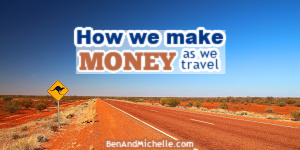
Just a caveat about making money online: we’ve been involved in some really good quality programs and learnt from some really great people.
We’ve done everything from MLM, blogging, affiliate marketing to advertising, creating courses and sponsored posts. We’ve bought ads and traffic, learnt copywriting, created autoresponders and email newsletters.
We’ve done lots of stuff, but we totally recognise that we have lacked focus, discipline (argh) and the tenacity to consistently apply these things to one business idea.
We’ve learnt that we have to fix those things (discipline etc) first, and then consistently apply all the technical skills we have.
All that to say: just because we’ve not seen much success with making online money YET, we still believe it’s a valid and valuable way to fund your travels, and we’re still working very hard at it.
Phew, caveat over.
Okay, so on to what we are doing to create an online income:
We have two blogs (this one and RVObsession.com) where the aim is to make money from advertising on the blogs, affiliate marketing and sponsored posts.
Both RVObsession and this blog make money through ads and affiliate marketing.
It’s always been my goal to make money from blogging, and it’s a slow, long and hard process… not helped by the fact that I’m very inconsistent at posting new content.
Blogging is the long game.
So in the short term, the two other ways we make money online is through offering virtual assistant services and freelancing.
Virtual Assistant
It can be a little tricky to define exactly what a virtual assistant is/does but in a nutshell:
A virtual assistant is someone who helps you run your business, whether a traditional or online business, by doing any online tasks that you need.
This could be ANY tasks that can be completed online.
It could be admin tasks anyone in the corporate may undertake like: diary management, minute taking, email management, answering the phone, ordering stock, managing a database, customer service or cold calling.
Or it may be scheduling posts on your blog, social media management, email marketing or running ads.
Currently, I help one blogger by running her Instagram account, and the other client I have is a motorhome manufacturer who’s Pinterest account I have set up and manage.
I think that being a virtual assistant is a fantastic way of creating an online income. It what I’ve done and this is how I got started as a VA .
Freelancing
Generally this is someone who has a specialist skill that they provide to businesses on either a one-off project or an ongoing basis. This includes services like: writing, website development, design, app development and more.
Currently I have one freelancing gig where I write articles for a motorhome manufacturer every month.
Casual & temping work
This is our least favourite way to make money as we road trip around Australia, but it’s what we’re the most used to and there’s plenty of it around.
When we stopped in Dubbo, Ben had a casual job at a tyre shop. And I had a casual admin job and then a temping contract for a couple of months.
It’s not our favourite way of working because it means we’re tied to the one location, plus you have to wear work clothes every day.
But it’s easy and familiar and as I said before, there’s plenty of it around.
This is the main way we’ve made money on this trip so without it we’d be screwed.
This is just what we are doing to make money and hopefully it will give you some ideas about what you could do if you also need to make an income while you’re travelling.
This topic could be a whole ‘ultimate guide’ in itself, but I’ve written a bit more about ways that I’ve seen people making money while on a road trip around Australia. You can read that here .
I realise that’s a lot to take in and maybe you’re stuck in the stage of, ‘yeah that’s great to know all that stuff… but what to I do now!?’
I’ve put together a timeline planner to help you go through all the steps that you need to think about and set up, in order to turn your dream into a reality.
I wish it could be as easy as saying, ‘follow these steps, and in one year you’ll be on the trip of a lifetime!’, but we all know that a cookie-cutter approach will not work for everyone. We’re all so completely different, with different needs, wants, budget and level of compromise!
This planner will help you to determine what things you should be thinking about, and at what stage. Just go to our Free Resources page to download it.
If you want to download this huge post as a PDF, you can purchase it below for $9.
Phew, that’s my take on Getting Set Up for a Road Trip Around Australia ! I really hope you got some value out of this tome. If you have any questions, please feel free to add them in the comments below and I’ll get to them as soon as I can.
Save the ‘Guide to getting set up for a road trip around Australia’ to Pinterest
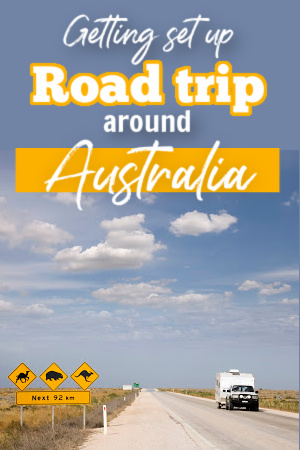
Tuesday 15th of December 2020
Hi Michelle and Ben.
I’ve stumbled across this blog and have found it a brilliant read. So well done! And just what I need! Thank you. I’m all inspired and more confident in giving it a go and making my dream a reality. Thank you x
Olivia Confidus
Friday 3rd of April 2020
Just lucky I found your blog! Great, thanks for the beginner's guide on planning an Australian trip! I hope after quarantine I can do it.
Saturday 4th of April 2020
Yes, once this is all over (who knows how long that's gonna take?) I can't wait to get out on the road again! M :-)
Removalists
Monday 25th of March 2019
Great content, you should also include the removalist services that are somethimes necesessary when moving on Australia. Thanks and looking back for more informative articles.
Road Trip Around Australia
Around australia trip planner.
Build your own road trip around Australia or embark on one of our three suggested routes and itineraries with our Around Australia road trip planner. Maps, best camping, prices, top sights, awesome photos, drive times and distances, it's all here! So, buy or hire a campervan from the departure point of your choice and hit the road for an adventure of a life time!
Three Routes Around Australia
1. the circumnavigation around australia.
17,100 km | 244 hr drive time | 3 months or more
This road trip can be started and finished from any point you choose, but it misses the central desert region of Australia with Uluru, the Olgas, and Coober Pedy.
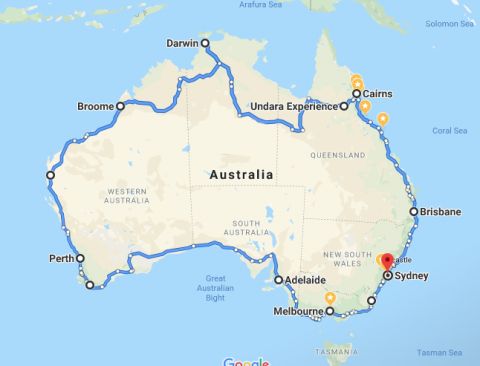
Itinerary from Cairns (example) Cairns to Darwin – 3,260 km | 9 - 15 days Darwin to Broome – 1,900 km | 7 days Broome to Perth – 3,200 km | 14 - 19 days Perth to Adelaide – 3,700 km | 16 days Adelaide to Melbourne – 1,500 km | 7 - 12 days Melbourne to Sydney – 1,200 km | 5 - 10 days Sydney to Cairns (East Coast) – 3,500 km | 5 weeks
2. Our Favorite Road Trip Around Australia
18,100 km | 258 hrs drive time | 3 months or more
This is our favorite drive around Australia because it includes the central desert region and our beloved Uluru while missing out some of the less interesting stretches between Cairns and Darwin. You can start this road trip in Cairns and end it in Adelaide, or start in Adelaide and end in Cairns.
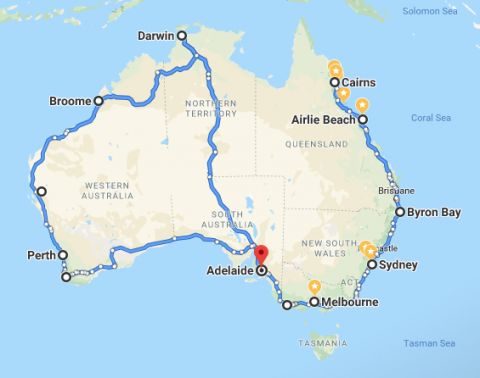
Itinerary from Cairns
Cairns to Sydney (East Coast) – 3,500 km | 5 weeks Sydney to Melbourne – 1,200 km | 5 - 10 days Melbourne to Adelaide – 1,500 km | 7 - 12 days Adelaide to Darwin – 3,760 km | 9 - 15 days Darwin to Broome – 1,900 km | 7 days Broome to Perth – 3,200 km | 14 - 19 days Perth to Adelaide – 3,700 km | 16 days
Itinerary from Adelaide
3. The I-Don't-Want-to-Miss-a-Thing Road Trip Around Australia
20,300 km | 293 hr drive | 4 months or more
If you're like us, and don't want to miss anything, this road trip around Australia includes not only Uluru in the central desert region but Broken Hill, Mungo National Park and the rural regions of New South Wales. You can start this road trip in Cairns and end it in Sydney, or start in Sydney and end in Cairns.
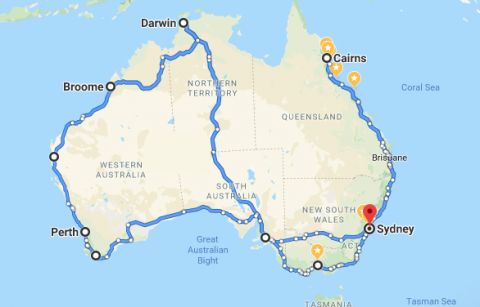
Cairns to Sydney (East Coast) – 3,500 km | 5 weeks Sydney to Melbourne – 1,200 km | 5 - 10 days Melbourne to Adelaide – 1,500 km | 7 - 12 days Adelaide to Darwin – 3,760 km | 9 - 15 days Darwin to Broome – 1,900 km | 7 days Broome to Perth – 3,200 km | 14 - 19 days Perth to Adelaide – 3,700 km | 16 days Adelaide to Sydney – 1,800 km | 7 - 14 days
Itinerary from Sydney
Build Your Own Road Trip Around Australia
Click the route to bring up the link.
Driving Around Australia
Vast Distances
Australia is larger than you might think - as large as the USA without Alaska and three quarters the size of Europe. It is also extremely diverse with everything from snow-capped mountains to lush tropical forests, the outback desert and rolling green pastures. If you fly from city-to-city, you'll miss all this.
The Best Way to Travel Australia is by Campervan
The best (and cheapest) way to experience Australia is to hire or buy a campervan and take a road trip. That way you can set your own itinerary, be spontaneous, take the road less travelled, and stop where you want for as long as you want. With a kitchen in the back, you can pull into a stunning location, make lunch and soak in the views. It's the most convenient, affordable and memorable way to dine. And at the end of an adventure-filled day, your home is wherever you park it.
Australia's Friendly Nomad Community
You will soon discover the camaraderie of the campervan community - kindred spirits who like to get off the beaten path, who appreciate the beauty of Australia, and are eager to share a few tips and their favorite camping locations with you. As Edith Wharton once said "One of the great things about travel is you discover how many good, kind people there are."
Traveling around Australia is a popular thing to do when you retire here, so much so that these travelers are known as the 'grey nomads'.
Kangaroos and Driving At Night
We strongly advise against driving at night due to the volume of kangaroos that will jump in front of your campervan. Not only will you damage your vehicle, but you'll injure or kill a kangaroo. When you see a dead kangaroo on the road, check its pouch for a joey when safe to do so. Kangaroo rescue centers can be located at Coober Pedy, Alice Springs, Darwin, Katherine and many other towns around Australia. You can find wildlife rescue phone numbers here . Offer it water but nothing else until you get it to a rescue centre. You might save a life!
Outback Driving Etiquette
If a truck approaches while travelling the outback roads, it is polite (and sensible) to pull over onto the side of the road and wait for it to pass. The trucker will thank you for it and you’ll protect your windscreen from flying rocks.
Sign up for amazing offers exclusive access for offers and promotions
Campervan hire depots, airlie beach.
Heart of Reef Shuttles, 48-50 Carlo Drive, Cannonvale, Queensland 4802 Phone: 1800 216 223
20 Noble Avenue, North Gate, Queensland 4013 Phone: 1800 216 223
440 Sheridan Street, Cairns, Queensland 4870 Phone: 1800 216 223
273 Elizabeth Street, Coburg, Victoria 3058 Phone: 1800 216 223
23-25 Erskine Rd, Caringbah, Sydney, NSW 2229 Phone: 1800 216 223
Do you have any questions or need additional information?

The ultimate itinerary for a trip around Australia
Seriously, this itinerary for Australia is the best. It heads through every capital city and will take you by all the things Australia is famous for.
You’ll see national parks, gigantic red rocks, and specky coastline. You jump into crocodile territory and swim with clown fish. You’ll have plenty of time to admire the ocean while relaxing with a beer and will explore some of the most remote areas of the outback.

Itinerary features:
- Visits every capital city and all 8 states and territories.
- 4 road trips including the Great Ocean road from Melbourne to Adelaide, Alice Springs to Ayers Rock, Broome to Darwin via the Kimberly, and Sydney to Canberra.
- 5 of the best national parks / natural wonders Australia has to offer.
- 8 internal flights.
Places to visit in Australia:
- Queensland: Great Barrier Reef, Cairns, Brisbane , Gold Coast, Sunshine Coast, Fraser Island
- New South Wales: Byron Bay , Coffs Harbour , Port Macquarie, Sydney , Port Stephens, Blue Mountains , Hunter Valley, Jervis Bay
- ACT: Canberra
- Victoria: Melbourne , Geelong, Great Ocean Road
- Tasmania: Hobart , Tasman Peninsula , Freycinet National Park, Cradle Mountain
- South Australia: Adelaide, Kangaroo Island, Barossa Valley
- Western Australia: Broome, The Kimberly, Perth, Rottnest Island
- Northern Territory: Darwin, Kakadu National Park, Katherine, Litchfield National Park, Alice Springs, Ayers Rock (Uluru) , Kings Canyon
Where to start?
You can start anywhere on the loop! Most international flights will head into Sydney or Melbourne, but you may also find flights into Cairns, Brisbane, Adelaide, Perth, and Darwin.

How long will it take?
Australia is actually the world’s sixth largest country by area. Wowee! So as you can imagine, a trip around Australia can not be completed quickly. The distances are great, so you’ll have a lot of travel time.
To do this ultimate itinerary quickly, you could probably squeeze it into 6 weeks at an absolute minimum.
If you’ve got more time (lucky you!) then I would definitely suggest taking at least 7-10 weeks, depending on the pace you’d like to travel and whether you’d prefer to drive or fly between destinations. Many people take a year off work to do a comprehensive trip around Australia. Some love it so much that they decide to move to Australia permanently !
How to get around?
The whole itinerary can be done via road – but it would be a very, very long road trip. You could spend multiple days driving through desert without actually coming across any other form of civilisation, so flying is the best option between most places.
There are some parts that should be done by car, such as Broome to Darwin, Alice Springs to Ayers Rock, and Sydney to the Blue Mountains, and the Great Ocean Road. Hiring a car is an easy option from most airports and cities.
How much will it cost?
Australia is not a particularly cheap country to travel around, especially because internal flights are the preferred method of getting between destinations. It is possible to do most of Australia on a budget – see my post on backpacking Australia costs to get an indication of prices.
Month-long seasonal itineraries:
If you’ve only got a month and you’re struggling to put together an itinerary for Australia, here are some seasonal suggestions.
One important thing to note for you folks that reside in the northern hemisphere; the seasons in Australia are opposite to what you’re used to. Winter in North America/Europe will be Summer in Australia!

Summer itinerary
Unless you want to swelter in humidity and travel through the wet seasons in the north, then stick to the south during Summer. The southern states of Tasmania and Victoria will be at their absolute best at this time of year.
Flights are required between all locations except Melbourne to Adelaide.
- 6 nights Sydney
- 6 nights Hobart / Tasmania
- 5 nights Great Ocean Road
- 5 nights Adelaide
- 6 nights Perth

Autumn/Fall itinerary
Australia’s red centre is perfect in the shoulder seasons with warm days that won’t leave you scorched. It’s also the perfect time to visit the southern states of Tasmania and Victoria while the weather is still ok, as Winter and Spring are often rainy.
Flights are required between all locations except Melbourne to Adelaide, and Alice Springs to Ayers Rock.
- 6 nights Alice Springs / Ayers Rock

Winter itinerary
Head North during winter to take full advantage of the year round pleasant weather. May-October is typically the dry season in Queensland, Northern Territory, and the north of Western Australia. You’ll be treated to many dry, sunny days.
Lonely Planet hails the drive between Broome and Darwin as ‘Australia’s Wildest Road Trip’. It will take you through huge expanses of untouched wilderness and mind-blowing landscapes.
Flights are required between all locations except Broome to Darwin.
- 4 nights Sydney
- 3 nights Broome
- 7 nights Broome to Darwin
- 4 nights Darwin
- 6 nights Cairns / Great Barrier Reef
- 4 nights Brisbane

Spring itinerary
Spring is the perfect time to visit Western Australia, as the wildflower season is in full swing! It’s also a great time to head to the Great Barrier reef, when it’s not overrun with tourists and the weather is balmy.
Flights are required between all locations except Alice Springs to Ayers Rock.
- 6 nights Perth
- 6 nights Darwin / Kakadu NP
Guided tour options:
If you want to see Australia but just don’t have the time to do these longer itineraries, here are a few multi-day tours that will allow you to see the best of Australia in a short amount of time:
- Explore Australia : A whirlwind 12-day tour with G Adventures
- Beaches and Reefs : A 16-day Contiki tour that follows the coast from Sydney to Cairns
- Best of Eastern Australia: An epic 25-day G Adventures tour visiting 5 states

Related posts

Essential activities for a weekend at Uluru

Visiting Uluru on the cheap

How to get to Uluru from anywhere in Australia
Leave a reply cancel reply.
Your email address will not be published. Required fields are marked *
Notify me of follow-up comments by email.
Notify me of new posts by email.
37 comments
Wow! This is really well-prepared. I hope to visit Australia one day 🙂
Thanks Susanne! You absolutely should, it’s one helluva country! 😀
All of these trips sound so amazing! I am applying for a Working Holiday Visa to live in Australia for a year, so I’ll definitely need to see as many places you mentioned as possible. I’m planning to live in Melbourne, and Great Ocean Road is at the top of my list of things I want to see!
Melbourne is a great base for travel around Australia, and one year will be plenty of time to hit up a few of the popular spots 😀 Great Ocean Road should definitely be top of your list, you will love it!
Great post! I drove around Australia for 11 months. It was fantastic and we still didn’t reach the Red Centre or Tassie! A good excuse to go again I reckon. I love how you have split the trip into seasons too! I met plenty of visitors that didn’t plan their driving trip very well and some ran into serious trouble. So thanks for sharing, hopefully more potential visitors will be better prepare by reading your posts!
11 months is a long time, you’re the perfect example that Australia is just too big to do in one go. I’ve lived here 27 years and still never visited Northern Territory or South Australia! It can definitely be a troublesome place for those who don’t plan properly – I also know of people who’ve managed to get stuck in the middle of nowhere when their car broke down, and it’s apparently common to run out of fuel on the long stretches of road that require a full tank just to get to the next fuel stop. Thanks for your comment Ruthie!
This was SUPER helpful. The seasonal tips were especially great, thanks!
https://itsjpei.wordpress.com
Thanks Jessica, I’m really glad you found it useful. I hope you get the chance to test out one of the itineraries sometime soon 😀
What a great itinerary! It sounds like an amazing trip, I’d love to find myself there for the Wildflower season one day!
Me too, I haven’t seen them for myself but I’ve heard wonderful things!
THIS LOOKS SO GOOD! I wish this post had come earlier 😛 I’m heading to Australia in 3 days time and I’m only going Brisbane, Gold Coast, Byron Bay, Sydney, Blue Mountains. Hopefully the weather’s good 🙂
http://www.youtopiantravels.com x
Sounds like you’ll still get a fabulous taster of the east coast, Jing! We’ve had a bit of wild weather lately but I think it’s settling down now. I’ve been posting some Blue Mountains pics on Instagram if you want to get inspired. I hope you have a fabulous time in Australia 😀
This is without a doubt the dream vacation/journey I am saving for right now. Australia just seems so so incredible, and I will be referencing back to this post when I finally do get around to visiting!
ExploresMore.com
That’s awesome Julia, I hope you make it over to Australia soon! I’m sure you will love it 😀
This is marvelous. I’m Aussie but have seen far more of Europe than I have of my own backyard. This is definitely the type of trip I want to tackle in the not-too-distant-future.
I know exactly what you mean – every time I look into travelling within Australia I’m turned off by how expensive it is… and how much longer I could travel in South East Asia for the same price! But still, Australia is wonderful and everyone should travel here 😛
Great suggestions! Ive visited Australia once and spent a few weeks in Brisbane, but I would love to go back and explore some more. Laura @ Laughter is Catching
One day! What I really need is to find myself a really well-paid job, save lots of money, and then take three months sabbatical. Oh, and hubby needs to do the same 🙂
Fab ideas Ashlea 🙂
Now that is a great idea! I usually do my long-term travels in between jobs so that I have time to save up, then am not worried about how long I’m taking off work 🙂 Thanks Emmalene!
Thank you for this article. Just stumbled upon it. I’m going to Australia for 2 weeks only over Christmas and New Year and I’ll try to squeeze in your Summer itinerary suggestion by cutting down on the days in each location. I have friends in Sydney, but want to see Melbourne, Perth and Tasmania very bad. Also to determine if I want to move there permanently.
Thanks, Marina! It’s so great that you have a trip to Australia planned 😀 2 weeks isn’t long, but if you plan to move there then you’ll have plenty of time to see more of the country later. I’d say it might be hard to fit in Perth on this trip, but it should be easy enough to do Sydney, Melbourne, and Tasmania. Be sure to let me know what you thought of it all after your trip!
I sure will, Ashlea! But I think I can not skip Perth at all because that’s where you have quokkas! I’m in love with those animals. And Tasmanian Devils. That’s why I want to go to those places. I don’t want to go to the mainstream zoo and see animals behind the glass or in cages, but I want to visit a special wildlife sanctuary or even better if I can find a place where someone will let me hold them, I’ll be in heaven! Any suggestions?
That’s fair enough, Perth and the areas around it (like Freemantle and Rottnest Island) are pretty lovely places 🙂 The quokkas are running about all over Rottnest Island so you’ll be able to see them everywhere. I’m not aware of any places in Tasmania that will let you hold Tasmanian Devils, but I have the perfect place for you to see them – go to Bonorong Wildlife Sanctuary just outside of Hobart. This place rescues injured wildlife and has a breeding program for endangered animals. You can also hand-feed kangaroos! And it’s definitely not a zoo 🙂
OMG, thank you so much!!!! I’m definitely going to the Rottnest Island and that sanctuary. This is something I’ve been thinking about for a while – toying with the idea of abandoning career in yacht sales and dedicating my life to the animals. It’ll be great to see what it’s all about to help me make a decision. ???
The round Australia trip would ideally take three to four months…any less would be really rushed. If you have only two weeks I would suggest fly to Sydney and spend a few days there then fly to Melbourne and visit Wilson’s Promontory National Park and then go to Phillip Island to see the penguin parade. Return to Melbourne and try out some of the cafes in the city or in Lygon St Carlton. The drive out along the great ocean road stopping at Mait’s rest to do a rainforest walk, Kennet River to feed colourful cockatoos and see koalas in the trees and of course see the twelve apostles etc. Stay overnight at Warnambool then head north towards Grampians national park, stopping first at Tower Hill….an island park in the middle of an ancient volcano. At the Grampians stay for a night or two in Hall’s Gap and visit a number of waterfalls and lookouts. On your way back to Melbourne you could visit Daylesford which is an area famous for wineries and gourmet foods. After Melbourne fly to Perth and head south to the Margaret river region where you can visit Jewel cave, Yallingup beach, Canal Rocks, buy a pie at the Dunsborough bakery and eat it at Meelup beach before driving down to see Sugarloaf rock. Visit the longest jetty in the Southern Hemisphere at Busselton before returning to Perth, where you can explore Fremantle and the beaches for a few days before flying home. That will give you a taste of Australia in two weeks. Sydney…three days then fly to Melbourne Melbourne and Wison’s Promontory and the penguins at Phillip island …two days Great ocean road and Grampians …three days Melbourne city one day Fly to Perth….allow one day…..you need to get to the airport an hour before your flight, it takes three and a half to four hours to fly To Perth and because of time zone differences you lose another two or three hours, so you will only have time to eat and go to your accommodation once you get to Perth. Southwest trip three days then a day or two in Perth
Wow, that already seems like a lot! Lol Thank you, Jan, for your thorough suggestion. I’d love to see penguins as well! Do you know by any chance if there’s some kind of guided tours like that, with a group of people? I’m staying with my friends in Sydney but I’ll be pretty much on my own for the whole 2 weeks, so I wanted to find a group of other travelers to join to. I was going to search online for that in the next couple days….
This itinerary is PERFECT.
Heading down under in 2 years and have been saving saving but the planning had been a bit slow. This has been a gear help, especially that you split them into seasons, thanks for that.
I will be in Australia for a year on a s raking holiday visa, but dint know if I will even see all of this as I am also planning to visit nearby countries such as New Zealand, Fiji etc. Lets see how I go!
It’s so great that you’re planning a trip down under! And I’m very glad that you found my itineraries useful. There is a lot to see in Australia, so it would be totally understandable if you didn’t get to see it all. I lived there for 22 years and didn’t even get to see the states of Northern Territory or South Australia!
I enjoy reading your post, seems very different from other which you included the very important factors of touring which is the weather. We all know before we decide to go anywhere when touring, we check what kind of weather we expect. I like summer, less luggage. Great ocean road is one of my favorite to visit, been there once and wants to come back again and again with my camera of course.
-https://www.notmyfault.com.au/
This is a great help. We are planning to take a year out to travel Australia with our 3 year old. Would be starting our travels around November time and have been researching best times and places to visit each area. Also trying to work out the best way to travel, ie by campervan/Winnebago or flying. I’d be grateful for a little help with this and also with the itinerary if possible? Thanks
What a wonderful page….. We are planning 8-10 weeks, starting Feb 2019. I love the ultimate route, do you reckon its doable the time we have? What would you suggest… traveling by campervan/RV, car rental or flying. And can we do this on our own without taking any organized tour? Can you suggest an itinerary for us to follow? It would be very helpful to hear your suggestions.
Thanks for your help
Yes it’s possible, but there’s no way you could fit in the whole trip via campervan in 8-10 weeks – if you pick and choose some parts to do via road and other parts via flight, you’ll manage it. Also keep in mind that Feb/Mar is wet season in the north, so maybe try to fit that part in last 🙂
Thank you so much for you response. Yes I am aware that it’s impossible to fit the whole trip in 8-10 weeks on the road, whether with campervan or rental car. We are planning to fly to some places, as you suggested on your blog….8 flights! There is still a lot to research and come up with an itinerary. Thanks again!
Love this Ashlea. You’ve covered all the bucket list musts. We’re two Aussies who dream of doing an epic Aussie road trip some day. Will definitely be bookmarking this page for when that time comes!
I’d love to do the whole trip, too! It would take quite a lot of time to do it all, but it would be such an epic trip. Thanks Rhiannon!
You will see everything that everyone else has seen…..And you will miss so much!
Well of course – it’s impossible to visit any country and see all of it in one go! This is just a suggestion for anyone who wants to see the best of Australia. You can always come back to visit more places on future trips 🙂
- Getting around Australia: Transportation Tips
Book your individual trip , stress-free with local travel experts
Select Month
- roughguides.com
- Australasia
- getting-around
- Travel guide
- Itineraries
- Local Experts
- Travel Advice
- Accommodation
Plan your tailor-made trip with a local expert
Book securely with money-back guarantee
Travel stress-free with local assistance and 24/7 support
- Getting to Australia and getting around
There are daily flights to various Australian cities from across Europe, North America and Southeast Asia. Fares depend on the season, the highest being the two weeks either side of Christmas and the lowest during the “shoulder” seasons, which run from late February to June and from October to November. Because of the distance involved from most popular departure points, flying at weekends does not alter the price.
Flying to and around Australia
Travel by train in australia, bus travel in australia, travelling australia by car, roads, outback driving and breakdowns, car, 4wd and camper van rental, campervan and motor-home rental agencies, buying a car, motorbikes and scooters in australia, hitching in australia, driving interstate, four-wheel driving: some hints, travel ideas for australia, created by local experts.

12 days / from 2900 USD
Explore Western Australia from Perth to Broome
Western Australia is the country's largest state, covering more than a third of Australia. This self drive itinerary allows you to explore sunny Perth, stunning national parks and waterfalls, the remote wild west outback, empty beaches and much more.
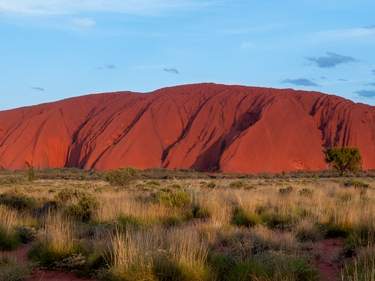
16 days / from 3300 USD
Explore South Australia and the Northern Territory
Explore South Australia and the Northern Territory on this self-drive adventure. Start in Adelaide and make your way over the Ayers Rock, Kings Canyon, and Alice Springs to the Kakadu National Park and ultimately Darwin.

23 days / from 4150 USD
Cross Western Australia to Darwin
Western Australia offers wonderfully remote outback experiences: from spectacular national parks to sandy deserts, pristine beaches to working cattle stations. This itinerary allows you to explore the way from Perth to Darwin in depth and at your own pace, in your own rental car.
Flying is the most common means of interstate travel in Australia. As a rough idea of prices, a typical one-way flight from Sydney to Melbourne costs from around $90 and from Perth to Darwin $275. These three airlines cover the majority of interstate flights. Regional routes are served by smaller airlines such as Regional Express, also called Rex , which focuses on New South Wales, Victoria, South Australia and Tasmania, and state-based companies such as Air North in the Northern Territory.
Budget operators like Jetstar and Virgin Australia have joined national operator Quantas to slash ticket prices, so flying is now the most common means of interstate travel. As an idea of prices, a typical one-way flight from Sydney to Melbourne costs from around Aus$120 and from Perth to Darwin Aus$230. These three airlines cover the majority of interstate flights. Regional routes are served by smaller airlines such as Regional Express, also called Rex , which covers New South Wales, Victoria, South Australia and Tasmania, and state-based companies such as Air North in the Northern Territory. If you are flexible about travel, many airlines offer massively discounted sale fares online – a huge saving in time as well as money considering the distances – so keep an eye on websites.
If flying with Qantas, you could save money with a Walkabout Air Pass, which covers up to three discounted domestic flights; you’ll need to purchase it when you book as part of a package with your international flight. As ever, prices fluctuate by the season, and, in the US and Canada, according to your departure point. If you know your travel plans and can face the extra effort, it is worth double-checking that the pass will actually save money; some travellers discover that budget airline bargains can work out cheaper than the discounted flights included in a pass.
Sightseeing flights are available throughout Australia – the best and most spectacular are included in the relevant sections and local tourist boards can also advise. They cover everything from biplane spins above cities to excursions to the Great Barrier Reef and flights over well-known landscapes. A flight from Alice Springs to Uluru in a small plane, for example, enables you to visit the Rock in a day, but also observe the impressive central-Australian landforms from the air.
The southeast has a reasonably comprehensive rail service: interstate railways link the entire east coast from Cairns to Sydney, and on to Melbourne and Adelaide. Each state operates its own rail network. For rail buffs, Australia has two great (or perhaps just long) journeys: the Indian Pacific from Perth to Sydney, travelling for three nights and 4352km across the Nullarbor Plain; and the seasonal Ghan , which takes three days to go from Adelaide to Darwin via Alice Springs. Holders of backpacker, student or YHA cards receive a discount of around a third. Both services are operated by Great Southern Railway , and are geared towards the holiday experience more than the act of getting from A to B.
There’s also the option of transportation for vehicles up to 5.5m long, with prices dependent upon the distance and direction travelled: while it costs Aus$1189 from Adelaide to Darwin, the reverse journey is Aus$649, for example. Great Southern Railway also runs the Overland 828km interstate service between Melbourne and Adelaide (11hr; from Aus$99), also with the option of car transport (from $259).
Other than these, there are a couple of inland tracks in Queensland – to Mount Isa, Longreach and Charleville, plus the rustic Cairns–Forsayth run and isolated Croydon–Normanton stretch – and suburban networks around some of the major cities. Only around Sydney does this amount to much, with decent services to most of New South Wales. There are no passenger trains in Tasmania.
Trains are usually more comfortable than buses and can be a little faster – Brisbane to Cairns takes 25 hours by train, and 29 hours by coach – for only a little extra expense. Some also get seriously booked up – Queensland trains, for example, require a month’s advance booking during holiday season. Generally, it’s cheaper – and faster – to fly.
Rail Australia is a good one-stop shop for cross- and interstate train travel, with route maps of all lines and links to the relevant train operators.
Due to budget air fares, bus travel is no longer necessarily the cheapest way to get around, and is certainly the most tiresome. It may also mean arriving or departing in the middle of the night. Nor are services daily, as you might think, especially in Western Australia, although on the plus side they can be faster than trains. Where buses are useful is access: the network reaches much further than the train network and visits small towns between cities; occasional bargain fares crop up on popular routes like Sydney–Byron Bay.
The buses are about as comfortable as they can be, with reclining seats, air conditioning, toilets and DVDs. If possible, try and plan for a stopover every twenty hours – try to sit out a sixty-hour marathon trip and you’ll need a day or more to get over it. Discounts (10 percent, or 15 percent if you buy your ticket before entering Australia) are available on many fares if you have a YHA, ISIC or recognized backpacker card such as VIP, or if you are a pensioner.
The major interstate bus company on the mainland is Greyhound Australia , which covers the entire country. Along the east coast, Premier Motor Service calls in everywhere along the highway between Melbourne and Cairns, while in WA, Integrity Coach Lines goes from Perth to Broome, looping inland, too. Firefly Express runs from Sydney to Adelaide via Canberra and Melbourne and usually has the cheapest fares for these routes. Tasmania is covered by Tassielink and Tasmanian Redline Coaches .
A one-way fare from Sydney costs about Aus$135 to Adelaide (23hr), Aus$95 to Brisbane (16hr), and Aus$80 to Melbourne (12hr). Longer trips to, say, Darwin or Alice Springs will be several hundred, so are not worth considering unless you are passionately anti-flying. Return fares are only marginally cheaper than two singles.
Where bus travel scores over air (aside from its environmental impact) is its plethora of passes, though bear in mind that you won’t save money over shorter routes and that passes are non-refundable. Greyhound offers a range of passes lasting between three days and twelve months on which you can break your journey as often as you like and travel in any direction. Year-long Kilometre Passes are the most flexible, giving you unlimited travel up to 25,000km in any direction until you have used up the distance paid for – these work out around 10¢ per kilometre; 1000km will get you from Sydney to Melbourne, 25,000km will get you all around Australia. Greyhound also has dedicated Adventure Packages that include travel and popular tourism products: a Fraser Island tour, sailing in Whitsunday and a reef dive on the Sydney–Cairns East Coaster, for example.
Stick to the east coast and public transport will cover most needs. But to explore Australia fully, you’ll need your own vehicle. Only then will the national parks, remote beaches and Outback towns that make the country unique be within reach. If your trip is of four months or more, buying a vehicle may also be the cheapest way to go. On shorter trips renting is the best bet – if not for the whole time then for short periods between bus rides, thereby allowing you to explore an area in depth.
Most foreign licences are valid for a year in Australia. An International Driving Permit (available from national motoring organizations) may be useful if you come from a non-English-speaking country. In 2013, fuel prices averaged $1.45 per litre for unleaded petrol: prices increase by around 10¢ in Darwin, jack up about a quarter along the Outback highways and rise further in remote stations. The rules of the road are similar to those in the UK and US: drive on the left (as in the UK), and wear seat belts at all times. The speed limit in all built-up areas is 50kph or less. Outside built-up areas, maximums are either 90kph or 110kph on longer stretches, except in the Northern Territory, where common sense is your only limit between towns. Whatever else you do in a vehicle, respect the distances in Australia. Never drive tired and be tempted to push on through; similarly get out of the car every few hours. Drinking alcohol is also forbidden: random breath tests are common even in rural areas, especially during the Christmas season and on Friday and Saturday nights. One rule that might catch you out in towns is that roadside parking must be in the same direction as the traffic; in other words, don’t cross oncoming traffic to park on the right.
The main hazards are boredom and fatigue, and animal collisions – a serious problem everywhere (not just in the Outback) at dawn, dusk and night-time. Driving in the Outback is by far the most dangerous tourist pursuit in Australia and every year several people get killed in single-vehicle rollovers or head-on collisions, particularly Europeans on short see-it-all holidays in cumbersome 4WDs or motorhomes. Beware of 50m-long road trains: these colossal trucks can’t stop quickly or pull off the road safely, so if there’s the slightest doubt, get out of their way; only overtake a road train if you can see well ahead and are certain your vehicle can manage it. On dirt roads be doubly cautious, or just pull over and let the road train pass.
Around the cities the only problem you’ll face is inept signposting, but the quality of some interstate roads isn’t always great and some minor routes are pretty shabby. Conditions, especially on unsealed roads, are unpredictable, and some roads will be impassable after a storm, so always seek reliable advice (from local police or a roadhouse) before starting out into the big nothingness. Make it clear what sort of vehicle you’re driving and remember that their idea of a “good” or “bad” road may be radically different from yours. Some so-called “4WD only” tracks are navigable in ordinary cars as long as you take it easy – high ground clearance, rather than four-driven wheels, is often the crucial factor.
Rain and flooding – particularly in the tropics and central Australia – can close roads to all vehicles within minutes, so driving through remote regions or even along the coastal highway in the wet season can be prone to delays. The spectacular stretches of highway between Broome and Kununurra and Cairns to Townsville are notorious for flooding during summer cyclone season. Several remote and unsealed roads through central Australia (the Sandover and Plenty highways, the Oodnadatta, Birdsville and Tanami tracks, and others) are theoretically open to all vehicles in dry winter weather, but unless you’re well-equipped with a tough car, don’t attempt a crossing during summer, when extreme temperatures strain both driver and vehicle.
On poor roads and dirt tracks, the guidelines are to keep your speed down to 80kph, stick to the best section and never assume that the road is free from potholes and rocks. Long corrugated stretches can literally shake a vehicle apart – check radiators, fuel tanks and battery connections after rough stretches; reducing tyre pressures slightly softens the ride but can cause the tyres to overheat, making them more prone to punctures. Windscreens are often shattered by flying stones from passing traffic, so slow down and pull over to the left.
At all times carry plenty of drinking water and fuel, and if you’re heading to the Outback let someone know your timetable, route and destination so that a rescue can be organized if you don’t report in. Carry a detailed map, and don’t count on finding regular signposts. It’s advisable to carry a high-frequency (HF) radio transceiver to pick up the Royal Flying Doctor Service bases. Better still, hire a satellite phone and Global Positioning System (GPS) finder – an extra cost worth bearing when it is literally a lifesaver.
In the event of a breakdown in the Outback, always stay with your vehicle: it’s more visible to potential rescuers and you can use it for shade. If you’re off a main track, as a last resort, burn a tyre or anything plastic – the black smoke will be distinctive from the average bushfire.
To rent a car you need a full, clean driver’s licence and to be at least 21 years old, rising to 25 for 4WDs and motorcycles. As ever, double-check the small print before signing: mileage limits, extras and extent of accident cover. The multinational operators Hertz, Budget, Avis and Thrifty have offices in major cities and at airports, but a lack of competition makes standard rates expensive at Aus$60–80 a day for a small car. Local firms – of which there are many in the cities – are generally better value though we have heard tales of unscrupulous operators who sting travellers with unwarranted fees; expect around Aus$50 a day with unlimited kilometres. One-way rental might appear handy, but is usually very expensive due to drop-off fees.
Four-wheel-drive vehicles are best reserved for specific areas rather than long term because rental at around Aus$90–150 a day is steep even without fuel. Camper vans, typically a Toyota Hiace, cost from Aus$90 a day for a two-berth campervan in low season (up to Aus$160 in high season) with unlimited kilometres – good value when you factor in the saving on accommodation costs – plus one-way rental is often possible. Like cars, most campervans are limited to sealed roads, but they give you the chance to create your own tour across Australia. Remember, though, that the sleeping capacity stated is an absolute maximum, which you wouldn’t want to endure too long. Furthermore, in the tropics the interior never really cools overnight unless you leave the doors open – which brings the bugs in. Consider sleeping outside under a mozzie dome or inner tent. Larger operators – nationwide firms like Britz, Apollo and Kea, for example, plus larger local outfits – rent 4WD campervans fitted with 180-litre fuel tanks that are only limited off-road by your 4WD experience or roof heights. Average prices for 4WD campers average Aus$180–200 per day year-round. The downside of all campervans is that they are thirsty and require drivers to appreciate the altered driving dynamics of an already high vehicle fitted with a heavy body. Novice renters regularly drift off the road, overcompensate and roll a heavy camper. Finally, a few companies such as Spaceships rent modern hybrid campervans. These are basically converted “people-movers”, so more car than van, that make up in driving comfort and fuel-economy what they lack in accommodation; a good option if you have a tent, too.
Buying a used vehicle needn’t be an expensive business, and a well-kept car should resell at about two-thirds to half the purchase price at the end of your trip. A good place to evaluate vehicle prices and availability online is at tradingpost.com.au.
If you don’t know your axle from your elbow but are not too gullible, car yards can provide advice – some in Sydney even cater specifically to travellers – but don’t forget you’re dealing with used-car salesmen. Buying privately saves money. Backpackers’ notice-boards in exit points from Australia are the best places to look. A huge advantage of buying from backpackers is that you usually get all sorts of useful stuff thrown in – camping gear, eskies and spares. The disadvantages are high mileage and low maintenance. Unless you know what you’re doing, call in the experts: state automobile associations offer rigorous pre-purchase inspections for about Aus$200, which isn’t much if it saves you from buying a wreck. The Australian Automobile Association holds a huge backlist of vehicle tests online, which might help make a decision.
You’ll also need a roadworthiness certificate to have the vehicle transferred from its previous owner to you. This means having a garage check it over; legally, the previous owner should do this, and theoretically it guarantees the car is mechanically sound – but don’t rely on it. You take this to the local Department of Transport with the certificate, a receipt of purchase, your driver’s licence and passport; it is then registered in your name for a percentage of the price. For Western Australia-registered cars, the process is the same, except that a road worthiness certificate is not required.
If the annual vehicle registration is due or you bought a vehicle interstate, you’ll have to pay extra for registration (aka “rego”), which is around Aus$300/600 for six/twelve months depending on the state and engine size. Note that cars with interstate registration can be difficult to sell.
Registration includes the legal minimum third-party personal insurance. We advise increasing this cover to protect against third-party damage and theft, or better still, comprehensive insurance. Joining one of the automobile clubs for another Aus$150 buys you the peace of mind of free roadside assistance (within certain limits), and discounts on road maps and other products. Each state has its own club, but membership is reciprocal with overseas equivalents.
Motorcycles, especially large-capacity trail bikes, are ideal for the Australian climate, although long distances place a premium on their comfort and fuel range. If you aim to return to your starting point, look out for dealers with a buy-back option as bikes can be more difficult to sell privately than cars. Whether you’re planning to ride off or on the bitumen, plenty of water-carrying capacity is essential in the Outback. Outback night-riding is risky due to the possibility of collisions with wildlife; make sure your lights and brakes are up to it and keep your speed down to under 100kph. Motorcycle rental has become widely available from the main southern cities. All types of models are on offer so talk to the rental outfit about your plans before you commit. In Sydney, Bikescape has a good selection. The Adventure Motorcycling Handbook , published by Trailblazer Guides, is a definitive manual for preparation and riding off the beaten track and includes Outback tracks.
The official advice for hitching in Australia is don’t. A better option is to line up lifts through backpackers’ notice-boards and share fuel costs. This gives you the chance to meet the driver in advance, and most likely stop to see sights en route. In out-of-the-way locations, roadhouses are a good place to try as the owners often know of people who’ll be heading in your direction. We strongly advise against a thumb on the open road. If this is the only option, never hitch alone and ensure you are dropped at a settlement. Remember that you don’t have to get into a vehicle just because it stops: choose whom to get in with and don’t be afraid to ask questions before you do. Ask the driver where he or she is going rather than say where you want to go. Try to keep your pack with you; having it locked in the boot makes a quick escape difficult.
When driving across state borders bear in mind that your car may be subject to a customs search by officers on the lookout for fruit and fresh produce, which often cannot be carried from one state to another, to minimize the spread of plant pests and viruses. You’ll see large bins at the side of the road as you approach a state border line for this purpose: dump any perishables here before crossing; otherwise, you risk receiving a large fine if pulled over and caught with them.
The Outback is not the place to learn how to handle a 4WD and yet this is exactly where many tourists try to do so. Take essential spares – spark plugs, fuses, fuel filters, radiator hoses and a fan belt – plus a shovel, hi-lift jack and gloves, and one of the “how to” manuals easily found in bookshops. The following basic hints should help.
- Know how to operate everything – including free-wheeling hubs (where present) and how to change a wheel – before you need it.
- Always cross deep water and very muddy sections on foot first.
- Don’t persevere if you’re stuck – wheel spin will only dig you further in – and reverse out. Momentum is key on slippery surfaces such as mud or sand – as long as you’re moving forward, however slowly, resist the temptation to change gear, and so lose traction.
- Reducing tyre pressures down to 1 bar (15lb psi) dramatically increases traction in mud and sand, but causes tyre overheating, so keep speeds down. Carry a compressor or reinflate as soon as possible.
- If stuck, clear all the wheels, create a shallow ramp (for all wheels), engage four-wheel drive, lower pressures if necessary, and drive or reverse out in low-range second.
- Keep to tracks – avoid unnecessary damage to the environment.
- On beaches observe other vehicles’ tracks and be aware of tidal patterns.
- Consider a rented satellite phone for remote travel.
The Rough Guides to Australia and related travel guides
In-depth, easy-to-use travel guides filled with expert advice.
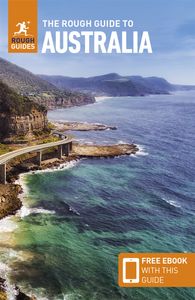
Travel advice for Australia
From travel safety to visa requirements, discover the best tips for traveling to Australia
- Eating and drinking in Australia
- Travel Health Australia
- Sports and Outdoor activities in Australia
- How to get to Australia
- Travel Tips Australia for planning and on the go
- Travelling with children in Australia
- Best time to visit Australia
Find even more inspiration here

- Travel Tips

written by Andy Turner
updated 26.04.2021
Ready to travel and discover Australia?
Get support from our local experts for stress-free planning & worry-free travels.
- Where to stay
- Travel advice

Australia Travel Guide
Last Updated: April 1, 2024

Australia is one of the most popular travel destinations in the world. It’s known as a major backpacking, camping, road tripping, and diving destination.
Backpacking Australia is considered a “must do” for backpackers. It’s a central highlight on the round-the-world trail. I started coming to Australia in 2008 as a backpacker. It hooked me and, since then, I’ve visited over five times and have crisscrossed the country three times. Every single trip I discover something new about this country to love.
But this isn’t just a country for backpackers. Its huge diversity means every traveler can find something they love here.
Australia is filled with incredible natural beauty: Uluru and the Outback, rainforests and pristine white sand beaches, and of course, the Great Barrier Reef. Sydney’s Harbor Bridge and Opera House are iconic man-made wonders, and Melbourne’s café culture will make you feel like you’re relaxing in Europe . You have surfing, hiking, camping, boating, and a ton of other activities available to you. It makes some of the best wine in the world. Australia has it all.
However, the country’s size and limited transportation options, makes it hard to get around. And it’s not the cheapest place to visit, even if the currency is a tad weak right now.
Fortunately, this extensive Australia travel guide will show you how to save money, plan your trip, and make the most of your time Down Under. Because this country is worth taking the time to explore – and doesn’t need to cost a fortune!
Table of Contents
- Things to See and Do
- Typical Costs
- Suggested Budget
- Money-Saving Tips
- Where to Stay
- How to Get Around
- How to Stay Safe
- Best Places to Book Your Trip
- Related Blogs on Australia
Click Here for City Guides
Top 5 things to see and do in australia.
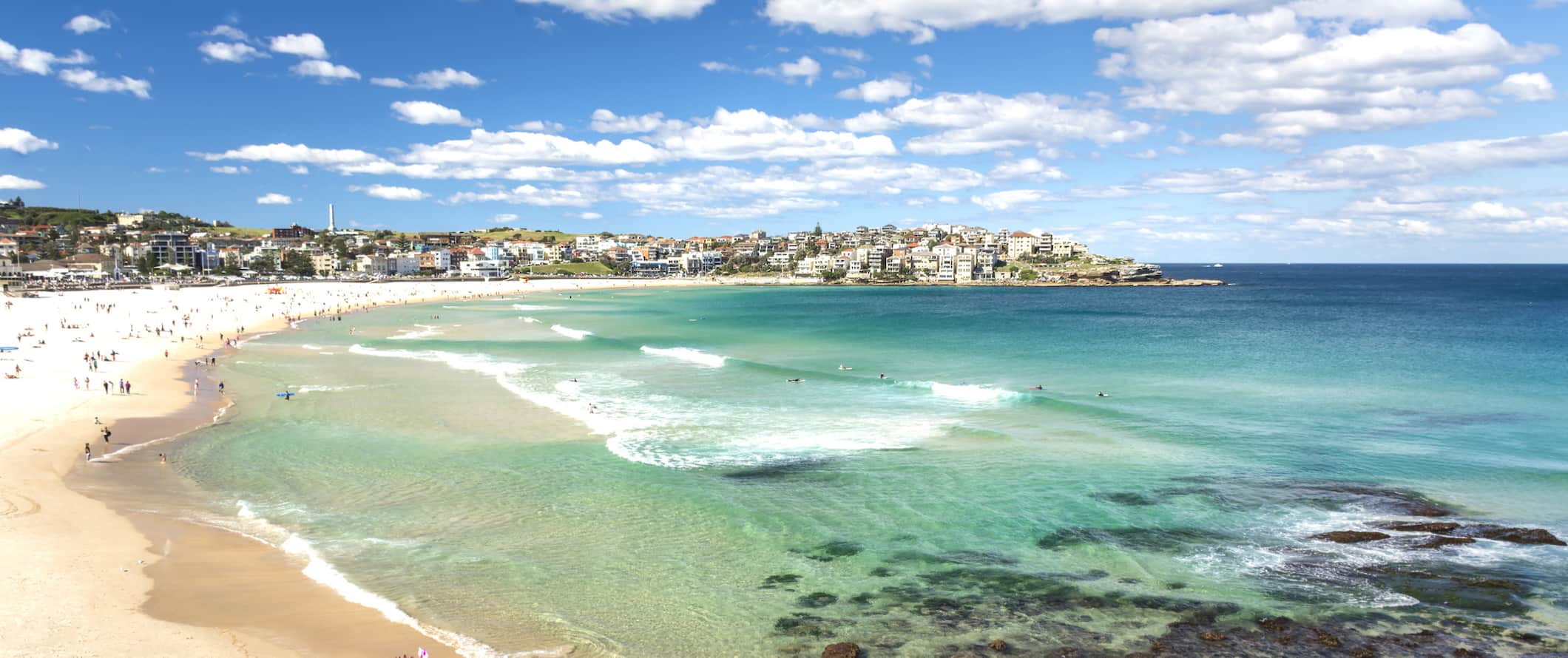
1. See Sydney
Australia’s largest city has a range of activities to keep you busy. Climb the Sydney Harbour Bridge, surf at Bondi Beach, party in King’s Cross, sail across the harbor, visit the Opera House, and take in world-class innovation in Darling Harbor. There’s a ton to see and do here and it’s worth spending a few days here to soak it all in. Other popular beaches nearby include Manly (wide and beautiful), Bronte (small and quiet), Coogee (fun), Palm (chill), and Dee Why (surfing). And, if you’re feeling adventurous, tours that climb the iconic (and massive) harbor bridge cost 250 AUD.
2. Visit Uluru
This beautiful red rock formed over 550 million years ago. Tourists have been visiting the rock since the 1930s and it’s of great spiritual importance to the local Aboriginal peoples. Formerly known as Ayers Rock, the best way to visit is by going as part of a multi-day tour of the area or driving on your own. You’ll be able to walk around the rock, learn about its cultural importance, and watch the rising/setting sun splash against it. Admission is 38 AUD per person and is valid for three days. Note: Climbing on the rock is prohibited.
3. Dive the Great Barrier Reef
Don’t miss diving or snorkeling the Great Barrier Reef. It’s the largest living organism on Earth, spanning some 344,000 square kilometers (133,000 square miles). The reef is brimming with wildlife, including giant clams, manta rays, sharks, turtles, clown fish, and more! Cairns is the most popular jumping-off point for dive trips to the reef. I was blown away by the abundant wildlife and coral. It did not disappoint! Dive trips start around 230 AUD.
4. Explore Melbourne
Melbourne is much more relaxed than Sydney (and, personally, I like it more). This is the place to relax by the river, walk through the city gardens, eat amazing food, enjoy the art, and party in St. Kilda. It’s a fun, chill city with a youthful vibe and a ton of backpackers.
5. Sail the Whitsundays
The Whitsunday Islands are a collection of 74 islands off the central coast of Queensland. They’re one of the most popular destinations in the country. It’s a popular region for sailing trips and since the vast majority of these islands are designated national parks, you’ll find numerous pristine beaches and dive sites here. It’s a postcard-perfect region. Expect to pay between 399-499 AUD per person for a three-day/two-night sailing trip. While expensive, it’s worth doing (I loved my trip).
Other Things to See and Do in Australia
1. explore fraser island.
The world’s largest sand island is a popular spot for camping, swim, hike, and seeing dingoes. You can hire your own 4WD car or take an overnight tour through the island that’s famous for its freshwater lake (and dingoes). The island is beautiful and filled with lakes, hiking paths, and sweeping vistas. Sadly, you can’t go in the water nearby as it’s rough and full of sharks, but there’s plenty of fishing, cool sand dunes, the stunning 75 Mile Beach, and a cool shipwreck for snapping photos. Camping on the island is super cheap too (less than 10 AUD per night!).
2. Visit Cairns
Cairns is Australia’s gateway to northern Queensland. From here you can visit the Great Barrier Reef, the Daintree rainforest, the Atherton Tablelands, Cape Tribulation, and much more. Cairns is a pretty typical tropical city and life here focuses on taking the time to smell the roses. With so much to see, the city deserves a very long stay. Plan to visit for a week, which should give you enough time to explore the area and allows some downtime by the city’s awesome pool.
3. Wander Brisbane’s South Bank
Brisbane is a “business city.” Unlike Sydney or Melbourne, there isn’t a lot of “culture” here. But it’s a popular stop on the backpacker trail due to its location. Be sure to explore South Bank, which has some nice restaurants and decent pubs. There’s also an educational koala sanctuary here as well as a relaxing botanical gardens.
4. Hike the Daintree
The world’s oldest rainforest (yes, it’s older than the Amazon) offers hikes that range from easy to challenging, with dense jungles, beautiful mountains, waterfalls, and lots of wildlife. Spend a few days hiking around and getting out of touristy Cairns. If you really want to get off the beaten path, head up to Cape Tribulation and enjoy some real peace and quiet (just watch out for jellyfish when you go swimming). There are all kinds of day and multi-day trips available here with two-day guided trips costing around 350 AUD per person.
5. See Perth
Perth is Australia’s west coast capital and is often overlooked by most travelers. It’s expensive to get out there from the east coast (it’s a 5-hour flight from Sydney) so most travelers avoid it. But I love it. In fact, it’s probably my favorite city in all of Australia. Perth feels more like a large town than a city and is the best place to have a “Sunday Session” (an Aussie tradition of drinking on Sunday afternoons). From the beaches, food, and beer (be sure to take a day trip to Freemantle), Perth is just awesome.
6. Explore the Outback
No trip to Australia is complete without a trip to the Outback to see crocodiles, valleys, lakes, and the red desert. Find your own Crocodile Dundee as you explore the Red Center and Western Australia. And be sure to visit some of the places I love: Karijini National Park, the Kimberleys, Kakadu, and Litchfield National Park. The landscapes are stunning and there are all kinds of epic hikes to enjoy.
7. Surf on the Gold Coast
Australia is famous for its surfing, and one of the best places to learn is on the Gold Coast near Brisbane. You’ll find world-class waves, a wide beach, and lots of available lessons. If you don’t like the Gold Coast , there is always Noosa, Byron Bay, Bondi Beach, Perth, and, well, you get the idea. There’s a lot of surfing in Australia! A two-hour group lesson costs around 75 AUD. If you don’t need lessons and just want to surf, you can rent a board for around 60 AUD per day.
8. Take a wine tour
Whether you go down to Margret River, Hunter Valley, or the Barossa Valley, you will have many chances to taste Aussie wine right from the source. Visiting the wine country should be on your list of things to do. If you rent a car, you can stay longer or you can do guided tours from major cities. I think it’s best to base yourself in the area and spend about 3-5 days in each area tasting as much wine as possible. Day tours with Colorful Trips that visit three wineries in the Hunter Valley cost 199 AUD.
9. Admire the Ningaloo Reef
The Great Barrier Reef gets all the hype, but the Ningaloo Reef on the west coast is a far better reef system. Because it’s less developed and attracts fewer tourists, there are actually more fish and wildlife here — you can even swim with whale sharks . Plus, at some points (like at Coral Bay), the reef comes so close to the shore that you can swim right up to it on your own. Half-day trips start around 120-225 AUD per person.
10. Visit Western Australia
The most overlooked area in the country is the west coast. Here you can escape the crowds of the east coast, explore the Outback, see the Ningaloo Reef, Coral Bay (one of my favorite spots in the world), Broome, Perth, and the Margaret River. It’s much less developed than the east coast but if you take one piece of advice away from this guide, it should be to visit this part of Australia. It’s the version of the country you picture in your head and is an amazing region for road trips, camping, hiking, and enjoying nature.
11. Tour Tasmania
Despite everyone knowing its name, hardly anyone ever makes it down here. (It’s far from the main tourist trail.) Tasmania has amazing hikes, beautiful bays (Wineglass Bay being the most famous), small towns, and excellent people. It’s just a ferry away from Melbourne too. The island is about the size of Ireland (or West Virginia in the USA) yet it’s home to just under 545,000 people. If you have the time, explore this terribly under-visited part of the country. It’s amazing. The ferry from the mainland costs around 100 AUD each way and takes 9-11 hours.
12. Hike the Blue Mountains
Right outside of Sydney , the Blue Mountains are an awesome place to explore. Over millennia, the ancient sandstone of this national park has been weathered into gorges lined by steep cliffs and separated by narrow ridges. The area is free to visit and you can get there by train, which takes around two hours. Spend the day admiring the magnificent rock formation of the Three Sisters (particularly stunning at sunset and under evening floodlights) and hiking along the paths that offer excellent views of the valley, sheer rock walls, tumbling waterfalls, and magnificent forests. For a guided tour, Get Your Guide offers full-day wildlife-spotting tours for 155 AUD.
13. Learn about pearling in Broome
Broome used to be the largest pearling port in the world. Founded around 1880, pearls were an important commodity used for making cutlery, buttons, and jewelry. By 1900, there were 300 ships here, though the industry fell into decline during World War II (and then, after the war, plastic was invented, which diminished the need for pearls). You can learn all about the region’s rich history at the Pearl Lugger Museum (tours for 30 AUD). If you want a more hands-on experience, Willie Creek Pearls also offers a two-hour boat tour for 129 AUD. You’ll learn about the risks and challenges of the industry while also getting to hold and touch all kinds of valuable pearls.
14. Visit the Kimberley
This area is known for its wilderness, so if you love the outdoors and don’t mind things getting rugged, add this to your itinerary. Located near Broome, this outback region is three times bigger than England that’s filled with stunning gorges, beautiful waterfalls, and a vast desert landscape. It was one of the first areas settled in Australia some 65,000 years ago (Europeans didn’t arrive here in the 1830s). There are all kinds of day trips and hikes here that you can do solo, as well as multi-day guided tours. Expect to pay around 1,200 AUD for a three-day guided excursion. If you’re going solo, popular overnight hikes include Piccaninny Gorge and Lurujarri Dreaming Trail.
15. Explore Kakadu National Park
The enormous Kakadu National Park is a biodiverse nature reserve in Australia’s Northern Territory. It encompasses wetlands and rivers and is home to saltwater crocodiles and flatback turtles, as well as many different bird species. Rock paintings (dating back to prehistory) can be viewed at Nourlangie, Nanguluwur, and Ubirr. You can find a lot of tours departing from Darwin. Be sure to spend at least a night in the park! Three-day tours cost around 735 AUD.
For more information on specific cities in Australia, check out these guides:
- Alice Springs Travel Guide
- Brisbane Travel Guide
- Broome Travel Guide
- Cairns Travel Guide
- Fraser Island Travel Guide
- Gold Coast Travel Guide
- Melbourne Travel Guide
- Perth Travel Guide
- Sydney Travel Guide
- Whitsunday Islands Travel Guide
Australia Travel Costs
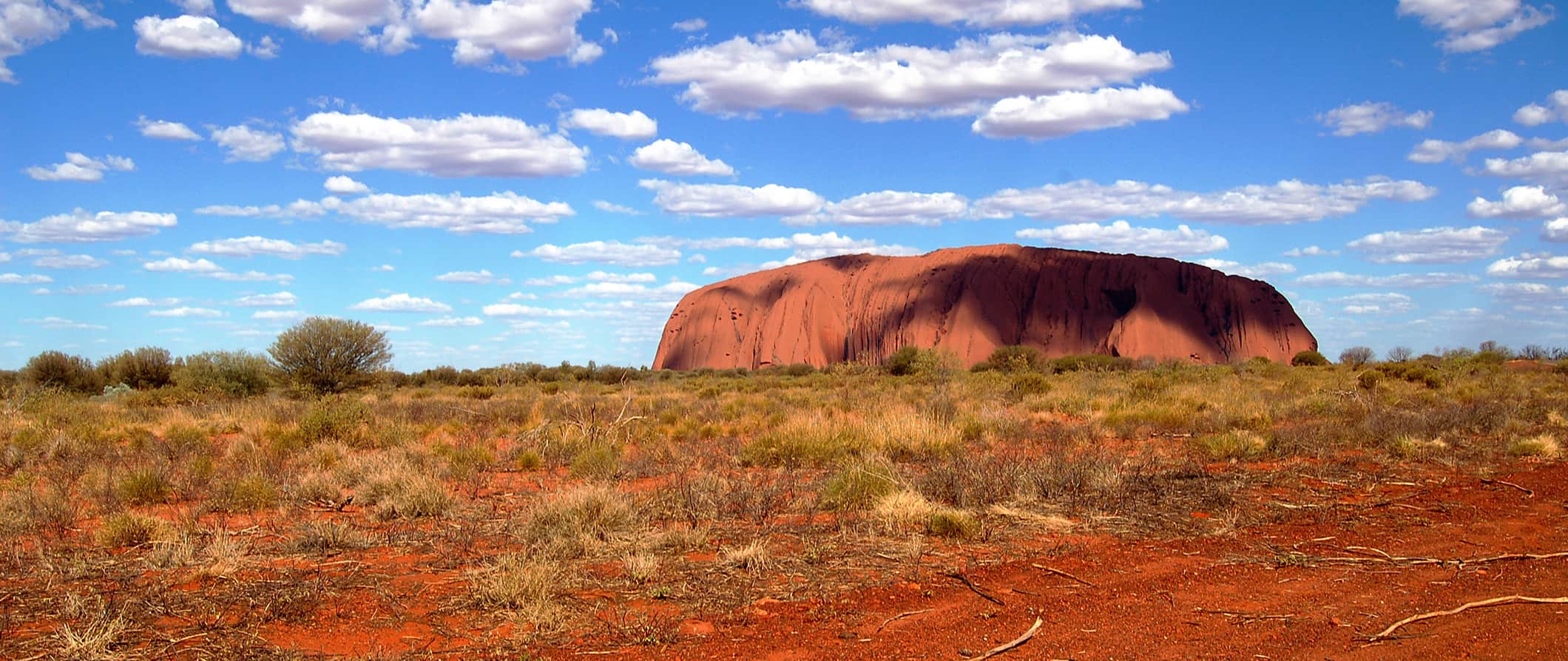
Accommodation – Hostels dorms start around 25-30 AUD per night, though they get as high as 40 AUD in the big coastal cities. Private rooms with a double bed and a shared bathroom in hostels range between 65-100 AUD per night, though in larger cities they can be as high as 150 AUD. Expect basic amenities like free Wi-Fi and self-catering facilities. Only some hostels include breakfast.
For those traveling with a tent, a basic tent plot without electricity starts around 7 AUD, though most are 10-25 AUD per night.
For budget hotels, expect to spend 100-120 AUD per night for a two-star hotel. Amenities usually include TV, Wi-Fi, and AC. Some hotels have a pool.
Airbnb is available around the country with private rooms starting around 40 AUD (though they average closer to 90 AUD). Entire homes/apartments cost at least 140 (though they are usually double or even triple that price so be sure to book early). Expect to pay about 10-20% more in the coastal cities.
Food – Food in Australia is diverse, with each region having its own specialties. While you can find cuisine of all types here, popular traditional choices include BBQ meat (especially sausages), meat pies, fish and chips, seafood, chicken parmigiana (chicken schnitzel topped with tomato sauce, ham, and melted cheese), and, of course, the infamous vegemite on toast.
Food prices vary per region, but generally, you can expect to pay 20-25 AUD for a meal at a casual restaurant. A fast-food combo from somewhere like McDonald’s costs 13-14 AUD while a pizza costs around 16-20 AUD. Chinese, Thai, and Indian food cost 12-20 AUD for a main dish.
If you want to splash out for something more upscale, a expect to pay around 55-70 AUD, including a drink, per person.
A beer is around 8 AUD, latte or cappuccino costs around 5 AUD, and bottled water between 2-3 AUD.
If you cook your own meals, expect to pay around 75-95 AUD per week for groceries. This gets you basic staples like pasta, rice, seasonal produce, and some meat.
Backpacking Australia Suggested Budgets
On a backpacker budget, you can visit Australia for 70 AUD per day. This assumes you’re staying in a cheap hostel, cooking all of your meals, using public transportation to get around, and doing mostly cheap or free activities like hiking and enjoying the beaches. If you camp, you can lower this budget by around 20 AUD per day. If you plan on drinking, add 10-20 AUD to your daily budget.
On a mid-range budget of 200 AUD per day, you can stay in a private Airbnb or hostel room, eat out for a couple of meals, enjoy a few drinks, take the occasional taxi to get around, bus between cities, and do more paid activities like taking surf lessons or going diving.
On a “luxury” budget of 385 AUD or more, you can stay in a hotel, eat out for all your meals, drink more, rent a car or camper van to explore, and do whatever tours and activities you want. This is just the ground floor for luxury though. The sky is the limit!
You can use the chart below to get some idea of how much you need to budget daily, depending on your travel style. Keep in mind these are daily averages – some days you’ll spend more, some days you’ll spend less (you might spend less every day). We just want to give you a general idea of how to make your budget. Prices are in AUD.
Australia Travel Guide: Money-Saving Tips
Australia can be a very expensive country to visit. If you aren’t careful, you’ll blow through your entire budget in no time as activities, food, and transportation all adds up fast here. Fortunately, there are lots of ways to save too. Here are some ways to save money when you visit Australia:
- Drink goon (box wine) – Goon is infamous on the Australian backpacker hostel trail. This cheap box of wine is the best way to drink, get a buzz, and save a lot of money at the same time. Drink this before you go out and save on spending money at the bar.
- Cook your own meals – The best way to reduce your costs is to cook as many meals as possible. Hostels and Airbnbs usually have kitchens and, while it’s not glamorous, it will save you a ton of money!
- Car share – Australia is a big country that can be expensive to get around. If you are traveling with friends, it’s smart to buy a used car or campervan (or rent a new one from one of the many rental companies in the country) and split the costs of gas. You can also hitch a ride with other travelers using sites like Gumtree, Jayride, or hostel message boards.
- Book tours as a package – This country has a lot of exciting activities and tours that eat into any budget. Booking activities together through a hostel or tour agency can get you a discount and save you hundreds of dollars.
- Work for your room – Many hostels offer travelers the opportunity to work for their accommodation. In exchange for a few hours a day of cleaning, you get a free bed to sleep in. Commitments vary but most hostels ask that you stay for at least a week. Check with the staff when you arrive to see if there are any opportunities available.
- WWOOF – WWOOFing is a program that allows you to work on organic farms in exchange for free room and board. Everyone I’ve met who stays in the country long-term does it for at least one month. It’s a great way to reduce your expenses and can a deeper look into local life.
- Stay with a local – Accommodation in Australia is pricey. If you plan ahead, you can usually find a Couchsurfing host that will host you for free. It’s the best way to connect with a local and get insider tips and advice.
- Camp – Camping is very affordable here, with basic tent plots costing as little as 7 AUD per night!
- Bring a reusable water bottle – The tap water in Australia is safe to drink so bring a reusable water bottle with you to save money and lower your plastic use. LifeStraw makes a bottle with a built-in filter to ensure your water is always clean and safe.
Where To Stay in Australia
I’ve been a backpacker here for ages and have accumulated a long list of places to stay. Here are my suggested places to stay in Australia if you’re looking for a hostel:
- Base St. Kilda (Melbourne)
- Space Hotel (Melbourne)
- Wake Up! (Sydney)
- YHA Rocks (Sydney)
- Bunk Brisbane (Brisbane)
- City Backpackers HQ (Brisbane)
- Kimberley Travellers Lodge (Broome)
- The Shiralee Hostel (Perth)
- Aquarius Backpackers (Byron Bay)
- Gilligan’s Backpacker Hotel & Resort Cairns (Cairns)
- Nomads Noosa (Noosa)
- Alice Lodge Backpackers (Alice Springs)
How to Get Around Australia
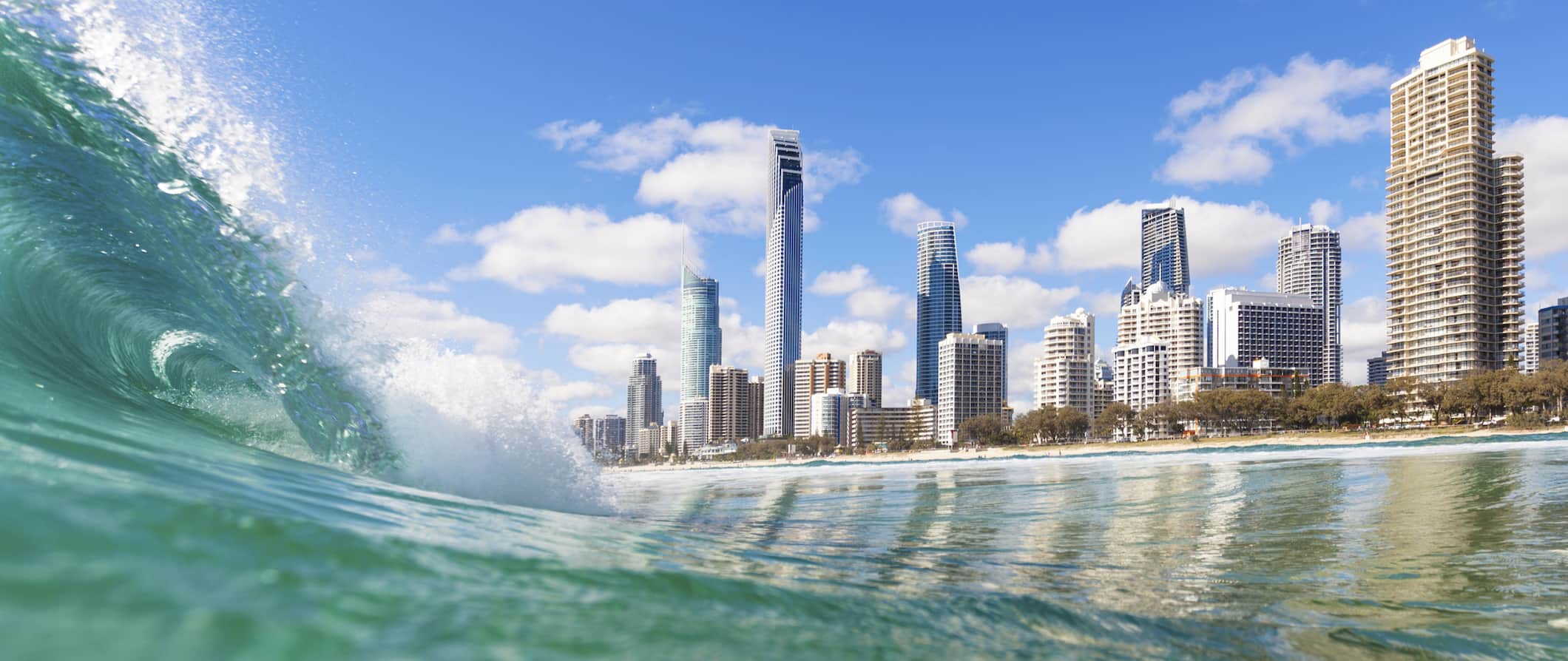
Public transportation – All of Australia’s cities have reliable, affordable public bus systems. In the bigger, cities such as Sydney, Melbourne, Brisbane, Adelaide, and Perth, you’ll even find subways and tram systems. This is the cheapest way to travel the cities. Fares cost between 2.75-4 AUD.
Many cities offer day passes that include unlimited public transportation for under 10 AUD.
Bus – After driving, this is my favorite transportation option in Australia. On the east coast, this will be your cheapest option too. On the west coast, buses are surprisingly expensive as there are not many people moving up and down that coast and there’s limited competition. However, on the east coast, you can find really cheap bus tickets, especially if you book in advance.
The two main bus companies in Australia are:
- Greyhound Australia
Greyhound also offers several bus passes. Their Whimit Passes range from 15-120 days of unlimited travel and are perfect for traveling around on a whim (hence the name). They come in 15, 30, 60, 90, and 120-day passes costing 349-729 AUD.
To find bus routes and prices, use BusBud .
Backpacker Bus – If you want to party with other backpackers as you travel, book a seat on the Magic Bus . This backpacker bus departs with 25 backpackers aged 18-35 for 3-4 weeks of exploring the country’s national parks, camping, bonfires, and non-stop parties and shenanigans.
Trips go from Perth north to Broome or east to Melbourne each month, so you have to time your trip accordingly to line up with the set departure. The itineraries are always flexible so every trip is unique. They try to keep a balance of 50% men and 50% women, as well as a balance of different nationalities, so there is always a diverse group. Prices vary so contact them for departure dates and ticket prices.
Train – Between city trams, commuter trains, and long-distance and trans-continental trains, Australia can be seen extensively by rail. Train lines exist mostly on the east coast with only two other major lines in the country: one goes north/south from Melbourne to Darwin and another east/east from Sydney to Perth.
For reference, Sydney to Canberra takes 5 hours and is 40-50 AUD while the 11-hour trip from Sydney to Melbourne costs over 200 AUD. Sydney to Brisbane takes 14 hours and costs 100-140 AUD.
Beyond the east coast, trains aren’t as plentiful and long-distance trains can be very expensive.
Flying – With Australia spanning over 7,000,000 square kilometers, it takes a long time to get around the country. Flying is one of the most efficient ways to city hop, but it’s not the cheapest. Australia’s major airlines include:
When booked in advance, flights can be very affordable here. Sydney to Melbourne is just 55 AUD and takes 90 minutes while Sydney to Cairns takes 3 hours and costs around 100 AUD each way. To cross the country, flights last around 5 hours. Sydney to Perth, when booked in advance, can cost as little as 150 AUD each way.
When not booked early, however, flights can easily double or triple these prices.
Rideshares – Every hostel has a bulletin board where travelers post rides and websites like Gumtree have active ridesharing sections where people look for cars or riders. I HIGHLY recommend this way of traveling when in the country. CoSeats is another good resource for finding rides.
Car rental – Car rentals start around 40 AUD per day. You don’t need one to explore any of the cities but if you want to travel the country then a car is best. Just remember that they drive on the left here.
Additionally, you can also purchase a car from backpackers leaving the country or locals selling used cars. You can usually find a used car for under 3,000 AUD. It might seem a lot, but there are always backpackers looking to share rides, which can cut down on our expenses.
When to Go to Australia
Temperatures vary across the country (it’s a huge landmass after all), but generally speaking, average summer temperatures range from 20-37°C (68-99°F). Remember that summer is from December-February here in the southern hemisphere. This is the most popular time to visit so expect big crowds and higher prices.
June-August (winter) is the low season. Prices are lower and there are fewer crowds. The temperature dips as well, hovering around 1°C (52°F) in the south while going as high as 30°C (86°F) in the north.
Spring and fall (March-May and September-October) are the shoulder season and the best time to visit. Crowds aren’t as big and prices aren’t as high and the weather is still enjoyable too, rarely dipping below 17°C (63°F).
Note that October to April is also “jellyfish season,” making waters unsafe for swimming or any other water sport. If you’re planning on enjoying Australia’s coast, this probably isn’t the best time to come. The season lasts from October to April in Northern Australia, and then from November to March elsewhere.
How to Stay Safe in Australia
Australia is an incredibly safe place to backpack and travel around. Violent attacks and petty theft are rare here so you’re unlikely to get into trouble.
Most incidents in Australia tend to occur because visitors are not used to the country’s unique climate and wilderness. Be sure you have plenty of sunscreen and stay as hydrated as possible. This is especially true if you’re driving through the Outback. There are long, long distances without any towns in sight, so if you break down, you’ll want to be prepared. Always make sure you have enough gas in your vehicle for long drives.
If you’re hiking, make sure you know what to expect ahead of time. Be on the lookout for snakes and spiders. If you’re bitten, seek immediate care.
If you’re swimming, heed the red and yellow flags. Yellow flags indicate swimming conditions may be dangerous; red flags mean the beach is closed.
Mother Nature in Australia is NOT a force to be reckoned with in this country. Don’t be a hero.
Solo female travelers are generally safe here, however, the standard precautions apply (never leave your drink unattended at the bar, never walk home alone at night intoxicated, etc.). Consult other solo female travel blogs for specific advice.
If you’re worried about travel scams, you can read about common travel scams to avoid here . There aren’t many in Australia though so I wouldn’t worry too much here.
If you experience an emergency, dial 000 for assistance.
The most important piece of advice I can offer is to purchase good travel insurance. Travel insurance will protect you against illness, injury, theft, and cancellations. It’s comprehensive protection in case anything goes wrong. I never go on a trip without it as I’ve had to use it many times in the past. You can use the widget below to find the policy right for you:
Australia Travel Guide: The Best Booking Resources
These are my favorite companies to use when I travel. They consistently have the best deals, offer world-class customer service and great value, and overall, are better than their competitors. They are the companies I use the most and are always the starting point in my search for travel deals.
- Skyscanner – Skyscanner is my favorite flight search engine. They search small websites and budget airlines that larger search sites tend to miss. They are hands down the number one place to start.
- Hostelworld – This is the best hostel accommodation site out there with the largest inventory, best search interface, and widest availability.
- Booking.com – The best all around booking site that constantly provides the cheapest and lowest rates. They have the widest selection of budget accommodation. In all my tests, they’ve always had the cheapest rates out of all the booking websites.
- Get Your Guide – Get Your Guide is a huge online marketplace for tours and excursions. They have tons of tour options available in cities all around the world, including everything from cooking classes, walking tours, street art lessons, and more!
- Rome2Rio – This website allows you to see how to get from point A to point B the best and cheapest way possible. Just enter your departure and arrival destinations and it will give you all the bus, train, plane, or boat routes that can get you there as well as how much they cost. It’s one of the best transportation websites out there!
- SafetyWing – Safety Wing offers convenient and affordable plans tailored to digital nomads and long-term travelers. They have cheap monthly plans, great customer service, and an easy-to-use claims process that makes it perfect for those on the road.
- LifeStraw – My go-to company for reusable water bottles with built-in filters so you can ensure your drinking water is always clean and safe.
- Unbound Merino – They make lightweight, durable, easy-to-clean travel clothing.
- Top Travel Credit Cards – Points are the best way to cut down travel expenses. Here’s my favorite point earning credit cards so you can get free travel!
Australia Travel Guide: Related Articles
Want more information? Check out all the articles I’ve written on Australia travel and continue planning your trip:
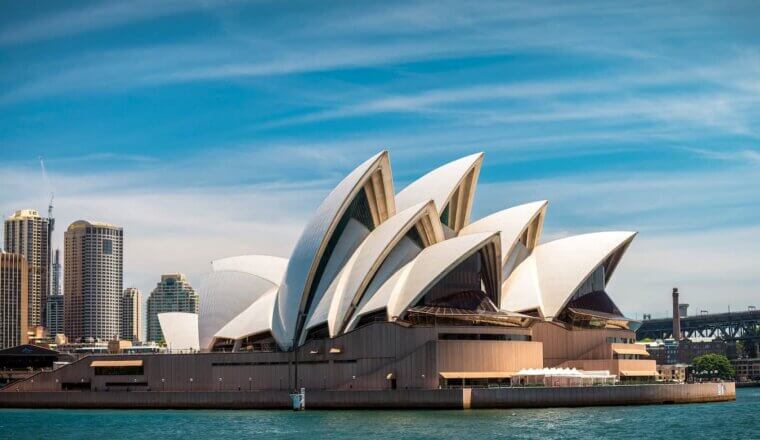
The 7 Best Hotels in Sydney
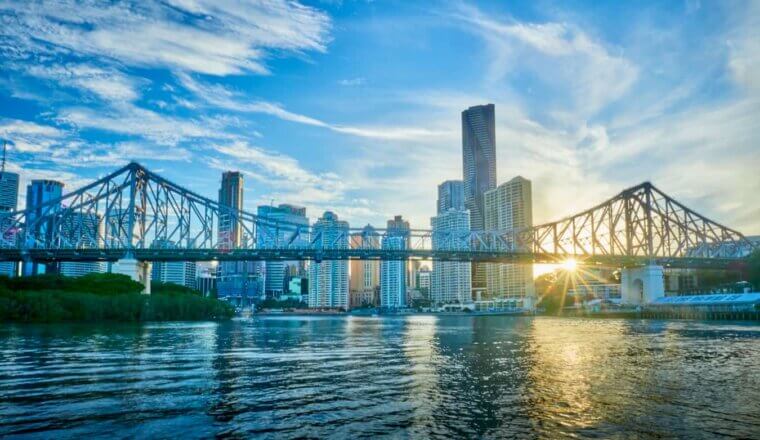
Where to Stay in Brisbane: The Best Neighborhoods for Your Visit
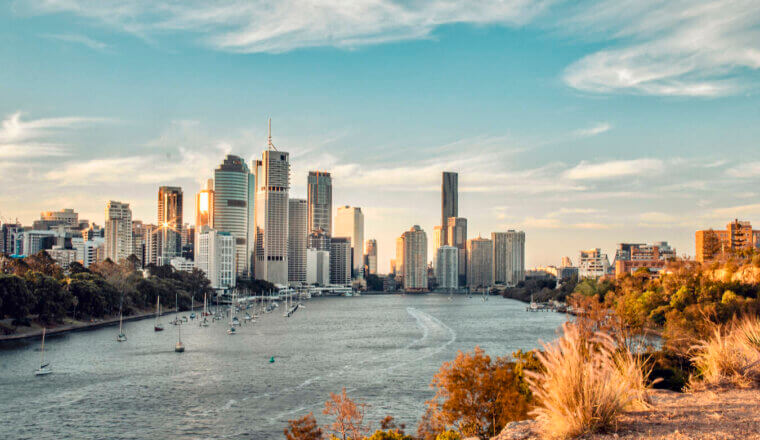
The 6 Best Hotels in Brisbane
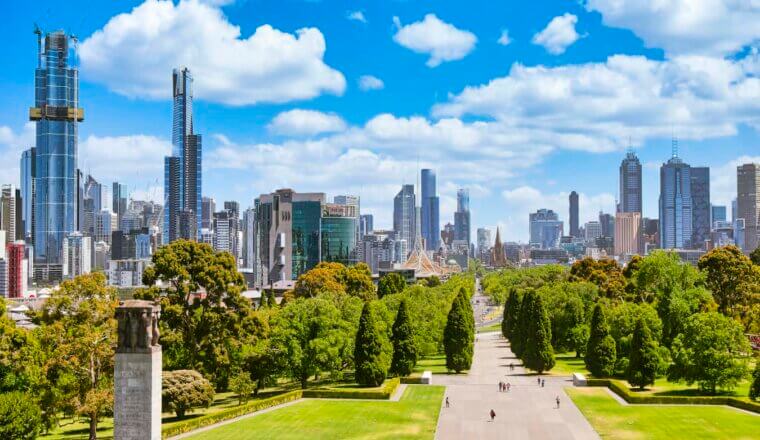
The Best Walking Tours in Melbourne
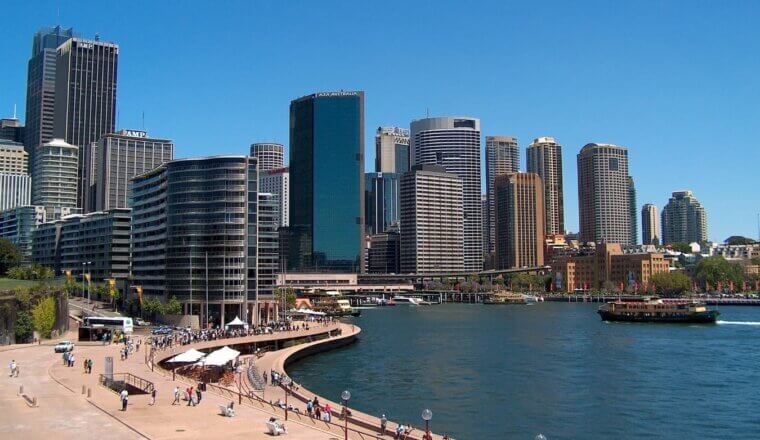
The Best Walking Tours in Sydney
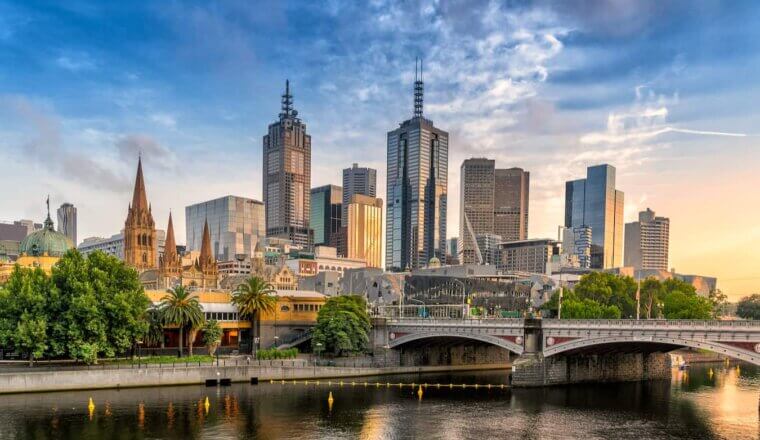
Where to Stay in Melbourne: The Best Neighborhoods for Your Visit
Get your free travel starter kit.
Enter your email and get planning cheatsheets including a step by step checklist, packing list, tips cheat sheet, and more so you can plan like a pro!

- Where To Stay
- Transportation
- Booking Resources
- Related Blogs
Frugal Travel
Driving around Australia on a Budget: 51 Australia road trip tips!
This post probably contains affiliate links from which I earn a small commission if you buy from them, at no extra cost to you. Thanks so much for stopping by!
I’m a big believer that a road trip is the best way to explore a place, and driving around Australia is no exception. Australia has some of the best road trip routes in the world and it’s definitely one of the easiest ways to travel Australia on budget.
That said, Australia is not known for being that budget-friendly (although I do my best to show how can travel to Australia for cheap ). After doing nearly a full lap of this enormous country over the 2 years of my working holiday visa, I know that every little thing spent can add up quickly.
But after very nearly driving a full lap of Australia on a budget, I know it can be done. And that’s exactly what this list of my top Australia road trip tips will help you do, too!
Table of Contents
How to buy a car or campervan in Australia
Both our car that Tom and I converted into a camper and our lovely little campervan that we converted ourselves were found on Facebook marketplace. I recommend taking a look here and joining some Australia backpacker facebook groups as lots of people advertise on here. Gumtree is also quite big in Australia and another place to find cars or campervans for sale.
How to get a good price for a car or camper
As with buying a vehicle anywhere, don’t be afraid to bargain with the price. Ask questions when you go and take a look at it and take a really good look to see what might cost you money and use that to get the price you want to pay.
Don’t forget to stick to your budget though! It can be really easy to get sucked into a pretty looking campervan but by spending now you’ll be taking out of your budget on doing some of your Australia bucket list items!
How to check it’s mechanically decent
Tom and I made a massive mistake with our very first campervan and bought it without getting a mechanic to look over it. Simply ask the seller if they would be happy for you to test drive the vehicle and take it to a mechanic to look over. This will probably cost you a little bit of money now but could save you so much in the long run. And if they don’t want you to take it for a check over, alarm bells should be ringing!
What about the paperwork?
Australia likes to make this really fun as this varies from state to state. In Queensland, for example, vehicles have to be sold with a roadworthy certificate to prove their safety, but in Western Australia, they don’t. The state the vehicle is registered to and the state you’re buying it in will alter what you need to do to register yourself as the new owner. Make sure you do your research around this before you purchase a vehicle.
What should my Australia road trip budget be?
Ah, the million-dollar question. How much does it cost to travel around Australia…
And no Australia road trip guide would be complete without trying to answer it!
The cost of driving around Australia can vary a lot depending on where your road trip is going to take you. A lap of Australia is going to require a different budget compared to smaller trip such as driving Melbourne to Sydney .
I have to admit, I didn’t keep track of what we spent on any of our road trips in Australia but other blogs suggest somewhere between $60-$100 per day for 2 people . But of course, this depends on so many things!
In reality, there are 2 main categories of road trip expenses:
Living costs – you’ve always got to eat, have water available, pay for fuel and be able to wash yourself and your clothes. These costs exist no matter what else you’re doing. There’s no avoiding them!
Optional costs – How many tours you want to take and how much you want to drink, eat out and party. The more you do this, the more it will cost you! But keep reading as there are definitely ways to do these for less as well!
Then there are the other things you need to consider:
- How far you’re going to road trip – Wanting to go from Darwin to Adelaide? That’s going to cost you a lot in fuel money. Fuel is expensive in the outback and everything you want to see is massively spread out.
- Which Australia road trip route you’re going to take – If you’re planning an iconic east coast Australia road trip you’re going to be spoilt for choice when it comes to tours and things to do. But these don’t come cheap in Australia! Over on the west coast, it’s all about getting outside in nature, but it doesn’t have the Aussie bucket list items.
- How long you’re going to road trip for – An obvious one, the longer the road trip the more it will cost you. However, the cost per day doesn’t really change. No matter how long you’re going for, you still have to eat, get water and wash each day. The cost of a longer road trip is only really down to fuel and tours.
- How many people are on the road trip- Another easy one, a family with young children are going to have different outgoings to a couple or solo traveller.
- Where you’re going to stay- The best budget-friendly Australia road trip tip is to buy a camper or car you can sleep in. There are some epic free campsites all over Australia and budget hotels are hard to come by.
How long does it take to travel around Australia?
There’s really no answer to this! We met people who had been travelling for years and people who did huge road trips in just a few weeks. Here’s what I recommend though:
- East Coast (Melbourne to Cairns) – 6 weeks but can be done in 4 weeks if you’re short on time
- West Coast (Broome to Esperance) – 6 weeks
For our (almost) full lap of Australia we were on the road for about 5 months and did this route:
Sydney-Brisbane-Uluru-Darwin-Broome-Exmouth-Perth-Esperence-Adelaide-Melbourne-Sydney
Road trip essentials.
After road tripping in both a car that we built a bed in the back of (read how we did that here ) and a campervan, I know what you do and don’t need on the road. I’ve previously put together road trip essentials guides for both car camping and your campervan , but here are a few of my top, top, TOP road trip essentials.
- Basic set of tools – doesn’t have to be anything fancy, and even if you don’t know what to do with them, chances are some kind stranger will! A tool kit like this has a little bit of everything in and could really save your bacon if something breaks while you’re in the middle of nowhere.
- Solar shade for your windows – Great for both keeping your car or camper at a nice temperature and creating privacy. There are loads available online for cheap.
- Rechargeable head torch – they might not look the part but you’ll be so grateful when you’re doing a midnight toilet run! Getting a rechargeable head torch like these saves on the cost of batteries as well.
- Packing cubes – These are the best way to keep your clothes tidy when you’re living in a tiny space! I just have the normal ones like these but if you want to be super tidy, check out compression packing cubes .
- Travel games – Want a quick way to make friends? Crack out Uno or Monopoly Deal !
51 Australia Road Trip Tips
Tips for driving around australia on a budget, before you even leave…, 1. know what money you have in the bank when you start.
Sounds obvious but THIS will determine everything when planning your road trip around Australia! If it’s more than you anticipated, great! If it’s not looking quite as good then it’s time to reprioritise your plans.
2. Plan ahead
Planning every little detail of your road trip would be pointless BUT having some idea of a route and time scales can definitely help you save money.
- Avoid school holidays – Everywhere will be busier and prices for accommodation and tours will go up. if you’re going to be travelling long term and won’t be able to avoid these, try and steer clear of the major tourist attractions.
- Plan around the seasons- This country is massive guys! It’s cold in the south in winter, Boiling and humid in north Queensland in Summer and the Northern territory has a wet season and can even get cyclones. And if you think the red centre is always a blazing hot desert, think again! We were wearing 3 layers walking around Uluru in May!
- Migration seasons – If you want to tick off big things like swimming with whale sharks in Exmouth , make sure you’re there at the right time of year or you’ll miss them.
3. Don’t buy stuff for your road trip you don’t need
Simple! If you’re not sure you need it, leave it. If you find you need it later on then buy it then! Don’t get sucked into the idea of ‘just in case’ because it hardly ever happens!
4. Think about what you need to pack
Australia is so diverse and by working out what to pack for the types of things you need to do can save you money. Planning on hiking some of the incredible national parks? Keep an eye out for a deal on hiking shoes. Planning on nothing but beaches? Get yourself some decent swimmers and a quick-drying travel towel.
Speaking of packing, I actually have a full packing guide for backpacking around Australia which is perfect if you’re planning on doing a little bit of everything. Check it out here .
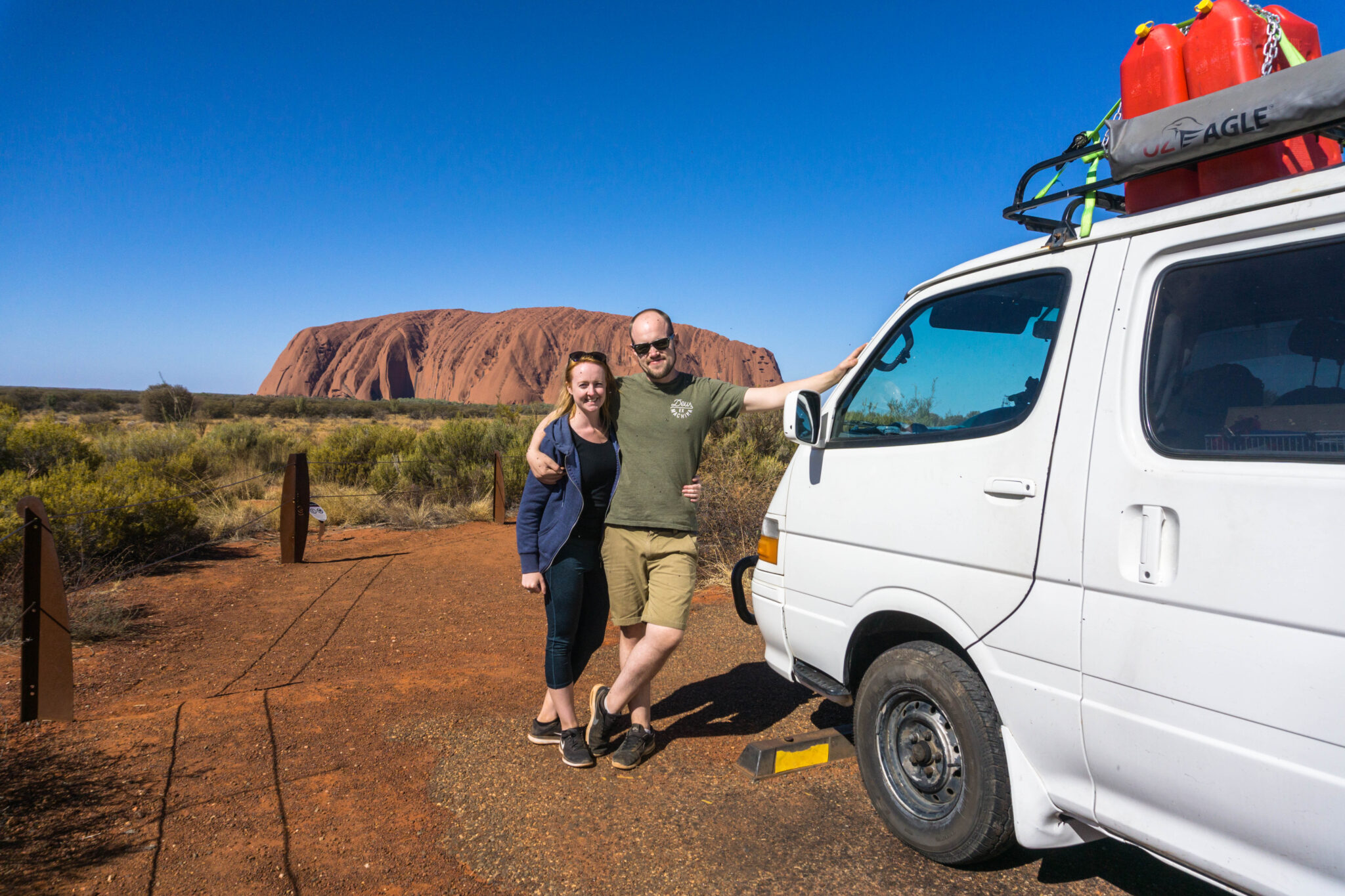
Spend a little bit now, before it’s too late!
5. have your vehicle serviced.
As annoying as this might seem, having your vehicle serviced is a way to identify problems before you set off. You can cover huge numbers of miles each day when driving around Australia so ironing out some small issues can prevent a breakdown when on the road.
6. Have a few spare parts with you
This was something we picked up from a local and it’s so worth doing! Having a spare belt, hose and oil that you know will fit your vehicle will make things a whole lot easier if they break. You might be able to fix them but someone else might. And if you can get to a mechanic then you won’t have to wait for parts to be delivered.
7. Consider buying roadside assistance…
Guess what can make the cost of driving around Australia astronomical? Breaking down and having to get towed. We broke down twice on our lap of Australia – once near Alice Springs and once just outside of Kakadu. We bought roadside assistance through NRMA as they covered us throughout the whole country and, dear god, where we glad we did! Having to pay for a tow could cost you thousands!
8. And make the most of the perks that come with it!
By joining NRMA we also got access to their benefits such as discounted stays at NRMA campgrounds and discounts on some tours and attractions.
9. Buy travel insurance
I know this doesn’t sound like much of a road trip tip but hear me out. By having good travel insurance you’re protecting yourself and your belongings in case something does happen. I’m a big fan of World Nomads because they offer cover for a huge range of activities like skydiving and bungee jumping which you might well have on your bucket list. They also offer cover for your belongings. Take a look at their website for a quote and more details.
Save money on fuel in Australia
10. get the fuel map app on your phone.
This is unbelievably useful and actually quite interesting. The cost of fuel across Australia and even between petrol stations in the same town can vary massively. The Fuel Map App shows all of this so you can fill up for less. One thing to note though is the fuel prices are updated by app users so might not always be super accurate. But we find it to be good enough!
11. Jerry will be your new best mate…
Jerry can that is! Oh wow…
But honestly, if you’ve got space on your roof for a couple of jerry cans, do it. Fill them up when fuel is cheap to then put it in your vehicle when fuel is expensive. FYI, fuel is almost double the price in the red centre vs anywhere on the coast!
12. Get a Woolworths rewards card
Woolworths is one of the main supermarkets in Australia and their rewards card gets you a few cents off at their fuel stations. It also collects points as you spend which overtime amounts to $10 off your shop. Bonus!
13. Maintain your vehicle for fuel efficiency
Doing some basic checks on your vehicle like oil levels and tyre tread and pressures can help with fuel efficiency. Learn how to do them and save money on fuel.
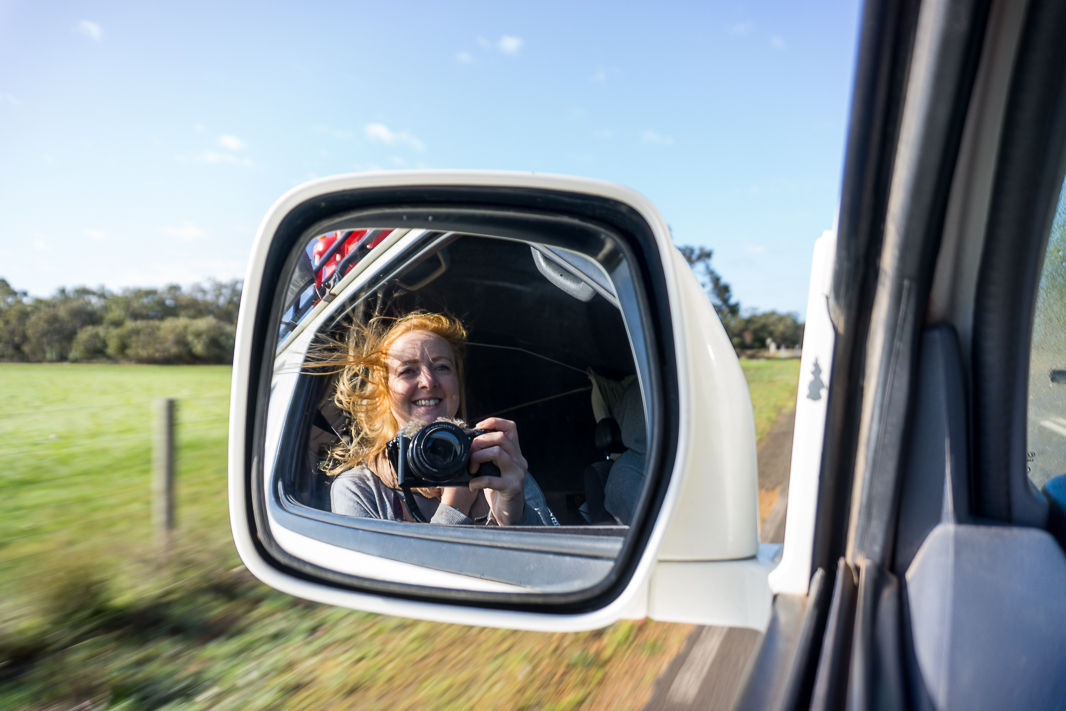
Save money on the road
14. don’t be scared to keep checking your account.
I’m so guilty of just assuming my bank balance is fine without actually checking it. Don’t do this! Try and check your account every day so you know how much you’ve got to use towards activities and your bucket list items.
15. Or keep track of everything you spend on an app
If you want to really keep tabs on how much you’re spending each day get an app that allows you to input all the information in. I tried to do this but got bored of it but I wish I’d kept it up so I knew how much we spent!
16. Slow down and enjoy the drive
Driving at a steady pace is more economical so slow down and enjoy the views.
17. Plan your route
As I’ve mentioned, Australia is massive and not knowing where you’re going can cost you precious dollars in fuel. I always just use Google Maps as it allows you to add multiple stops and it also lets you know if there are diversions of traffic jams. This will help you work out how to plan a road trip on a budget no end!
18. Avoid tolls
Toll roads are a stinger in cities so avoid them where you can! You can choose this as a setting in Google maps to make it easier to plan your route and driving times.
19. Hire a campervan for as little as $1 a day…
This is not too good to be true! Vehicle companies hire their campervans out for a tiny amount for the purpose of relocating them from one place to another to meet hire demands. It works out great for them as they don’t have to employ staff to get their vehicles back to high demand locations, and it means you can hire them for as little as $1 a day! The catch is you have a strict time deadline to meet so it restricts what you can actually do. But to just get from A to B, it’s great!
The best websites for finding relocation rentals are imoova , CoSeats and Transfercar . If you want to know more about this, check out my full guide to Australia camper relocations .
20. Find cheap vehicle hire
Always use a comparison website like MotorHome Republic or vroomvroomvroom to get the best options and prices for what you’re looking for.
How to find cheap places to stay
21. road trip in a campervan or car camper.
I know this Australia road trip guide is pretty heavily weighted towards having your own home on wheels, but it’s for a reason! Having a vehicle that you can sleep in makes the cost of accommodation minuscule in comparison to hotels or even hostels each night.
22. Use WikiCamps
Wikicamps is an awesome app that allows you to find cheap and even free campsites all over Australia. It’s just a few dollars to download it and then you can filter by location, campsite facilities and most importantly, price! To learn the ins and outs of WikiCamps, check out my guide here and you’re on for a cheap road trip!
23. Make use of free campsites
You’d be surprised about how many free campsites there are in Australia and making use of them is obviously going to save you money. Some have no facilities and some will offer basic toilets and a tap. They might not be anything more than a truckstop or layby on the side of the road but use WikiCamps to find them.
24. Find cheap showers on your road trip
Generally, you’re only going to find showers at proper campgrounds. While it can well be worth the luxury sometimes, to travel Australia on a budget, this won’t be the case most of the time. WikiCamps is also great for finding showers and will mark on places like beachside showers, swimming pools and some campgrounds where you can pay a small fee to use the facilities.
25. Be self-contained
If you have a bathroom and solar power on your vehicle then you can save yourself a nice amount of money. It’s becoming more common now for free campsites to only allow fully self-contained vehicles to stay so this could definitely save you money!
26. Make use of hostels
Some hostels allow people to sleep in their vehicles on-site but make use of the facilities inside. This is often cheaper than paying for a campground but be sure to call the hostel in advance to check availability.
HostelWorld.com is the best place to find hostels that offer this.
27. Stop and Housesit
Housesitting is a great way to stay in an expensive area for free in exchange for looking after someone’s house and pets for them. Chances are you will need to be available to do this for at least a week at a time but it’s a great way to slow your road trip down and spend some time in a place.
The best websites for house sitting in Australia are Trusted Housesitters and Aussie Housesitters . There’s a membership fee for both but if you just get a couple of nights as a house sitter you will have made your money back.
28. Join Couchsurfing
Couchsurfing is another great way to not only save money but make friends and get to know an area through a local. Again, it’s sometimes better if you have a couple of days to spend in a place as the point of Couchsurfing is to meet people and offer them something in exchange for free accommodation in their home.
29. Find a bargain on AirBnB…
AirBnB is amazing and our go-to when we wanted to explore the big cities in Australia where campsites just don’t exist. If you want to see a city as part of your road trip, find an AirBnB with a parking space so you can get into the city easily. Nothing is worse than staying at a campground miles away and having to waste time driving in and paying extortionate fees on parking.
30. But also compare this with the price of hotels
My go-to website for hotels is booking.com as it’s so easy to use and they also offer discounts the more you book with them. It’s pretty common for AirBnBs to be listed on booking.com and hotels to be listed on AirBnB so always look at both websites when looking for the best prices.
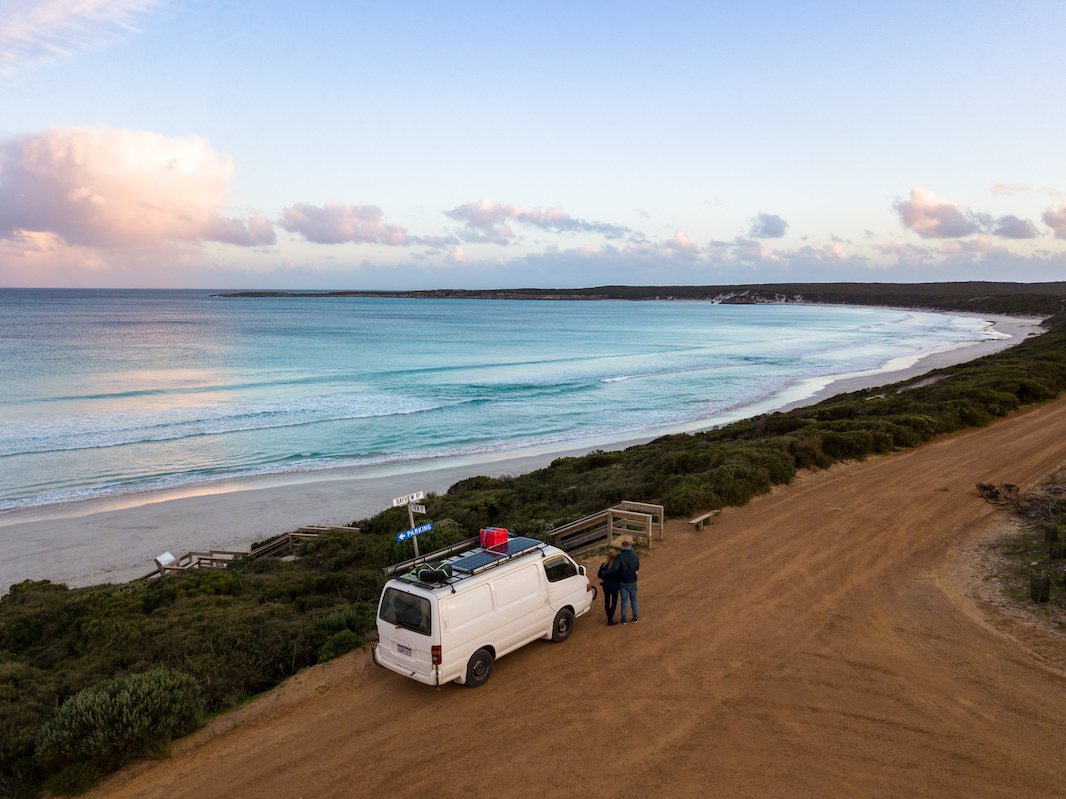
Save money on groceries
31. cook your own meals.
Making your own meals is always, always going to be cheaper than going out. cooking in a campervan is easier than cooking on a campstove if you’re in a car but there are still plenty of meals you can make on two ring gas stove.
32. Use free public BBQs
Free. Public. BBQs. It doesn’t get more Aussie than that! But you’ll find these all over the country, especially in parks next to the beach. Save your own gas and have a BBQ with a view instead!
33. Have staple go-to meals
On our lap around Australia it wasn’t uncommon for us to drive for 8 hours a day but with this came tiredness and laziness when it came to cooking. Instead of heading to the nearest takeaway though, we would turn to one of our easy and quick dinners. Things like vegetarian fajitas, lentil chilli or cheese toasties can be whipped up in about 15 minutes.
34. Stock up at the big supermarkets when you can
Aldi, Woolworth and Coles are the main supermarket chains in Australia and it’s best to stock up here when you can. Once you leave more built-up areas you might only find small convenience stores (usually and IGA) that are a lot more expensive.
35. Raid the reduced food section
I do this no matter if I’m on a road trip or not! If there’s something in the reduced section that you’re looking for and are going to use within the next day or so, why pay more? It helps stop food waste too!
36. Organise your food storage
When you’re living in a tiny home on wheels, the more organised you are the better. If you organise your food storage then you’ll be able to fit more in and stock up more at the supermarkets.
37. Keep food cool
In our Honda CRV car camper we only had space for a cool box which was great, but it was so much better having a proper little fridge in our campervan. Either way, make sure you have something to keep your food cool and fresher for longer to avoid food waste. It will also help with the stocking-up tactic!
In case you’re wondering what fridge we had in our campervan, it was similar to this one .
38. Get in the snacks
Avoid those sneaky stop-offs at drive-throughs by avoiding hanger! And maybe try and get some healthy snacks as well as the crisps and biscuits. It’s all about balance guys!
39. Cut back on alcohol
Despite there being so many awesome breweries and vineyards all over Australia, the price of alcohol is insane! A pack of just 6 beers can cost you about $21! Something to bear in mind when getting your groceries.
40. Get free drinking water
It’s so important to have a decent amount of drinking water with you at all times in Australia. Get yourself some water jerry cans like these and use the WikiCamps app or drop into visitor centres to find nearby potable water. If you keep on top of this, there’s no need to buy bottles of water from the shop- and it’s way more environmentally friendly of course!
41. Find restaurant deals
Ok, so let’s be real, you’re going to want to eat out sometimes. While Australia isn’t the cheapest, I’ve found some great apps that show restaurant deals and get reward credit. Liven and Eat Club offer discounts at their associated restaurants when you pay through the app and have different special deals on each day.
I’ve actually got a whole guide on these apps and more ways to eat out for cheap here .
42. Eat out for breakfast or lunch
You’re far more likely to find morning or lunchtime deals at restaurants so if you want to eat out, go for one of these instead of dinner.
43.Drink up at happy hours
From harbourside bars in Sydney to outback pubs, happy hours seem to be everywhere! So if you fancy a few pints, get the drinks in while they’re cheap.
Save money on activities
44. make the most of the great outdoors.
Australia’s natural beauty is what makes it one of the best places to road trip in the world. And its natural beauty means there’s a lot you can do and see for free or very little money! Get out and go snorkelling at the beaches, go waterfall hunting or simply walk around a city or park.
45. Prioritise your bucket list things
There are some seriously incredible things you can do on your Australian road trip and to keep to your budget, it’s a good idea to prioritise them. Don’t get sucked into other tours that you’re not bothered about just because other people are doing them. You can’t do everything anyway so decide on the things that are 100% unmissable for you, factor in the cost and stick with it.
46. Look to do tours out of season
This isn’t always possible as not all tours run year-round, but if you can do your bucket-list trips outside of the peak times, it’s a great way to get a discounted rate and maybe even avoid the crowds.
47. Tour group or DIY tour?
This is something that I’ve definitely learnt more about over the year, and by having your own wheels, it’s so much easier to do your own tours as part of your Australia road trip. For example, if you have a 4×4 you can take yourself to Fraser Island rather than joining a pricy tour.
Generally, it’s cheaper to take yourself than it is to join a tour!
48. Find the best tour deals on bookme.com.au
Tom and I didn’t take a lot of tours but for our Whitsundy’s tour and Great Barrier Reef Tour, I used Bookme . This website offers awesome discounts on a huge range of tours and ferries all over Australia and I haven’t found another site to beat the prices on there.
49. Get a National Park Pass
This is a great option especially for Western Australia where nearly all the top National Parks have an entrance fee. Buying a National Park Pass gets you free entry into the parks which is far cheaper than paying for day entry per park. You can buy a Holiday pass which is valid for up to one month for $60 vs paying roughly $15 per day for each park you want to visit.
50. Compare booking directly with a tour company vs using a tour agent
This one requires a bit of effort but could be worth it. Shop around for the best price for the tour you want to take. Sometimes the tour agents have great deals but sometimes it’s better to go directly through the company.
51. Do free walking tours
I think I have this at the start of every one of my budget-friendly city guides, so this time I’m going to finish with it! But honestly guys, there’s no better way to get to know a place than through a free walking tour with a local. Check out I’mFree Walking Tours or the local visitor centres to book on to one.

Are you planning an Australia road trip? Share where you’re going in the comments!
Like it pin it for later.
The BEST things to do in Exmouth WA
What to do in Coral Bay: 16 TOP things to do in Coral Bay, WA
You may also like.
15 things to know before you work on a dairy farm: 88 Days regional work
How to Build a Car Camping Bed Platform – Honda CRV Camper Conversion
My Ultimate 4 day Kangaroo Island itinerary: Top things to do on Kangaroo Island
Terri Williams
just awesome, thanks a lot for making a nice Post for us………..
Thanks for the shout out Laura but you missed the best part about coseats.com … You can save a huge amount of money on fuel by giving other travelers a lift! Happy travels
Leave a Reply Cancel reply

Driving Around Australia: Planning The Perfect Big Lap Of Australia
This post may contain compensated links. For more information, read our disclaimer here .
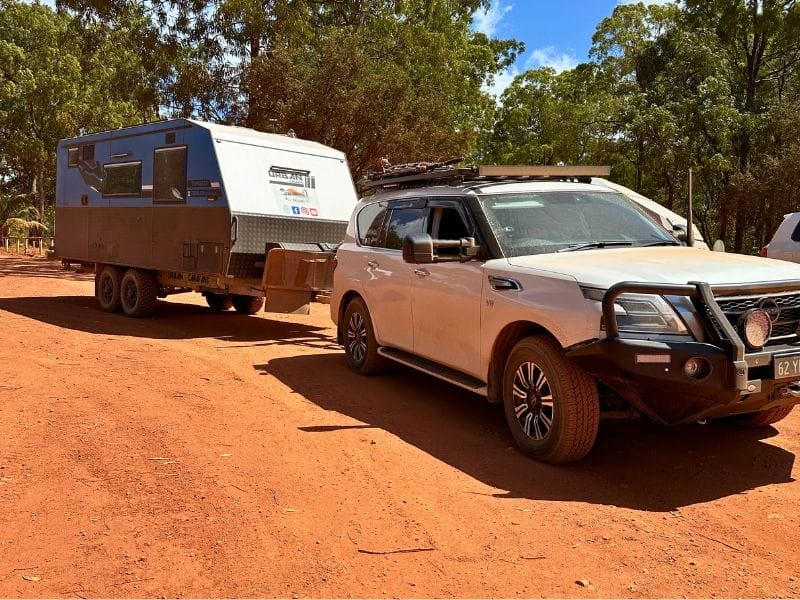
So you’ve decided to do the big lap driving around Australia in your caravan, motorhome, RTT or camper trailer? Fantastic! This amazing experience will give you a true sense of Australia’s size and diversity.
Kev and I hit the road full-time in June 2023. However, travelling around Australia has always been on our Bucket List. On our second date we agreed we’d buy a caravan and travel full-time.
We’ve been in your shoes wondering which caravan to buy, which rig to buy and where and when to start planning.
But if you want to make the most of your big lap, planning ahead is essential. Here are some tips to help you get started.
The beauty of road-tripping around Australia is that there is something for everyone. Whether you’re into beaches, mountains or the outback, there’s a perfect spot somewhere in our huge country.
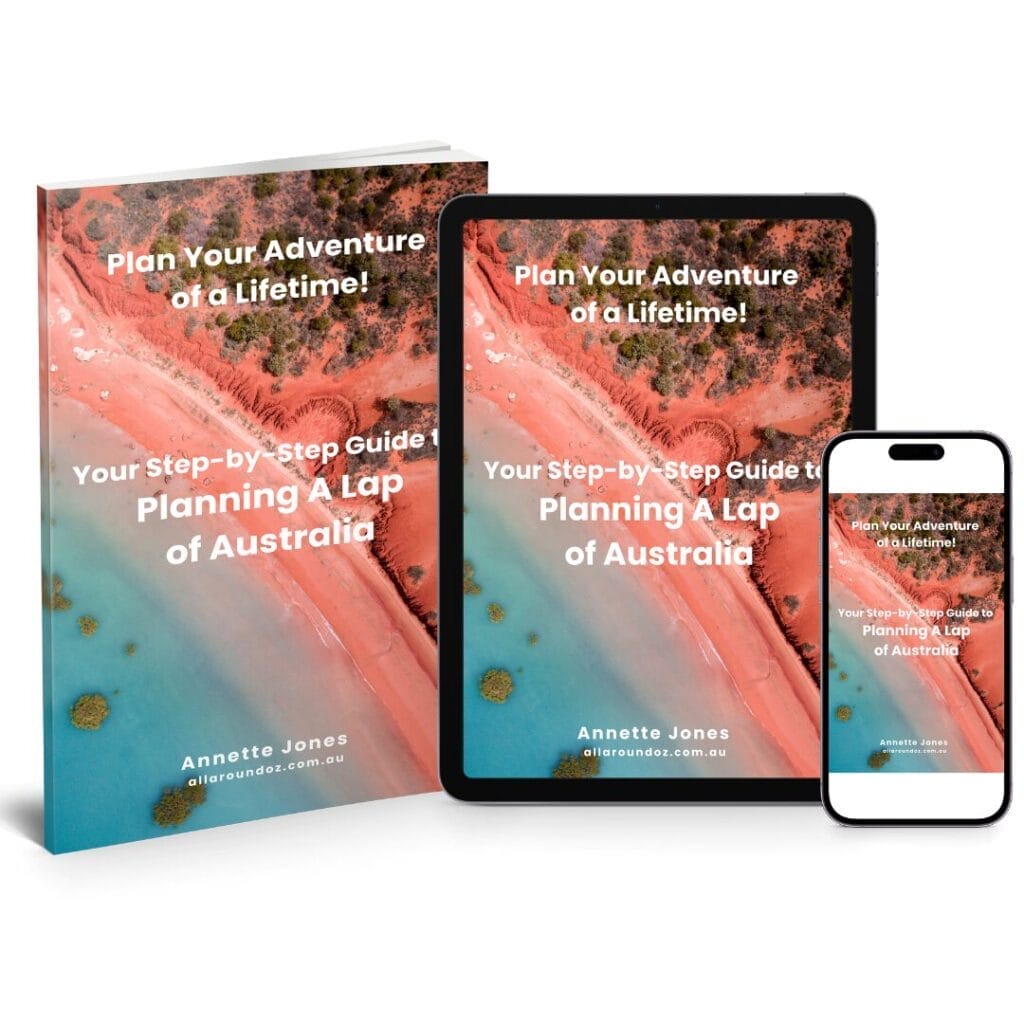
But before you can start enjoying the scenery, you need to plan your route. This can be tricky because there are so many options! One way to make things easier is to choose a state or region and focus on exploring that area in detail.
Another thing to consider when planning your trip is what kind of traveller you are. If you like free camping and being active, then chasing down all the free campsites around Australia might be right up your alley.
If, however, you prefer staying in caravan parks and sticking to the blacktop and only free camping once or twice a week, then it’s best to map out these stops well in advance.
Whatever type of traveller you are, one thing remains the same: preparation is key! So sit down with your favourite beverage and plan your dream road trip around Australia . You won’t regret it!
Here’s a step-by-step guide on how to plan the perfect trip around Australia.
Decide On Your Budget And Time Frame
Table of Contents
Determining your time frame and budget for driving around Australia will help narrow your options and simplify the planning process. For instance, if you have a limited budget, you might want to stick to free campsites and cheaper caravan parks.
If you have more time, you can afford to take your time and explore different areas in depth. Whatever your situation, it’s essential to be realistic about what you can and can’t do.
Choose Your 4WD, Caravan, RTT, Motorhome or Camper Trailer
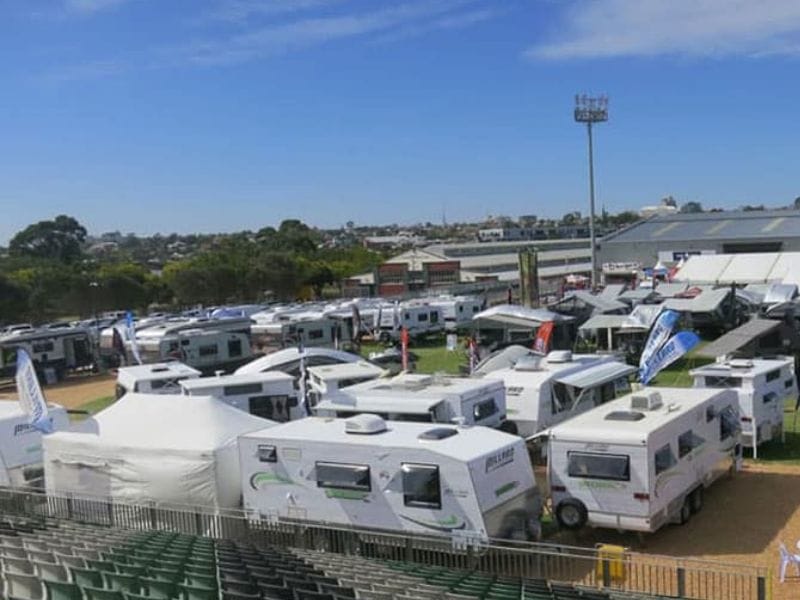
If you plan on doing any off-roading while driving around Australia, it’s essential to choose the right 4WD. There are many different factors to consider, such as fuel efficiency, towing capacity, weights and ground clearance. We’ve written about choosing the right 4wd for your set-up here .
It’s important to ensure your 4WD is fitted with the appropriate tyres. All-terrain tyres are a good option for most off-roading, but if you plan on doing serious mud driving, you’ll need mud tyres.
Weight is one of the most important things to remember when choosing your vehicle. You need to know your 4WD the towing capacity and the payload (the weight of everything inside the vehicle, including passengers and gear). If you’re unsure about these numbers, you can usually find them in the owner’s manual or the manufacturer’s website. We’ve written a comprehensive article all about weights and towing here .
If you’re not planning on off-roading, a motorhome will be more than sufficient if you want to stay on the blacktop. However, they are restrictive once you are set up in a caravan park unless you have another form of transport to get around a town once you are parked up. Again, there are a few things to remember about Motorhomes, such as fuel efficiency and storage space.
Remember to factor in the cost of petrol when planning your budget, especially since the price is rising.
Choose Your Direction Of Travel

Without sounding like Captain Obvious, Australia is a huge country, so focusing on one area at a time is important. This will help you make the most of your trip and see everything that interests you.
One of the most asked questions from our friends before we left was, “Where are you heading first?” We didn’t know when our van would be delivered. As I mentioned above we took off in June 2023 and headed north, chasing the sun.
The weather will determine whether you head north, south, east or west because certain regions are only accessible during certain seasons. For instance, the Top End is only habitable between May and October because of the wet season.
Likewise, central Australia is too hot to visit during summer, so winter is the best time. Once you’ve decided on a direction, you can start mapping your route.
Planning What To See And Do
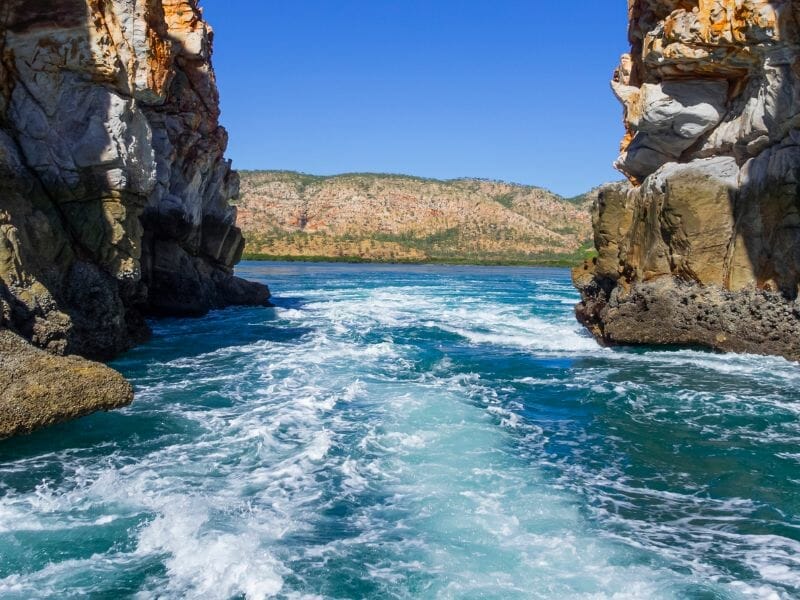
Some things to consider when choosing a state or region:
- The type of scenery you want to see
- The type of experience and activities you want to do
- How long you want to spend in each place
- The time of year
- The weather
- Road conditions
Figure out where you want to go and what you want to see when driving around Australia. This will help make the planning process much easier. If you’re unsure where to start, a few websites can help you plan your trip, such as our website All Around Oz .
Apps such as WikiCamps, Hipcamp, and CamperMate are also a great help when doing the big lap of Australia. Click here for 75 of the best camping apps.
You can buy maps and guidebooks online to help with planning and the big lap of Australia map before you go. You can also pick up maps from petrol stations, camping stores and bookstores. Once you know where you’re going, it’s time to start booking accommodation and activities.
Book your campsites and caravan parks in advance if you’re travelling during peak season. Many popular campgrounds and caravan parks fill up months in advance, so planning at these times is essential.
There are a few different ways to book accommodation, such as through the campsite’s website, over the phone or in person. We usually recommend booking online because it’s the easiest and most convenient option, especially on the road.
When it comes to activities and tours , many can be booked in advance. We’d recommend this in the busy seasons.
It’s always a good idea to have a backup plan in case your first choice is fully booked. For instance, if you plan on staying in a particular campground but it’s full, you can try calling around to see if there are any other options. Or, the easiest of all is to make Wikicamps go to work for you.
You might also consider staying in a national park or free camp. They usually have a first-come, first-served policy, although you’ll have to book in popular spots and peak season.
Book Your Accommodation
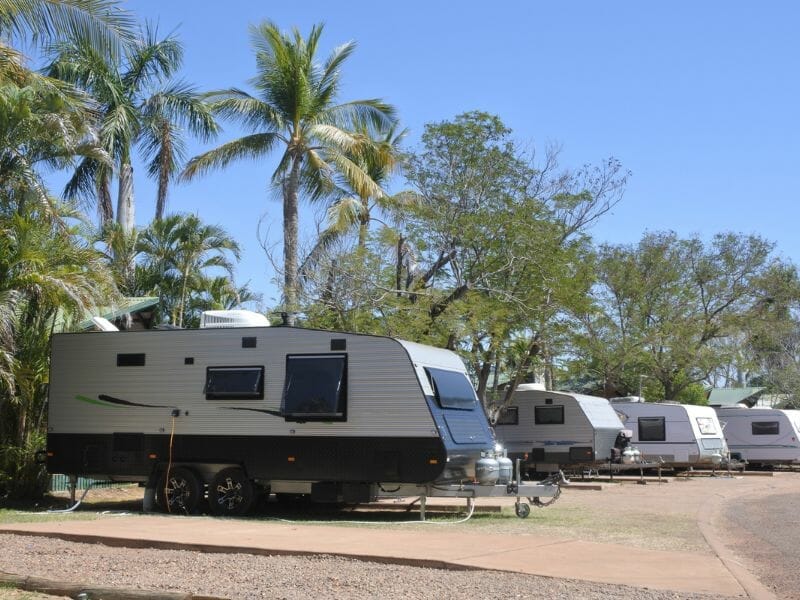
If you plan to stay in caravan parks or campgrounds, booking your accommodation before you head off is a good idea, especially during peak season. This will ensure you have a spot to park your van and avoid stressful situations. Several caravan park memberships you can join can be cost-effective and save you money or allow you additional nights free.
That said, the ever-popular “winging it” or “going with the flow” type of travelling has many benefits, too, as it allows you to be flexible. This is the type of travel we prefer.
If you choose to wing it, we recommend listing the places you want to stay in advance and then calling to see if any spots are available.
You can also try your luck at arriving early in the day and seeing if there are any cancellations. This is more common during mid-week stays.
If you’re struggling to find a spot, there are a few other options you can try, such as:
- Staying in a national park
- Free camping
- Staying in someone’s driveway (There’s a Facebook Group !)
When booking your accommodation, a few options exist, such as through the campsite’s website, over the phone or in person. We usually recommend booking online because it’s the easiest and most convenient option.
If you’re struggling to find a particular campsite or caravan park, you can always try calling around to see if there are any other options.
Plan Your Route
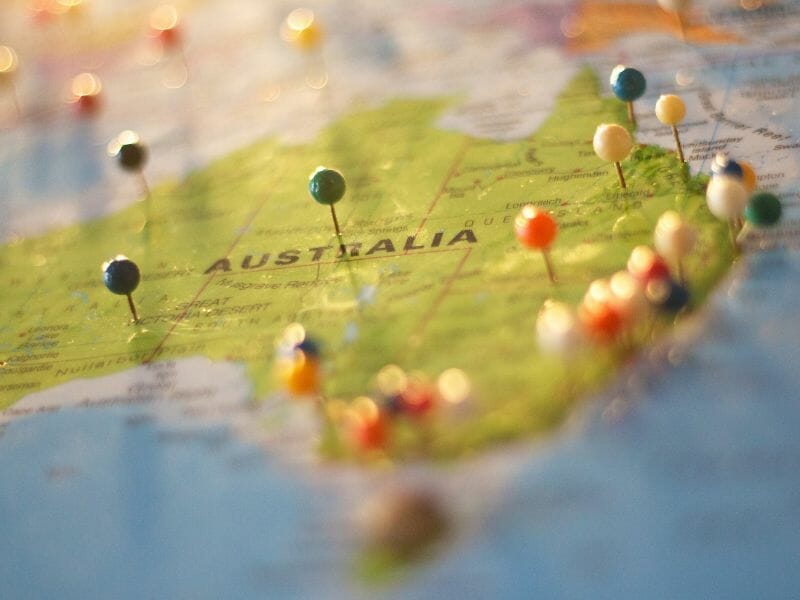
Use a map like this one to plot out a rough idea of where you’d like to go and what attractions you’d like to see along the way. This will help you understand the distance you’ll be travelling and how long it will take you to get from one place to another.
If you’re unsure where to start, a few websites can help you plan your trip, such as our website All Around Oz. Our blog has many helpful tips and advice for planning the perfect trip around Australia. You can also join our Facebook Group, Planning A Lap Of Australia Hints & Tips .
You can also find inspiration in travel books and magazines and talk to friends and family who have been on similar trips. Once you know where you’re going, it’s time to start booking experiences and activities.
Planning Your Experiences And Activities

Once you’ve sorted out your accommodation, it’s time to start planning your activities . You’ll need to do some research to figure out what there is to see and do in each place.
There are a few different ways to find things to do, such as :
- Asking locals for recommendations
- Going to the local information centre
- Searching online
- Reading travel books and blogs
- Checking out tourism websites
If you’re struggling to find activities , we recommend talking to locals or searching our blog or Facebook Group . Locals always have the best recommendations because they know the area well and hopefully share some hidden gems with you. Plus, the All Around Oz Crew is helpful as someone in the Crew has been there previously.
Once you’ve found a few exciting activities, it’s time to start booking. We recommend booking your accommodation and activities to avoid disappointment, especially in peak seasons.
Pack Your Caravan, Motorhome Or 4WD
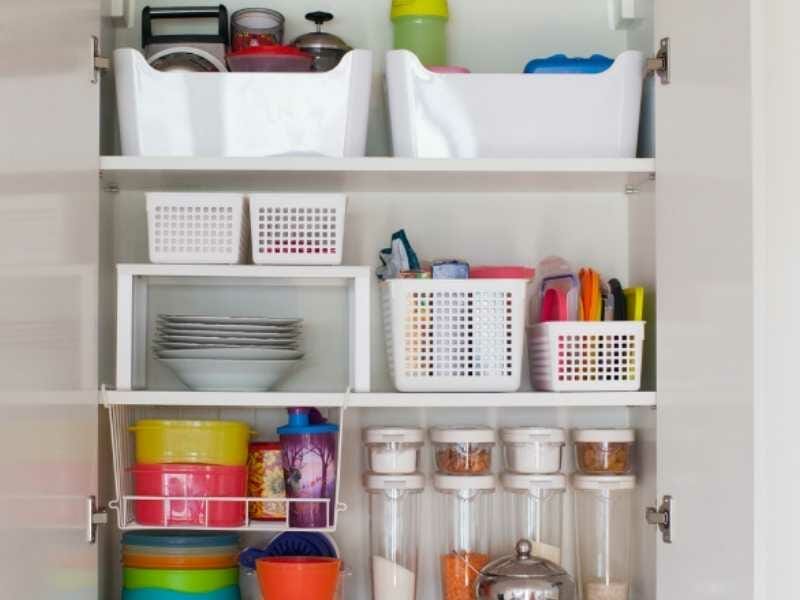
Now that you’ve sorted out your accommodation and activities, it’s time to start packing for your trip!
If you’re travelling in a caravan or motorhome, there are a few things you’ll need to pack, such as:
- Cooking equipment
- Food and drink
- First-aid kit
- Spare parts
If you’re unsure what to pack, we recommend checking out our blog posts on the essential items you’ll need for your caravan, motorhome or camper trailer trip. Caravan storage ideas and things to buy for a new caravan .
Or join our free Facebook group, Planning A Lap of Australia Hints and Tips , for more tips from other experienced Lappers.
Stock Up On Supplies

Before setting off, ensure you have everything you need regarding food, drink, fuel and any other essentials you love. This is especially important if you’re travelling in a remote area with no shops nearby.
We recommend stocking up on food and drink, as well as any other essentials such as toilet paper and insect repellent . You should also ensure enough fuel to last the journey, especially in the outback. If you don’t have a long-range fuel tank, then Jerry Cans are a must.
Check Your Rig
Before starting your journey, it is important to ensure your rig, 4WD gear or vehicle is in good working order. This includes checking the tyre pressure and oil levels and ensuring all the lights work on your rig and caravan or camper trailer.
You should also pack a few essentials in case of emergencies, such as an oil filter, a satellite phone, a first-aid kit, and a map.
We highly recommend buying the top cover for roadside assistance in your state. This will save you thousands of dollars should you break down and need towing. We have RACQ Ultimate Care.
Check Your Insurance Policy
Before your trip, you must ensure you’re adequately insured. This includes things like having the right insurance for your vehicle, and it might be worthwhile looking into general travel insurance, too, depending on your type of travel.
FAQs For Driving Around Australia
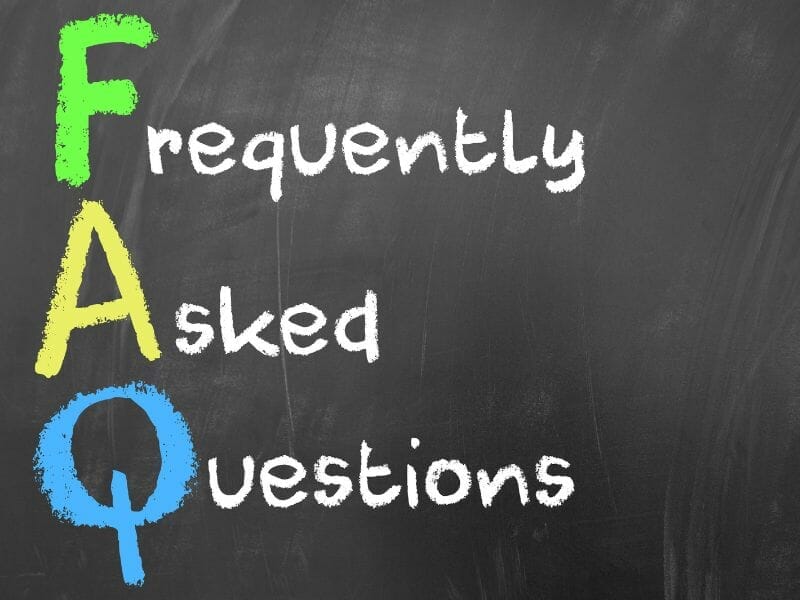
How long does it take to drive around Australia?
This depends on how long you want to spend travelling and exploring. Some people like to take their time and travel slowly, while others prefer a more condensed version. There is no right or wrong answer; it all comes down to personal preference.
What are the must-see places around Australia?
There are so many amazing places to see in Australia; it depends on what you’re interested in. Some popular spots include Uluru, the Kimberleys, Karajini, the Great Barrier Reef, Fraser Island and the 12 Apostles.
What are the best times of the year for driving around Australia?
Again, this depends on personal preference and where you want to go. Generally, the weather is most pleasant in spring and autumn.
The north of Australia is tropical, so most lappers head south during the summer months and head north in the winter months.
How much does it cost to do a lap of Australia?
Again, this depends on your circumstances and how you like to travel. Some contributing factors can be
- The number of experiences you do
- How often you eat out
- How fast or slow you travel
- How large or small your setup is
- How much fuel is at the time
- The weather, i.e. headwinds, etc
- Accommodation costs – caravan parks vs free camping
Should I rent my house or sell it when I travel around Australia?
This is a tough answer as it varies from person to person. Some people feel more comfortable renting out their house, while others prefer to sell up and hit the road full-time. Doing what feels right for you and what will work best in your situation is essential.
There are benefits and drawbacks to renting and selling, so it’s worth researching and speaking to others who have made the same decision to understand better what might work best for you.
Sometimes, your plan doesn’t always work out, either. We planned to sell our apartment on the Gold Coast. However, we couldn’t sell it for the price we wanted. We’ve hung onto it, and now it is in the hands of an Airbnb management company, BNBHub, on the Gold Coast. After the mortgage and expenses are paid, some money might be left over for a tank of petrol!
What do I do with my second car when I travel around Australia?
If you plan on completing a lap of Australia in your caravan or motorhome, you must decide what to do with your second car. You can sell it, store it, or leave it with friends or family.
Selling your car can be a great way to free up extra cash for your trip. However, you’ll need to ensure you have enough money to cover any unexpected repairs or maintenance required while away.
Storing your car is another option, but you must ensure the facility is secure and insured. You will also need to factor in the cost of storage when budgeting for your trip.
Leaving your car with friends or family is a great way to save on storage and maintenance costs. However, you’ll need to ensure they are comfortable taking responsibility for your car while you’re away.
You could also consider hiring it out on Uber Carshare . However, you would have to have someone take care of the car and the bookings for you. We used Uber Carshare for our second car and were surprised by how well it worked. That was before it was written off by a drunk driver when it was parked in a street…but that’s a story for another time.
Ultimately, deciding what to do with your second car depends on personal preference and what will work best for you and your situation.
What is the best caravan insurance?
There is no one-size-fits-all answer to this question, as the best caravan insurance will vary depending on your individual needs and circumstances. However, some things you may want to consider when shopping for caravan insurance include:
- The type of cover you need
- The level of excess you’re comfortable with
- Whether you need to insure your contents
- The geographic areas you’ll be travelling to
- How often you’ll be using your caravan
- The value of your caravan
When finding the best caravan insurance, it’s important to compare various policies from different providers to ensure you’re getting the right coverage at the best price.
Do I Need A Satellite Phone For The Big Lap?
A satellite phone can be a valuable addition to your trip, particularly if you plan on travelling to remote areas without a mobile signal. However, they can be expensive to purchase and maintain, so you’ll need to weigh the costs and benefits to decide if one is right for you.
Some things you may want to consider when deciding whether to take a sat phone include:
- How often you’ll be using it
- The areas you’ll be travelling to
- Whether you have another way to contact emergency services
- The cost of purchasing and maintaining the phone
If you decide not to take a satellite phone, make sure you have a backup plan in case of an emergency. This could include carrying a PLB (personal locator beacon) or subscribing to a satellite tracking service.
We have Starlink, which can be used throughout Australia. Starlink will connect you to the internet and also allows you to use Wi-Fi calling—making a phone call over the internet.
Is It Worth Getting Roadside Assistance?
Yes, don’t leave home without it!
Roadside assistance can be a useful addition to your trip, particularly if you plan to travel to remote areas. However, it’s important to compare the costs of different providers to ensure you’re getting value for your money.
There are some great stories about having roadside assistance and having everything covered, from picking up the car (and caravan) from very remote areas to flying the people home and/or helping with accommodation costs.
Our advice is to take out the highest level of cover. For a few hundred dollars, it will be worth it if you need it. Like any insurance, it’s always good, but let’s hope you never have to use it! It’s good peace of mind.
How Do I Find Work While Doing The Big Lap Of Australia?
One of the great things about doing the Big Lap is that it allows you to work as you travel. This can be a great way to help fund your trip and see more of Australia simultaneously.
There are several ways to find work while travelling, including:
- Asking around at caravan parks, pubs and tourist attractions
- Checking out job boards at local community centres
- Looking online for work-from-home opportunities
- Ask a local
For more information, read our blog post about How to find work when travelling Australia .
What Are The Top Tips For Travelling Australia By Caravan?
Some top tips for travelling around Australia in a caravan, motorhome or camper would include:
- Take your time and enjoy the journey
- Do your research before you go
- Make sure your vehicle is in good condition and properly serviced
- Check your weights when your rig and caravan are fully loaded
- Be prepared for all weather conditions
- Carry plenty of supplies with you but watch your weights!
- Be aware of road conditions and hazards
- Plan your routes and make sure you allow plenty of time
- Make use of free camps and overnight stops
- Enjoy the company of other lappers and travellers
What Should I Do If My Rig Breaks Down?
If you break down while you’re on the road, the best thing to do is to stay with your vehicle. This will make it easier for emergency services or roadside assistance to find you. If you have a satellite phone or two-way radio, you can use these to call for help. In the meantime, stay calm and wait for help to arrive.
What Do I Do With My Mail When I’m Doing The Big Lap?
There are a few options for handling your mail when you’re travelling around Australia. You can redirect it to a friend or family member’s house, use a PO Box service, or put your mail on hold with Australia Post.
Change all bills by post and any other important mail to email. This will make life much easier.
Sign up (if you haven’t already done so) for an AusPost account. You can then use this to pick up mail or parcels while driving around Australia.
What Do I Do With My Pets When Travelling Around Australia?
If you plan to take your pets on your trip, we recommend getting them microchipped and registered with the local council. You should also make sure they’re up to date with their vaccinations. Read our travelling with dogs post here .
If you’re not planning on taking your pets, we recommend finding a reputable pet sitter or family member who can look after your much-loved fur kid.
What Is The Best Travel Entertainment For Kids On A Road Trip?
There are several ways to keep kids entertained while you’re travelling around Australia. Some ideas include:
- Books and magazines
- Puzzles and games
- Colouring in books
- Spotting games
- Making up stories
- Listening to audiobooks
- Singing songs
Click here to explore lots of ideas for your little adventurer.
Final Thoughts
There you have it – our guide to planning the perfect trip around Australia in a caravan, motorhome or camper. We hope you found this helpful and inspired you to start planning your trip.
If you have questions or need more help, we recommend joining our free Facebook group, Planning A Lap of Australia Hints and Tips. This is an excellent resource for getting advice from other experienced Lappers.
And that’s it – you’re ready to hit the road! With some planning and preparation, you’ll have a fantastic time travelling around Australia. So what are you waiting for? Start planning your trip today!
Do you have any other tips or advice for travelling around Australia in a caravan, motorhome or camper trailer? Please share them with us in the comments below!
Happy travels!
Planning A Lap of Australia?

You May Also Like:
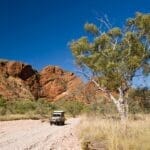
6 thoughts on “Driving Around Australia: Planning The Perfect Big Lap Of Australia”
Wow this is so concise. I was worried about taking my poms but you covered that. I want to freecamp but worried about my safety which I feel more secure with now after reading your your email. Tips and hints and planning never thought of that. 3 kids of solo parenting, running a goat stud i just want to break free for a couple of years. Thankyou for such comprehensive information and sharing
You are very welcome Lenny!
Thanks. I am planning but didn’t know where to find free camping places. This is really helpful. Thankyou I need to know about personal security. Camera security for the car. Anti bug window things Fans both battery and solar. I ll be living in my car A good laptop. Can u help me with any of that please
Hi Kat I’m glad you found the post helpful. Our first port of call for anything to do with camping or caravanning is Outback Equipment you can find them here https://bit.ly/outbackequipment
What a great article, sometimes it states the obvious and other points I didn’t consider so great ref document. Thank you
Thanks for your feedback Jo, glad you found the post useful 🙂
Leave a comment Cancel reply
subscribe to our newsletter
This site uses Akismet to reduce spam. Learn how your comment data is processed .
Facebook Community
Privacy Policy
Disclosure Policy
Work With Us
Awesome, you're subscribed!
Thanks for subscribing! Look out for your first newsletter in your inbox soon!
The best things in life are free.
Sign up for our email to enjoy your city without spending a thing (as well as some options when you’re feeling flush).
Déjà vu! We already have this email. Try another?
By entering your email address you agree to our Terms of Use and Privacy Policy and consent to receive emails from Time Out about news, events, offers and partner promotions.
- Things to Do
- Restaurants
- Arts & Culture
- Coca-Cola Foodmarks
- Los Angeles
Get us in your inbox
🙌 Awesome, you're subscribed!

Australia is officially the world’s fifth best tourism destination in 2024 – here’s what sets it apart
The World Economic Forum ranked Australia as one of the top five countries for tourism and travel in 2024

If Australia’s postcard-worthy beaches or poster-child kangaroos weren’t enough to tempt potential travellers, this news might just do the trick. The World Economic Forum (WEF) has just released its highly-anticipated biennial ranking of the best countries for tourism and travel in 2024 – and Australia has claimed one of the top five spots.
It appears that Australia is on an uphill streak, climbing from the seventh-best tourism destination in 2017 to sixth in 2021, and now claiming fifth place in 2024. The United States took the top spot in the WEF’s Travel and Tourism Development Index 2024 (TTDI) for the third year running, with six European countries and three Asia-Pacific regions rounding out the top ten. That includes Spain in second, Japan in third and France in fourth.
Curious about how WEF’s economists came to these conclusions? They ranked 119 economies around the world based on a set of 17 factors related to the development of tourism and travel in each country. These factors included the availability of tourist services and infrastructure, sustainability, natural resources, labour capacity and price competitiveness. Most of the data was sourced from reputable international organisations, like the World Health Organisation, UNESCO and UN Tourism, with the rest coming from the WEF’s annual Executive Opinion Survey .

Here are five reasons why Australia ranked so high in the latest TTDI:
Natural resources
We’re pretty stoked to see that Australia ranked as the second-best country in the world for its natural resources. From ancient rainforests and majestic deserts to blindingly beautiful coastal areas, our Great Southern Land has it all. A road trip along the East Coast or the West is the best way to experience it, for both locals and tourists alike.
Cultural resources
A culture-packed holiday is also on the cards for anyone looking to visit Australia, with our nation ranking 17th out of 119 countries for its cultural resources. Our country is home to the world’s oldest continuous culture, with the stories of Australia’s First Nation’s people beautifully woven into our vibrant arts and culture landscape. Whether you’re staying in the city or venturing into the outback, you’ll find countless opportunities to walk in their footsteps and learn about the rich history of our land.
Digital savviness
Australia shines in the digital realm, ranking 14th globally for its top-notch digital infrastructure and services. Kudos were given for our seamless adoption of digital payments, widespread 3G mobile network coverage, and easy digital booking systems for hotels , restaurants and leisure activities .
Ease of travelling to and from Australia
We love welcoming travellers from every corner of the globe, earning us a commendable 16th place ranking on the openness to tourism and travel scale. Our relatively relaxed visa requirements make it easy for visitors to come, stay and play, while the strength of the Australian passport, which ranks among the world’s most powerful , lets Aussies travel almost anywhere their heart desires.
Infrastructure for tourists
There are sparkly, new hotels popping up all around Australia , so it makes sense that our nation ranked at number 17 for our availability of tourist services and infrastructure. Our labour productivity in hotels and restaurants was also taken into consideration here, reflecting our 'work hard, play hard' reputation.
You can read more about why Australia is one of the best tourism destinations in the full report here or check out this snapshot of the top ten countries:
- The United States
- The United Kingdom
- Switzerland
Stay in the loop: sign up for our free Time Out Australia newsletter for more news, travel inspo and activity ideas, straight to your inbox.
RECOMMENDED:
Kudos to canberra australia's capital has been named the third smartest city in the world in 2024, just in: here’s how australia ranked on oxford economics’ inaugural global cities index, the gold coast overtakes sydney and melbourne as the top winter holiday spot for families.
- Melissa Woodley Travel & News Editor, Time Out Australia
Share the story
An email you’ll actually love
Discover Time Out original video
- Press office
- Investor relations
- Work for Time Out
- Editorial guidelines
- Privacy notice
- Do not sell my information
- Cookie policy
- Accessibility statement
- Terms of use
- Modern slavery statement
- Manage cookies
- Time Out Market
Time Out products
Bikepacking is booming as adventurers explore Australia using pedal power
Most people might not have given a second thought to the small group of riders with bags strapped to their bicycles who Adam Lee passed while driving to the NSW south coast.
But their gravel bikes loaded with camping equipment were a dead giveaway; they were part of Australia's rapidly growing bikepacking community.
Mr Lee not only knew the route these adventurers were pedalling — he created it.
Bikepacking — a twist on the perennial pastime of backpacking — is an overnight, self-sufficient adventure on a bicycle.
All necessary equipment, such as a tent, sleeping bag and cooking pots, is loaded into bags strapped to the bike.
"You can go a lot of places you can't go with a car," Mr Lee said.
"It's the freedom. It's experiencing the environment. It's getting healthy and spending time with friends.
"You get to push yourself and learn. Sometimes it's a bit crap, but sometimes it's absolutely glorious."
An instant addiction
Mr Lee's first experience, 12 years ago, was a bit of both.
The group he was with in Tallaganda State Forest, east of Canberra, rode through drizzle all day and got multiple punctures.
Yet Mr Lee was instantly hooked.
"It was something we all knew we wanted to do more of," he said.
He has now ridden the length of New Zealand, travelled from Melbourne to Canberra and also created a 323-kilometre route through the NSW Southern Highlands that won an international bikepacking journal competition.
Mr Lee said the route had become increasingly well-worn as Australia became a global bikepacking destination.
Attracting international attention
François Lemancel hails from the town of Orbec in Normandy, where he said bike riding and competitive cycling, inspired by the Tour de France, was part of the culture.
"If you see a cyclist abroad, there is a good chance they are a German or Frenchman," he said, adding that he was surprised by the quality of bikepacking in Australia.
He pedalled from Melbourne to Darwin in 2023, a trip which included paddling the length of the Murray River in a $100 second-hand canoe with his bike stashed on top.
"I loved the wide, open spaces that we don't have in Europe, the ease of camping and the atmosphere of the Australian outback," he said.
Flying under the radar
Australian Geographic Adventure magazine editor Justin Walker has witnessed the explosion in popularity of bikepacking but said finding statistics tracking the trend was difficult because anyone could easily set off to ride.
"It's a quiet achiever. It's hard to find data on bikepacking participation," he said.
"When government authorities or whoever does all the research, they just bundle it all into cycle tourism."
The Cycling and Walking Australia and New Zealand 2023 national survey found 41.6 per cent of respondents favoured off-road cycling, which includes mountain biking, gravel riding and bikepacking.
Mr Walker said the increase in popularity for bikepacking was because of accessibility of information through online blogs and journals as well as new bike developments.
Bikepacking was not a new concept, he said, just a new name for what people had been doing for years.
"It's something new developed from something old, but the information is now there."
The Overlanders were a group of cyclists in the 1890s who traversed Australia before motor vehicles.
They rode steel-framed bikes with more than 10 kilograms of equipment.
Modern bikepackers have aluminium or carbon-frame bikes and gear weighing less than two kilograms.
Mr Walker said the invention of gravel bikes in the 2000s unlocked bikepacking's potential.
Gravel bikes are hybrid models with a road-bike frame but thicker, more durable tyres and a more comfortable riding posture.
"It pushed that exploratory nature of cycling because they are more capable of going off the main sealed roads," Mr Walker said.
"That sort of promoted dirt travel. It opened up national park fire trails."
Now, he said all the largest global cycling companies produced several gravel bike models.
In his time as an editor, Mr Walker said it was not often that a new activity came along and shook up the adventure space.
"It's quite rare, especially these days when everyone's a bit jaded and we've seen it all, or think we have, but it's a bit of a no-brainer — we have such a beautiful country to see."
ABC South East NSW — local news in your inbox
- X (formerly Twitter)
Related Stories
This surf town is swapping boards for mountain bikes and becoming a global tourism destination.
Mountain biking is booming in Australia, and now one of the sport's biggest global events is coming down under
- Cycling (Lifestyle and Leisure)
- Human Interest
- Kosciuszko National Park
- Outdoor Recreational Activities
- Travel and Tourism (Lifestyle and Leisure)

Round The World Airline Tickets
Fly rtw with one world member airlines.
one world's Round The World tickets give you unprecedented access to hundreds of destinations in 170 territories. We offer three types of Round The World trips:
one world Explorer: a continent-based fare,
Global Explorer: a distance-based fare,
Circle Pacific: an inter-continental journey to explore continents that border the Pacific Ocean.
Where to first? The whole wide world is waiting for your Round The World trip.

one world Explorer
Continent-Based Air Travel
No matter where business or pleasure takes you, one world's vast network means your Round The World trip via one world Explorer fare makes it easy to travel from city to city, and continent to continent. And, for every dot you connect, you earn more miles and points to spend across the one world Alliance.

Global Explorer
Distance-Based Air Travel
For an even wider choice of where to travel, book your Round The World trip via Global Explorer, which grants you access to an even more extensive list of airlines, including Aer Lingus, Bangkok Airways, one world connect partner Fiji Airways , Jetstar, Jetstar Asia, Jetstar Japan, Jetstar Pacific, WestJet, and Qantas code-share flights operated by Air Tahiti Nui.
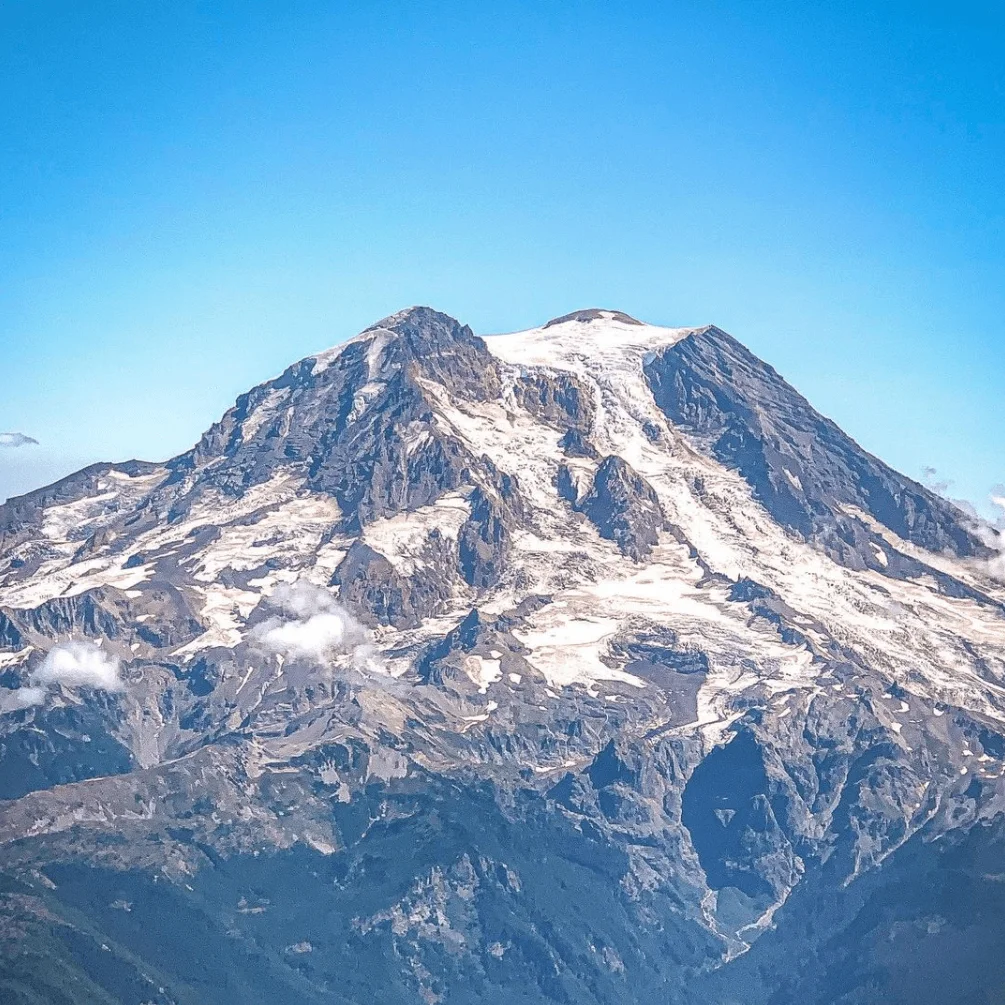
Circle Pacific
Multi-Continent Air Travel
If you prefer to visit multiple continents without actually flying all the way around the world, our Circle Pacific fare lets you explore the continents that border the Pacific Ocean. You can choose to start and finish your journey in one of the following continents:
Asia (Cambodia, China, Hong Kong, Indonesia, Japan, Korea, Malaysia, Philippines, Singapore, Taiwan, Thailand and Vietnam)
Southwest Pacific (Australia and New Zealand)
North America (USA and Canada)
South America
Contact a one world member airline or your travel agent to plan and book your Circle Pacific trip now.
Frequently Asked Questions
What is a round the world ticket.
The one world Alliance offers a way to visit many countries, around the world, all in a single itinerary.
On oneworld.com, you can choose to book either one world Explorer, where the fare depends on the number of continents you visit, or Global Explorer, where the fare depends on the distance you travel.
Circle Pacific, an inter-continental journey to explore continents that border the Pacific Ocean, can be booked by your travel agent and is not currently available for booking on oneworld.com.
Where Can I Fly With Round The World?
For one world Explorer and Global Explorer, one world member airlines and affiliate airlines cover six continental regions: Europe/Middle East (including Algeria, Armenia, Azerbaijan, Egypt, Georgia, Libya, Moldova, Morocco, Sudan, Tunisia, and Yemen); Africa (excluding countries listed above); Asia (including the Indian subcontinent, Kazakhstan, Kyrgyzstan, Tajikistan, Turkmenistan, and Uzbekistan, but excluding countries named above); Australia, New Zealand, and the South West Pacific; North America (including the Caribbean, Central America, and Panama); and South America. Currently, it is not possible to begin your itinerary through Doha Hamad International Airport (DOH) through one world member Qatar Airways. Book both one world Explorer and Global Explorer on oneworld.com.
Through the one world Circle Pacific fare, one world member airlines and affiliate airlines cover four continental regions: Asia (including the Indian subcontinent, Kazakhstan, Kyrgyzstan, Tajikistan, Turkmenistan, and Uzbekistan); Australia, New Zealand, and the South West Pacific; and North America. Ask your travel agent about booking a one world Circle Pacific fare. Routes are subject to change.
Where Can I Travel Now, Given COVID Restrictions?
View entry restrictions and COVID-19 travel requirements for countries around the world on our the one world Travel Requirements Information Portal . Use the map to get information on travel restrictions by country, including entry restrictions, as well as COVID-19 vaccination, testing, and quarantine requirements.
Is Round The World Ticket Business Class An Option?
Yes, Round The World tickets are available in Economy, Business, and First class. On our oneworld.com booking tool, there is a drop-down menu to select your preferred cabin class. Premium economy upgrades will show where available when you select flights.
Is Round The World Ticket First Class An Option?
How much does a round the world ticket cost.
Your Round the World fare is based on a few factors: the number of continents you visit or pass through or the distance travelled, the travel class selected, and the number of travelling passengers. Read on for more information about full fare rules and conditions [Note: Links open PDF in browser]:
What Are The Round The World Rules?
Read on for Round The World rules and conditions [Note: Links open PDF in browser]:
What Should I Know To Help Me Plan My one world Explorer Itinerary?
When planning your one world Explorer itinerary, here are tips to keep in mind:
Destinations are grouped into three zones and six continents:
Zone 1: North & South America
Zone 2: Europe, the Middle East and Africa
Zone 3: Asia and the South West Pacific
Your trip must be in a continuous forward direction, East or West, between Zone 1, Zone 2 and Zone 3. Backtracking within a continent is generally permitted, however some exclusions apply.
Your adventure can last from 10 days up to a year. Travel must be completed within 12 months of your original departure date.
Your trip must start and finish in the same city.
You must cross both the Atlantic Ocean and the Pacific Ocean on your journey.
Your journey can include three to six continents, and anywhere between three and 16 flights.
Review complete one world Explorer fare rules and conditions .
Can I Change Or Update My Round The World Itinerary?
Yes, one world Explorer, Global Explorer and one world Circle Pacific itineraries can be modified to accommodate changes to your Round The World plans.
If you booked your Round The World trip through oneworld.com, contact the ticketing airline (the airline you are flying on the first leg of your journey) to make changes to your itinerary.
If you booked your Round The World tickets through a travel agent, please contact the travel agent to make changes to your itinerary.
Will I Earn Frequent Flyer Points On A Round The World Trip?
Short answer: Yes, you will earn frequent flyer points on your Round the World trip.
Long answer: Yes. one world works in collaboration with all of our partner and member airlines to ensure that you’re rewarded no matter where you travel. On all eligible flights, you will accrue points or miles toward the airline of your choice and toward your one world tier status .
How Can I Pay For A one world Round The World Trip With Frequent Flyer Points?
Currently, it is not possible to use frequent flyer points to pay for a one world Round The World trip.
Does Your one world Explorer ticket include checked-in baggage?
Two free pieces of 23 kilos each shall be permitted. Additional allowances may apply. Refer to individual carrier websites.
- How to Tie a Tie
- Best Coffee Beans
- How to Shape a Beard
- Best Sweaters for Men
- Most Expensive Cognac
- Monos vs Away Luggage
- Best Luxury Hotel Chains
- Fastest Cars in the World
- Ernest Hemingway Books
- What Does CBD Feel Like?
- Canada Goose Alternatives
- Fastest Motorcycles in the World
Don’t commit a faux pas: Your guide to tipping around the world
Should you tip when you travel.
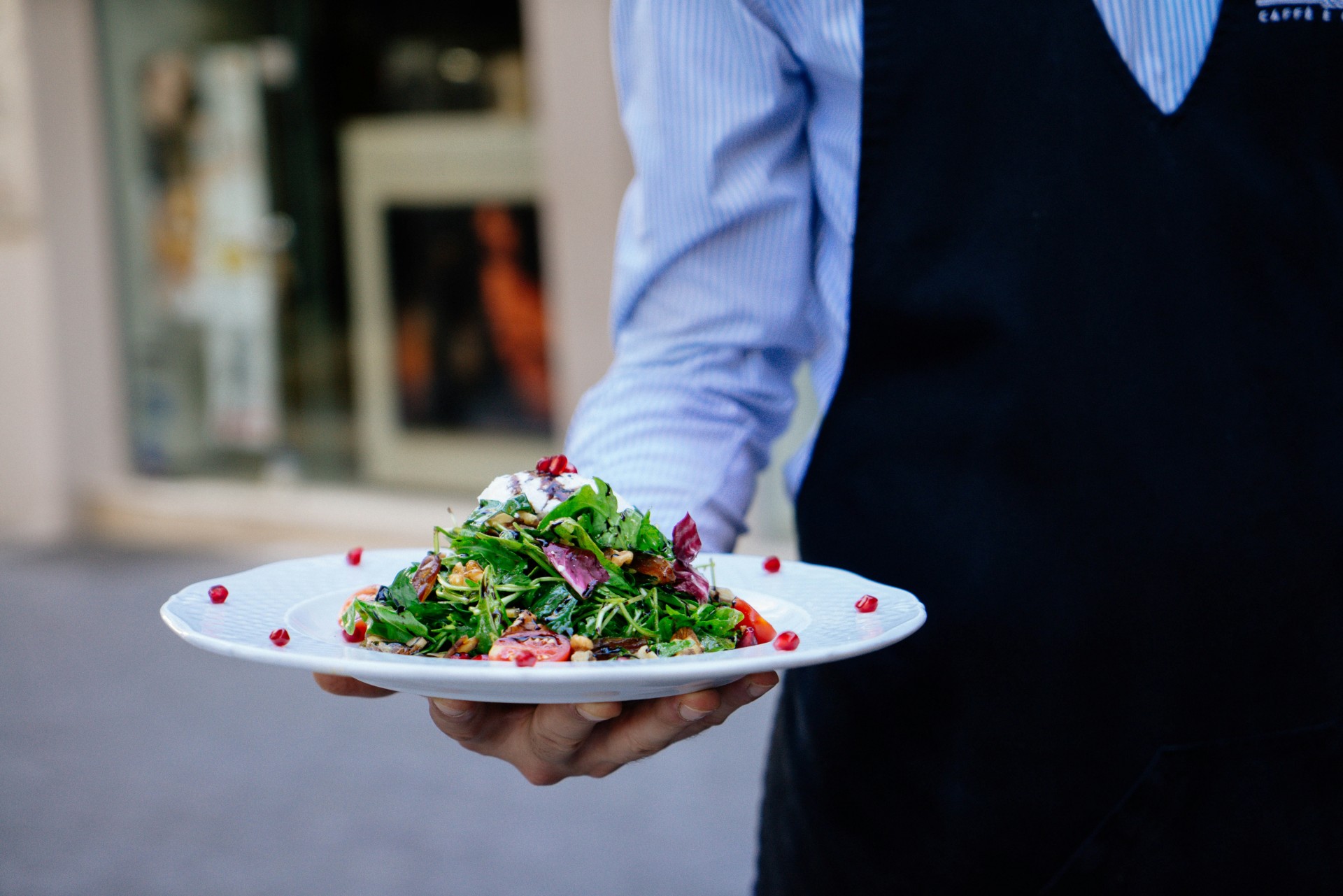
It’s your first time visiting Italy’s Amalfi Coast . After enjoying Pizza Napoletana as the sun sets over the Mediterranean, you go over the check. Fine foods bring a commensurate price, especially in a cultural epicenter like Italy. So the cost isn’t an issue. But how much should you tip?
How to tip no matter where you travel
Additional advice for tipping across the globe.
Tipping culture varies across the globe and for good reason. In some countries, there’s an expectation of 15% or more. But in others, things get a little murky. Not only that, but should tipping exist at all?
On one hand, you want to reward waitstaff for a job well done. On the other hand, shouldn’t business owners be responsible for paying employees? While there are arguments for and against, tipping etiquette is a reality wherever you travel.
- This is the best time to visit Switzerland
- Sleep tourism is really a thing, and these are the best places for it
- iPhone photography tips: How to take better travel photos on your phone
To help you navigate how to tip when abroad, travel expert Justin Chapman from Go2Africa put together a useful guide. Here’s what he has to say.
With summer approaching, Google searches for “tipping abroad” are up by 166%. With all the confusion surrounding the issue, it’s good to know before you go. That way, you can enjoy feijoada stew in Brazil or fish and chips in England and not worry about leaving enough gratuity. Here’s how to tip in each corner of the globe.
North America and Canada
Here, servers and staff rely on tips as a significant part of their wages. When dining, a 15-20% tip is the expectation, and in bars, $1 per drink is the norm. When buying a coffee, leave your change or round up to the nearest dollar.
If you’re taking a taxi, rounding up or leaving 10-15% is customary. When you arrive at your hotel, bellhops get $2-$5 per bag, housekeepers $2-$5 per night, and concierges $5-$20 (depending on the service).
Central and South America
South American servers aren’t as beholden to tips for their wages, but even then, leaving 10-15% is typical. If you’re traveling to Costa Rica, Brazil, or Chile, pay attention to the “cubierto” — or cover charge — on the check. That’s a fee for the table, not gratuity for the waitstaff.
When using a tour guide, it’s common to tip $5-10 each day, but in Columbia, a little higher at $15-20. However, in Brazil, tourism pros depend on large tips, with a range of R$100-200 (about $20-40 USD). But when taking a taxi, drivers don’t expect much, so just round up to the nearest dollar.
Tipping in Europe varies from country to country. Restaurants in Germany, Spain, Italy, and France usually charge a service fee, or “coperto”. But if they don’t, expect to pay a 10-15% tip. However, tipping isn’t the norm in Belgium, the Netherlands, Finland, and Denmark, though you can always round up to the nearest Euro to show gratitude.
When you need a ride, tipping etiquette is the same across Europe, with a small tip of 1 Euro the custom. That’s also true when buying a coffee or a beer.
Like Europe, Asia’s tipping etiquette covers a wide range. When you eat in Japan, tipping is considered part of the service and may be deemed offensive. Similarly, in China, tips aren’t customary and could be seen as rude. South Korea follows suit, with tips not expected.
On the other hand, in Southeast Asia, tipping is increasingly common in tourist destinations. In Thailand and Vietnam, a 10% tip is appreciated but not required. In Indonesia, if there’s no service charge, 5-10% gratuity is a nice gesture.
Across Asia, if you’re taking a taxi, grabbing a coffee, or enjoying a beer, tipping isn’t common. When you’re unsure, it can be better not to tip, lest you offend someone.
Australia and New Zealand
Down under, Australia and New Zealand help save you money on your getaway. With tips not expected, you can focus on your meal and save precious dollars on an expensive trip. However, sometimes fancy restaurants in tourist locations might include a service charge. When you receive exemplary service, leaving 5-10% gratuity to reward waitstaff or at least round up to the nearest AUD is nice. That’s also true for hotels, bars, and taxis.
When it comes to tipping, Africa is middle of the road. In restaurants, 10-15% is common. But things get a little more nuanced when adding safaris to the equation.
After you decide the best time to visit Africa and venture out on safari, you’ll want to know how to compensate your guides. After all, these are incredible experiences, where you see majestic animals in pristine habitats — like zebras along the plains — something few people get to do. You’ll want to tip a number of staff, including guards, cooks, and cleaners, along with guides, spotters or trackers, servers, and transfer drivers. You can do that in several ways. Some lodges have a communal tip box, or you can leave money with the manager, who divides the amount evenly among workers. You can also give cash directly to staff.
Typical amounts per day are $20 for guides, $15 for trackers, $10-20 for general staff at a lodge, and $10-20 for a guided city tour. Also, depending on where you travel, extras can add up, like golf caddies in South Africa or boat skippers in Mozambique.
Now you know tipping customs for wherever you go. But additional considerations can also smooth out a sometimes awkward process. Here are some pointers.
- Cash is the best way to tip, with a straightforward payment direct to the source. To ensure you have plenty on hand, obtain some local currency when you arrive.
- Asking locals for advice can better inform you of what’s expected, so you’re a polite guest in your new surroundings. You can ask hotel staff or locals in a restaurant so you don’t ruffle any feathers when it’s time to pay.
- In locales with a higher cost of living, bigger tips are the expectation. That’s typically the case in tourist areas, where tips help servers get by.
- Lastly, watch people’s body language and try to read the situation. In some places, saying thank you is enough, and a tip might be considered impolite.
Tipping culture is a hotly debated topic, with some for and some against paying gratuity. That’s understandable. Through all of it, servers and staff are caught in the middle. In any case, with the preceding info, you’ll know the customs for tipping no matter where you go and can rest assured you’re doing the right thing. So get out your map, plan that trip, and travel without worry.
Editors' Recommendations
- Get the best deal without the hassle: The best sites to book flights
- 4 reasons why Seattle is Kayak’s No. 1 summer travel destination
- This is the best time to visit Thailand
- These popular Delta Amex credit cards — made from a Boeing 747 — are back
- How to renew Global Entry (and when you should do it)
- Advice and how-tos
- Advice and insights

- Food & Drink
Writers and bars have a special connection. These haunts are where ideas are forged, new characters are developed, and--in some cases--where the next great American novel is created.
Within these hallowed walls, you can feel the buzz of creative energy. Sure, Hemingway and Hunter S. Thompson may be gone, but their spirit remains, permeating these watering holes with an atmosphere you just don't get anywhere else.
When the day of a trip arrives, there’s a feeling of freedom and excitement. Whether you’re going for some spring skiing in Lake Tahoe, or visiting Italy’s Amalfi Coast, it’s a time to relax and unwind and experience new things. But airport hangups can throw a wrench in your plans.
Flight delays and cancellations, lost baggage, and hidden fees make your getaway a hassle, producing long waits and questionable charges. But all that’s set to change with the Department of Transportation’s (DOT) new rules for airlines. For travelers, they’re a game changer. Here are the details. New DOT regulations save travelers money
Nantucket, Massachusetts ruthiejmiller via Unsplash
In May, the weather’s sweet, and the prices are reasonable, giving you abundant travel options. In the Northern Hemisphere, the world awakens from its winter slumber, birds sing, and nature blooms, creating a rejuvenating mood.
Man arrested for running naked through aircraft, knocking over flight attendant

A Virgin Australia flight on Monday night was forced to turn around after a passenger ran naked through the cabin and pushed over a flight attendant, according to the Australian Federal Police (AFP).
VA696 departed Perth as scheduled and was about an hour en route to Melbourne when the incident occurred, causing the pilots to make a U-turn and return to Perth, according to FlightAware .
“Appropriate steps were taken by the crew, in line with protocol” to deal with the “disruptive passenger,” a Virgin Australia spokesperson told USA TODAY in an email statement.
AFP officers were called to meet the passenger when the plane landed safely back at Perth.
“AFP officers arrested a man after he allegedly ran naked through the aircraft mid-flight and knocked a crew member to the floor,” an AFP spokesperson told USA TODAY in an email.
Learn more: Best travel insurance
The passenger is currently being held at a local hospital for assessment. He is expected to appear before Perth Magistrates Court on June 14, although the charges he will face have yet to be finalized, AFP said.
Next to an unruly airline passenger? Here's what to do
One of the passengers onboard the flight told the Guardian Australia , "All of a sudden I hear this running up the aisle and the guy's got no clothes on and he's just charging towards the front of the plane." The passenger also said there was "a lot of yelling and screaming."
“The safety of our guests and crew is our top priority and we sincerely apologize to guests impacted,” the airline said.
The aircraft continued to Melbourne and landed 28 minutes late.
Last month, an unruly passenger who caused a United Airlines flight to be diverted after threatening to "mess up the plane" during a loud argument with his girlfriend was charged $20,638 in restitution fees.
Kathleen Wong is a travel reporter for USA TODAY based in Hawaii. You can reach her at [email protected] .

Australia Recommends 2024

Come and Say G'day

G'day, the short film

Discover your Australia

Travel videos

Deals and offers

Australian Capital Territory

New South Wales

Northern Territory

South Australia

Western Australia

External Territories

The Whitsundays

Mornington Peninsula

Port Douglas

Ningaloo Reef

Airlie Beach

Kangaroo Island

Rottnest Island

Hamilton Island

Lord Howe Island

Tiwi Islands

Phillip Island

Bruny Island

Margaret River

Barossa Valley

The Grampians

Hunter Valley

McLaren Vale

Glass House Mountains

Alice Springs

Uluru and Kata Tjuta

The Kimberley

Flinders Ranges

Kakadu National Park

Eyre Peninsula

Karijini National Park

Great Barrier Reef

Blue Mountains

Daintree Rainforest

Great Ocean Road

Purnululu National Park

Cradle Mountain-Lake St Clair National Park

Litchfield National Park

Aboriginal experiences

Arts and culture

Festivals and events

Food and drink

Adventure and sports

Walks and hikes

Road trips and drives

Beaches and islands

Nature and national parks

Eco-friendly travel

Health and wellness

Family travel

Family destinations

Family road trips

Backpacking

Work and holiday

Beginner's guide

Accessible travel

Planning tips

Trip planner

Australian budget guide

Itinerary planner

Find a travel agent

Find accommodation

Find transport

Visitor information centres
Deals and travel packages

Visa and entry requirements FAQ

Customs and biosecurity

Working Holiday Maker visas

Facts about Australia

Experiences that will make you feel like an Aussie

People and culture

Health and safety FAQ

Cities, states & territories

Iconic places and attractions

When is the best time to visit Australia?

Seasonal travel

Events and festivals

School holidays

Public holidays
How to get to Australia's most iconic cities

How long do I need for my trip to Australia?

How to travel around Australia

Guide to driving in Australia

How to hire a car or campervan

How to plan a family road trip

How to plan an outback road trip

Mrs Macquarie's Chair, Sydney, New South Wales © Destination NSW
Tips to start planning your trip to Australia
Follow these 10 steps to make your dream trip a reality.
Planning your first trip to Australia? Kickstart your bucket list and dream up an unforgettable holiday with this step-by-step guide.
1. Choose your perfect destinations

Where should you holiday?
Take our quiz to find your dream destination!
Australia is bursting with incredible destinations – the only question is, which ones to pick? Each Aussie spot offers a unique holiday, so whether you’re a foodie, beach lover or adventurer, there’s a place perfectly suited to you . It's also worth considering the time of year you're planning to visit – think school holidays and the weather – and how long you've got to explore . Get inspired with these must-see destinations .
2. Find things to do on @australia
Australia boasts a never ending, epic list of things to do . Think immersing yourself in the world's oldest living culture, snorkelling with magnificent marine life and relaxing on a paper-white sand beach. If you're all about Instagrammable destinations and hidden gems, soak up the beautiful experiences captured on @australia Instagram and save your favourites to a curated folder. Once your dreamy, picture-perfect list is complete, let the planning begin.
3. Pick a time of year
The next key piece of the planning puzzle is to figure out the best time of year to take your trip. You'll need to take seasons, school holidays and events into consideration, all of which can impact the cost, availability and types of experiences on offer. Discover the best time of year to take your trip .
4. Discover itineraries, big and small
Australia might be big, but there are plenty of itineraries to choose from, no matter how long you've got to explore. You'd be surprised at how much you can see in as little as three to six days , but if you've got more time on your hands, our seven to 10-day itineraries will give you a flavour of multiple Australian states and cultures. One of our favourite ways to explore is on the open road – a no-brainer if you've got two weeks or more to spare. Use our road trip planner to find your perfect road trip itinerary; whether you're seeking culture, countryside or calming luxury, our backyard has a road trip suited to you.
5. Get the local know-how
One of the most fail-proof ways to travel is by recommendation – think the best coffee your friend had in Melbourne, or the amazing hike your cousin went on in Tasmania. Travel like an Aussie with these experiences that make you feel like a local . What better introduction to Australia?
6. Find your perfect accommodation
Finding the perfect accommodation for your holiday can make all the difference to your trip. Australia has a plethora of accommodation options, ranging from boutique hotels to charming glamping sites and family-friendly resorts . Read up on our diverse accommodation options to find your ultimate stay in Australia.
7. Start budgeting
Budgeting ahead of time is a sure way to guarantee a low-stress, relaxing holiday, which leads to the ultimate question: how much do I need to budget for my trip? Australian experiences range from free walking tours to lavish experiences. The amount you’ll need to budget really depends on what your dream itinerary looks like, but don’t worry, there are plenty of ways to save money too – you can find it all in our budget guide .
8. Use a planning app
If you're tired of carrying around a wallet full of travel documents, why not help yourself and the planet at the same time? Go digital by using online apps such as Trello , Tripcase or Tripit where you can store all of your travel information, including itineraries, flight details, car rentals and even your packing lists, all in one place.
9. Leave enough time to apply for your visa
If you're visiting Australia as an overseas passport holder, you'll need to apply for a visa and make sure it's approved before you hop on your flight to join us Down Under. There are plenty of visa types to choose from including tourist, student and working holiday visas – all of which lead to an epic time in Australia. When it comes to choosing your visa, you'll need to take into account your passport, as well as the length and purpose of your visit. Find out everything you need to know on our guide to visas and entry to Australia.
10. Get expert advice from an Aussie Specialist
Once you're ready to book your holiday, the next step is speaking to an Aussie Specialist . Experts on all things Australia, these friendly travel agents can help you with everything from adding to your bucket list and recommending the best experiences to providing tips on what to pack and how to experience Australia like a local. They can book everything for you, making for a relaxed, easy-going experience.
More articles like this

We use cookies on this site to enhance your user experience. Find out more . By clicking any link on this page you are giving your consent for us to set cookies.
Acknowledgement of Country

We acknowledge the Traditional Aboriginal and Torres Strait Islander Owners of the land, sea and waters of the Australian continent, and recognise their custodianship of culture and Country for over 60,000 years.
- New Zealand (English)
- United States (English)
- Canada (English)
- United Kingdom (English)
- India (English)
- Malaysia (English)
- Singapore (English)
- Indonesia (Bahasa Indonesia)
- Deutschland (Deutsch)
- France (Français)
- Italia (Italiano)
- 中国大陆 (简体中文)
*Product Disclaimer: Tourism Australia is not the owner, operator, advertiser or promoter of the listed products and services. Information on listed products and services, including Covid-safe accreditations, are provided by the third-party operator on their website or as published on Australian Tourism Data Warehouse where applicable. Rates are indicative based on the minimum and maximum available prices of products and services. Please visit the operator’s website for further information. All prices quoted are in Australian dollars (AUD). Tourism Australia makes no representations whatsoever about any other websites which you may access through its websites such as australia.com. Some websites which are linked to the Tourism Australia website are independent from Tourism Australia and are not under the control of Tourism Australia. Tourism Australia does not endorse or accept any responsibility for the use of websites which are owned or operated by third parties and makes no representation or warranty in relation to the standard, class or fitness for purpose of any services, nor does it endorse or in any respect warrant any products or services by virtue of any information, material or content linked from or to this site.

IMAGES
VIDEO
COMMENTS
Australia has a vast network of well-maintained roads and some of the most beautiful road trips in the world. When travelling long distances, you'll find rest stops and service stations at regular intervals. You'll find car rental companies at major airports and central city locations; so hire a car, 4WD or caravan and hit the highway.
The Ultimate Australia Itinerary Travel Guide. Having travelled all around the country, we're excited to share these epic 1, 2 and 3 week Australian itineraries that'll cover the best places around. But first, a tip… How to Get Around Australia. It's also important to consider how you'll get around Australia during your visit.
Make a booking. Deals and travel packages. Find a travel agent. Find accommodation. From the outback to the coast, there's nowhere quite like Australia. Start planning your trip Down Under with our first-timer's guide to travelling Australia.
Accessible travel around Australia Travellers of all abilities can enjoy Australia's incredible adventures. Find resources and tips for your trip Down Under. Learn more @Australia Load more. Acknowledgement of Country. We acknowledge the Traditional Aboriginal and Torres Strait Islander Owners of the land, sea and waters of the Australian ...
There are a lot of things to think about when hitting the road in Australia. Here are five risks you need to keep in mind. 1. There may be animals on the road, particularly at night. Many Australians avoid traveling once the sun goes down because of the risks posed by nocturnal animals on the roads.
Australia's Pink Lakes - Lake Hillier. Australia is a wonderland of natural features, but its pink lakes are beyond extraordinary. These mesmerizing wonders can be found all around the southern end of Australia, but where better to view one than at Lake Hillier, the country's most famous and vibrant pink lake.
Travelling by plane. Flying is the best way to cover Australia's large distances in a short time. Australia has domestic airlines that travel to major and regional cities. Find out what you can't take on a plane and how you and your baggage will be screened. These links will take you to the Department of Home Affairs website.
Cost of Travel in Australia. The Ultimate Two-Week Itinerary in Australia. Days 1-2: Explore the Vibrant City of Sydney. Where to Stay in Sydney. Day 3: Day Trip to the Blue Mountains. Day 4: Wander Around the Colonial City of Melbourne. Where to Stay in Melbourne: Day 5: Day Trip to Phillip Island.
The best way to not get bogged in the first place is to drop tyre pressures to 20psi or less, so we also carried a quality air compressor and an accurate pressure gauge. 6. Essential kit. Never travel without a first aid kit and always carry extra drinking water.
Recently, I rented a Blue SG car with my best friend and had a wild time driving 17km from Yishun to Hougang. It barely qualifies as a road trip, but it reminded me of my last trip to Australia.If you didn't know already, it's one of the sweetest places for a truly epic road trip!. Across the country, there are tons of routes packed with scenery, action and adventure.
Getting Around Cheap By Public Transportation. All of Australia's cities have reliable, affordable public bus systems. In the bigger cities, such as Sydney, Melbourne, Brisbane, Adelaide, and Perth, you'll even find subways and tram systems. This is the cheapest way to travel the cities. Fares cost between 3-4 AUD.
1. The benefits of a road trip around Australia. The very fact that you're reading this post tells me that you don't need to be convinced that taking an extended road trip around Australia is a great idea. You already know why you want to do this.
Three Routes Around Australia. 1. The Circumnavigation Around Australia. 17,100 km | 244 hr drive time | 3 months or more. This road trip can be started and finished from any point you choose, but it misses the central desert region of Australia with Uluru, the Olgas, and Coober Pedy. The circumnavigation around Australia.
2. Getting Around Australia by Rideshare. Rideshares or carpooling is a very economical way to travel and a great way to meet new people and share your experiences with other travelers. Many travelers who opt to drive a vehicle around Australia look for people to help share the cost, which makes rideshares in Australia very easy.
Australia is actually the world's sixth largest country by area. Wowee! So as you can imagine, a trip around Australia can not be completed quickly. The distances are great, so you'll have a lot of travel time. To do this ultimate itinerary quickly, you could probably squeeze it into 6 weeks at an absolute minimum.
Flying is the most common means of interstate travel in Australia. As a rough idea of prices, a typical one-way flight from Sydney to Melbourne costs from around $90 and from Perth to Darwin $275. These three airlines cover the majority of interstate flights.
Expect basic amenities like free Wi-Fi and self-catering facilities. Only some hostels include breakfast. For those traveling with a tent, a basic tent plot without electricity starts around 7 AUD, though most are 10-25 AUD per night. For budget hotels, expect to spend 100-120 AUD per night for a two-star hotel.
5. Have your vehicle serviced. As annoying as this might seem, having your vehicle serviced is a way to identify problems before you set off. You can cover huge numbers of miles each day when driving around Australia so ironing out some small issues can prevent a breakdown when on the road. 6.
It's important to ensure your 4WD is fitted with the appropriate tyres. All-terrain tyres are a good option for most off-roading, but if you plan on doing serious mud driving, you'll need mud tyres. Weight is one of the most important things to remember when choosing your vehicle.
Public bus is the cheapest way to travel the east coast, and there are many good connections between towns. You can DIY a hop-on, hop-off tour by taking Greyhound buses. Premier is another bus company that covers Australia's east coast. Premier offers bus passes that can work out to be a good deal, for example, Sydney to Cairns for $230 for one ...
Food & Drink. WhiskeyBeerRecipesCocktails & SpiritsHealthy FoodWine. An Australia vacation is the trip of a lifetime. From city to reef, and wine country to wild outback, these are the best places ...
The World Economic Forum (WEF) has just released its highly-anticipated biennial ranking of the best countries for tourism and travel in 2024 - and Australia has claimed one of the top five ...
"You can go a lot of places you can't go with a car," Mr Lee said. "It's the freedom. It's experiencing the environment. It's getting healthy and spending time with friends.
The oneworld Alliance offers a way to visit many countries, around the world, all in a single itinerary.. On oneworld.com, you can choose to book either oneworld Explorer, where the fare depends on the number of continents you visit, or Global Explorer, where the fare depends on the distance you travel.. Circle Pacific, an inter-continental journey to explore continents that border the Pacific ...
Explore the best of Australia and find your perfect getaway. Find local inspiration and start planning your next road trip with our simple interactive journey planner. ... How to travel around Australia. Guide to driving in Australia. How to hire a car or campervan. How to plan a family road trip. How to plan an outback road trip. View more .
A new travel term is taking over the internet (and reaching airlines and hotels) The 10 best airline stocks to buy now Airlines see a new kind of traveler at the front of the plane
When using a tour guide, it's common to tip $5-10 each day, but in Columbia, a little higher at $15-20. However, in Brazil, tourism pros depend on large tips, with a range of R$100-200 (about ...
A Virgin Australia flight on Monday night was forced to turn around after a passenger ran naked through the cabin and pushed over a flight attendant, according to the Australian Federal Police ...
Once your dreamy, picture-perfect list is complete, let the planning begin. 3. Pick a time of year. @Australia. 28 Jun. The next key piece of the planning puzzle is to figure out the best time of year to take your trip. You'll need to take seasons, school holidays and events into consideration, all of which can impact the cost, availability and ...
Elvis bought the property that would become Graceland in 1957 for roughly $100,000 (£78,518), according to the museum's website, and lived there with his family until his death in 1977.